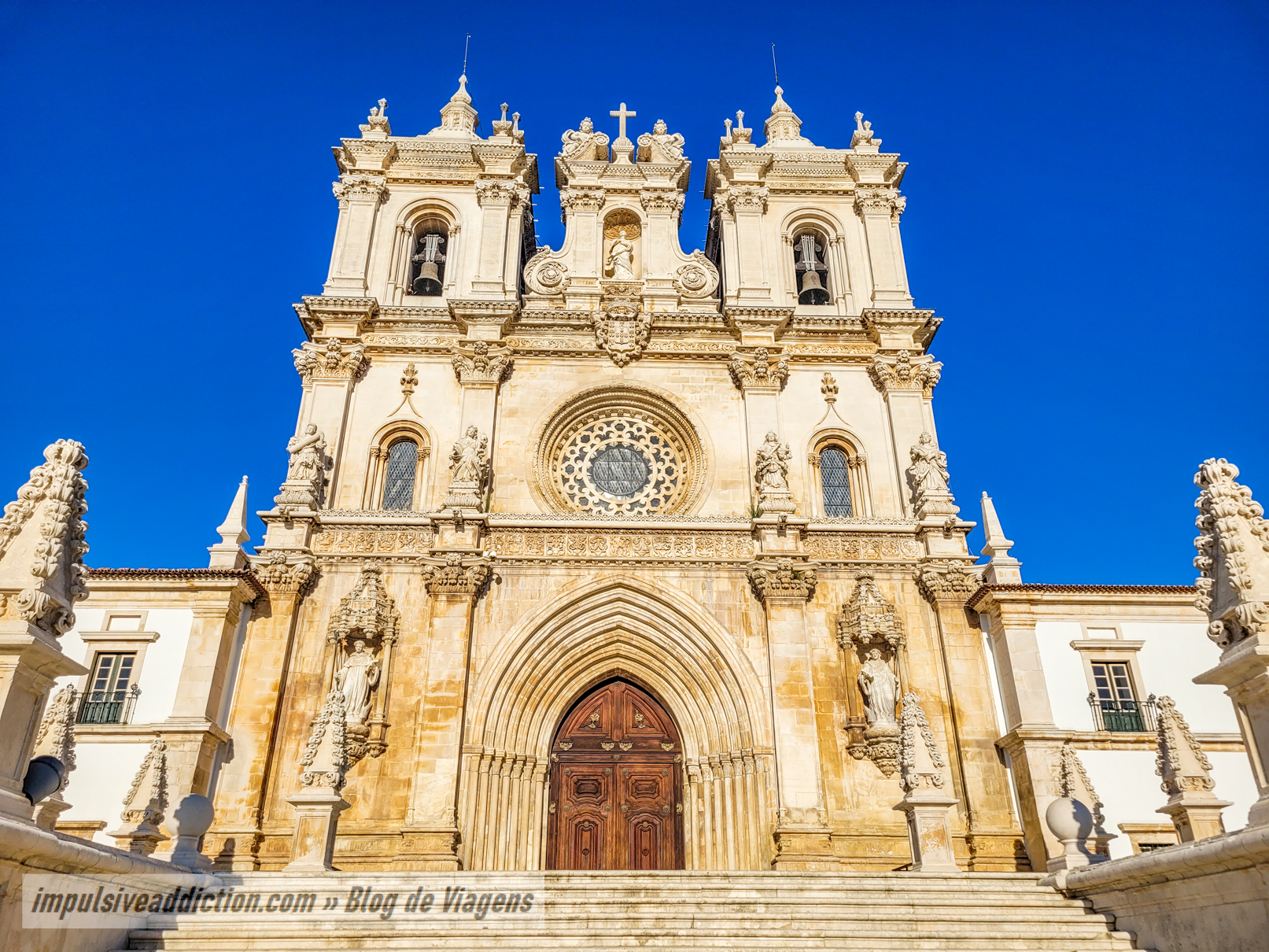To visit Alcobaça is to discover a municipality that combines history, beaches, nature and top gastronomy.
- It has one of the 7 wonders of Portugal, which is also a UNESCO World Heritage Site: the Monastery of Alcobaça.
- It has São Martinho do Porto and its incredible bay protected from the waves, not far from Nazaré.
- Did you know that Alcobaça has a castle? Did you know, for example, about the historic town of Aljubarrota and the Coz Monastery?
- When it comes to gastronomy, have you tried the famous Cornucópias, Pão de Ló from Alfeizerão, or even the many award-winning sweets from Pastelaria Alcôa?
- If you’re looking for nature, don’t forget Alcobaça’s proximity to the Serras de Aire e Candeeiros Natural Park, full of unique landscapes. 😉
In this article I’ll give you some useful tips for preparing an itinerary around the region, visiting Alcobaça Monastery and also its excellent surroundings.
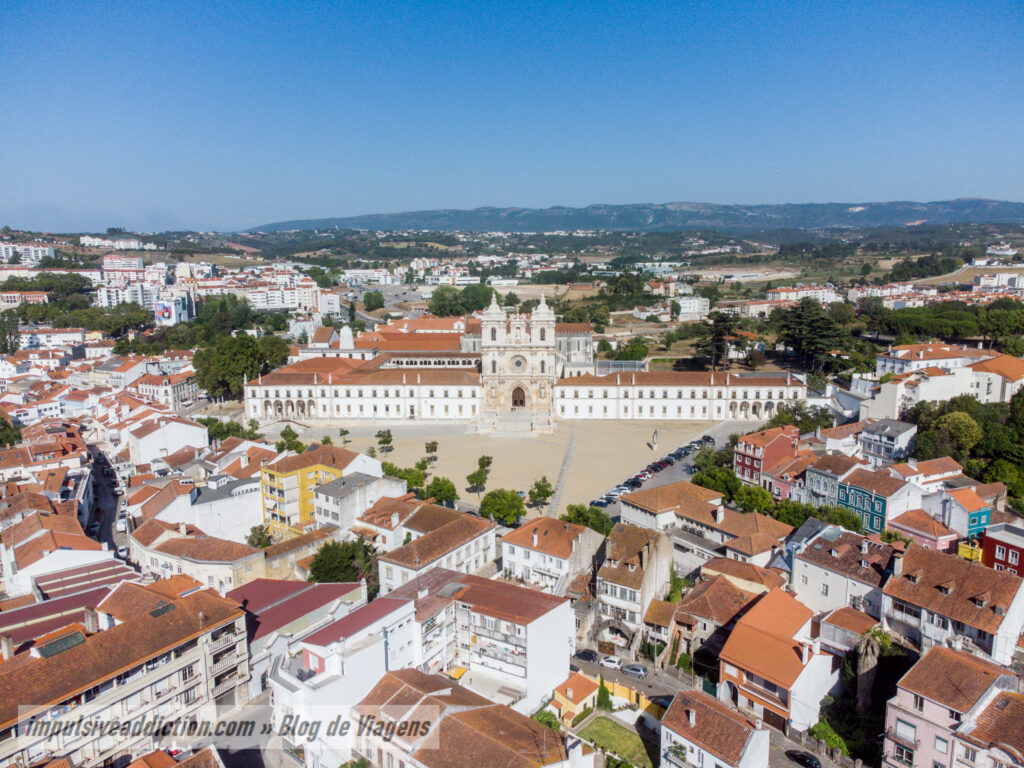
Where is Alcobaça located, in Portugal?
Alcobaça is located in the center of Portugal, more precisely in the Oeste region. It is part of Leiria district and is a municipality bordered by Marinha Grande, Leiria, Porto de Mós, Rio Maior, Caldas da Rainha and Nazaré. It has two stretches of coastline, to the north and south of Nazaré, and is made up of 5 Portuguese villages, namely Benedita, São Martinho do Porto, Alfeizerão, Cela and Pataias.
MORE ARTICLES FROM CENTRAL PORTUGAL: - Things to do in Espinho - Things to do in Ovar - Things to do in Aveiro - Aveiro to Costa Nova - Best beaches in Aveiro - Things to do in Mira beach - Things to do in Coimbra - Schist Villages in Portugal - Things to do in Figueira da Foz - Visit Monsanto in Portugal - Historical Village of Piódão - Historical Villages of Portugal - Things to do in Leiria - Visit Batalha Monastery and surroundings - Things to do in Fátima - Visit Mira de Aire Caves - Things to do in Nazaré - Things to do in Peniche - Best beaches in Peniche - Visit Berlenga Island - Best beaches in Ericeira - Visit Ursa Beach - Best Beaches in Sintra - Best Beaches in Cascais - Best Costa da Caparica beaches - Best beaches in Setúbal - Best Beaches in Sesimbra - Visit Ribeiro do Cavalo Beach - Best beaches in Tróia, Comporta and Melides
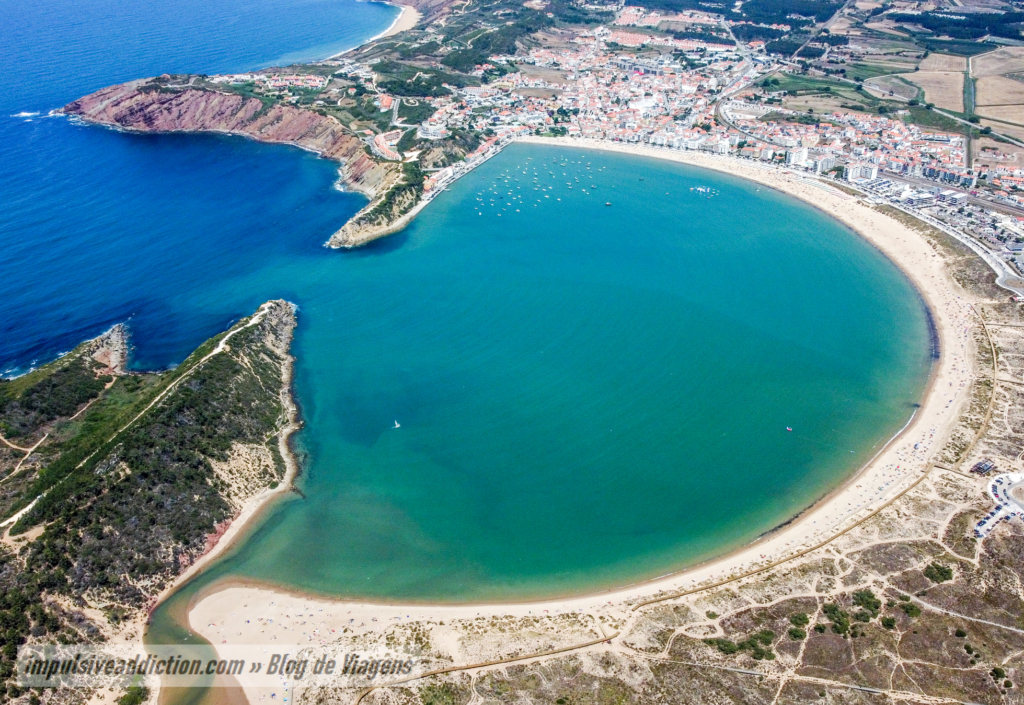
How to get to Alcobaça?
It’s very easy to get to the center of Alcobaça by public transport, whether from Lisbon, Porto or other major cities in the country. The same goes for other locations in the municipality, such as Aljubarrota and São Martinho do Porto. If you just want to get to know the essentials, a car isn’t a must when visiting Alcobaça, but I’ll leave you with the option of renting a car from Discover Cars if you don’t have your own. A car is useful for more flexibility in exploring the surroundings of Alcobaça Monastery. Rent one to optimize time exploring central Portugal.
Note: You can also get to Alcobaça on a guided tour from Lisbon or even Coimbra. - From Lisbon - Fátima, Alcobaça, Batalha and Óbidos Tour - From Coimbra - Tomar, Batalha, Alcobaça Tour
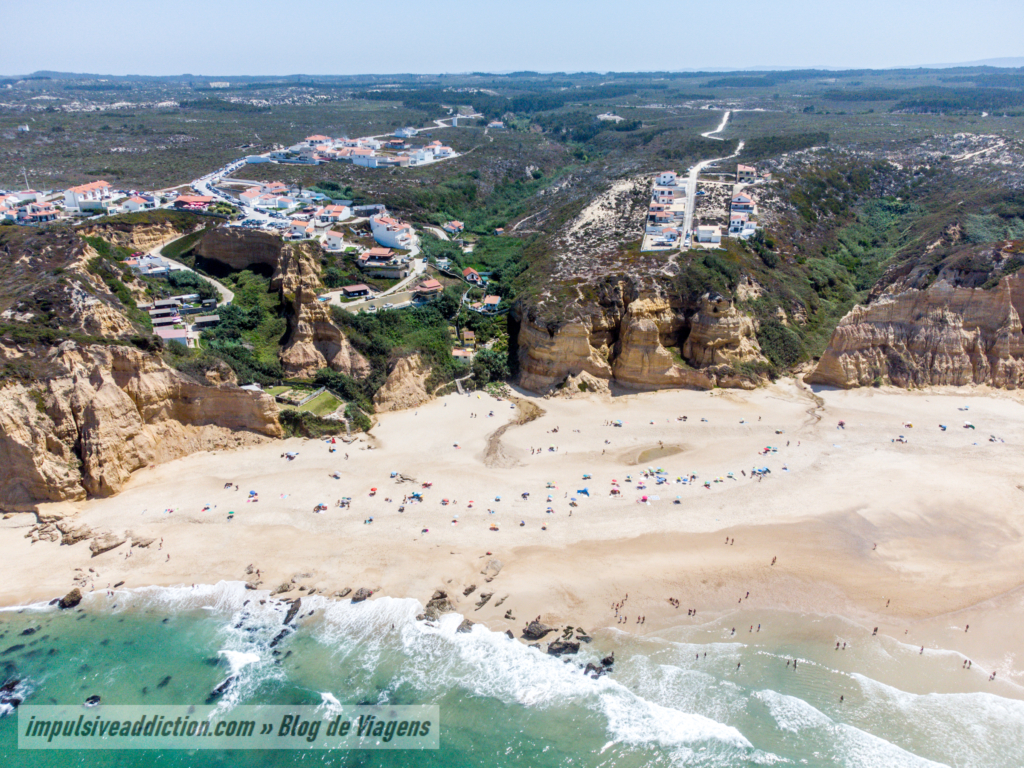
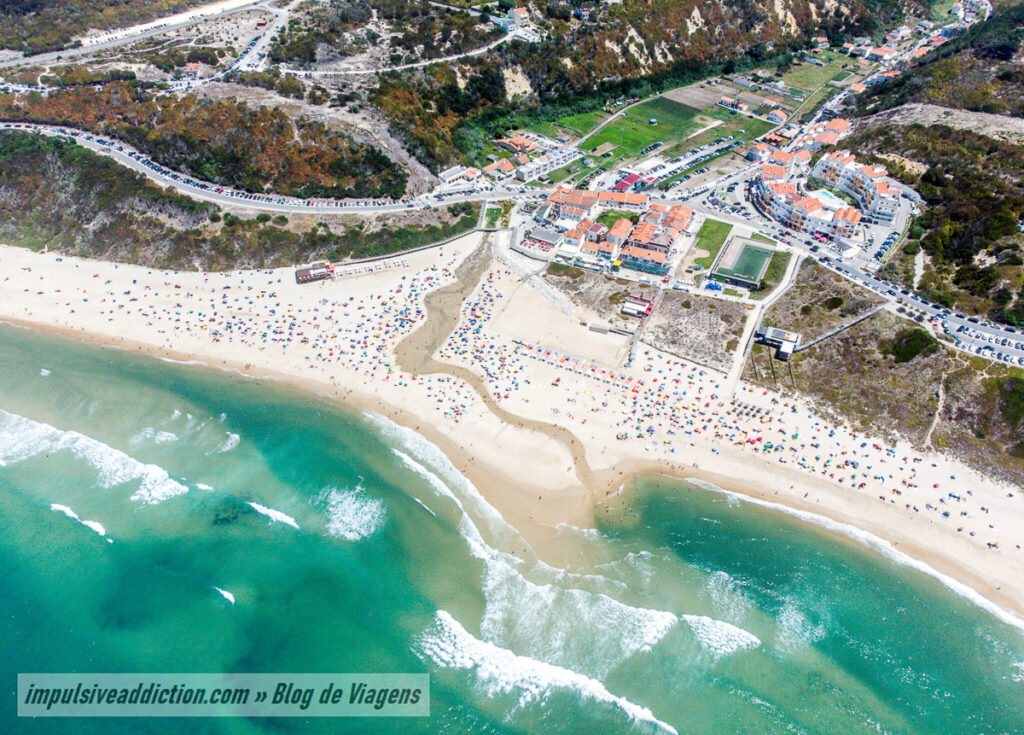
When to visit Alcobaça?
Alcobaça can be visited at any time of the year, without exception, considering only that its beaches are better in summer and that trails in Serras de Aire e Candeeiros Natural Park are more pleasant in spring.
Don’t forget to consider the main annual festivities when planning your itinerary:
- Alcobaça Carnival.
- Holy Week in São Martinho do Porto, with highlights including the Procession of the Steps of the Lord, the Representation of the Descent from the Cross and the Burial Procession.
- The recreation of the 19th century market, which in the past took place in front of the Monastery of Alcobaça, where the region’s farmers and artisans sold their products. There will be no shortage of typical period costumes and traditions.
- The Alcobaça Music Festival, known as Cistermúsica. It usually takes place in July, with various concerts of different styles.
- Medieval Aljubarrota, in August, to remember the victory of the Portuguese troops. Episodes and spaces associated with the important Battle of Aljubarrota are recreated.
- São Bernardo Fair, which also takes place in August. It’s Alcobaça’s big festival, with highlights including equestrian activities, as well as music concerts, craft shows and food stalls.
- São Martinho do Porto’s summer festivities, livening up the beach.
- The Fair of São Simão, taking place at the time of the All Saints’ Day at the beginning of November. It’s mainly gastronomic.
- The International Exhibition of Liqueurs and Conventual Sweets, in November. It welcomes entries not only from the region’s convents, but also from other parts of the country and even the world.
- And New Year’s Eve in São Martinho do Porto.
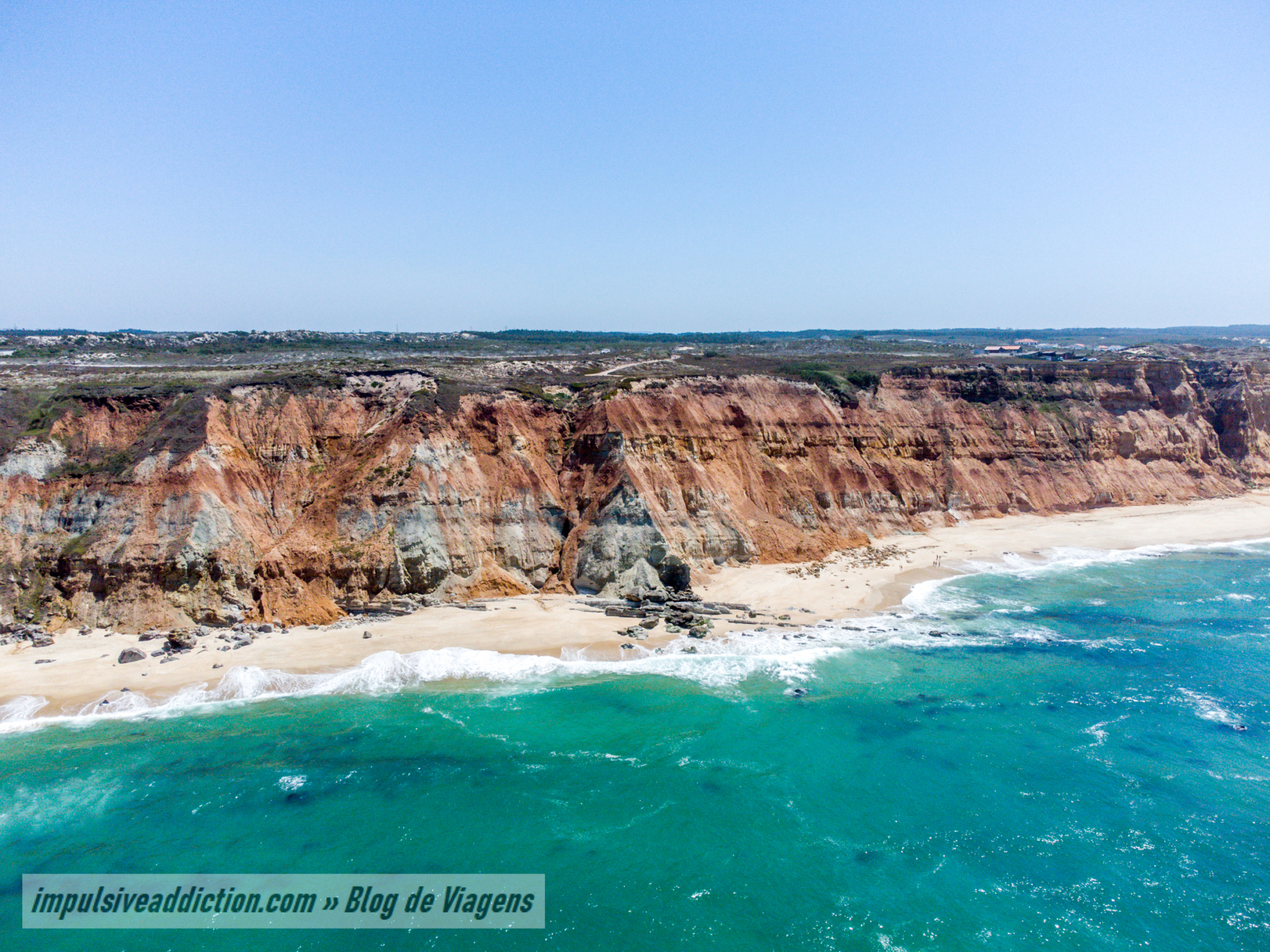
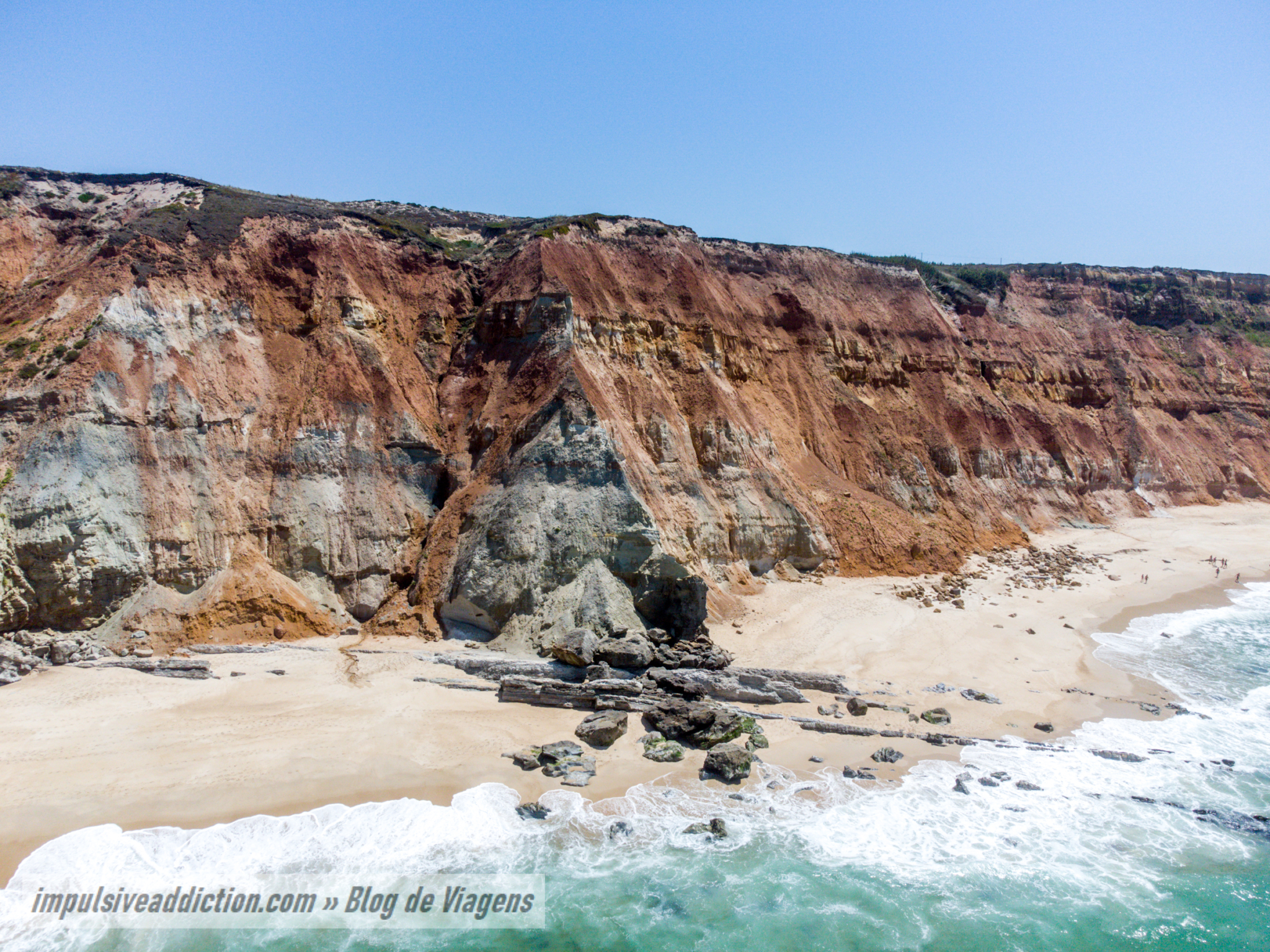
Gastronomy and Restaurants in Alcobaça
When you visit Alcobaça, it’s clear that you should focus first and foremost on the convent sweets. 😉 I recommend stopping off at the Alcôa pastry shop, located right in the heart of the city, in the Rossio square of the Monastery of Alcobaça. Inside you’ll find a window display filled with various types of sweets, including Cornucopias and Coroas da Abadessa. Try some and enjoy, but be aware that the prices are not very friendly, but they are justified by the high quality of the products. 😉
Still on the sweets side, you can’t forget Alfeizerão’s moist sponge cake, which is one of the best in Portugal. Alfeizerão is just a short drive from São Martinho do Porto, so you really should make the detour to try it out, just as I did! How about accompanying all these sweets with a good sour cherry liqueur (licor de ginja)?
When it comes to the region’s typical dishes, the focus is on Frango na Púcara and Porco Malhado de Alcobaça, but there is also plenty of good fish and seafood along the coast, for example in São Martinho do Porto. Don’t forget to stop by the Alcobaça Wine Museum, where you can discover the best wines to accompany the dishes mentioned.
- Restaurants in Alcobaça: Origens, António Padeiro, O Castigo.
- Restaurants in São Martinho do Porto: Nova Caravela and Boca no Mar.
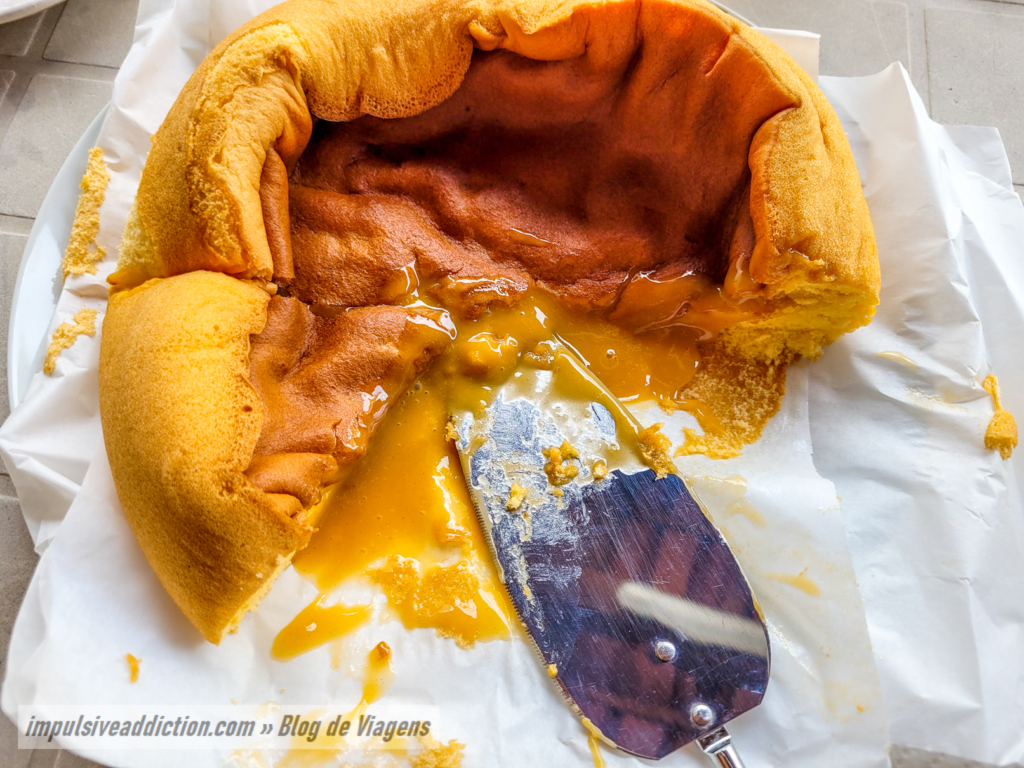
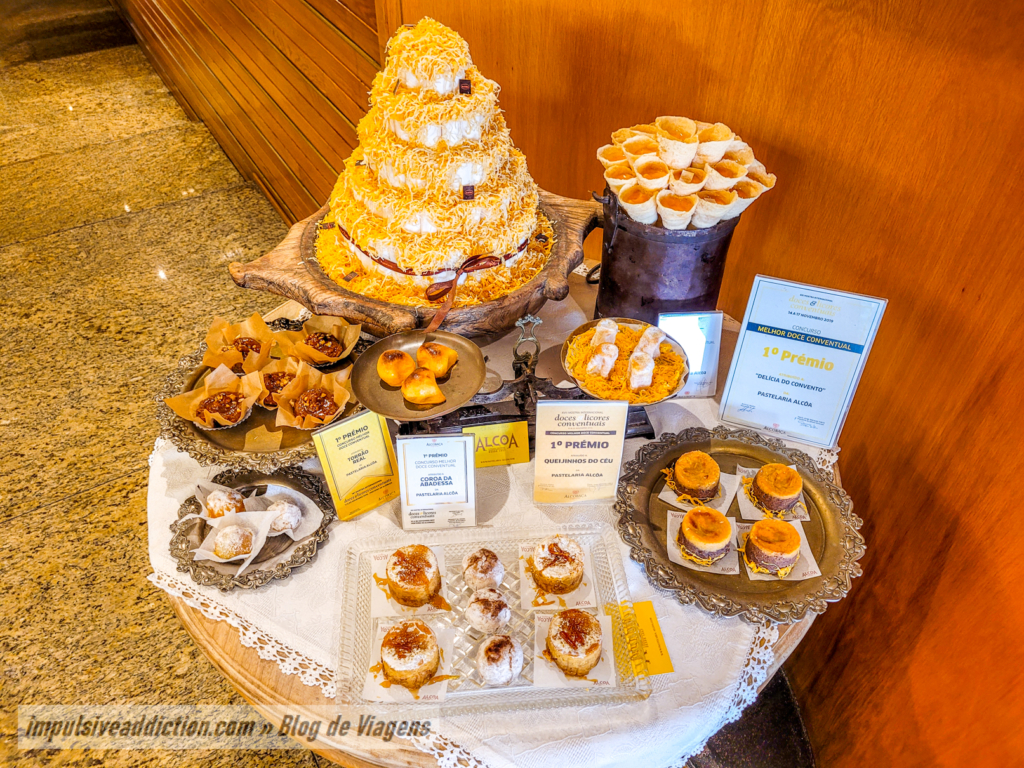
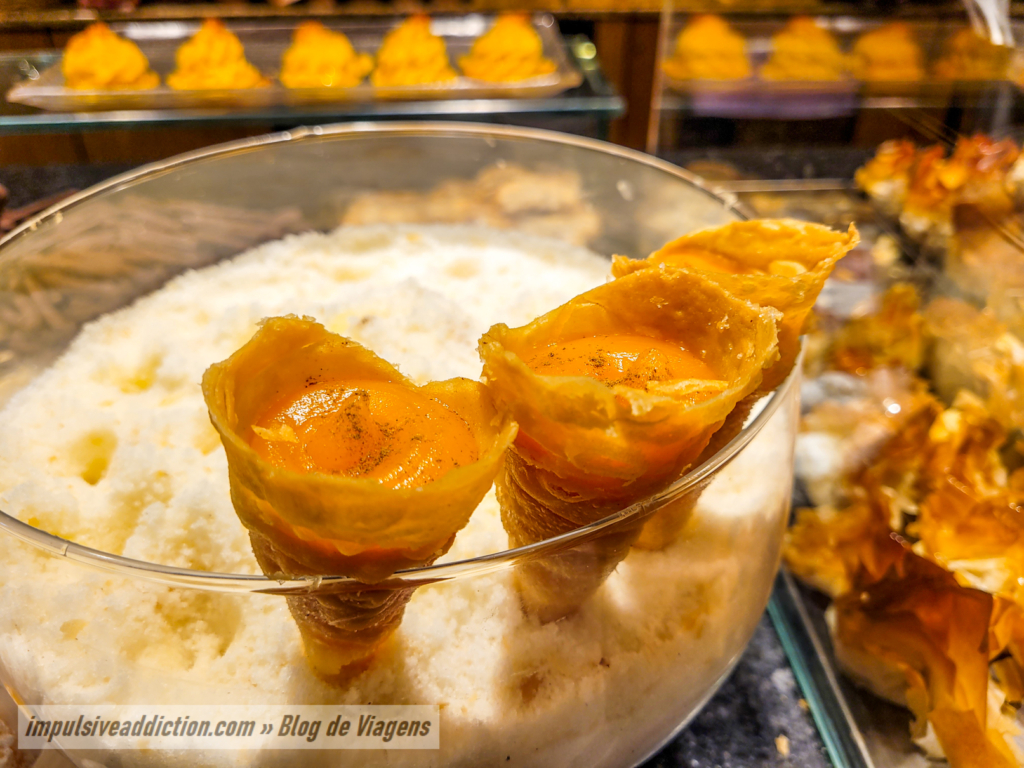
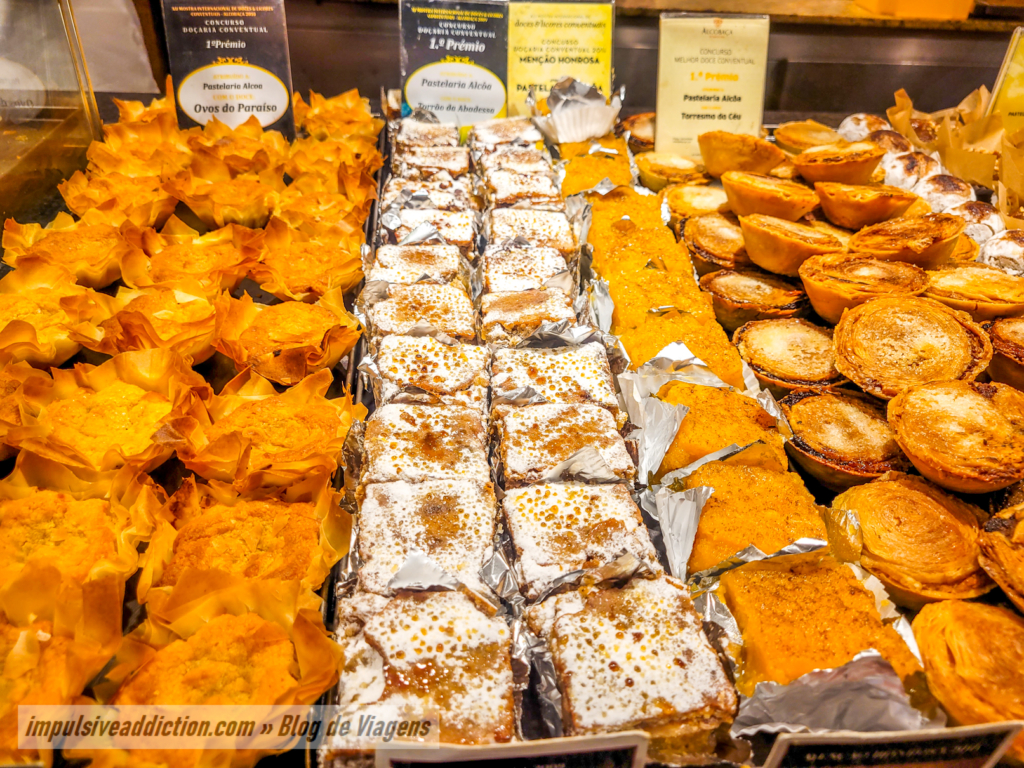
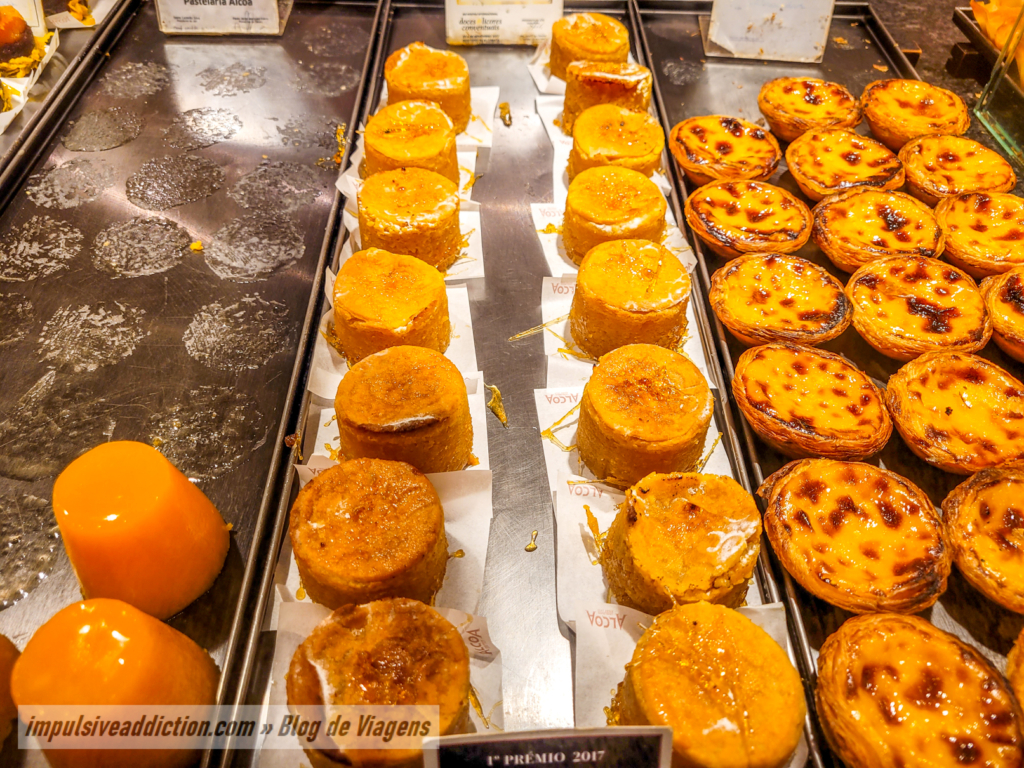
Accommodation tips to visit Alcobaça
| Accommodation | Score | Location |
|---|---|---|
| Parque dos Monges | 9.1 | Alcobaça |
| Bed & Breakfast Vista | 9.2 | Alcobaça |
| Challet Fonte Nova | 9.3 | Alcobaça |
| Hostel Rossio Alcobaça | 8.8 | Alcobaça |
| Hotel Santa Maria | 8.0 | Alcobaça |
| Casa da Padeira | 9.2 | Aljubarrota |
| Termas da Piedade | 8.0 | Alcobaça |
| Hotel Concha | 8.4 | São Martinho do Porto |
| Apartamento São Martinho | 9.2 | São Martinho do Porto |
| Casa Martinho | 9.5 | São Martinho do Porto |
| Casa Boavista | 9.0 | São Martinho do Porto |
| Hotel Mar Bravo | 8.5 | Nazaré Beach |
| By the sea | 8.7 | Nazaré Beach |
| Hotel Magic | 9.1 | Nazaré Beach |
| Apartamentos 7 Saias | 8.6 | Nazaré Beach |
| NorthSpot | 8.9 | Nazaré Beach |
Things to do in Alcobaça | Portugal
I’ll now identify everything to visit in Alcobaça, starting with the city center, where you can discover the important monastery and many other historical sites. After that, I’ll mention the municipality’s coastline, with São Martinho do Porto in particular. I’ll end with a suggested itinerary that includes a visit to Aljubarrota, and various other tourist attractions scattered around the municipality, some of which are optional, but others are totally obligatory, such as the old Coz Monastery and some of the museums in the Alcobaça region. 😉
Map | Things to do in Alcobaça
Visit Alcobaça Monastery and City Center
To visit the center of Alcobaça, you can stay in the beautiful Challet Fonte Nova, which dates back to the second half of the 19th century, using it as a starting point to discover the city on foot. However, if you’re not planning on staying in Alcobaça, and you’re arriving by car, then I recommend that you leave it in the large parking lot at these coordinates and start your walk from there. 😉
1. Alcobaça Town Hall and Palace of Justice
Your first stop when visiting Alcobaça might be the Town Hall and Palace of Justice. Along the way you might pass the city’s Cine-Teatro, but you’ll clearly be more fascinated by the gardens surrounding the first two spaces. They are quite large, with extensive lawns, lakes, fountains and even a café-terrace.
As far as the Town Hall is concerned, I would like to point out that it is located in another palace from the late 19th century, called Palacete do Pena, which has a clear Brazilian influence, as its original owners came from Brazil, where they made their fortune. This is one of the most beautiful buildings in the whole city, as is the aforementioned Challet Fonte Nova.
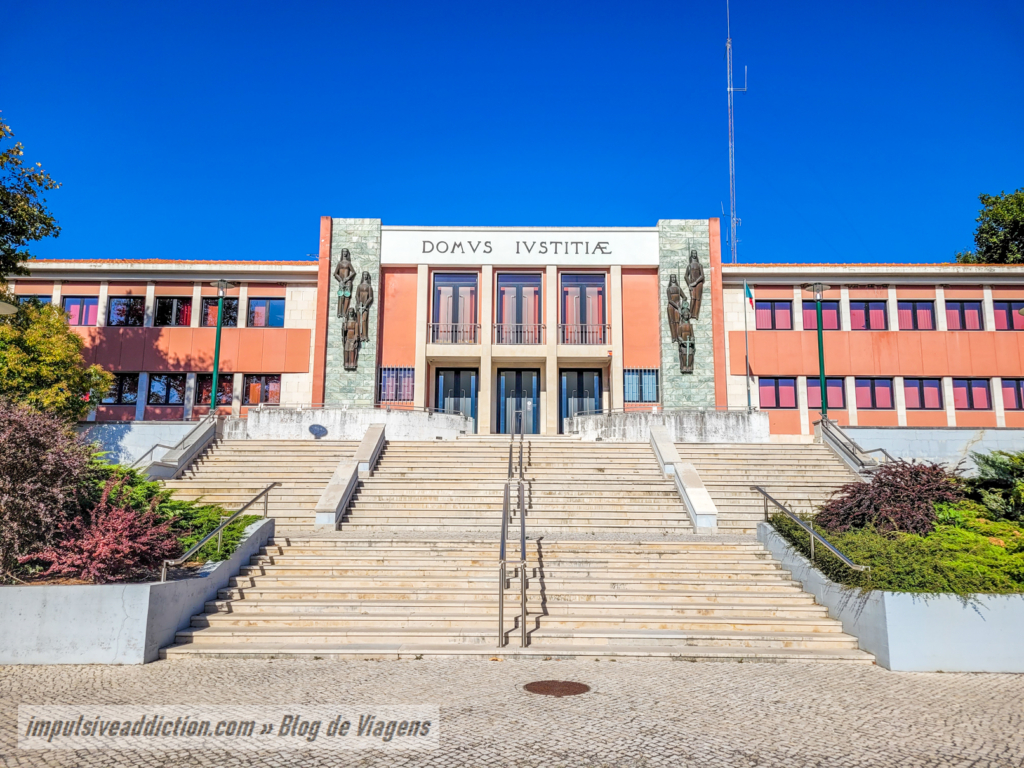
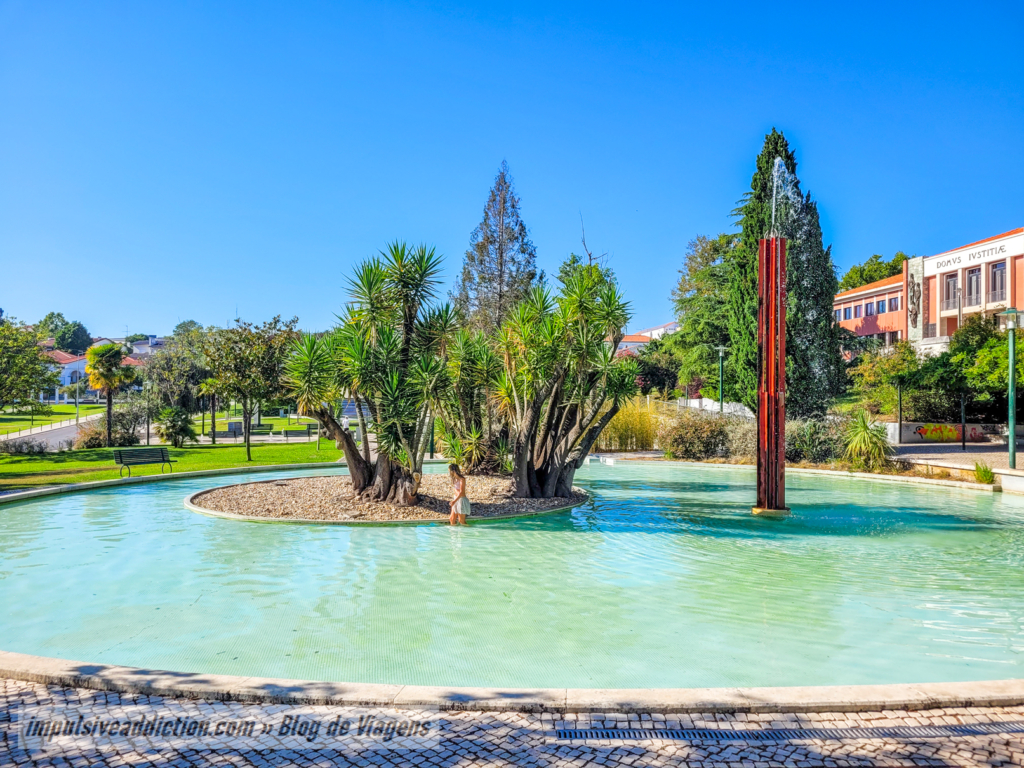
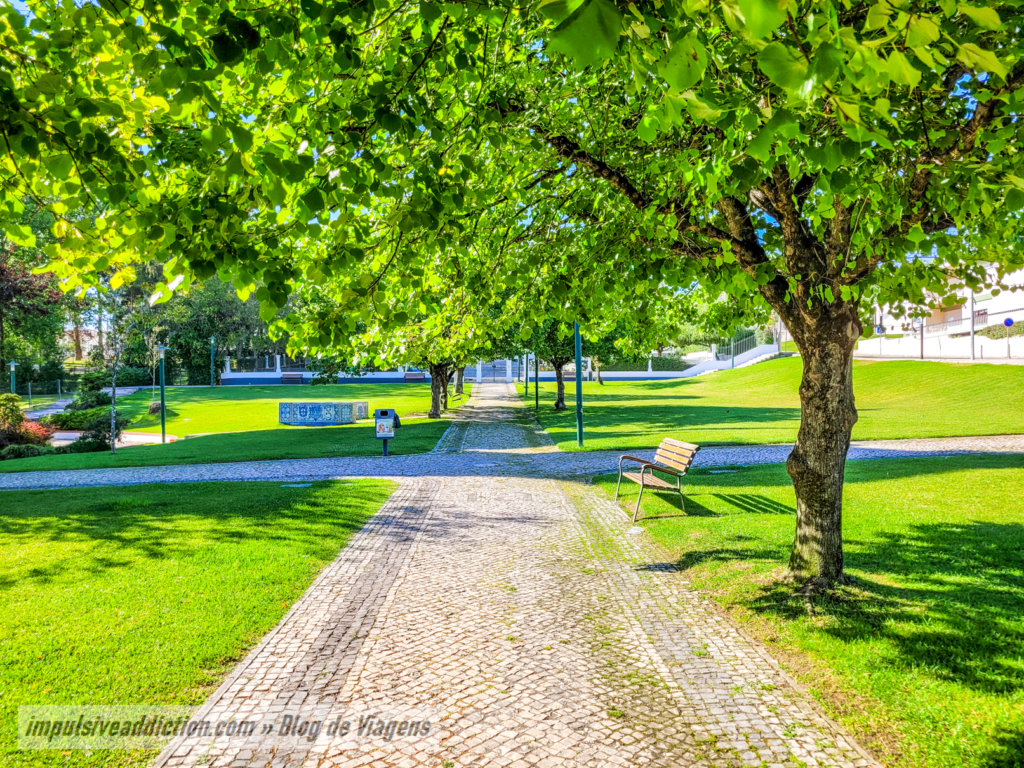
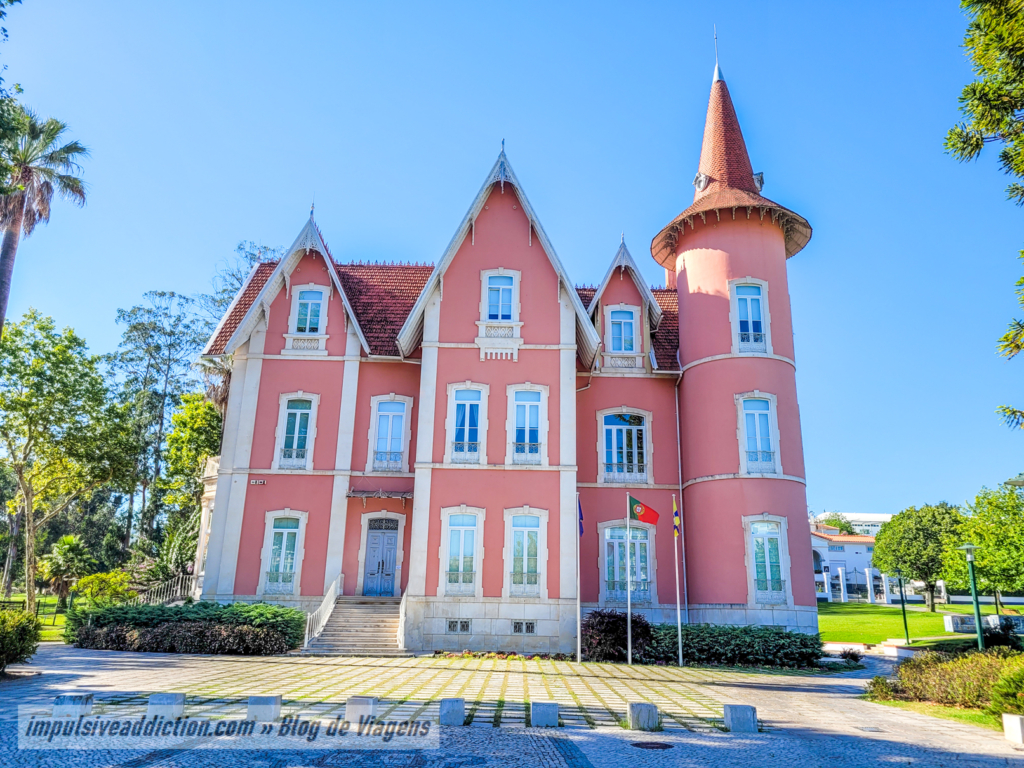
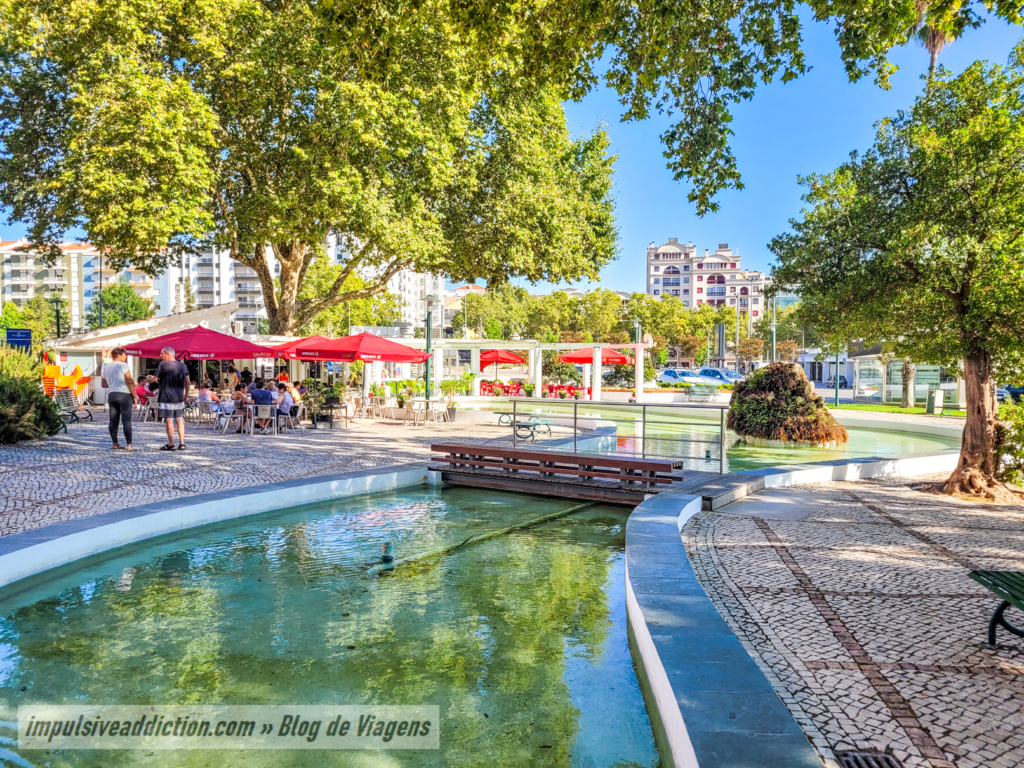
2. Church of Nossa Senhora da Conceição
From this more modern-looking area of the city, you’ll head to the Church of Nossa Senhora da Conceição, but I can’t fail to mention that the Municipal Market is nearby, and that at these coordinates you’ll find a beautiful urban art mural.
The church itself is very simple, having been built in 1648, although it is known that there was an earlier church dating back to the 12th century, even before the Monastery of Alcobaça was built. In fact, it was here that the first monks who moved to the city were welcomed, hence its extreme importance in the region’s history.
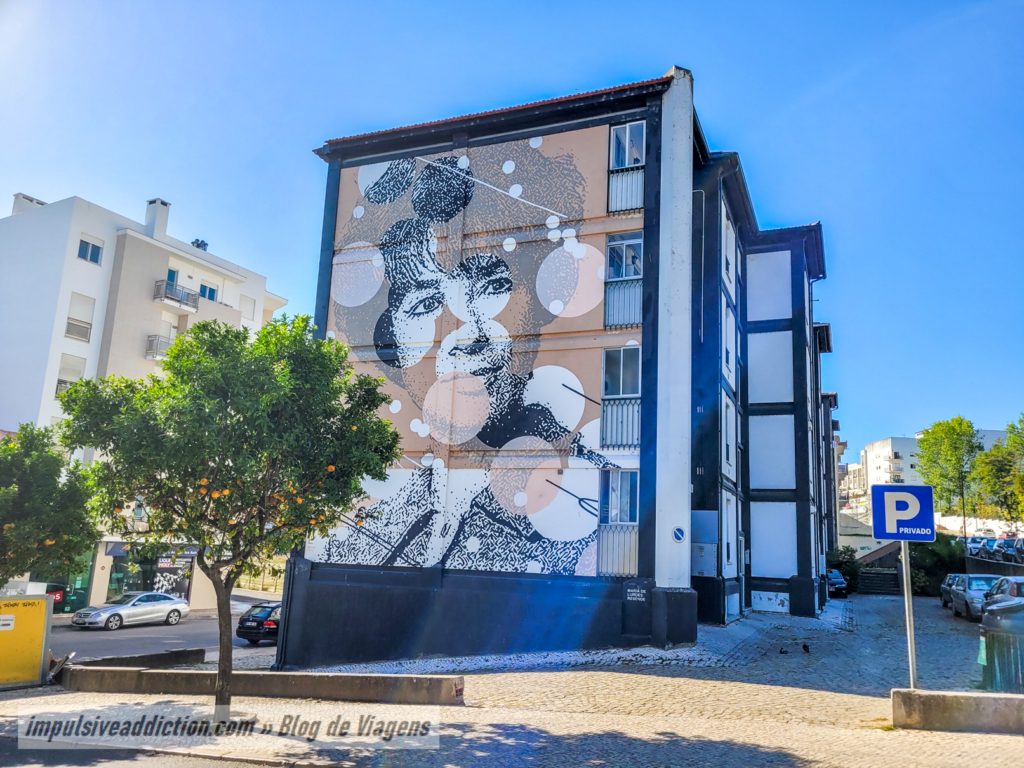
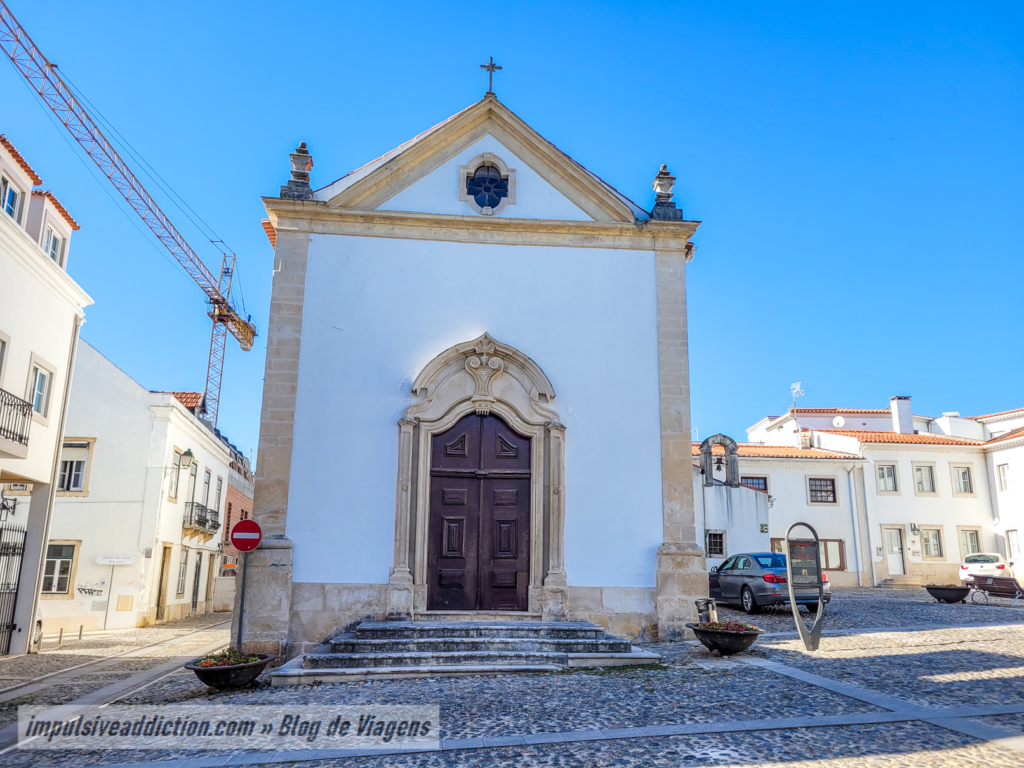
3. Garden of Love
You’ll soon realize that the name Alcobaça came from the combination of the names of its two rivers: Alcôa and Baça, which come together in the heart of the city, more precisely near the Garden of Love. 😉
The garden was created as a tribute to the love of Pedro and Inês de Castro, whose fabulous tombs you can admire inside the Monastery of Alcobaça. As the area is very touristy, you’ll find several attractions designed to encourage photography, such as the Heart Bank or the huge thrones where you can sit with your better half.
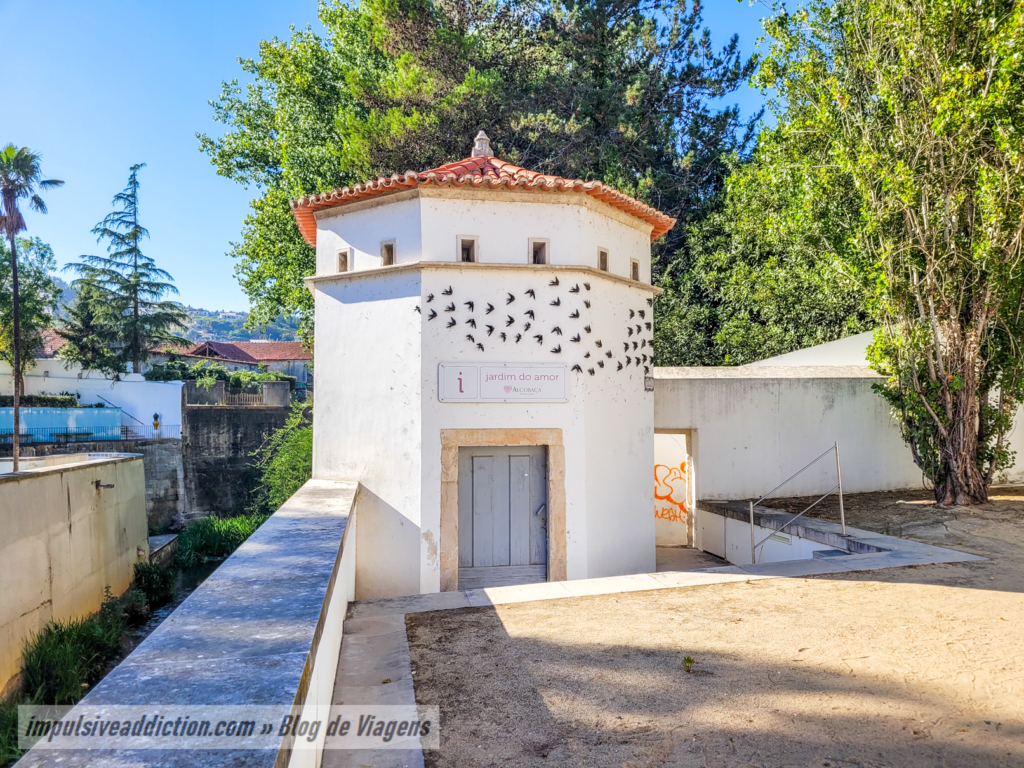
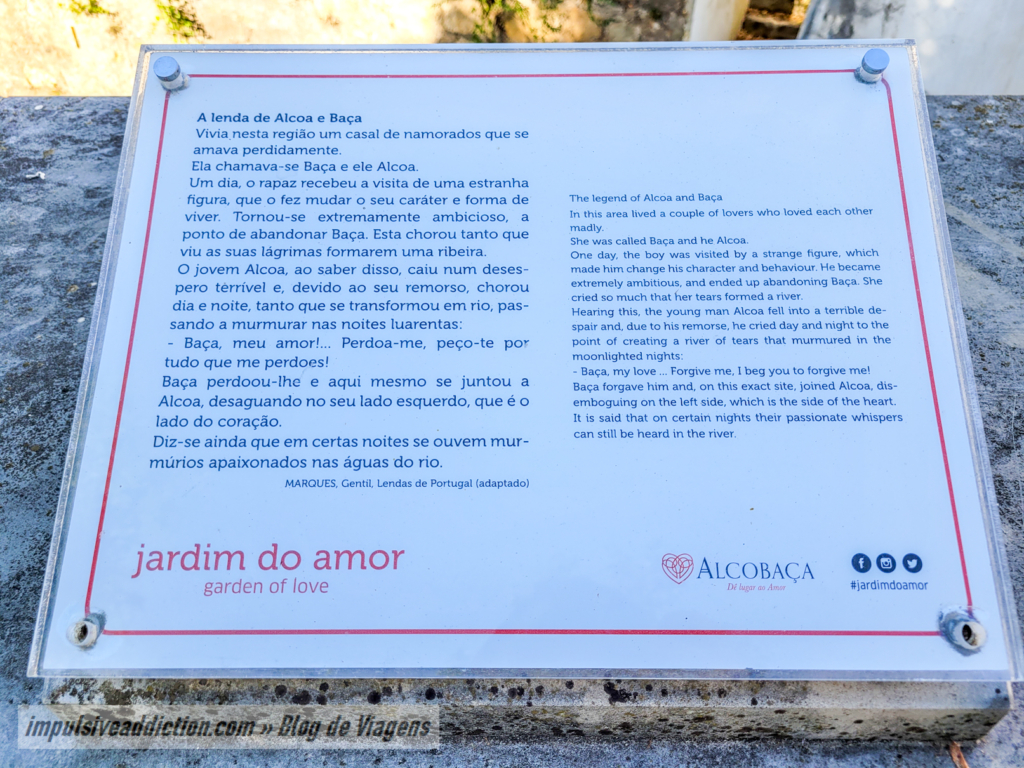
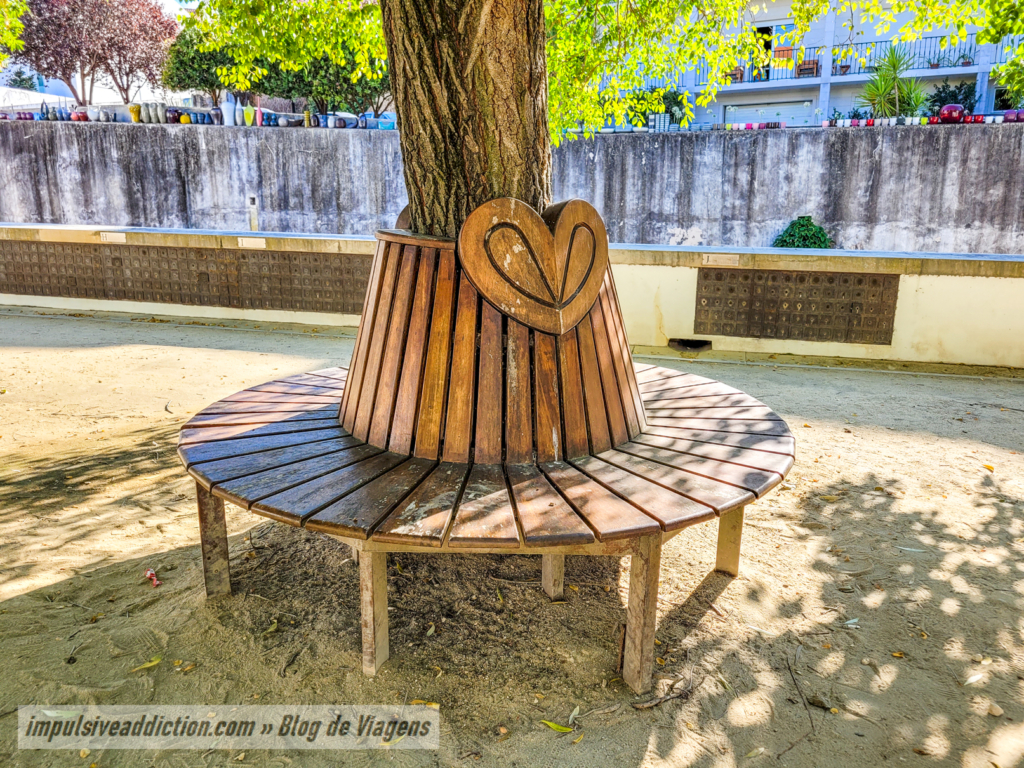
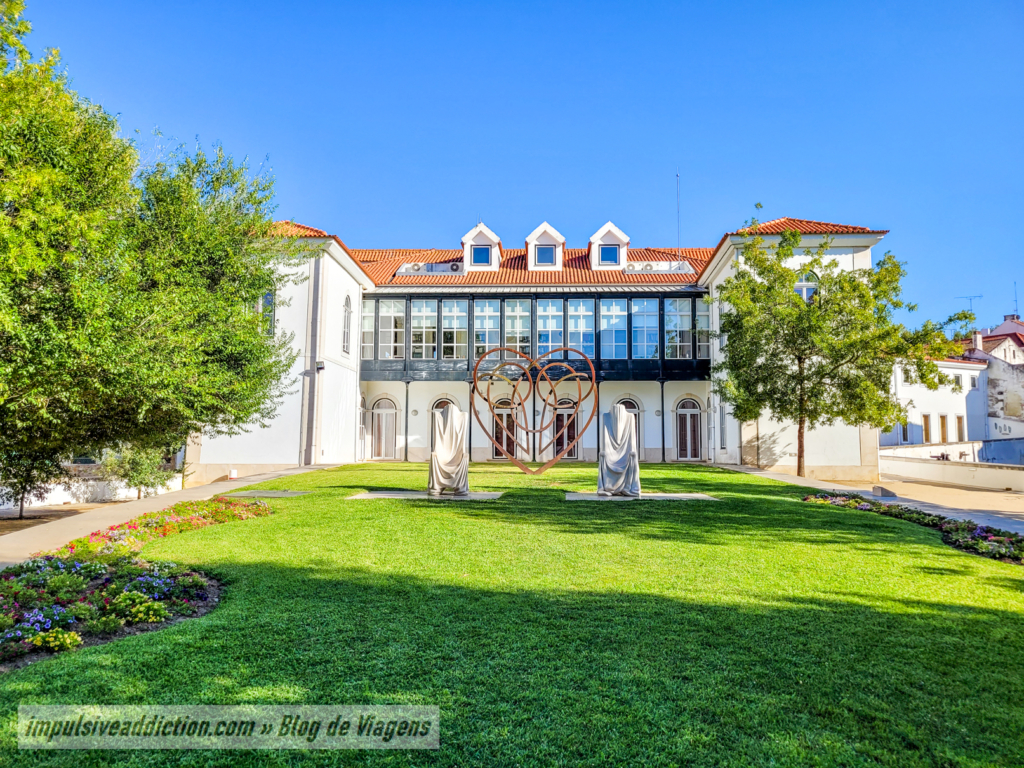
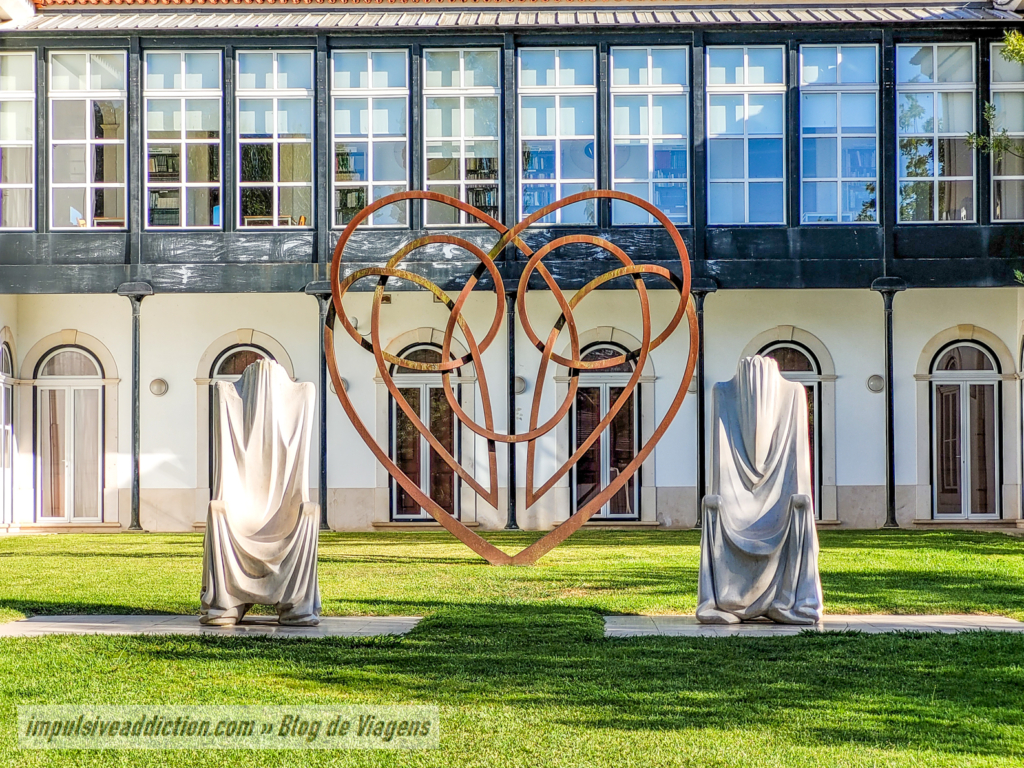
4. Alcobaça Municipal Library and Power Station at the Confluence of the Alcôa and Baça Rivers
In the vicinity of the Garden of Love you’ll also find two buildings that are historically important to the city. Firstly, the old Araújo Guimarães Palace (19th century, once again), which once served as a Cistercian flour factory. This factory was attached to the Power Station at the Confluence of the Alcôa and Baça Rivers, which used the power of the river waters to create the energy needed to run it.
The factory closed in 1985 and was later restored to house the Alcobaça Municipal Library. The plant, in turn, can be visited at certain times, allowing contact with its still preserved industrial equipment.
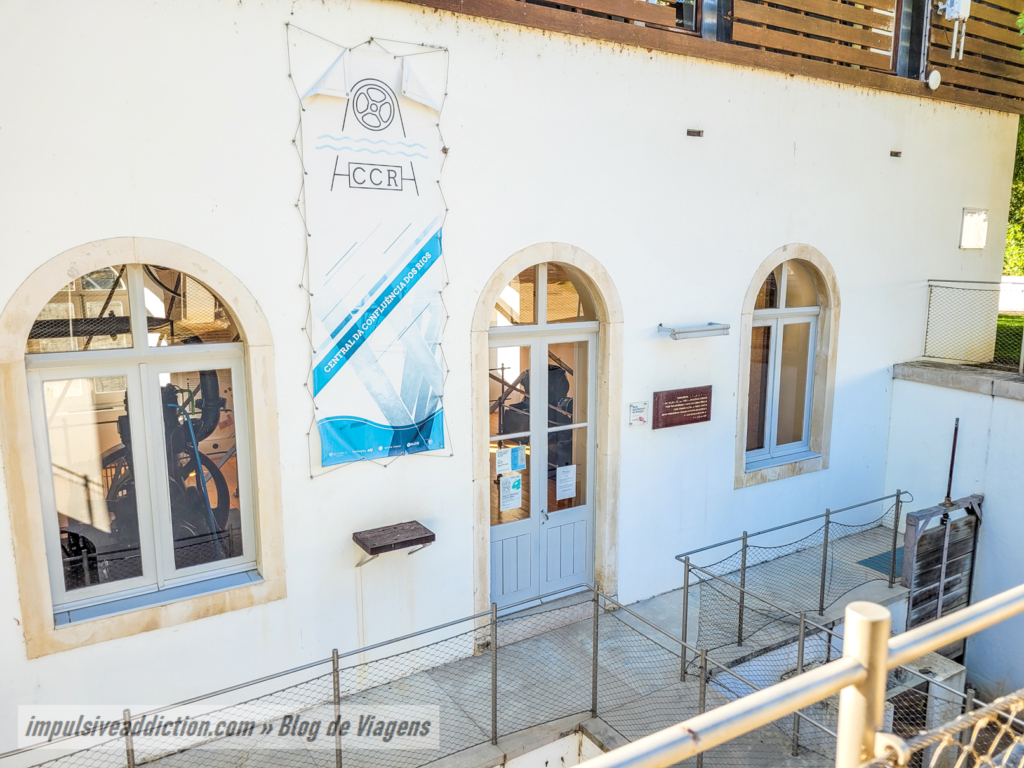
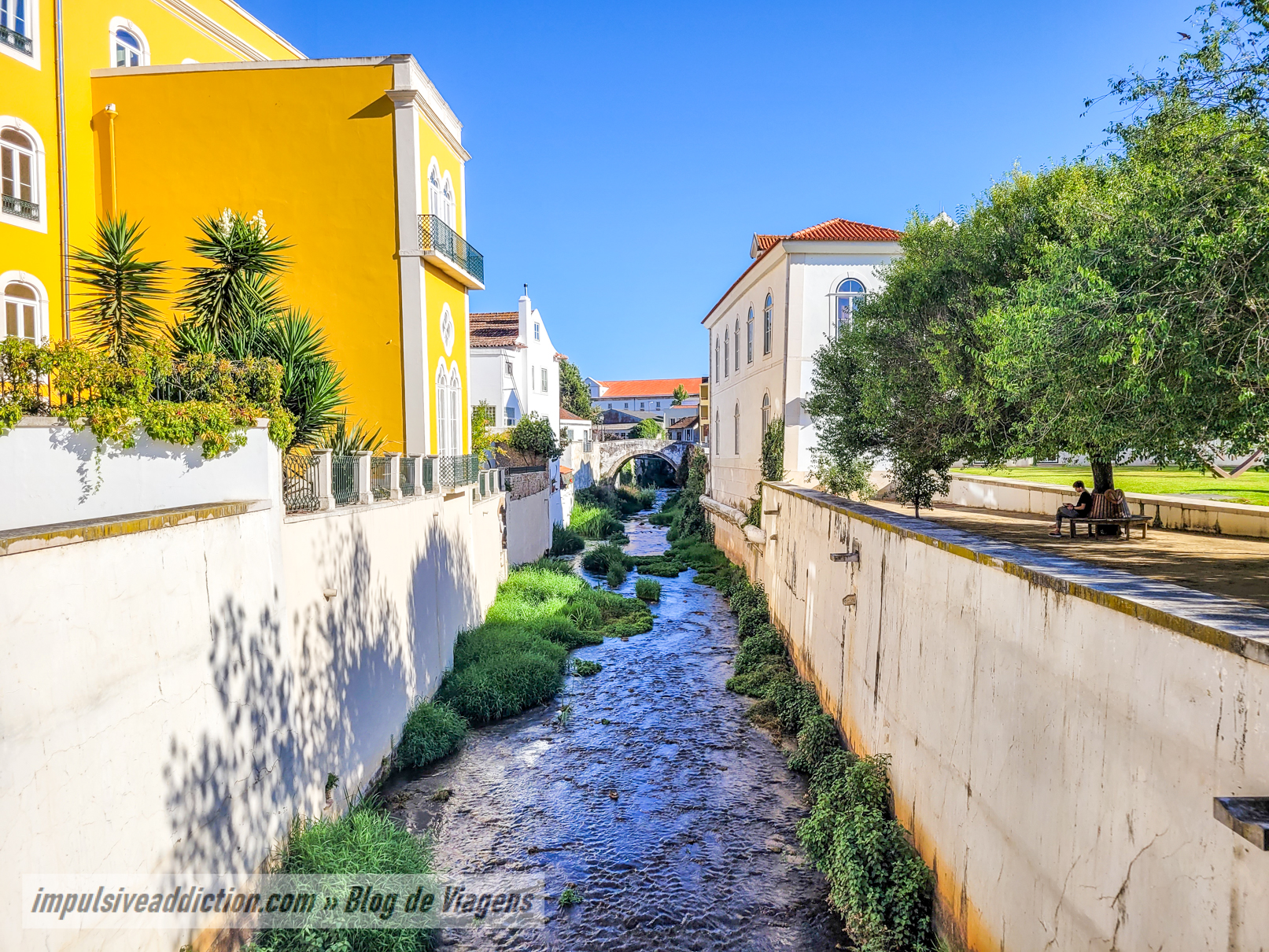
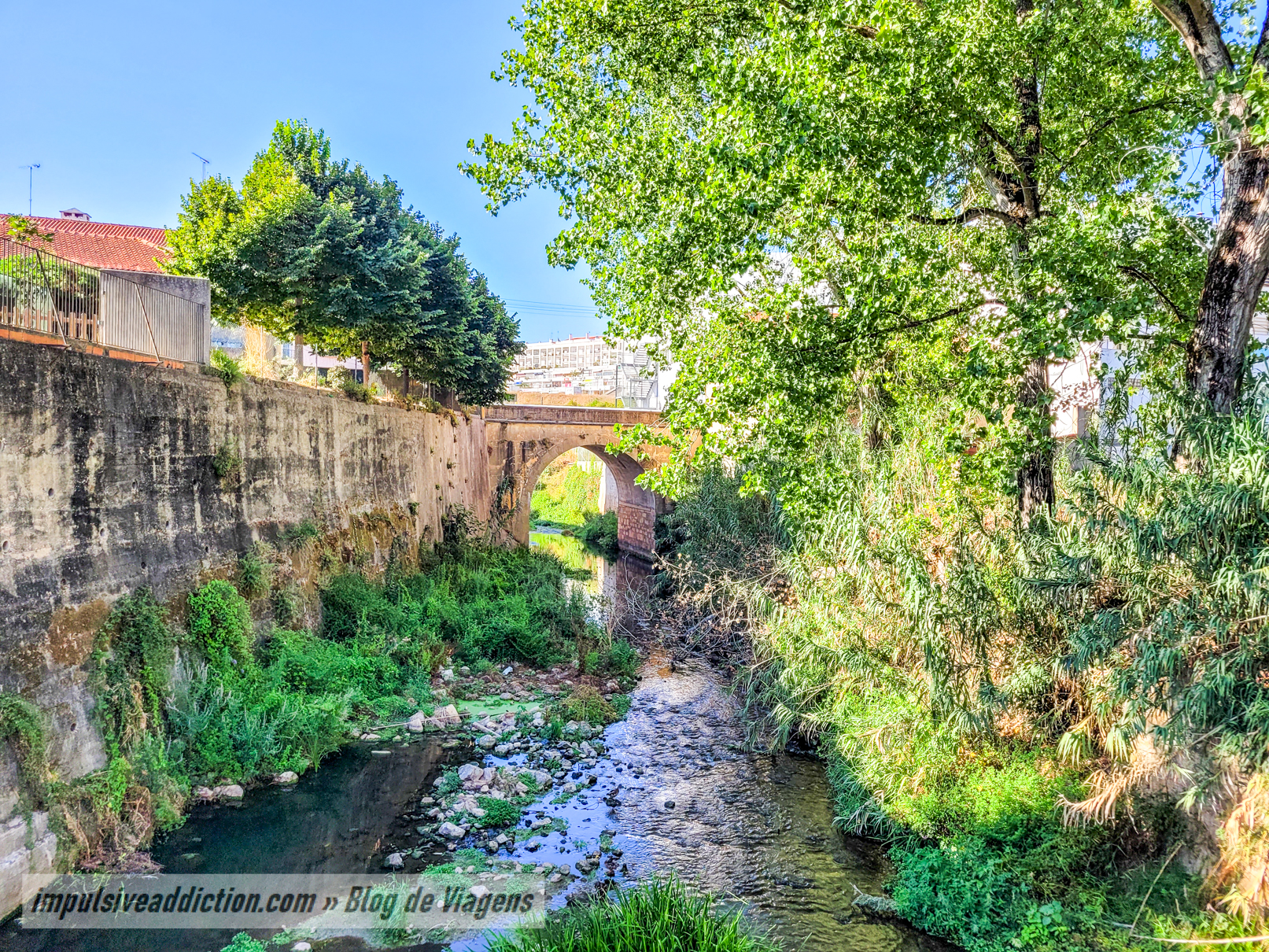
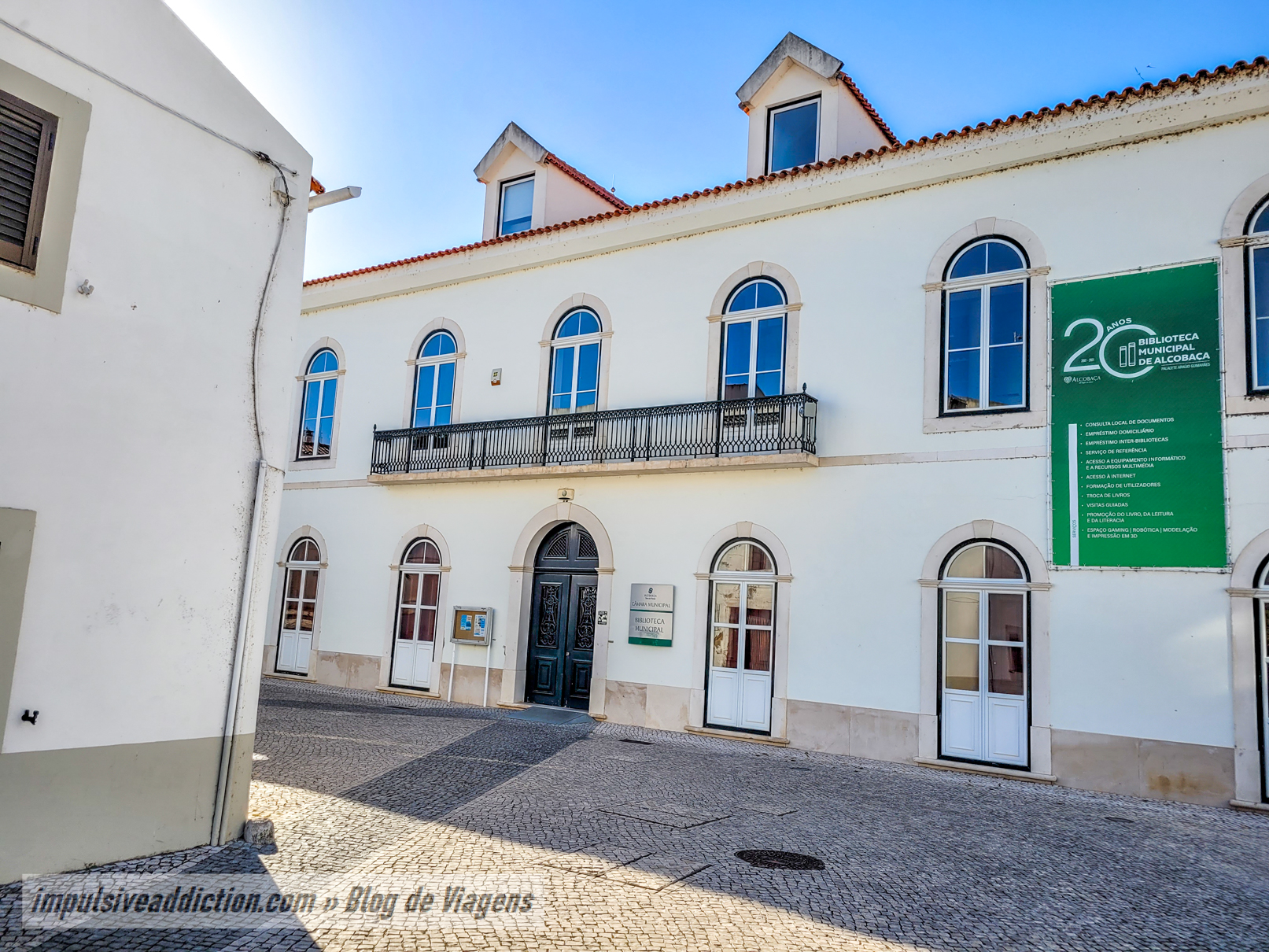
5. Alcôa River Walk and Rino Palace
You will then pass a tourist office for the city of Alcobaça, and a bridge over the Alcôa river, which stands out for the awesome mural paintings that have been added to it, by the Italian artist Pantonio. 😉 My recommendation is that you cross this bridge and walk along the cobbled riverside promenade that follows the river for dozens of meters until you reach the Rino Palace. I think you’ll like it!
This palace is another one of those dating from the 19th century (late romanticism), and was originally the residential building of the Rino family, now serving as a children’s center.
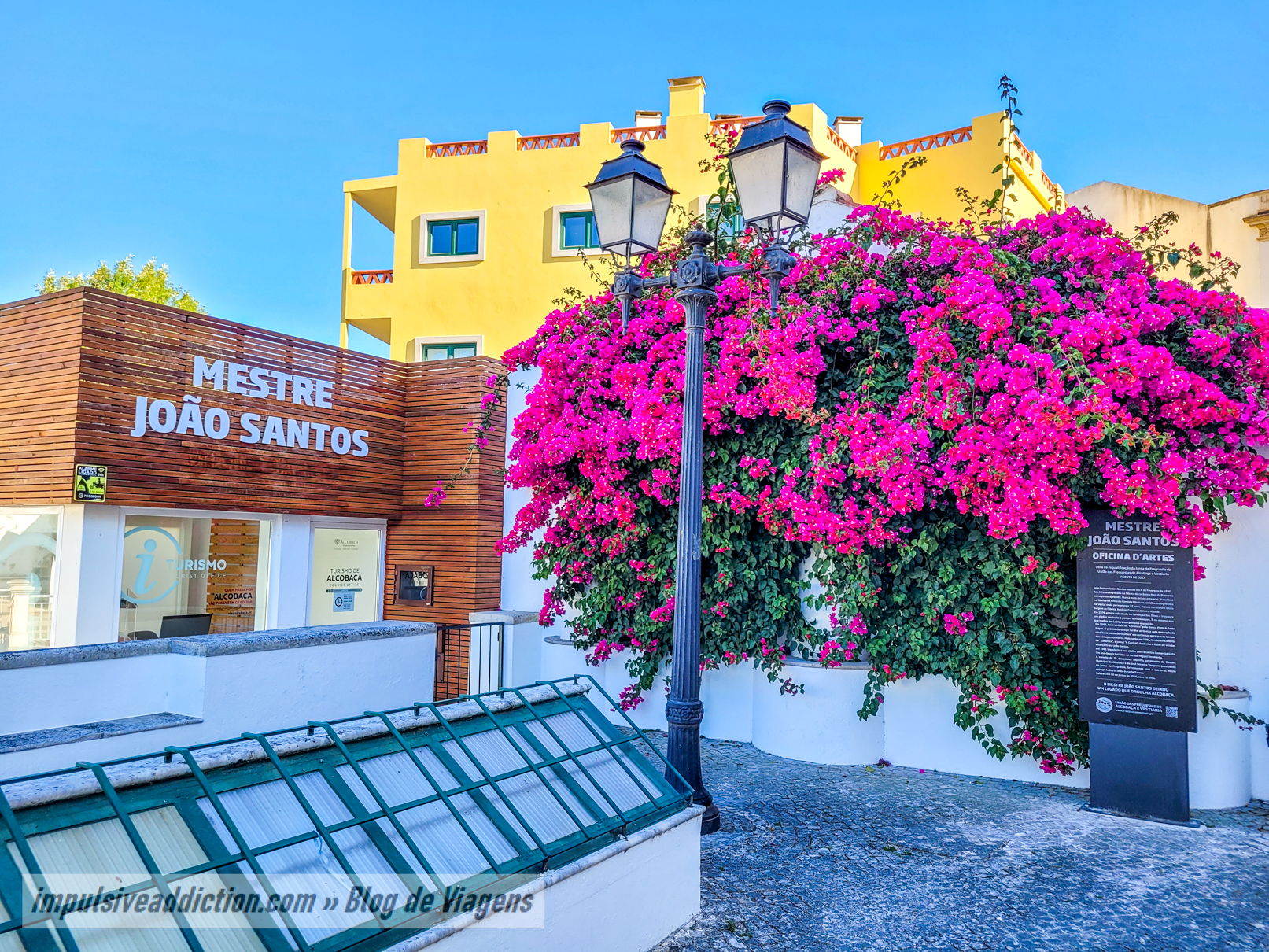
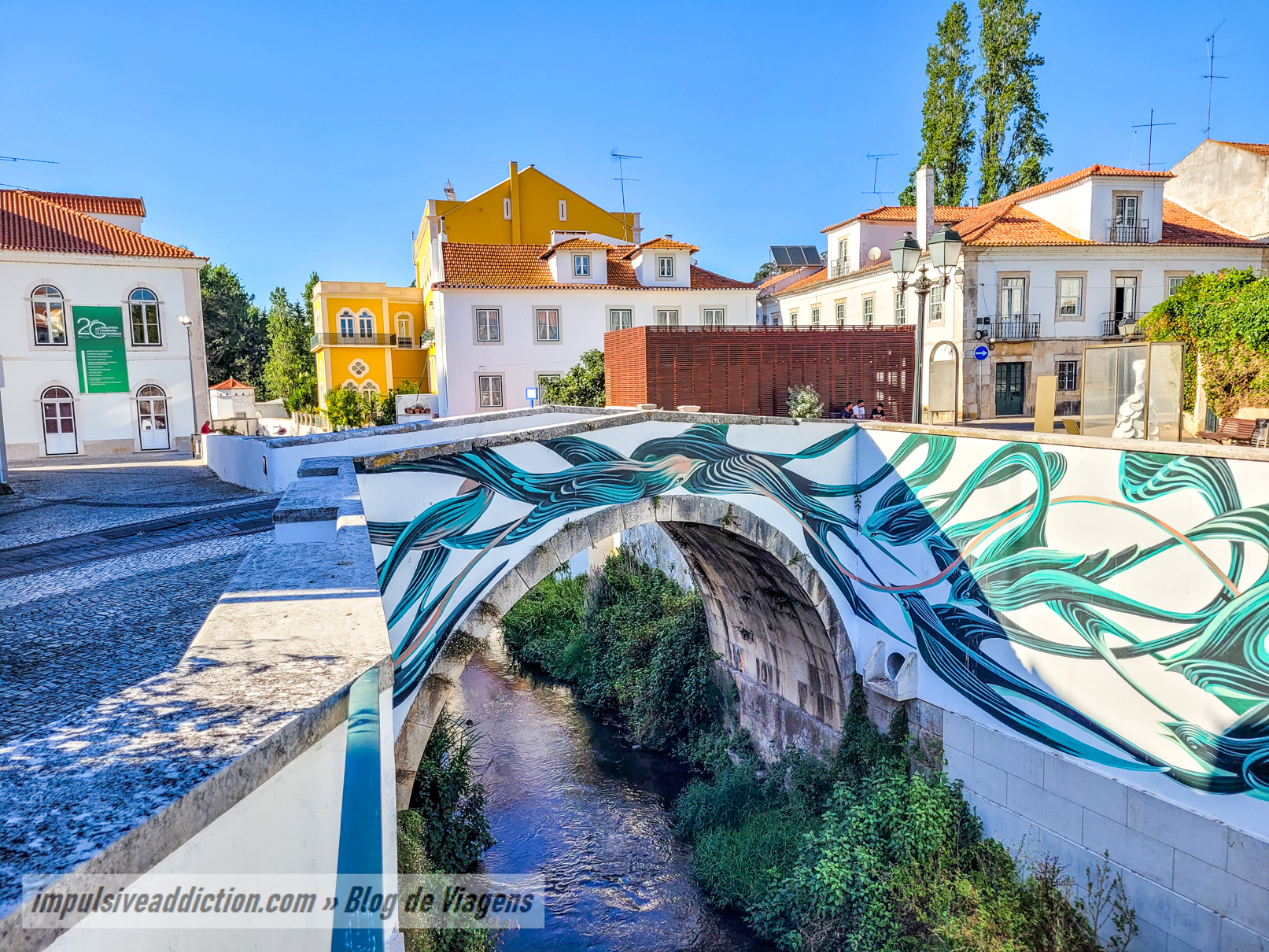
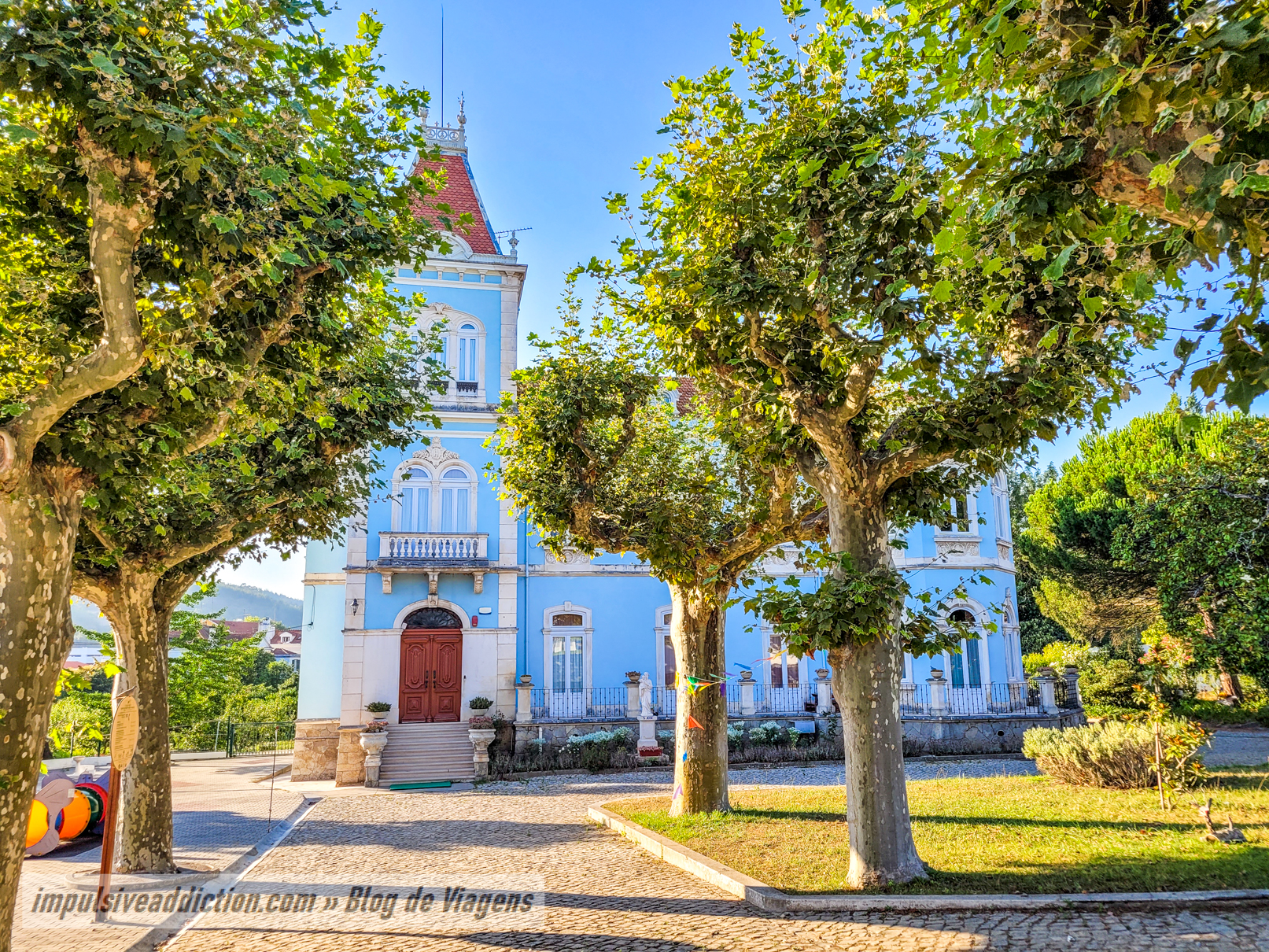
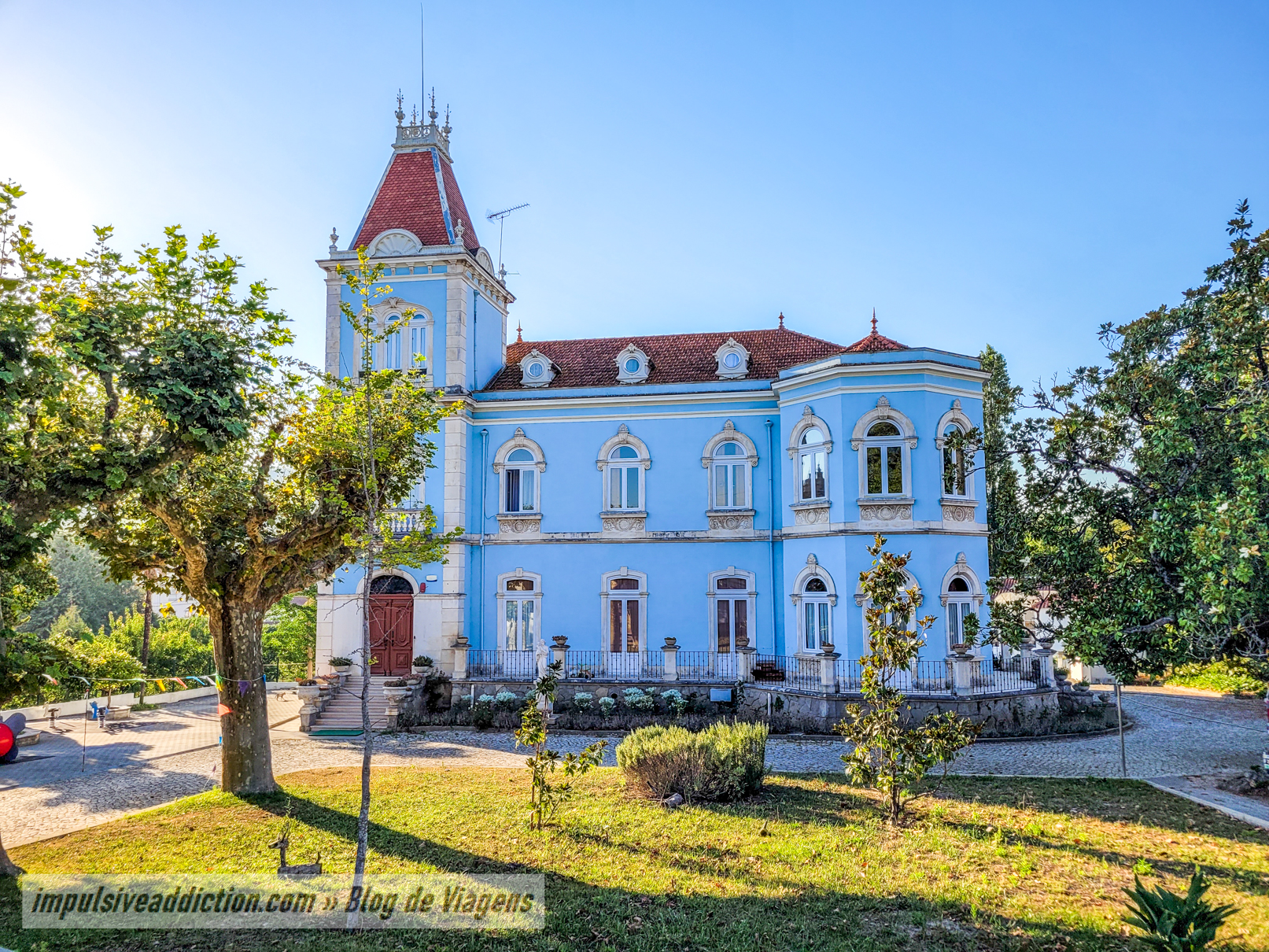
6. D. Afonso Henriques Square and Cistercian Arches
Even though you’re so close to the Monastery of Alcobaça, I recommend that you leave it for later. You’ll walk along the side of the monastery, on Rua D. Pedro V, but when you reach D. Afonso Henriques Square, cross one of the two Cistercian Arches to Republic Square. Highlights include the coats of arms of the Cistercian order and the Manueline pieces placed there.
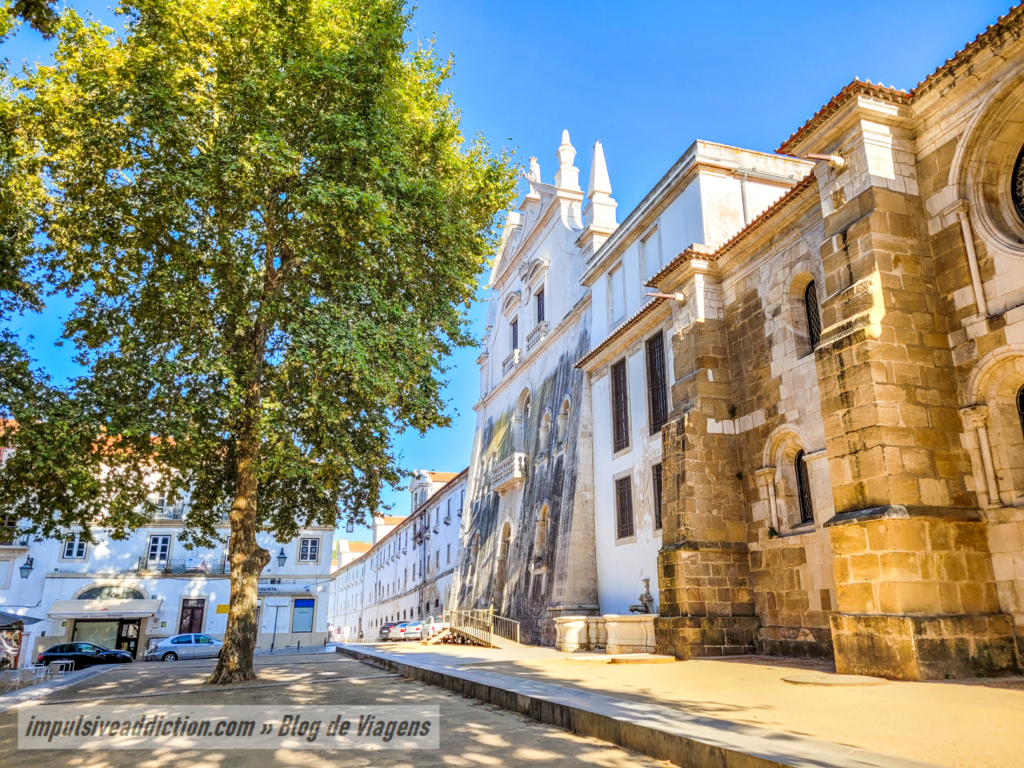
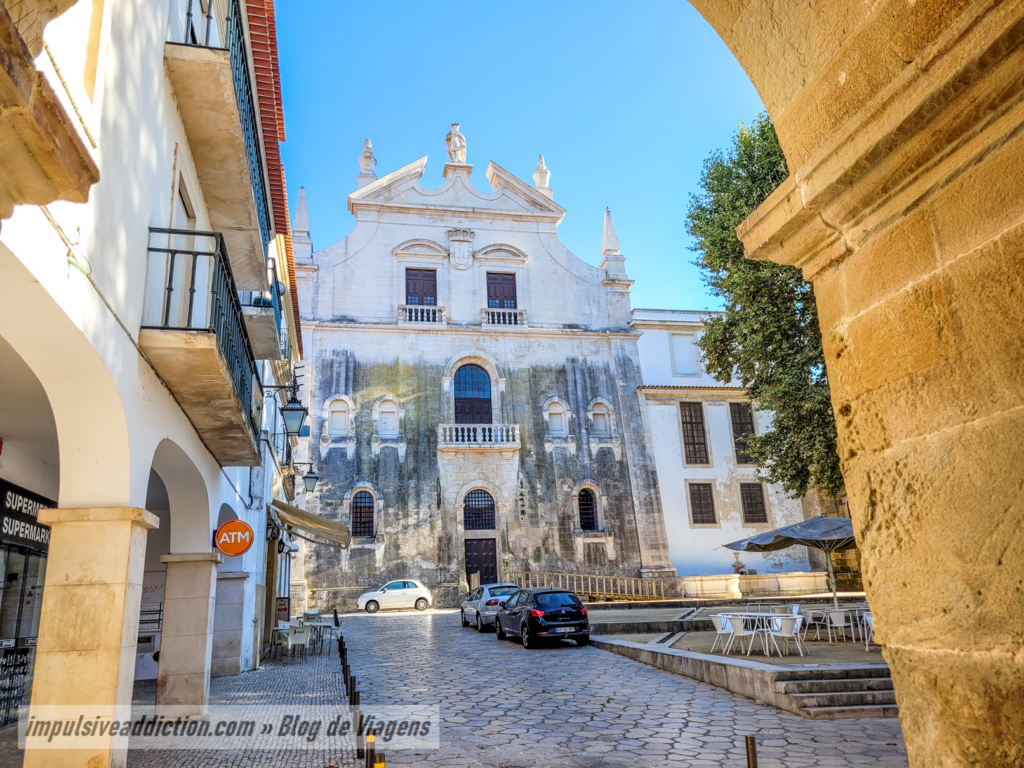
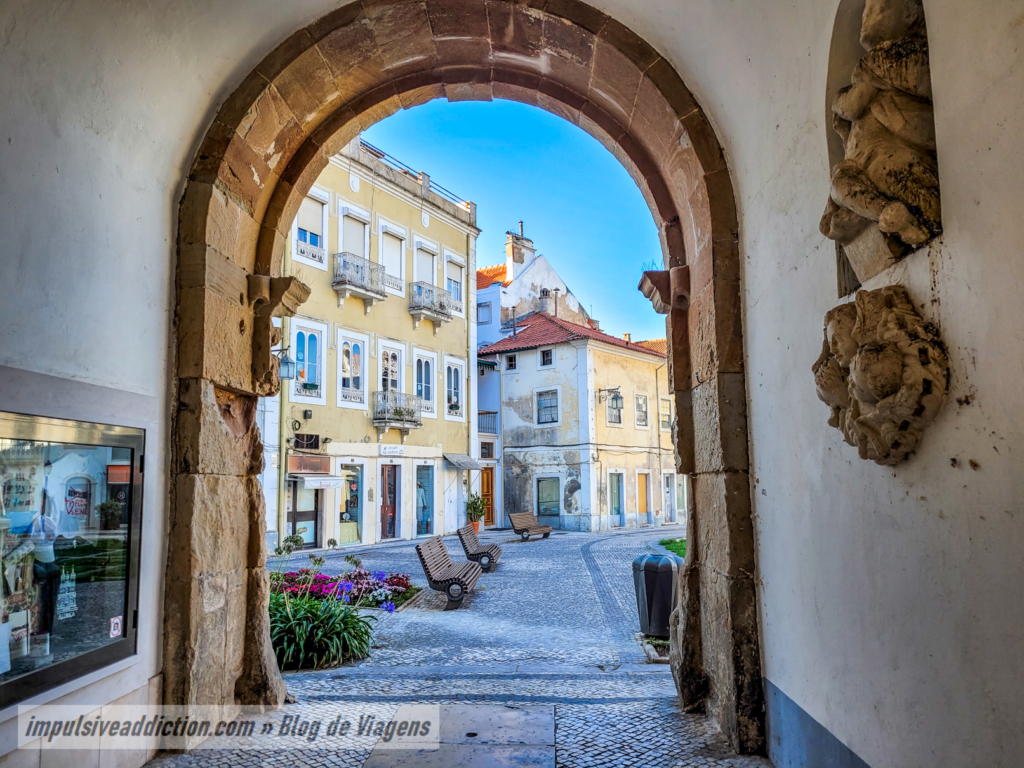
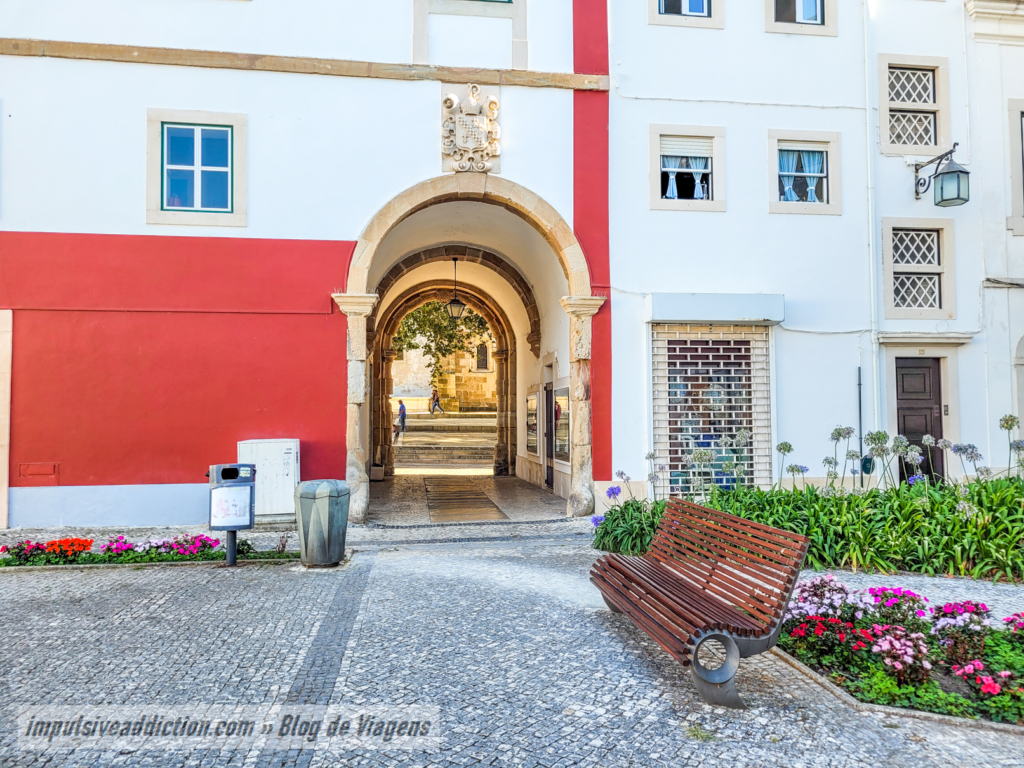
7. Republic Square of Alcobaça
Republic Square was formerly known as Fish Square, Amoreiras Square and Prince D. Carlos Square. The current name only appeared in 1910, with the establishment of the Republic. There is also a monument in honor of the monks, as well as café terraces and some garden benches. This is undoubtedly one of the most beautiful squares in Alcobaça.
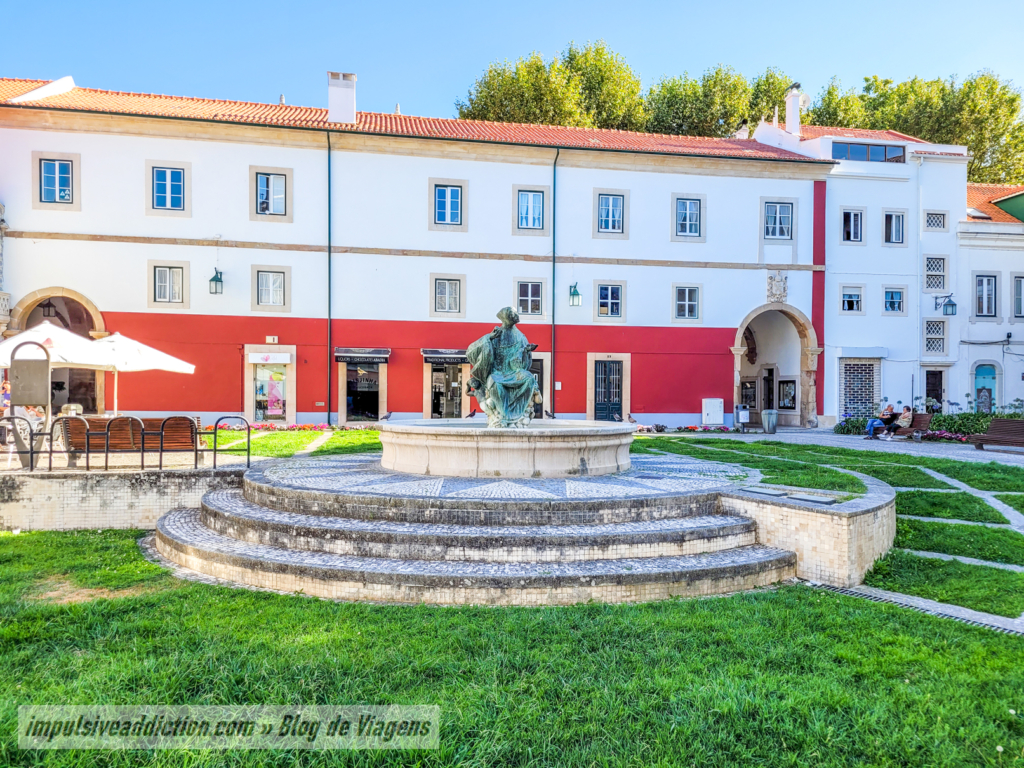
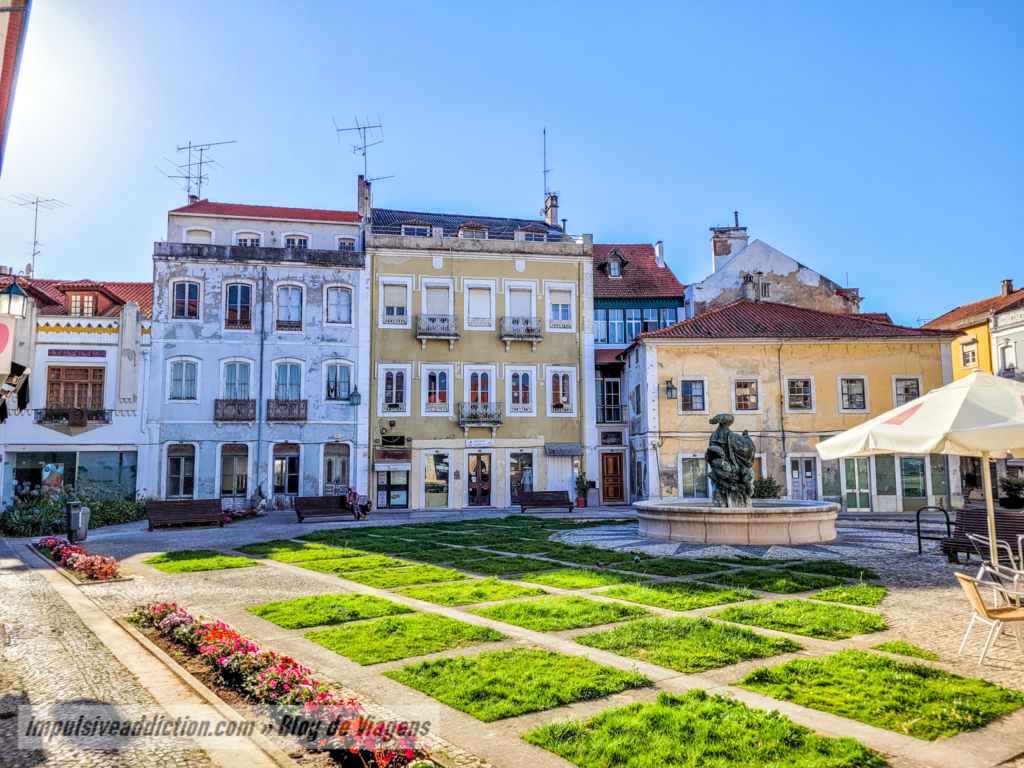
8. Alcobaça Misericórdia Church
You’ll follow Rua 16 de Outubro to the Misericórdia Church, which is thought to have been built in the first half of the 16th century. At a certain point you’ll cross River Baça, in a place where there is some more of Alcobaça’s urban art, as you can see in the photos below.
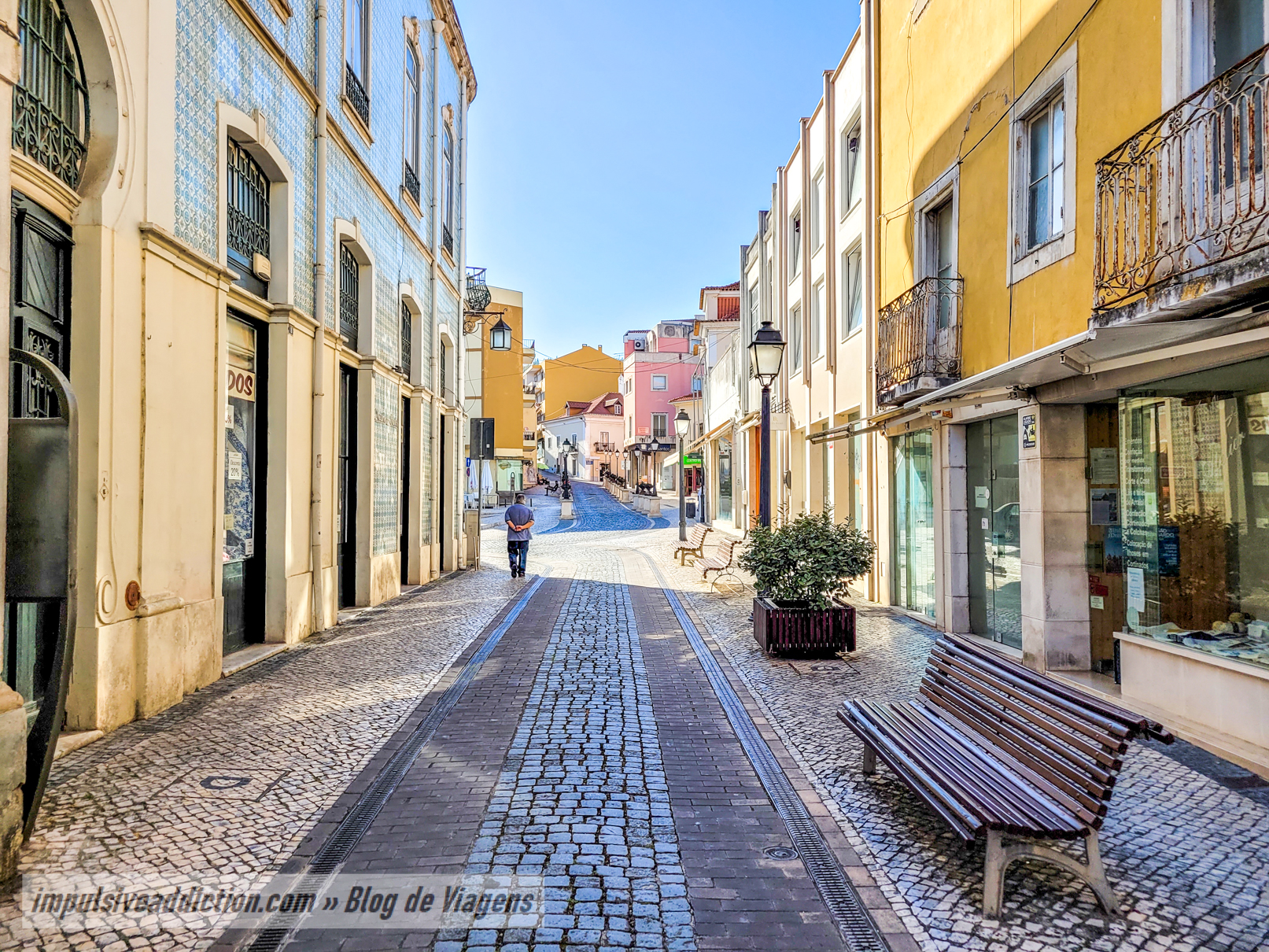
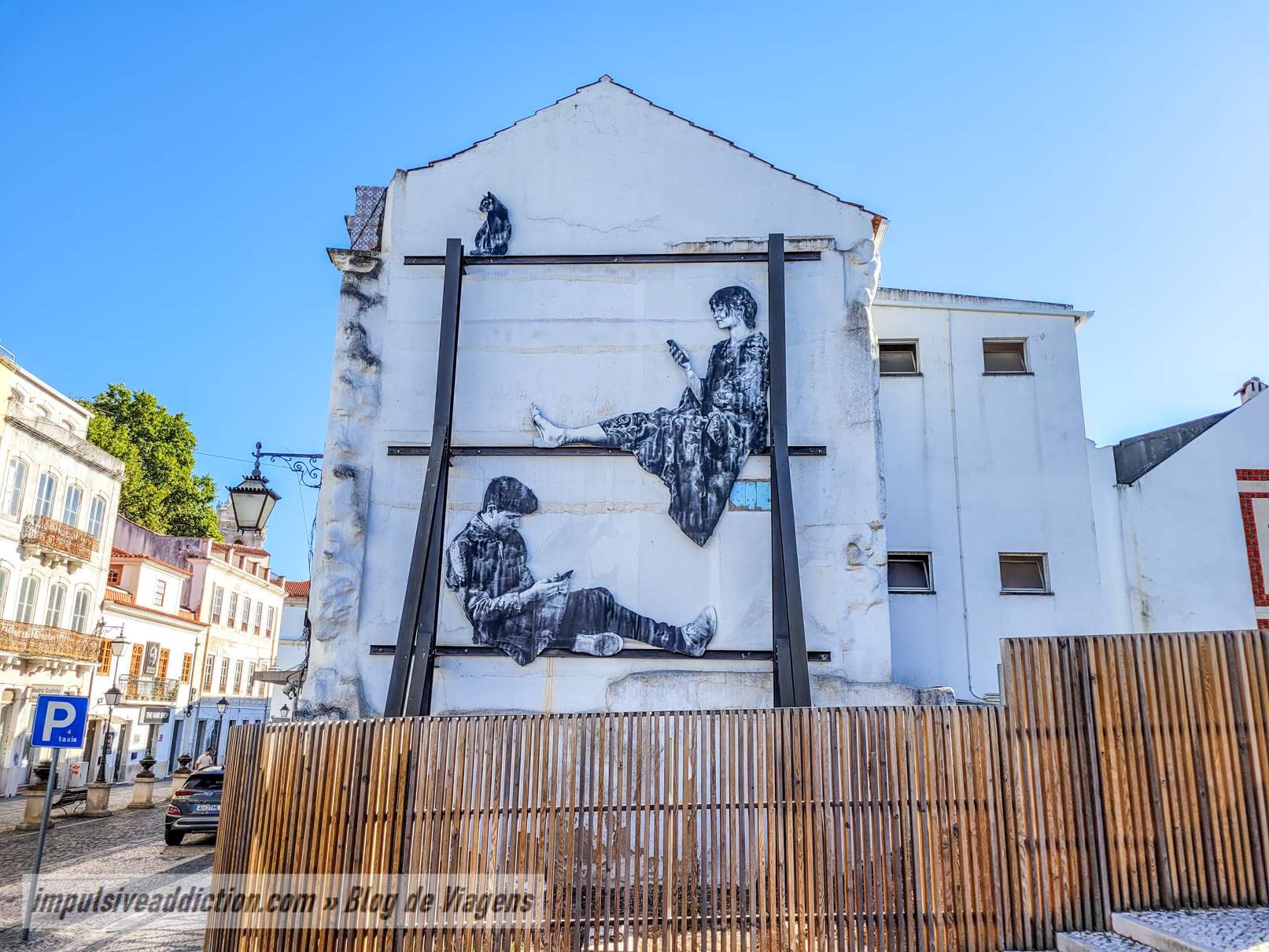
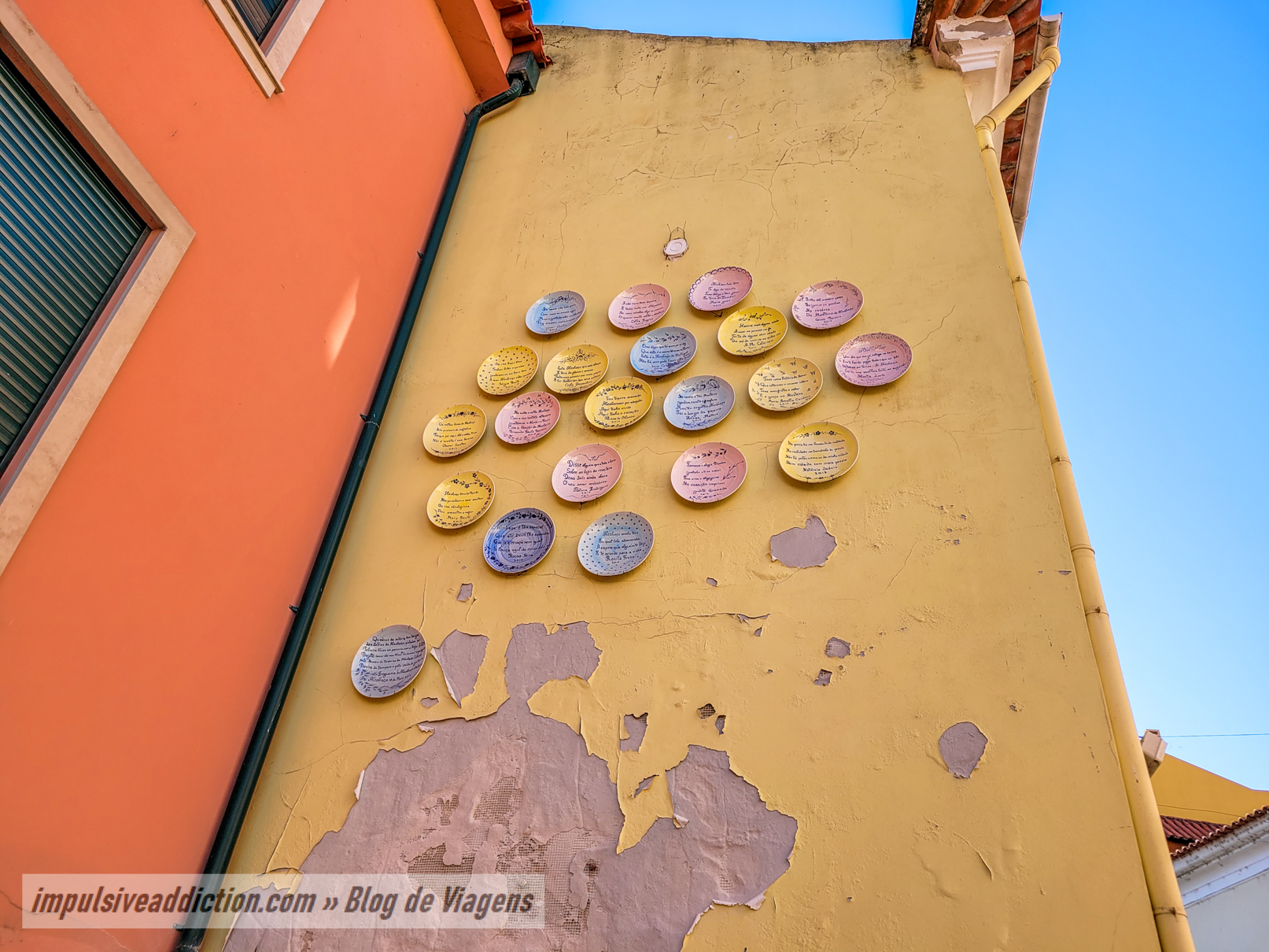
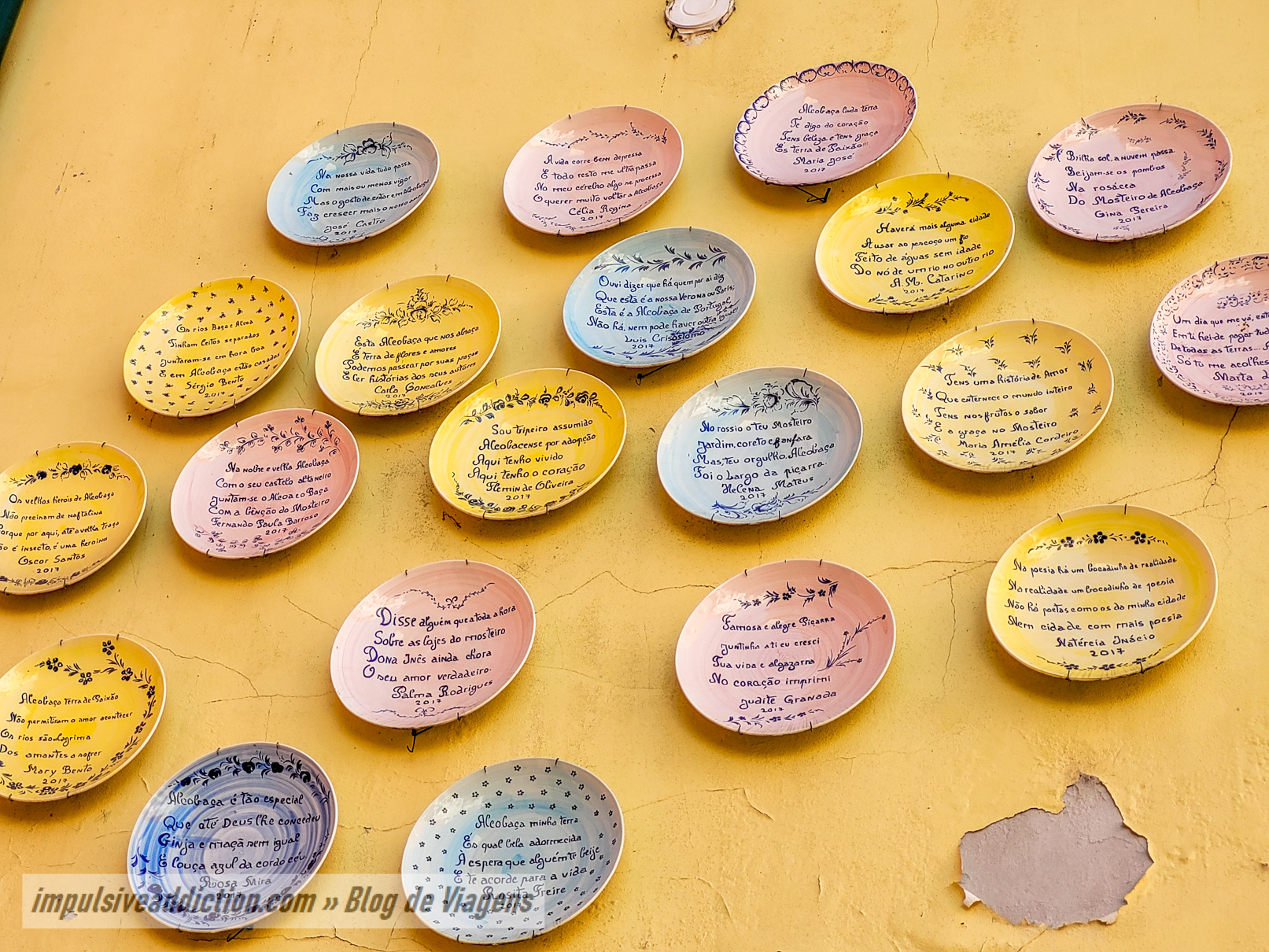
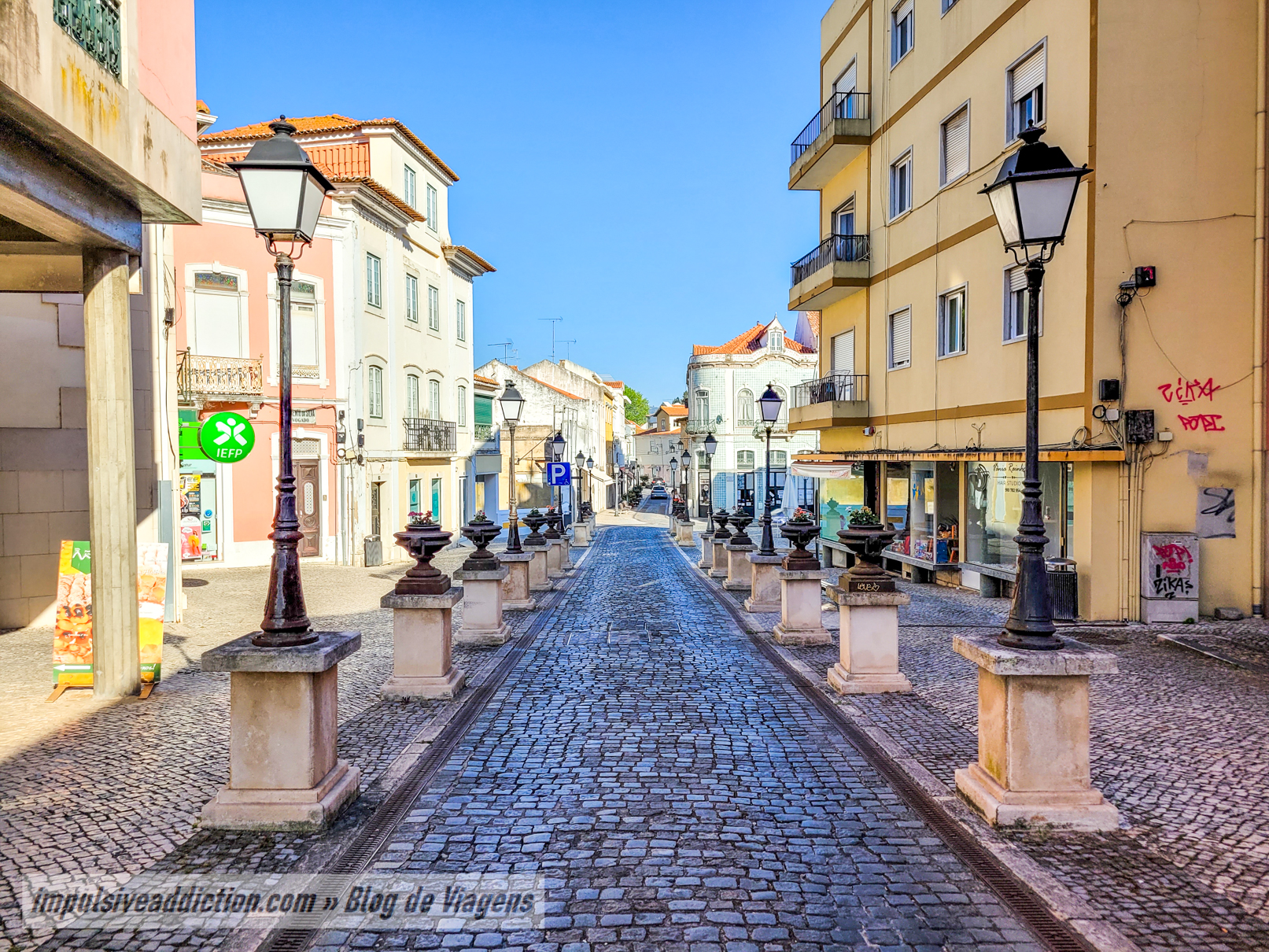
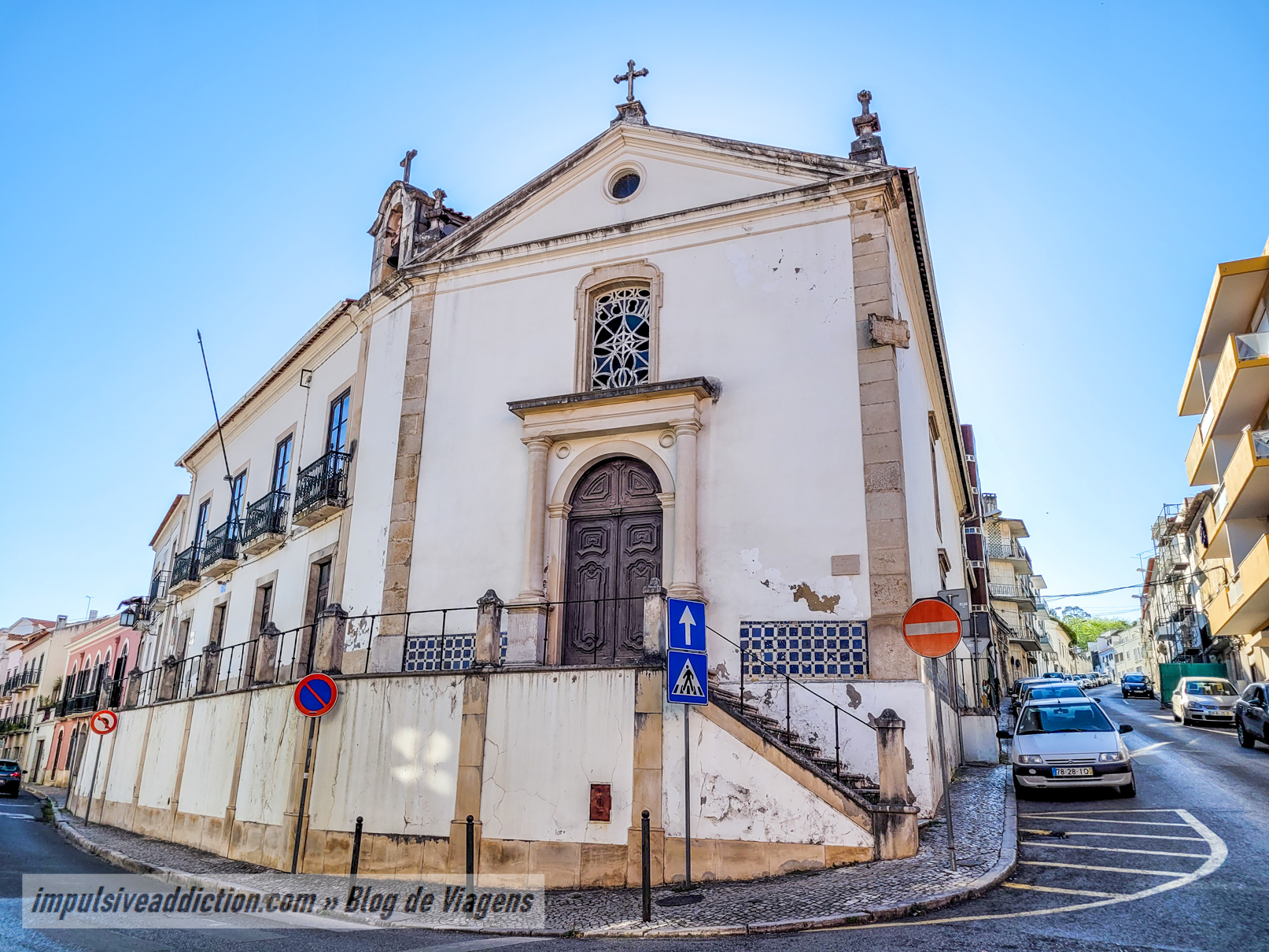
9. Alcobaça Castle
Alcobaça Castle is now just a cluster of ruins. It is said to have been built by the Goths, but nothing remains of that period. This castle was very important during the Christian reconquest and even served as a prison and also as a residence for the abbots of the monastery. It is, in fact, the best viewpoint in the city for the Monastery of Alcobaça itself. 😉
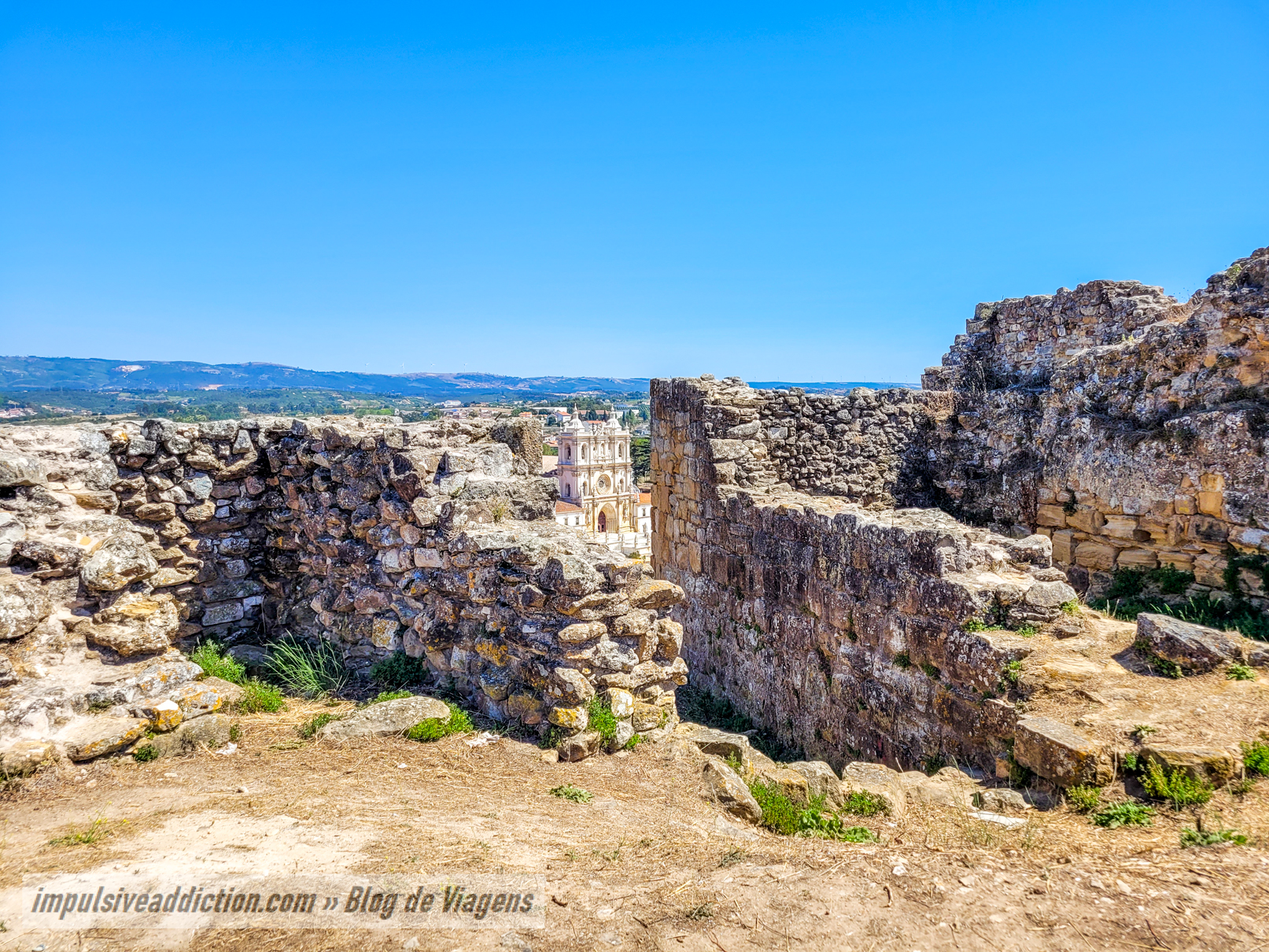
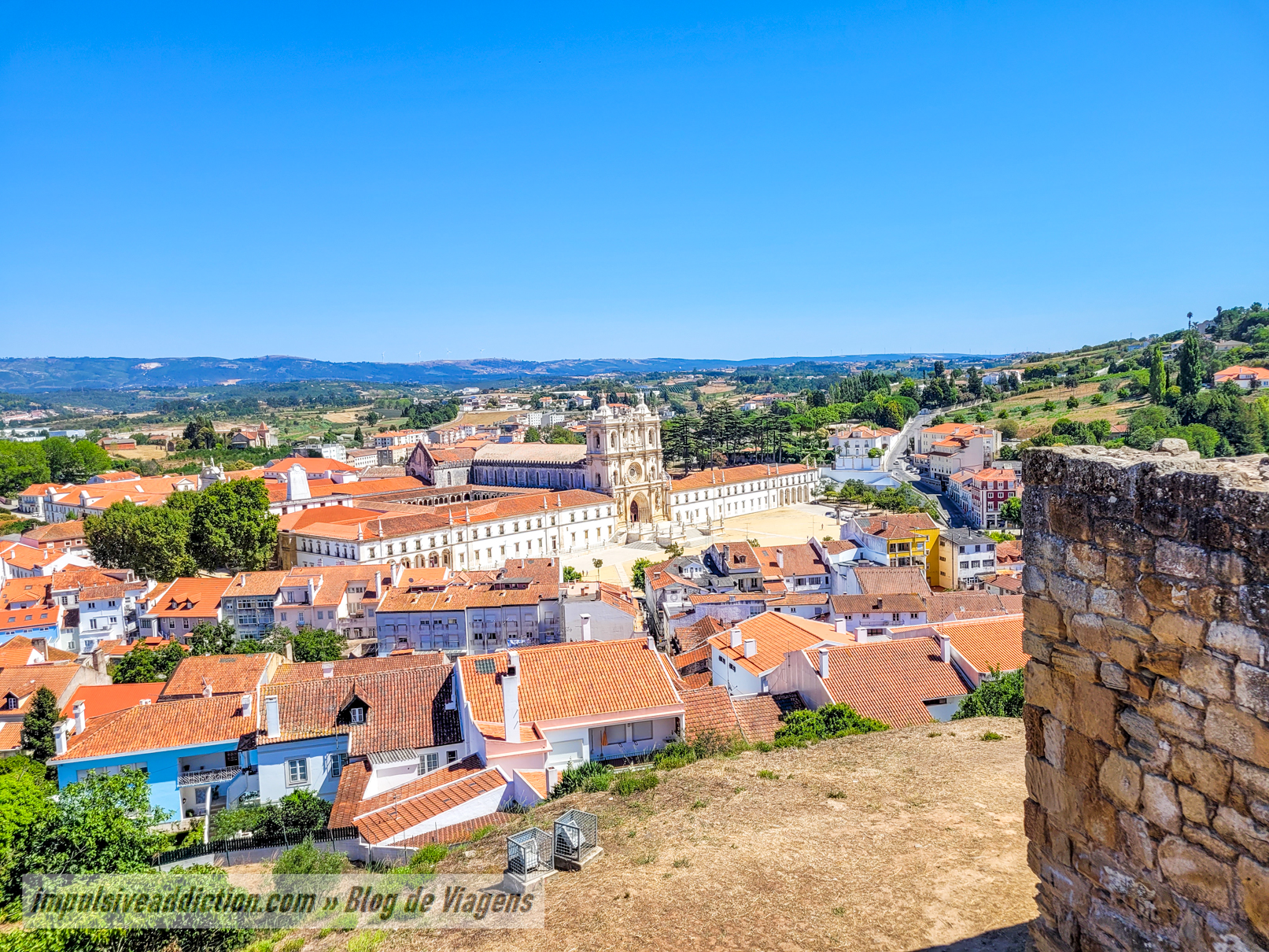
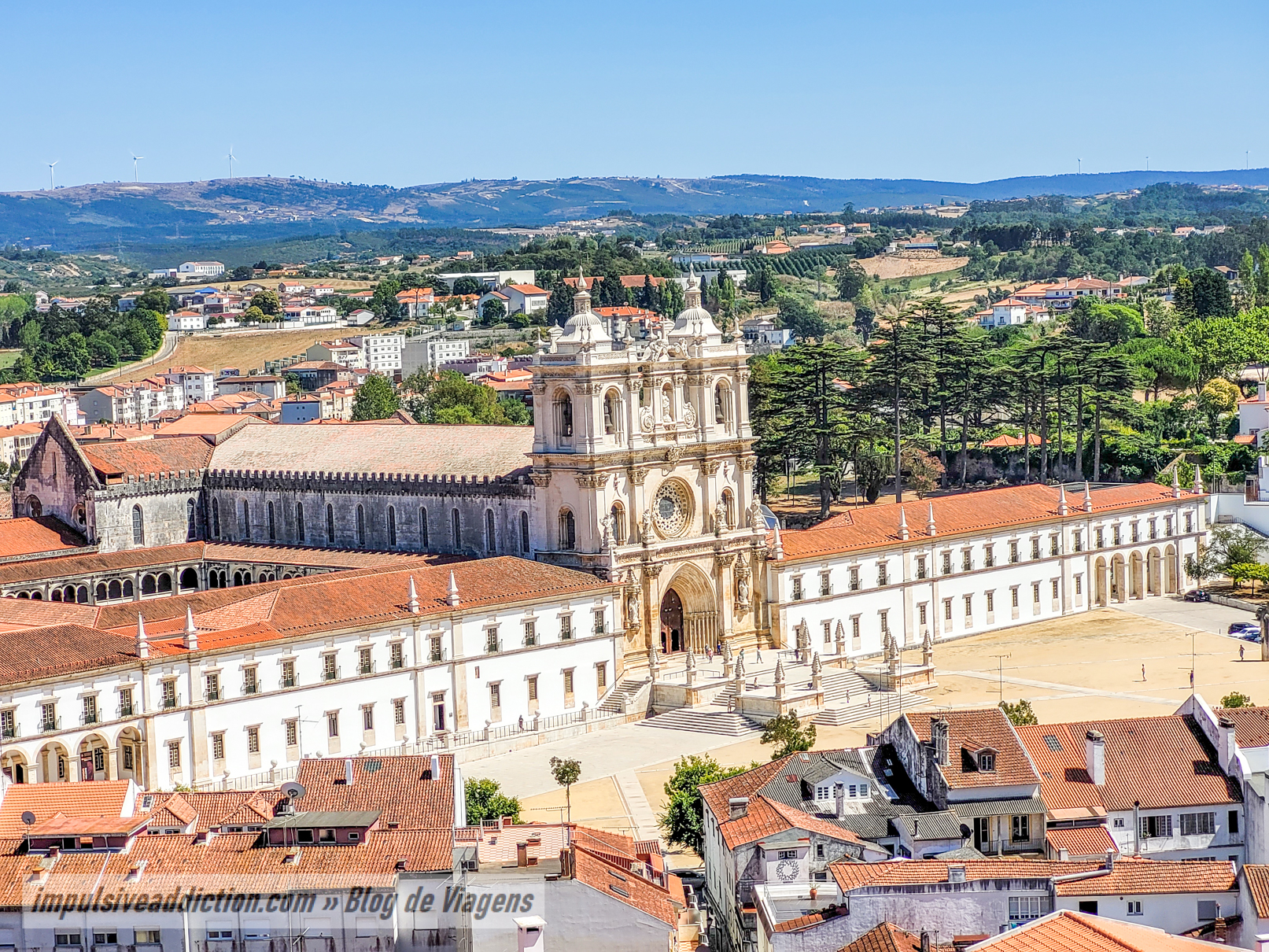
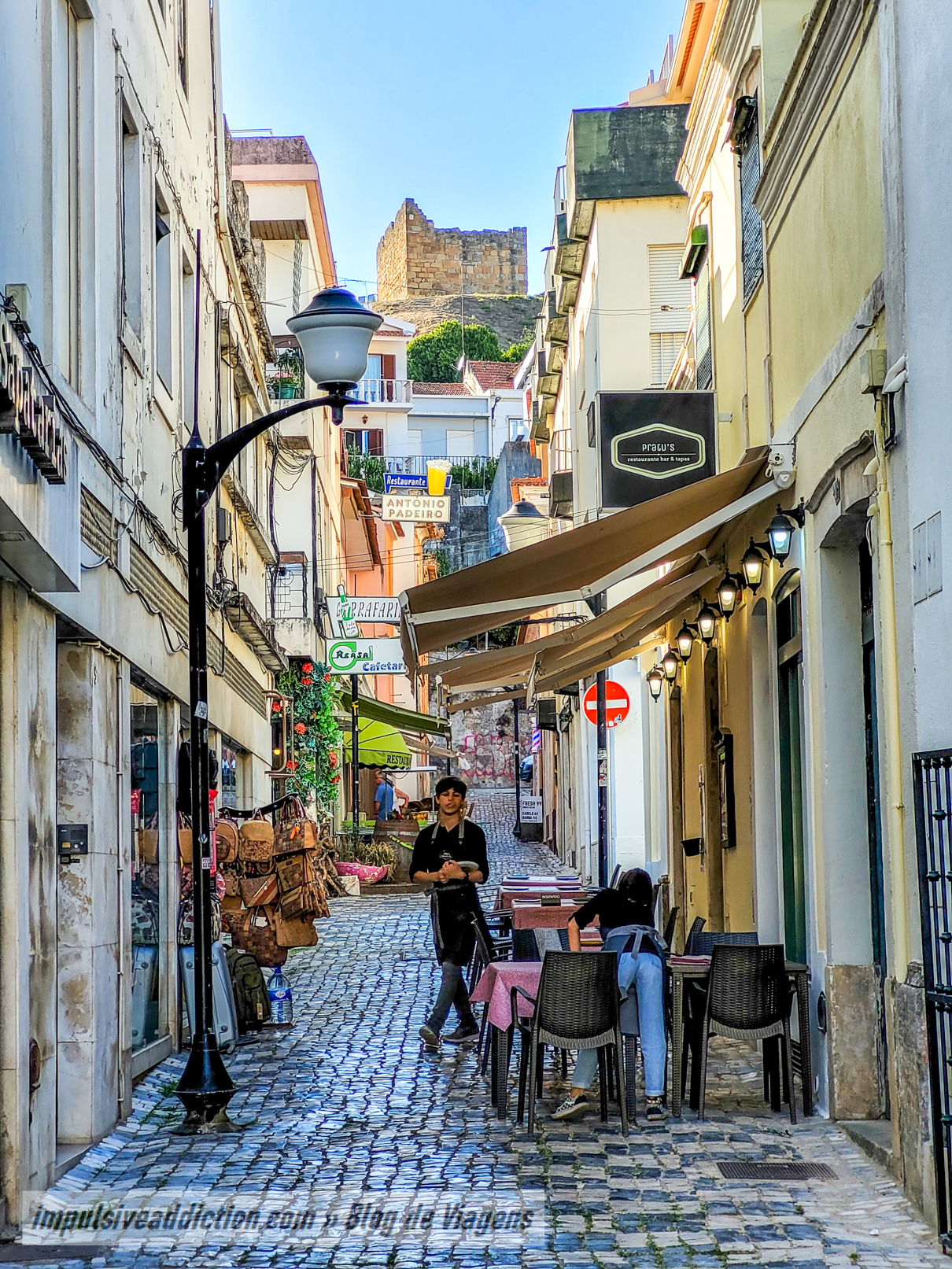
10. Alcobaça’s Rossio / 25th of April Square
Finally, head to Rossio de Alcobaça to visit the incredible UNESCO World Heritage monastery, but that’s not all. Alcobaça’s Rossio is undoubtedly the most central square in the whole city, and also the busiest, with lots of cafés, pastry shops and terraces where you can relax while admiring the imposing façade of the Monastery Church, extraordinarily decorated.
Also in Rossio Square is Alcôa Pastry Shop, already mentioned in this article, which I really recommend you visit to try the best convent sweets in the region. I’ll mention it again: cornucopias, crowns of the abbess, among others.
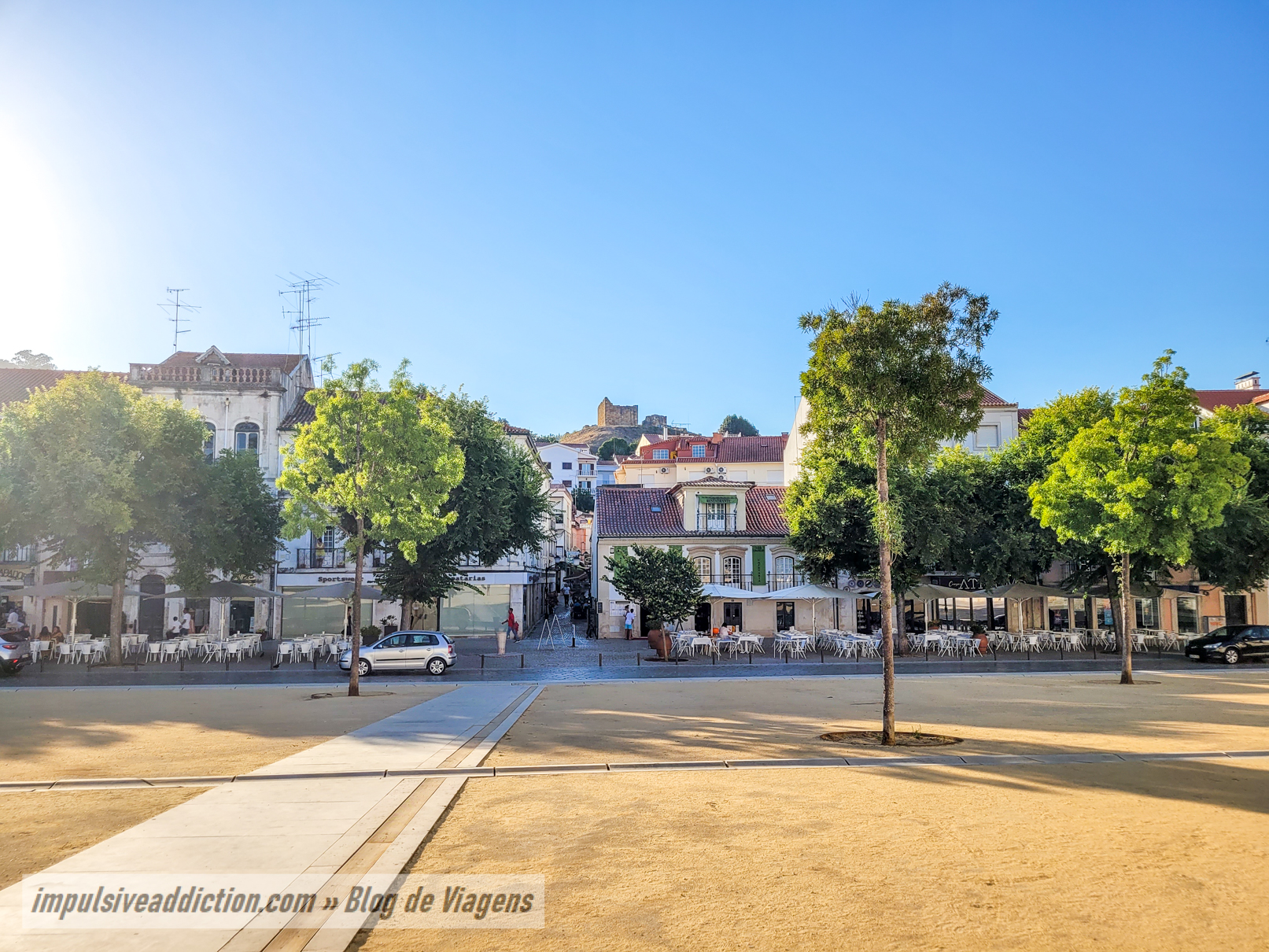
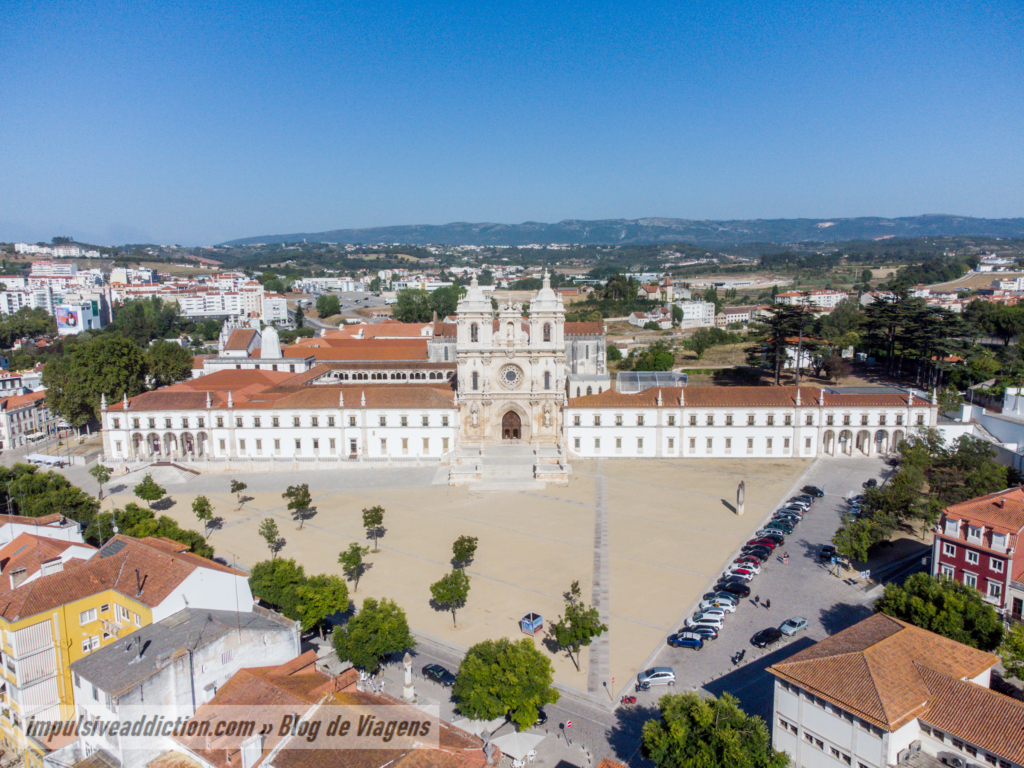
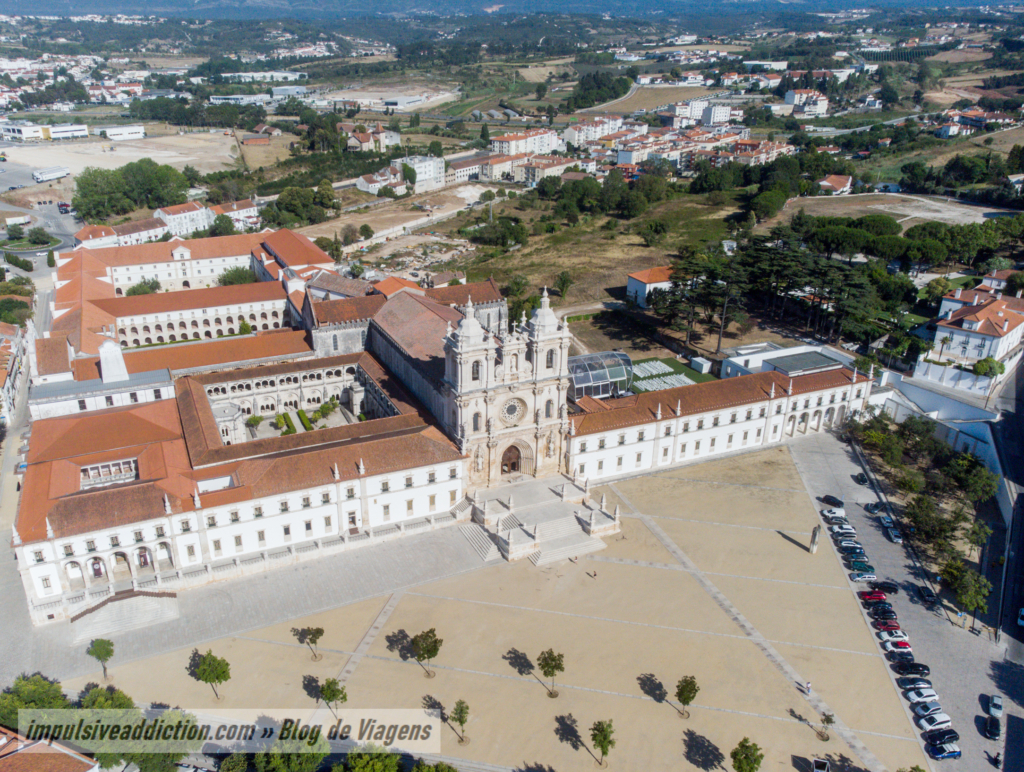
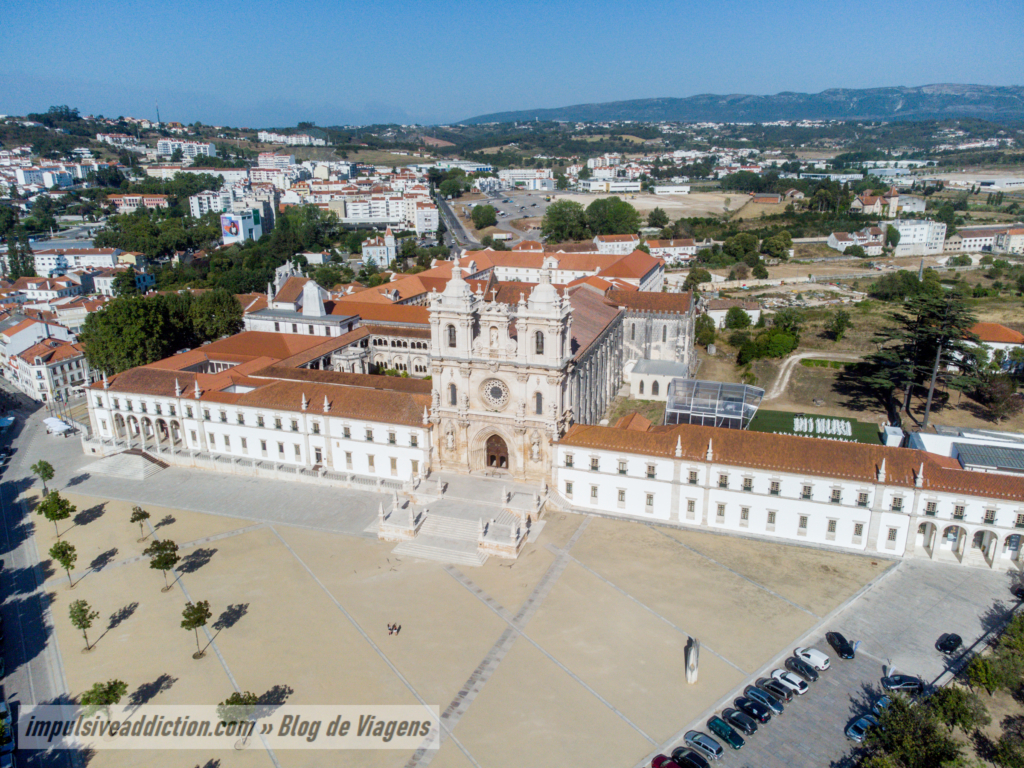
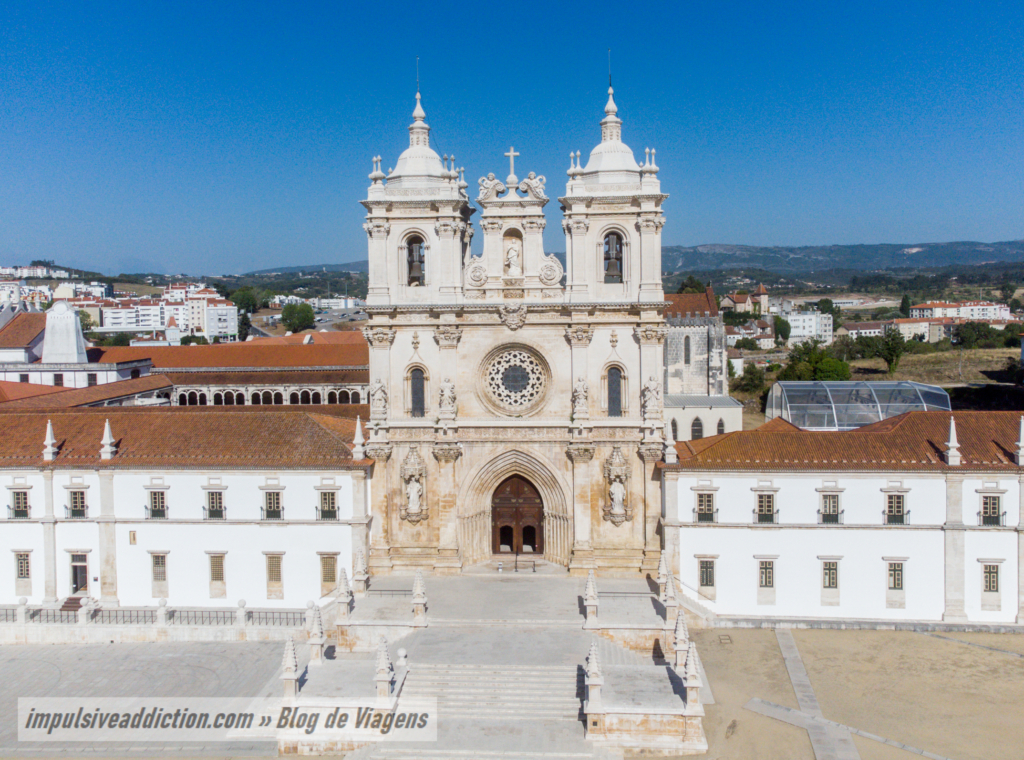
11. Monastery of Santa Maria de Alcobaça
The history of the Monastery of Alcobaça dates back to the 12th century, when it was founded by King Afonso Henriques, the first king of Portugal. At that time, the church, which would be the largest in the country and one of the largest of the Cistercian order, was built entirely in Gothic style, with the rose window and portico surviving to this day. This church was altered at the beginning of the 18th century with Baroque elements, and its various statues stand out: of the Cardinal Virtues, the Virgin Mary, Saint Bernard and Saint Benedict.
Inside the monastery, you have to spend a long time admiring the tombs of Pedro and Inês de Castro, whose tragic love story I described in detail when I wrote about what to do in Coimbra, specifically in Quinta das Lágrimas section, where Inês was allegedly murdered. The tombs face each other, so that the dead can meet again immediately, on the day of the resurrection.
Don’t forget the other areas of the monastery, such as the Refectory, the Dormitory, the Chapter Room, the Cloister of King Dinis, the Kitchen, the Sacristy, the Kings’ Room and the Chapel of Our Lady of the Exile. I’m sure you’ll be impressed by all the details in which the Gothic and Baroque blend.
As far as tickets and timetables are concerned, check the official website for the monastery. There are also combined tickets for other UNESCO monuments in the region, namely the Batalha Monastery and the Convent of Christ in Tomar.
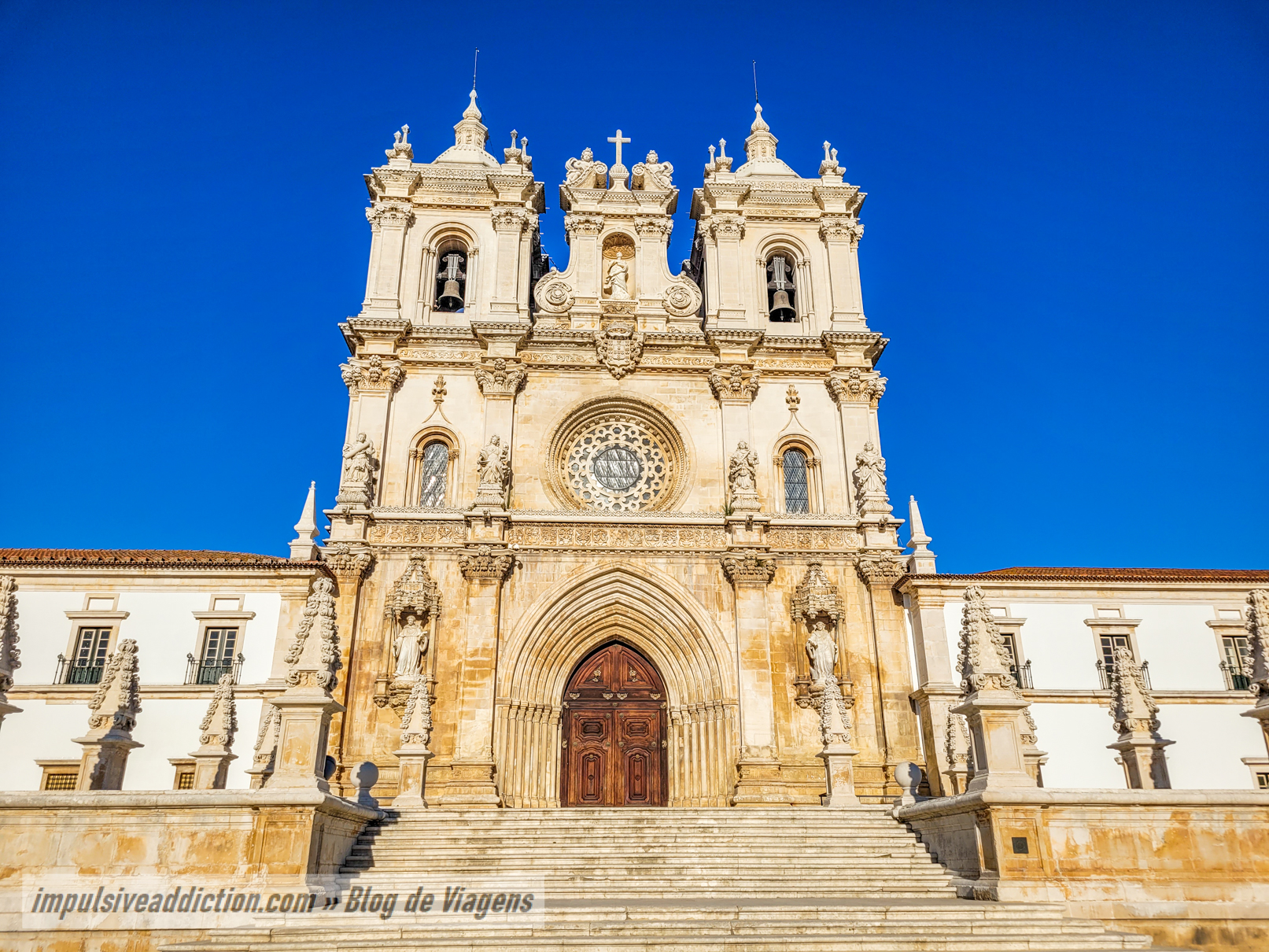
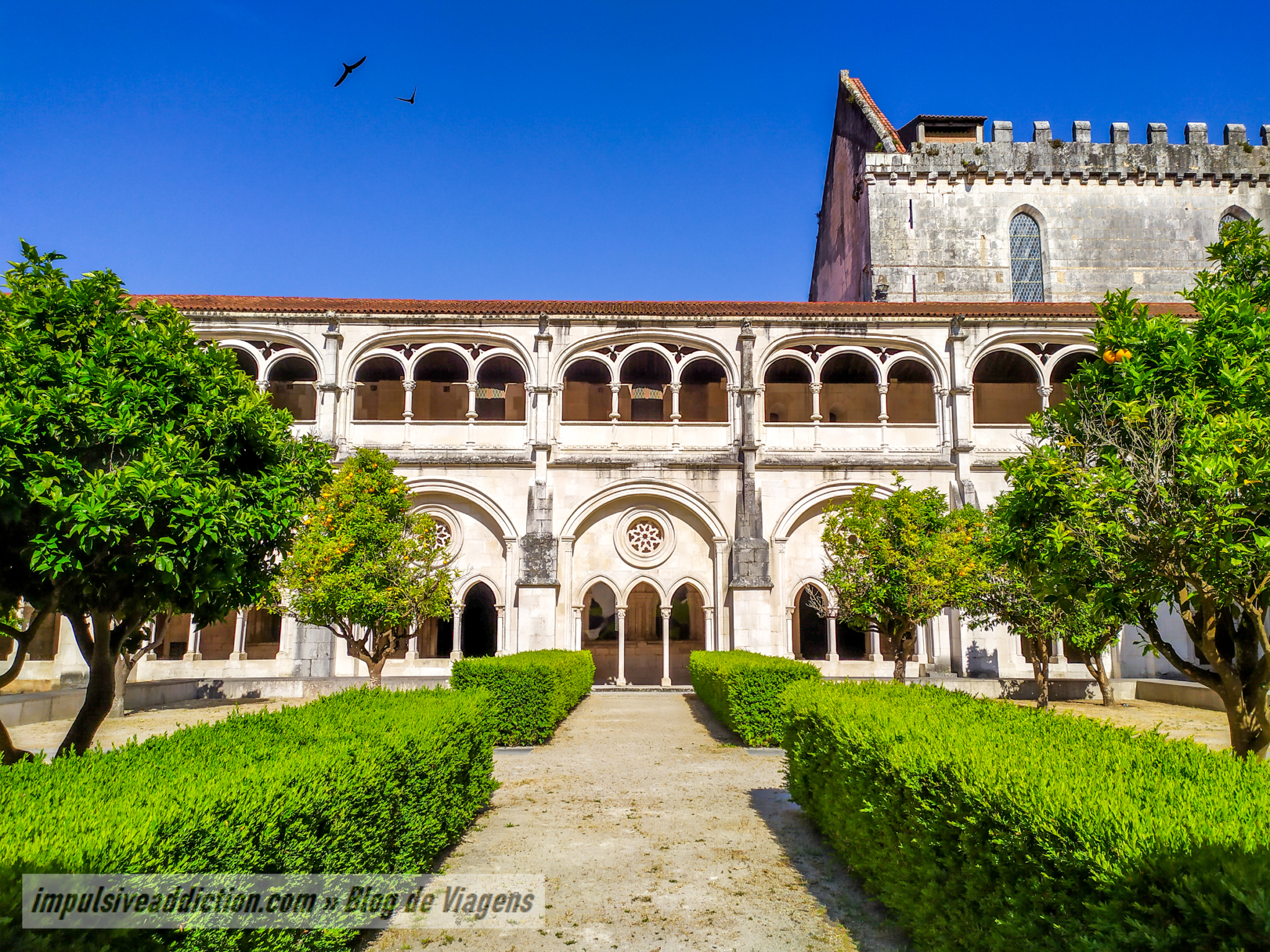
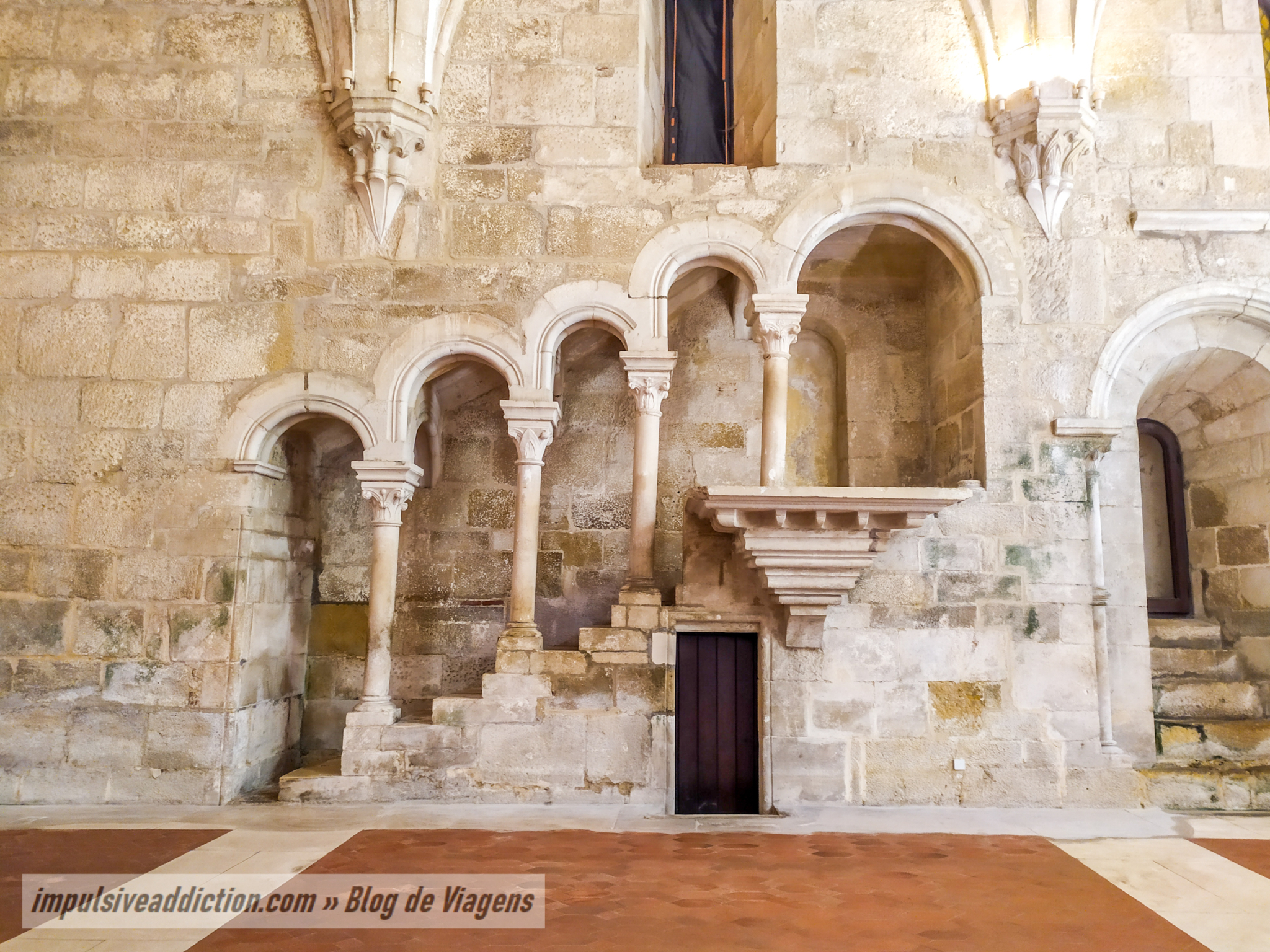
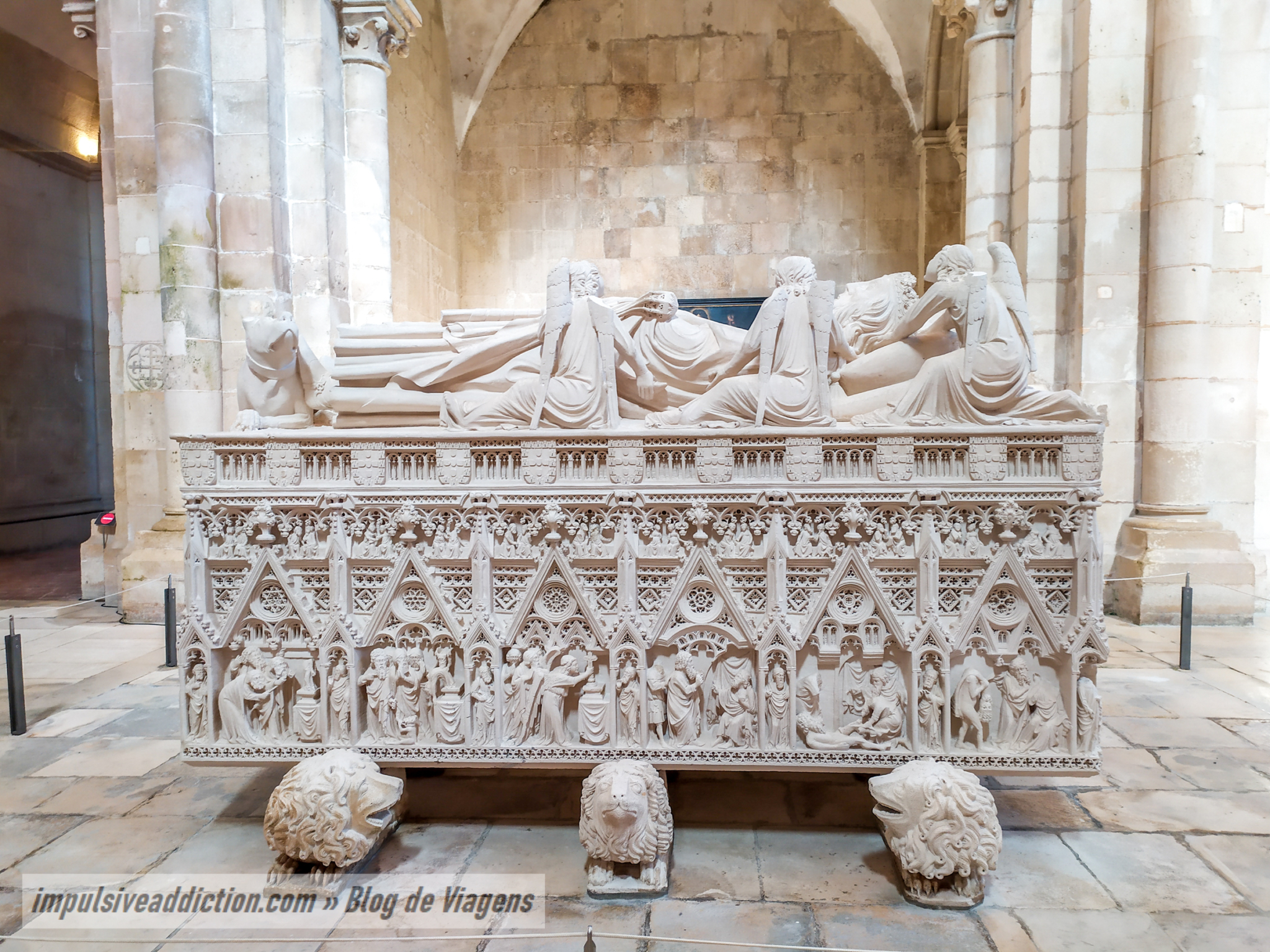
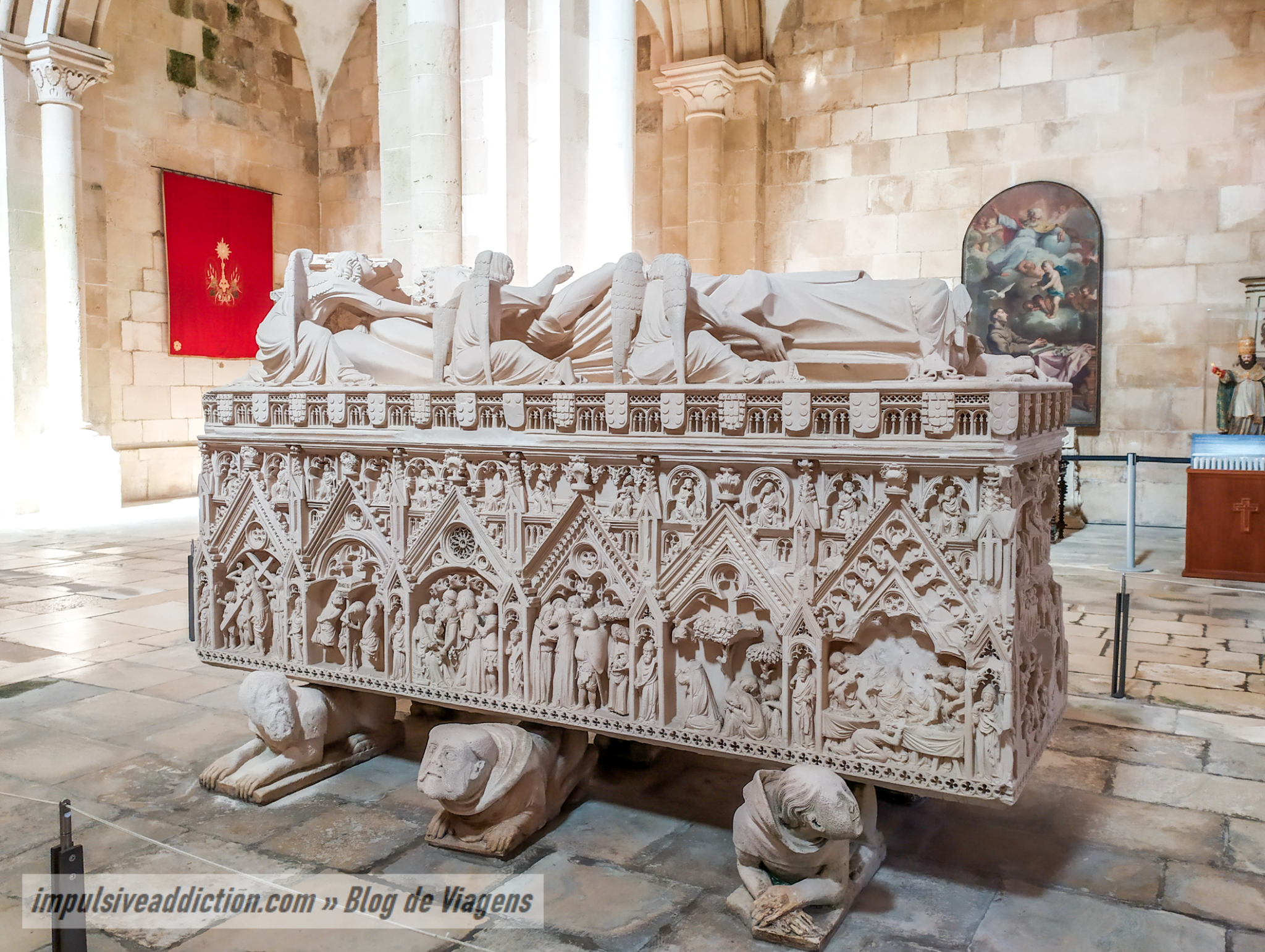
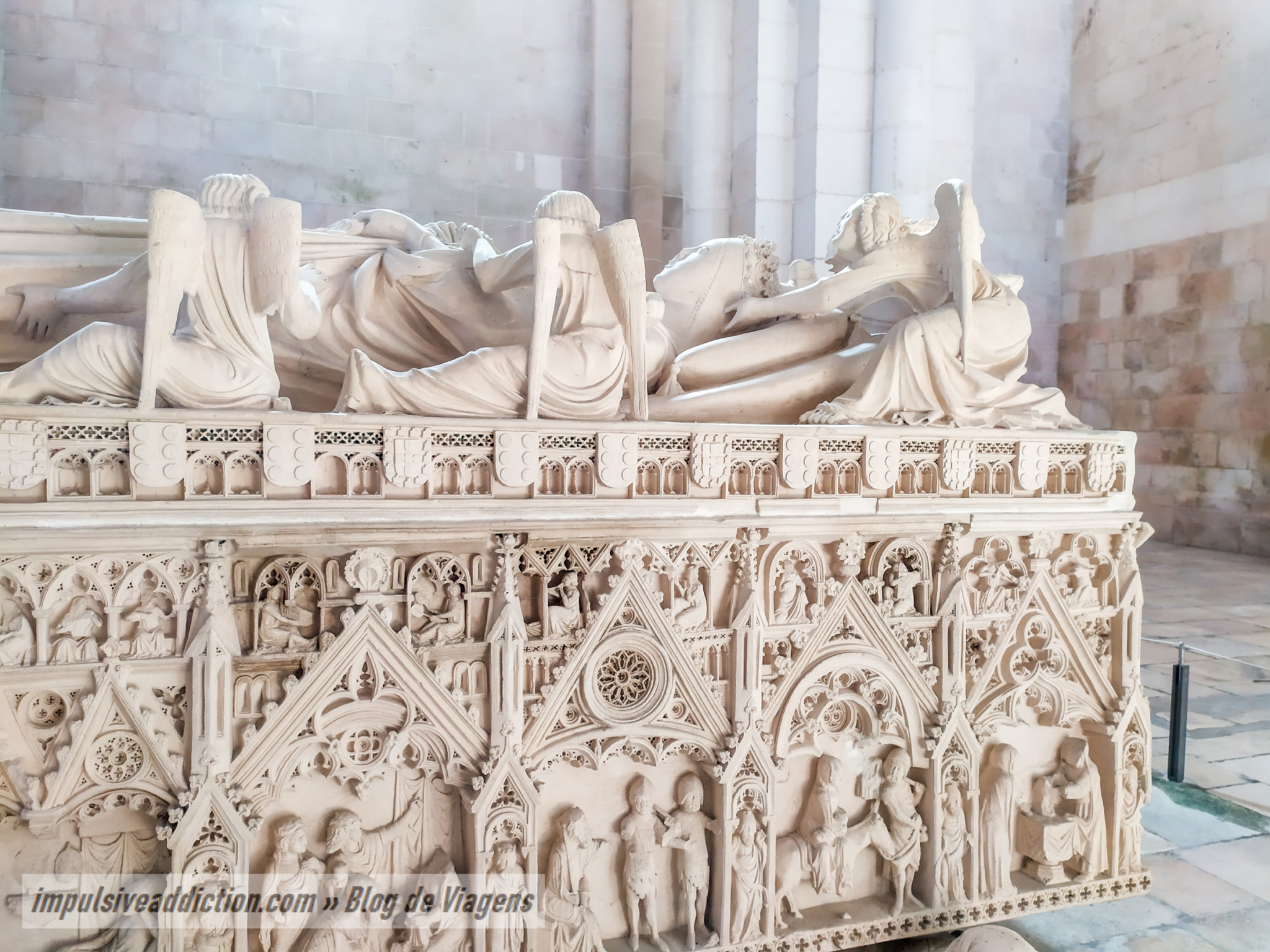
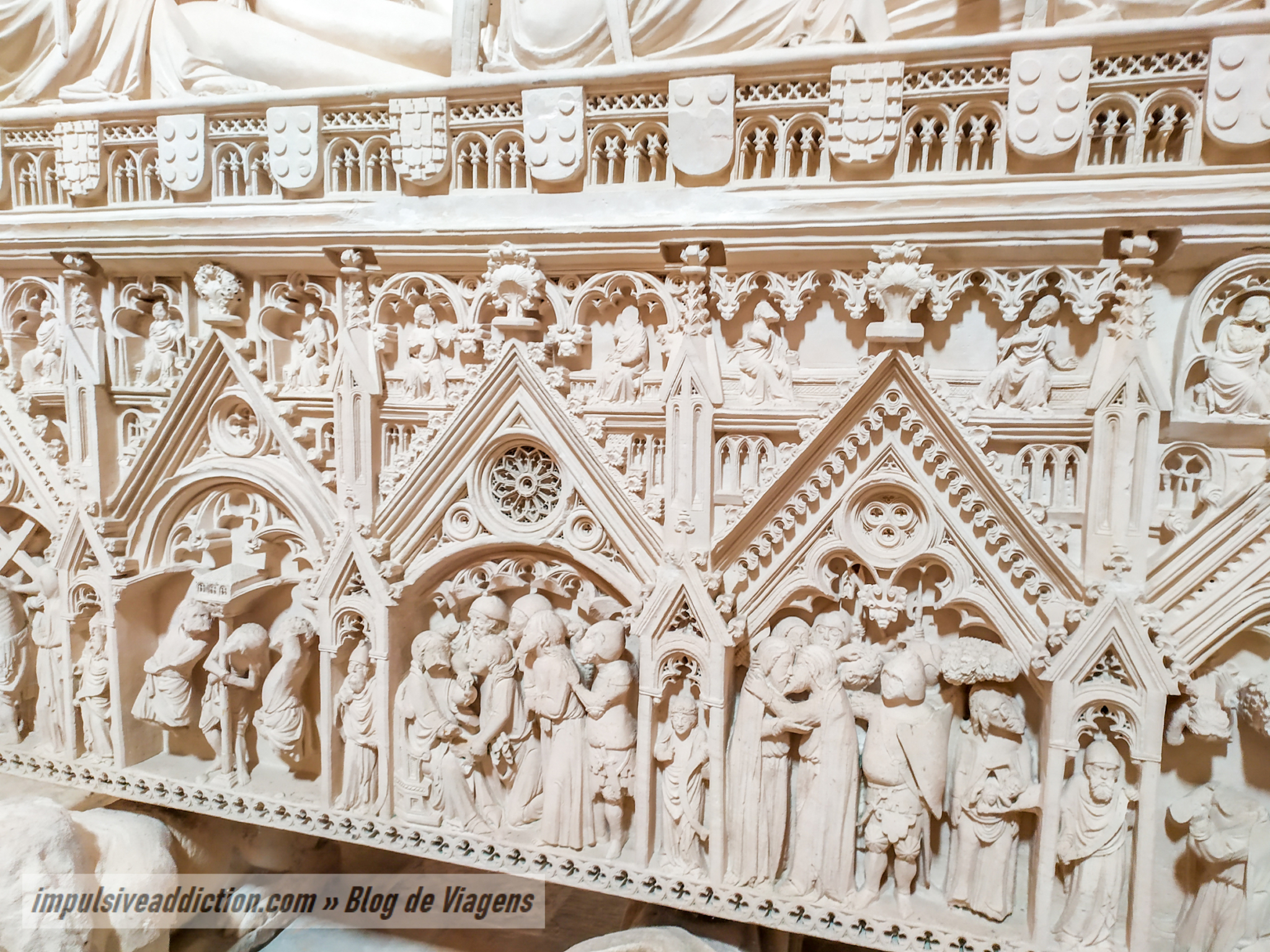
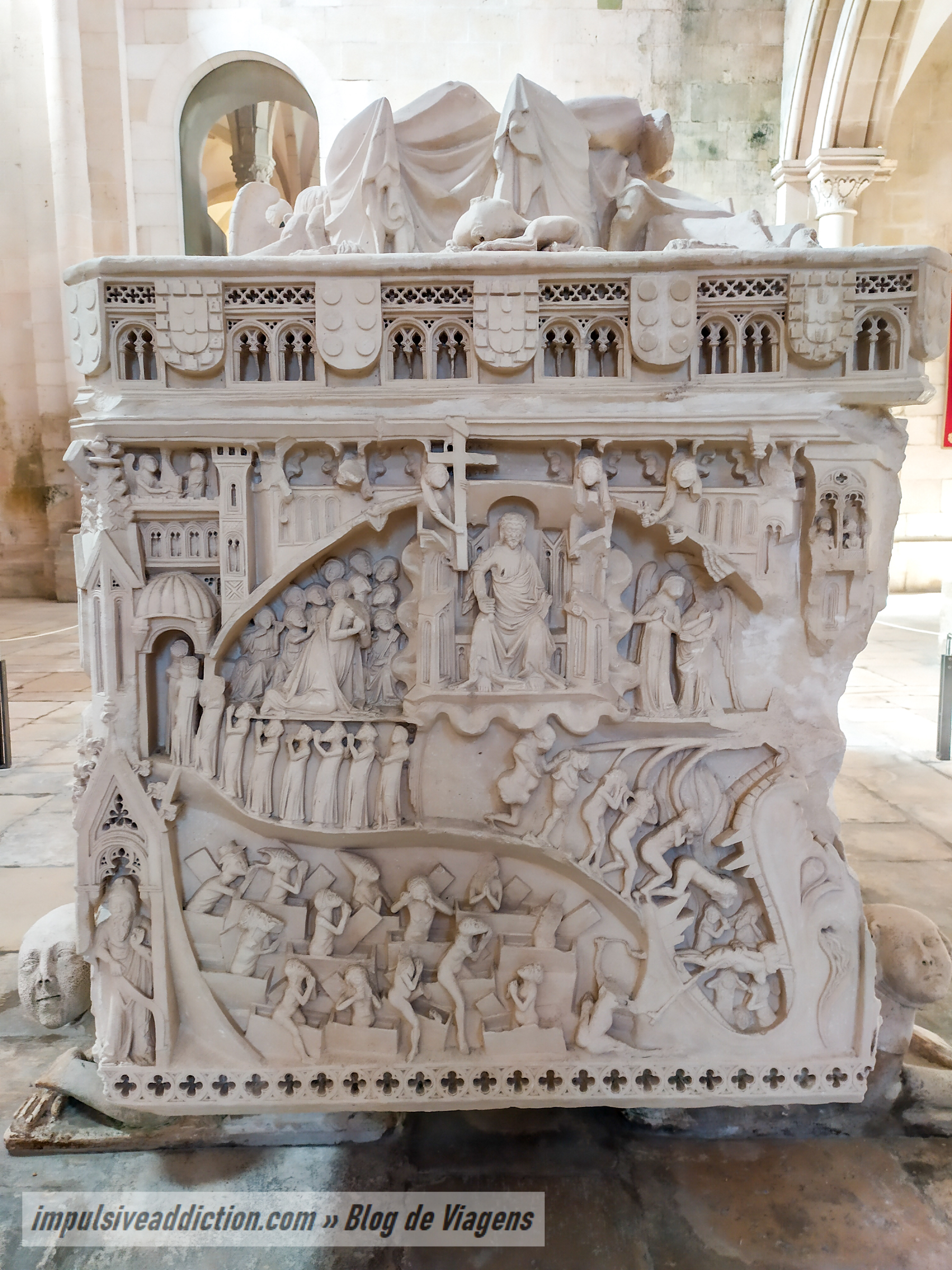
12. Alcobaça Green Park
Having almost finished visiting the center of Alcobaça, I recommend that you return to your car and take it to Green Park. Take a walk there, along the banks of river Alcôa, and learn about the past of that place as part of the drinking water route to the Monastery of Alcobaça from Chiqueda. The transportation was done through underground channels, but here the aqueduct would be visible on the surface.
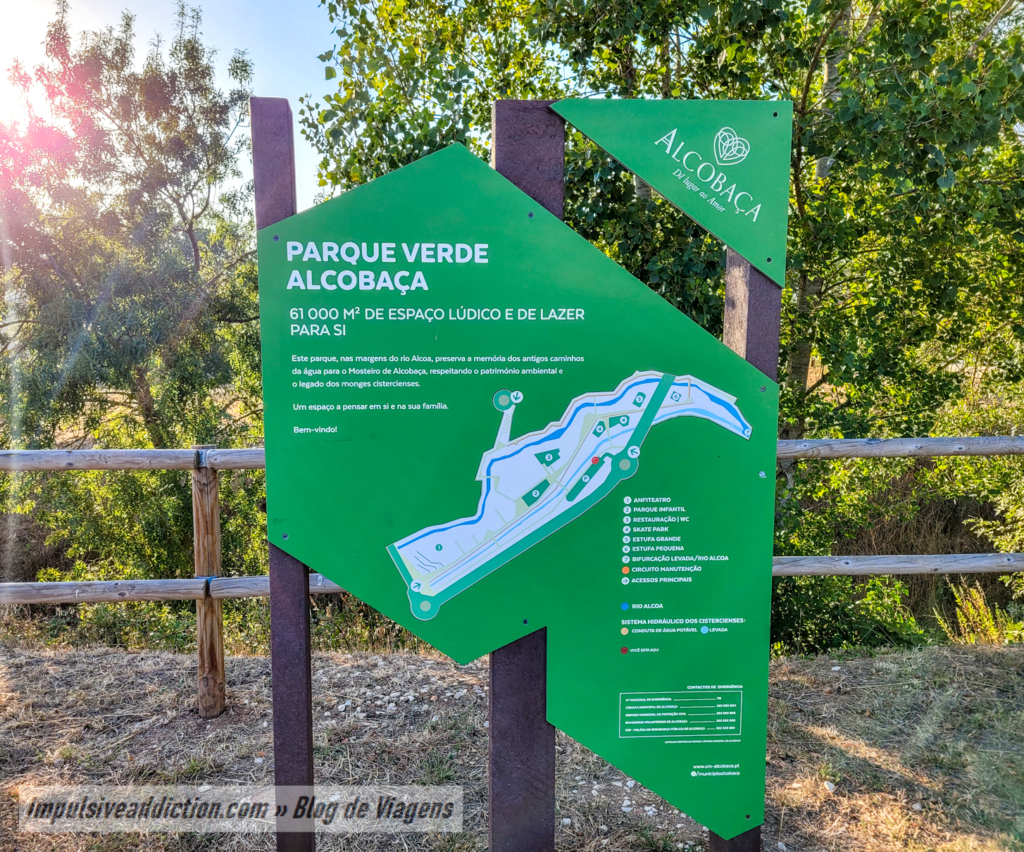
13. Alcobaça Wine Museum
The Alcobaça Wine Museum is the last point I identify near the historic center of the city, and it is the largest and most complete Portuguese wine museum, with a total of more than 10,000 pieces on display.
It is located in the Cellars of Olival Fechado, which were built in Alcobaça at the end of the 19th century. You can visit it and marvel at its old industrial wine tanks and the equipment used in its production process. The tour is guided and the price includes a wine tasting at the end. How about buying some souvenir bottles, like I did? 😉
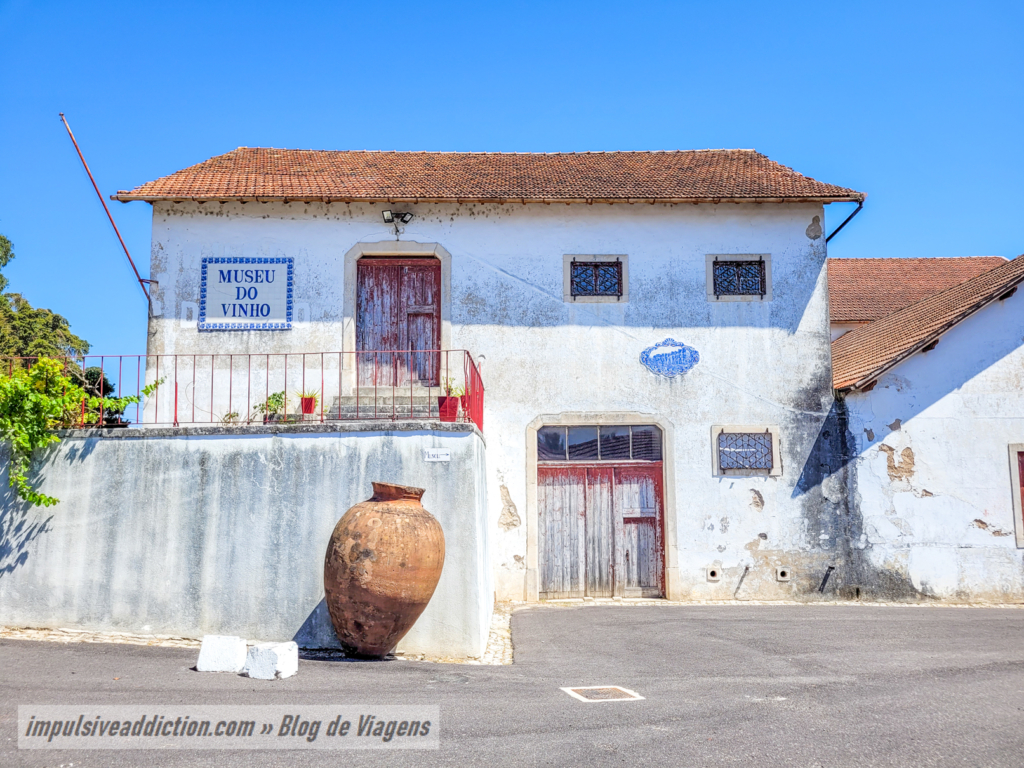
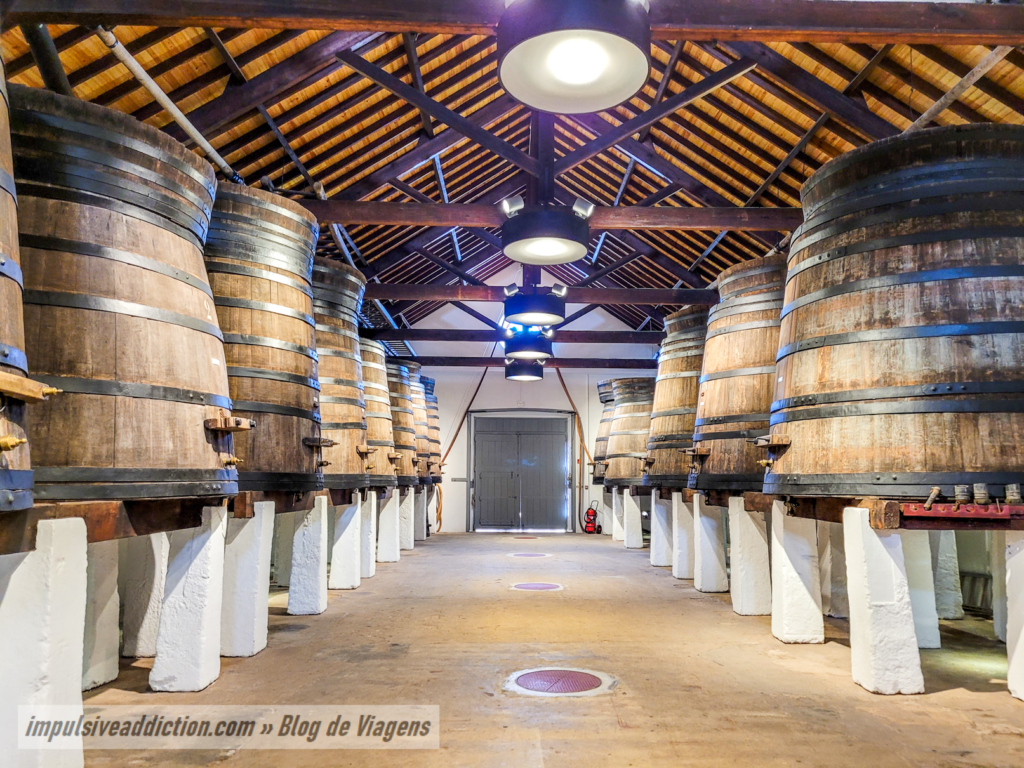
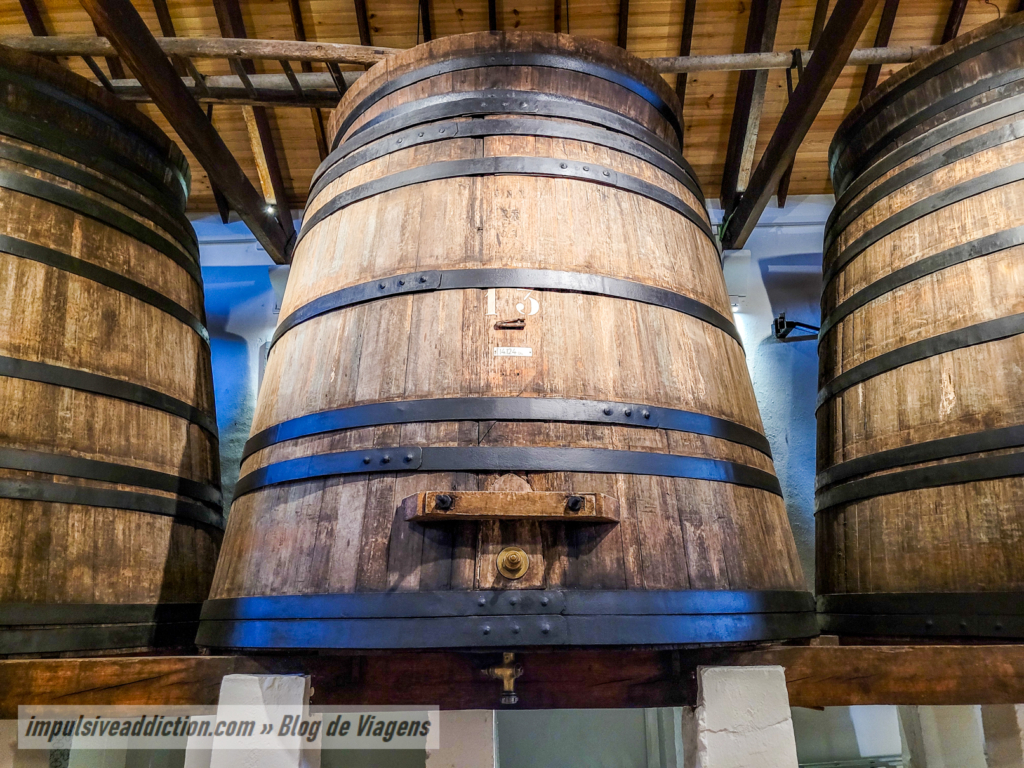
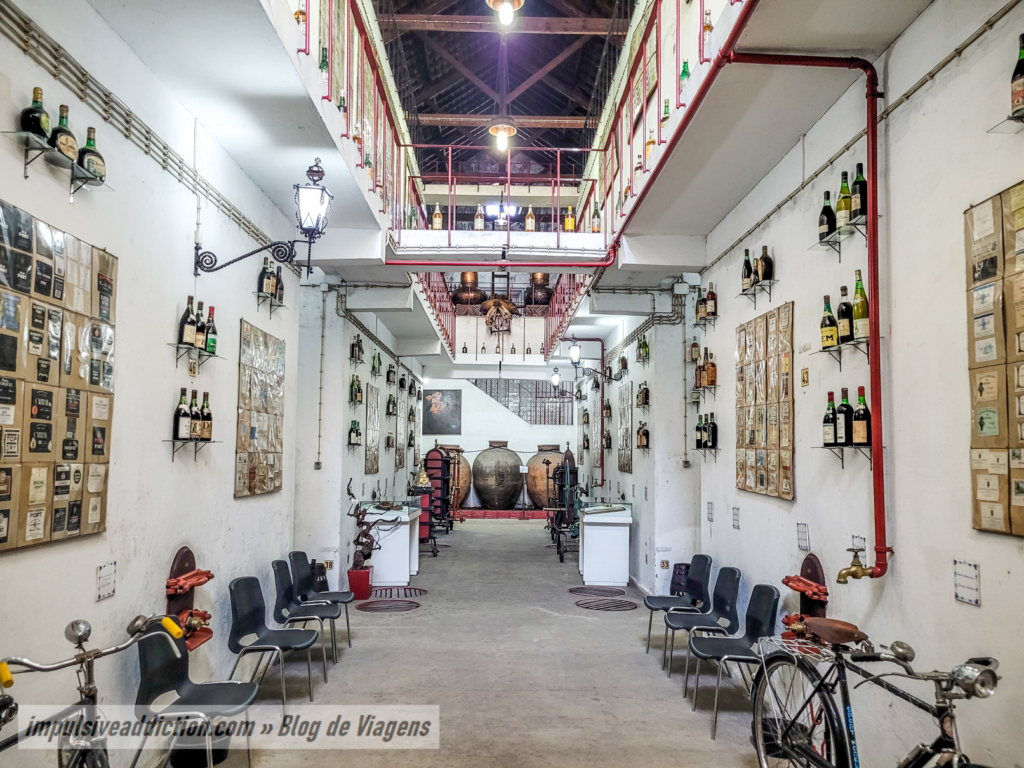
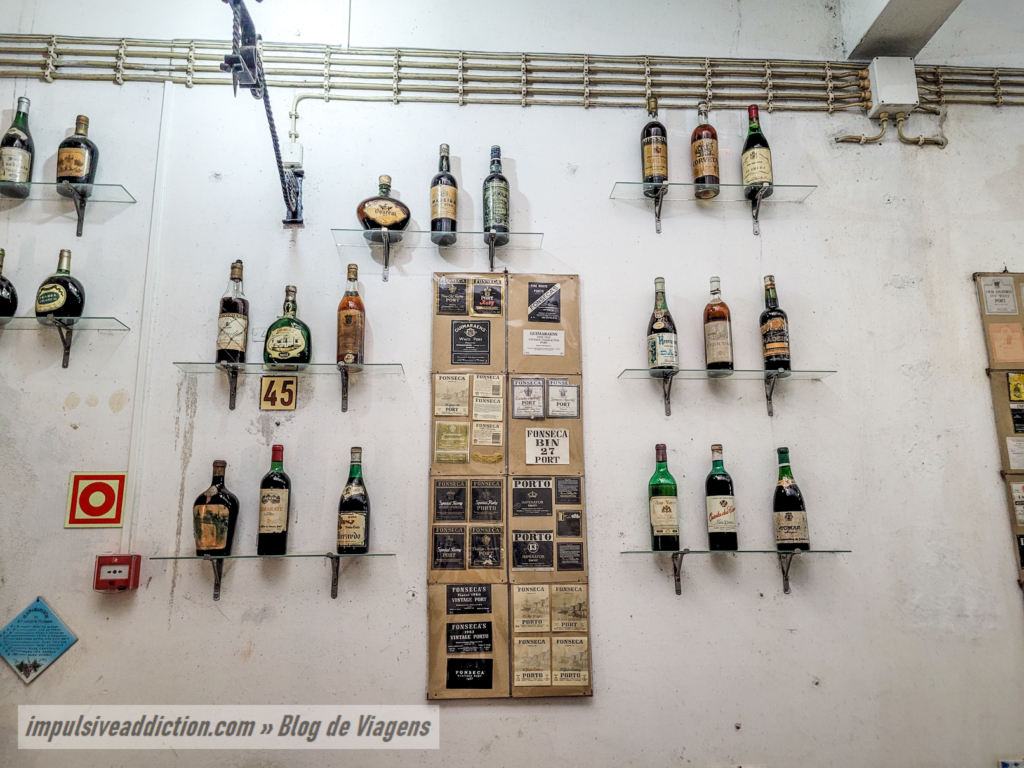
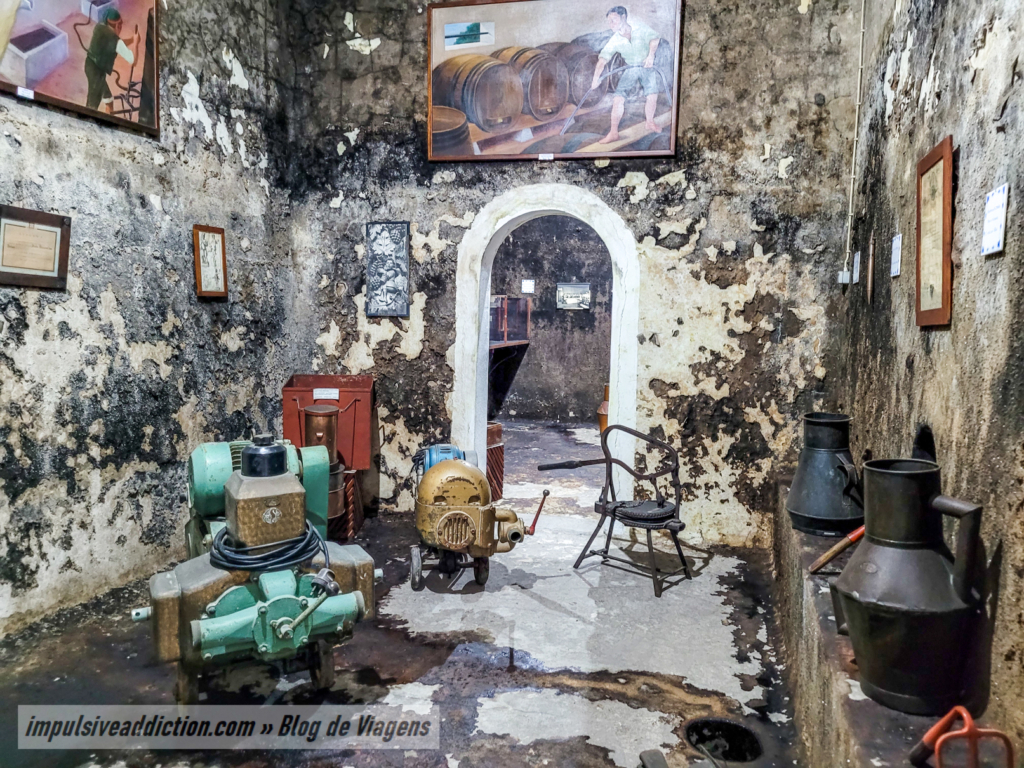
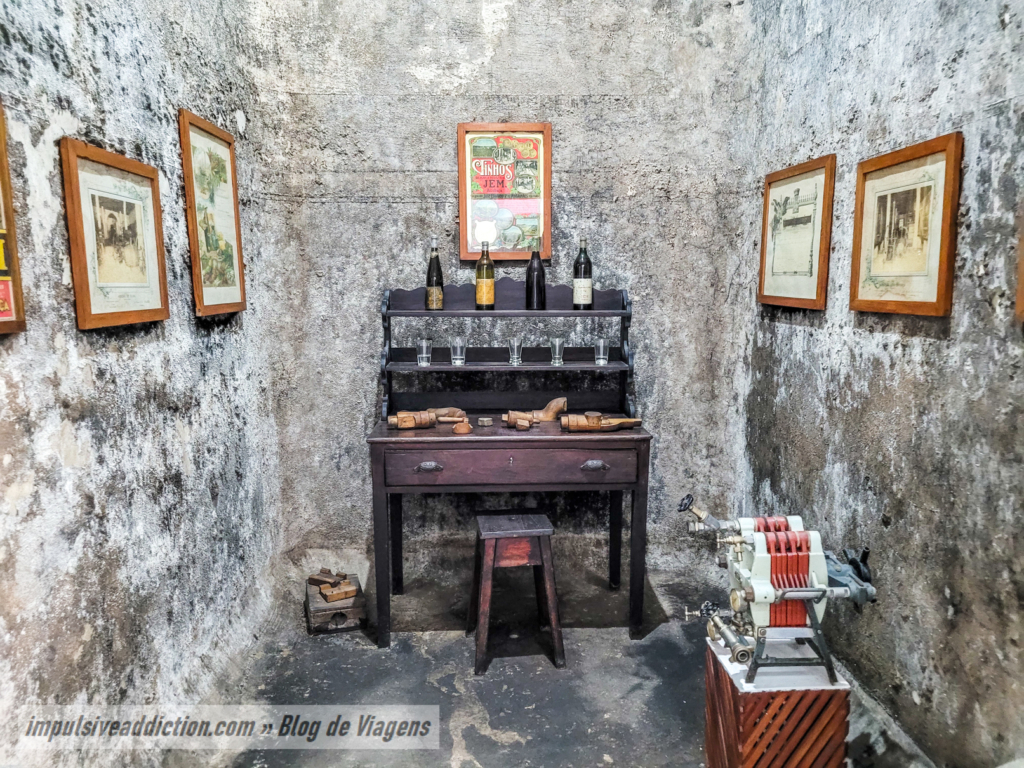
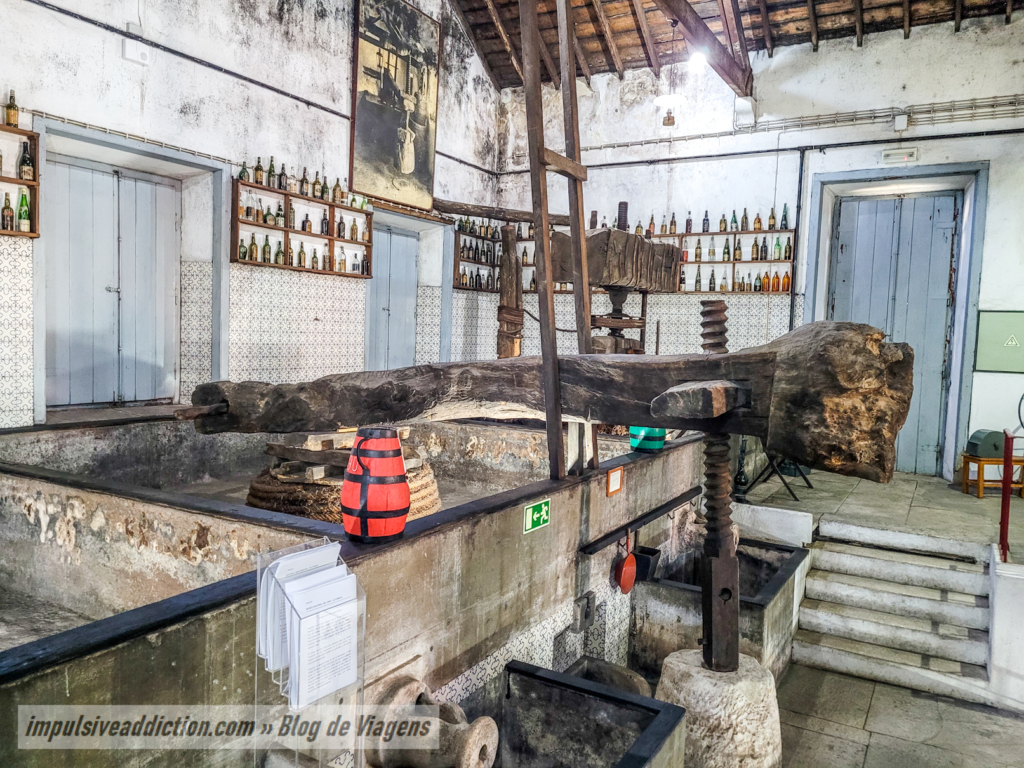
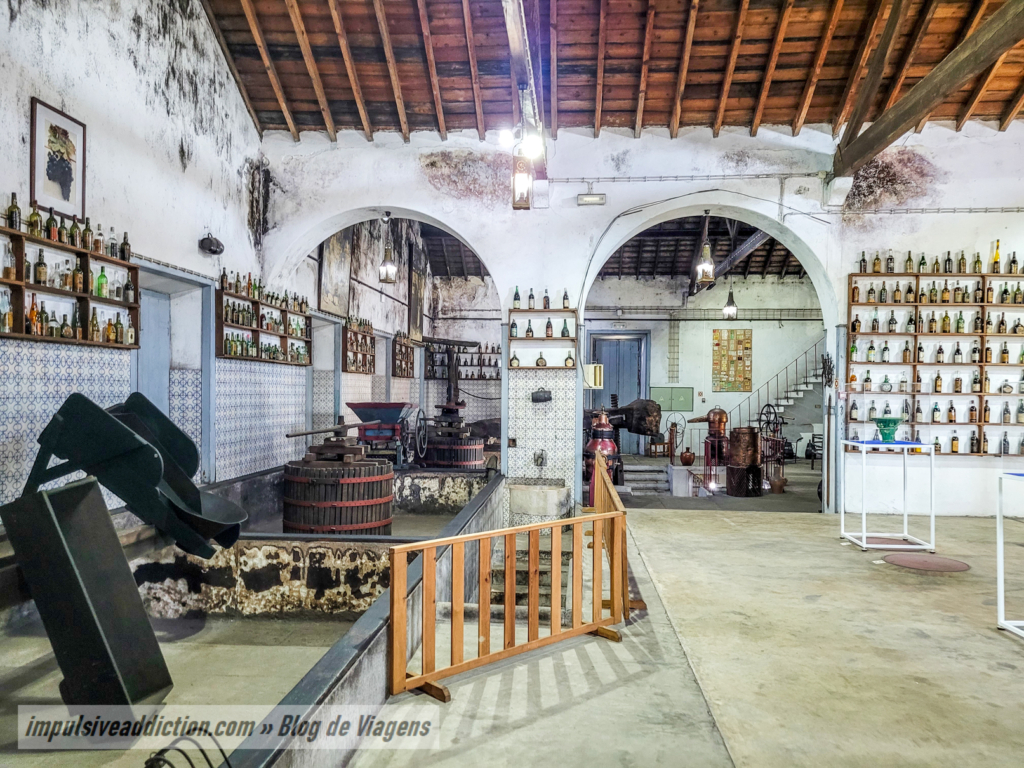
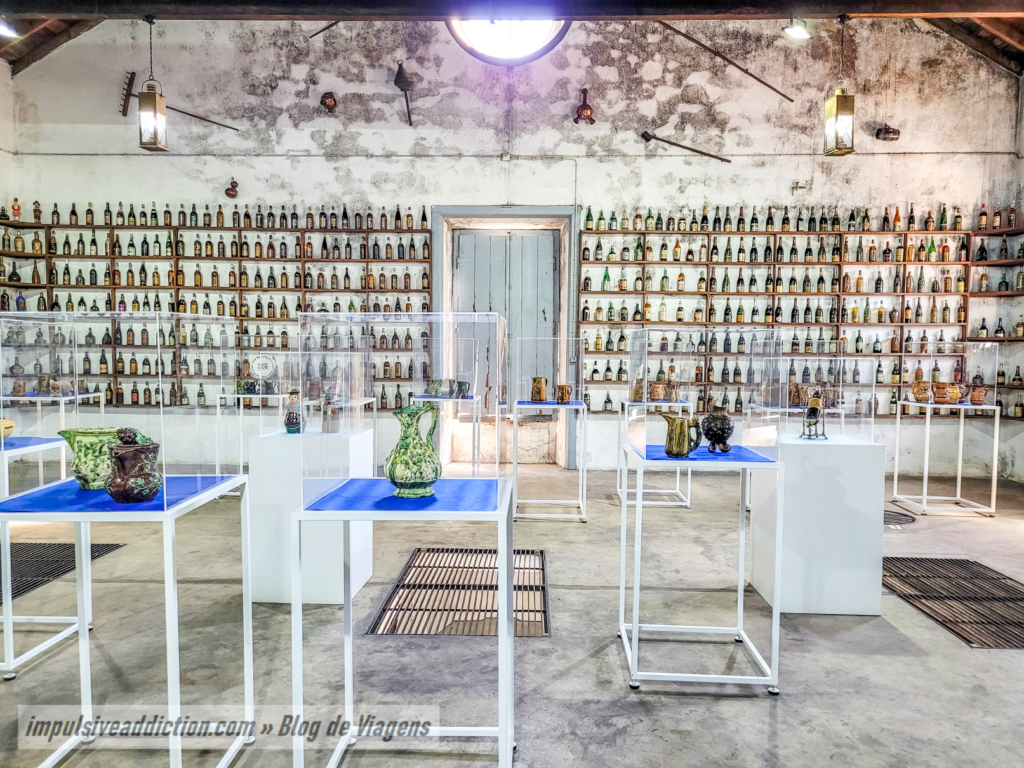
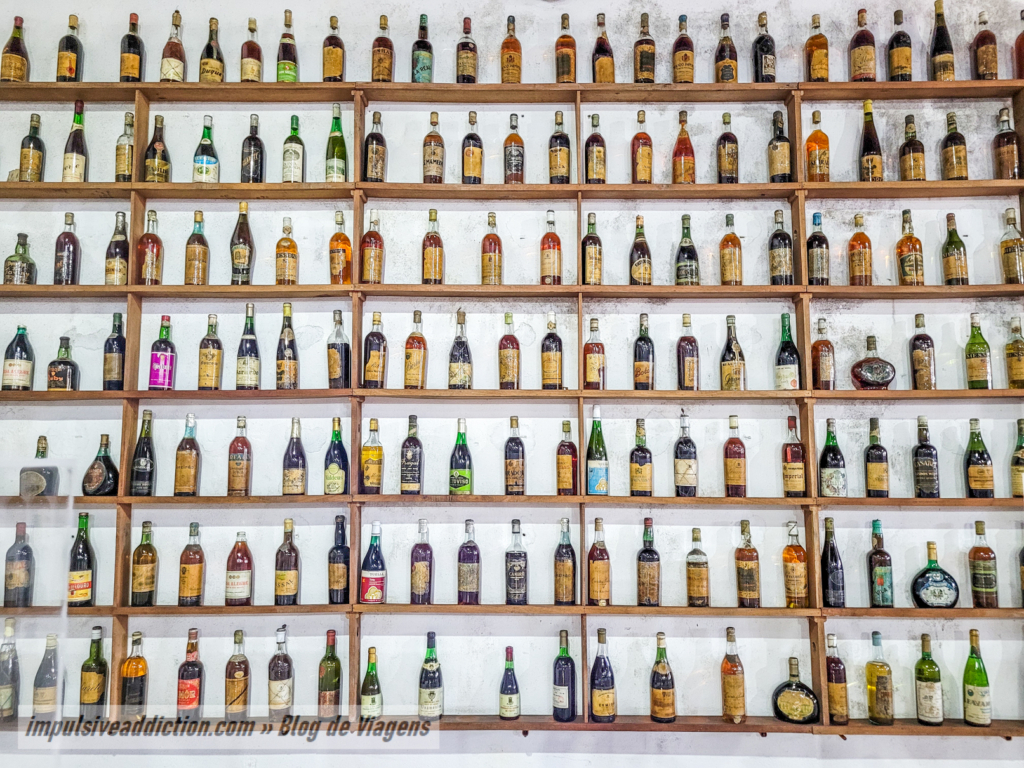
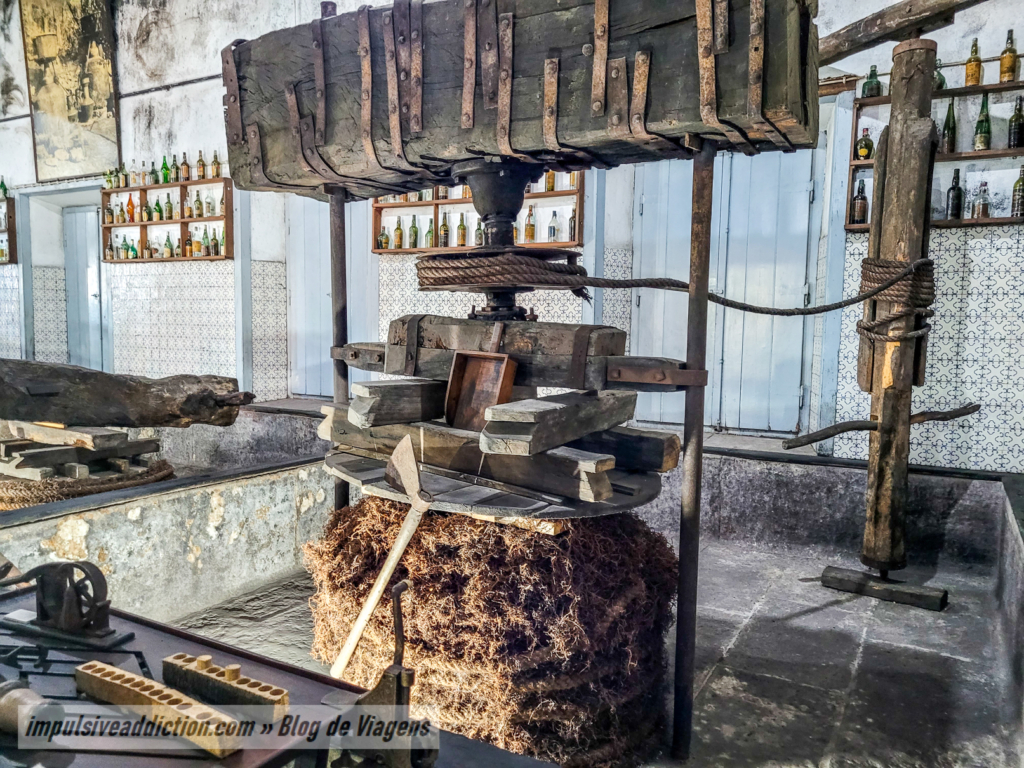
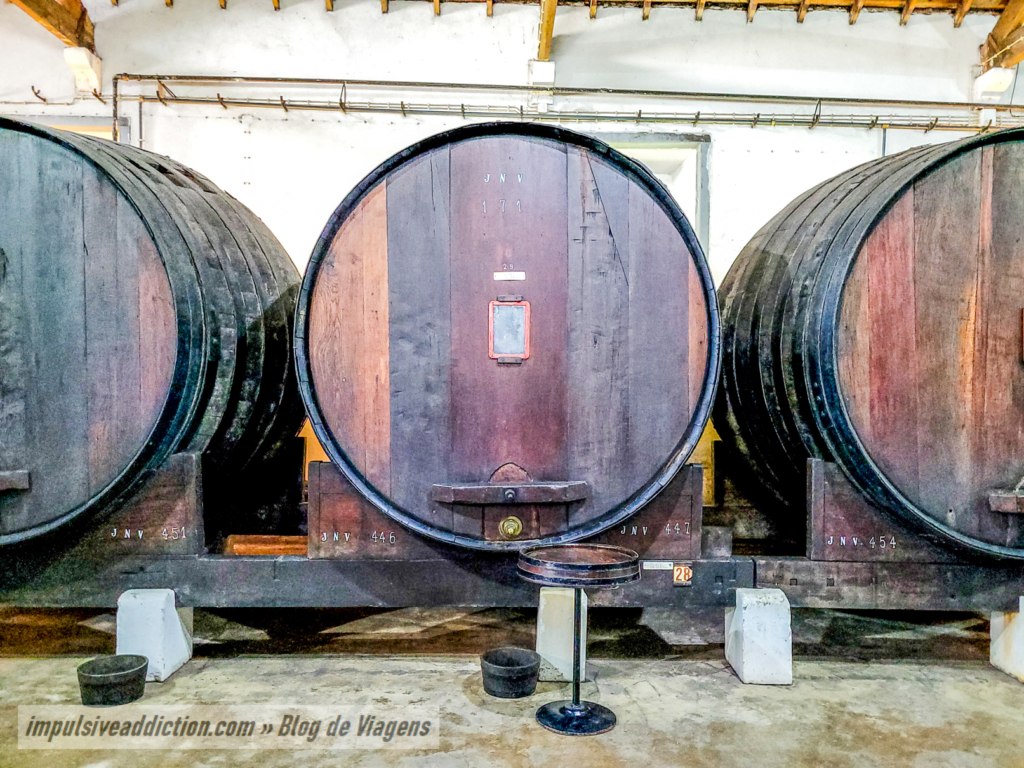
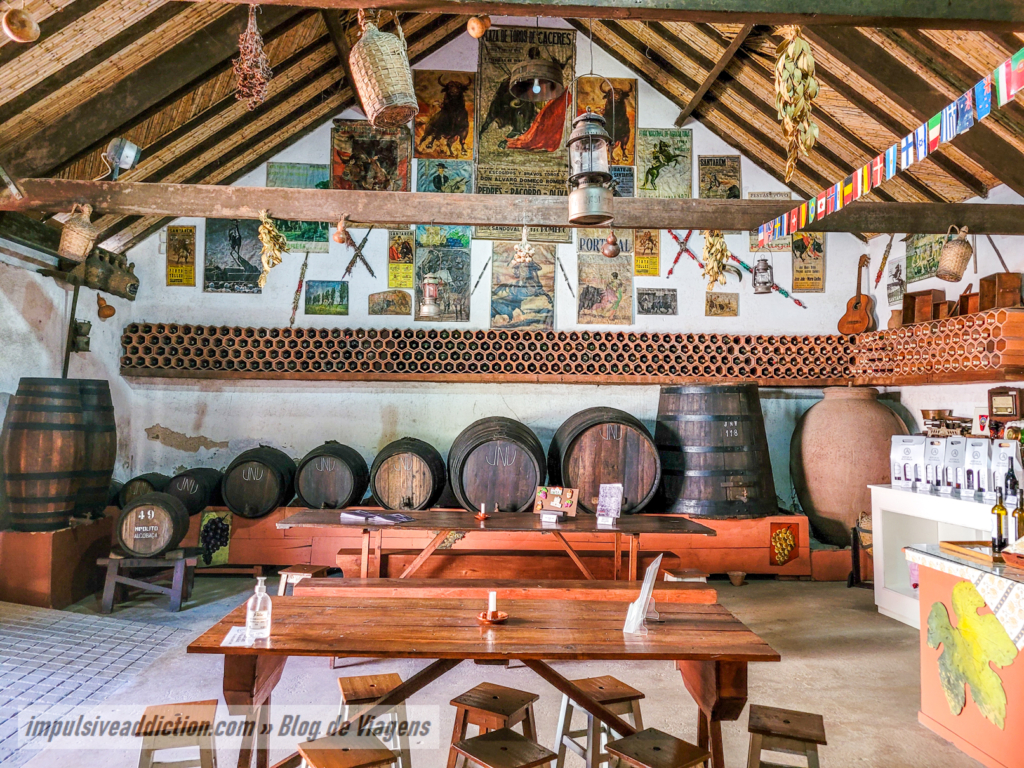
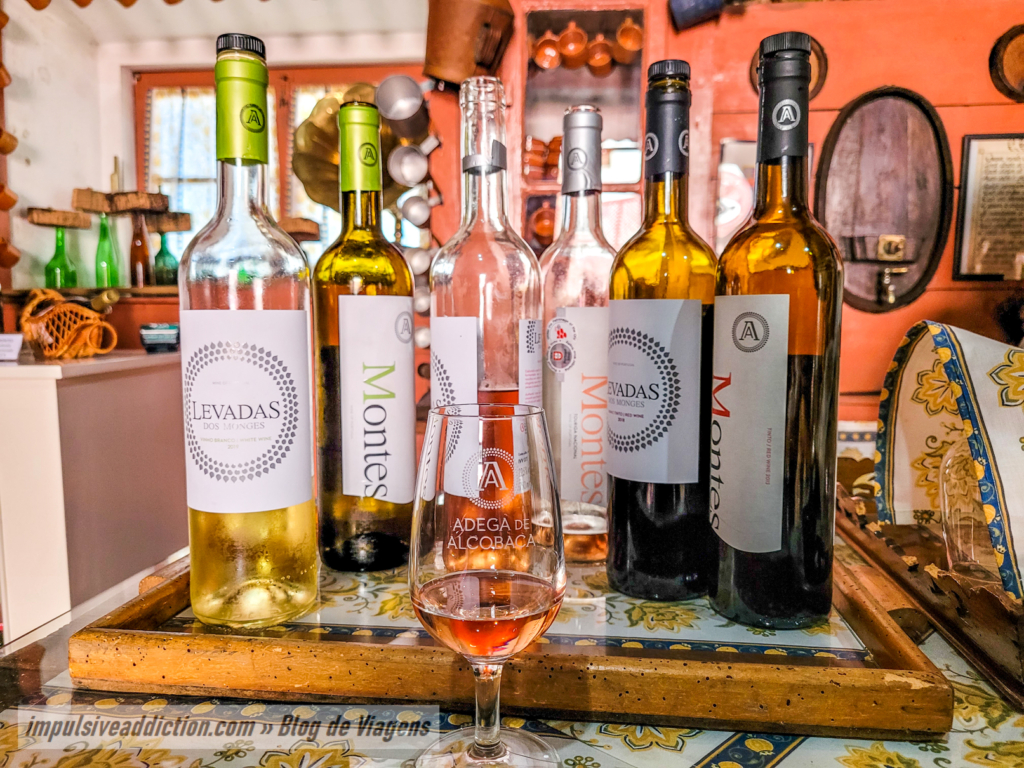
Visit São Martinho do Porto and Alfeizerão
I’ll move on to the São Martinho do Porto and Alfeizerão area, starting by reminding you that you must stop at a pastry shop in Alfeizerão to buy the typical pão de ló (sponge cake), which is second to none in Portugal. I bought one in Casa do Pão de Ló, but there are other options!
1. Mother Church and Pillory of Alfeizerão
Still in Alfeizerão, and on the National Road 242 that leads to São Martinho do Porto, stop off at the square of the Mother Church, where you’ll also find the pillory. The church is dedicated to St. John the Baptist and is believed to date back to the late 15th century. The pillory, on the other hand, dates from more or less the same period, Manueline, but what you see today is the result of relatively recent reconstructions, although based on its original appearance.
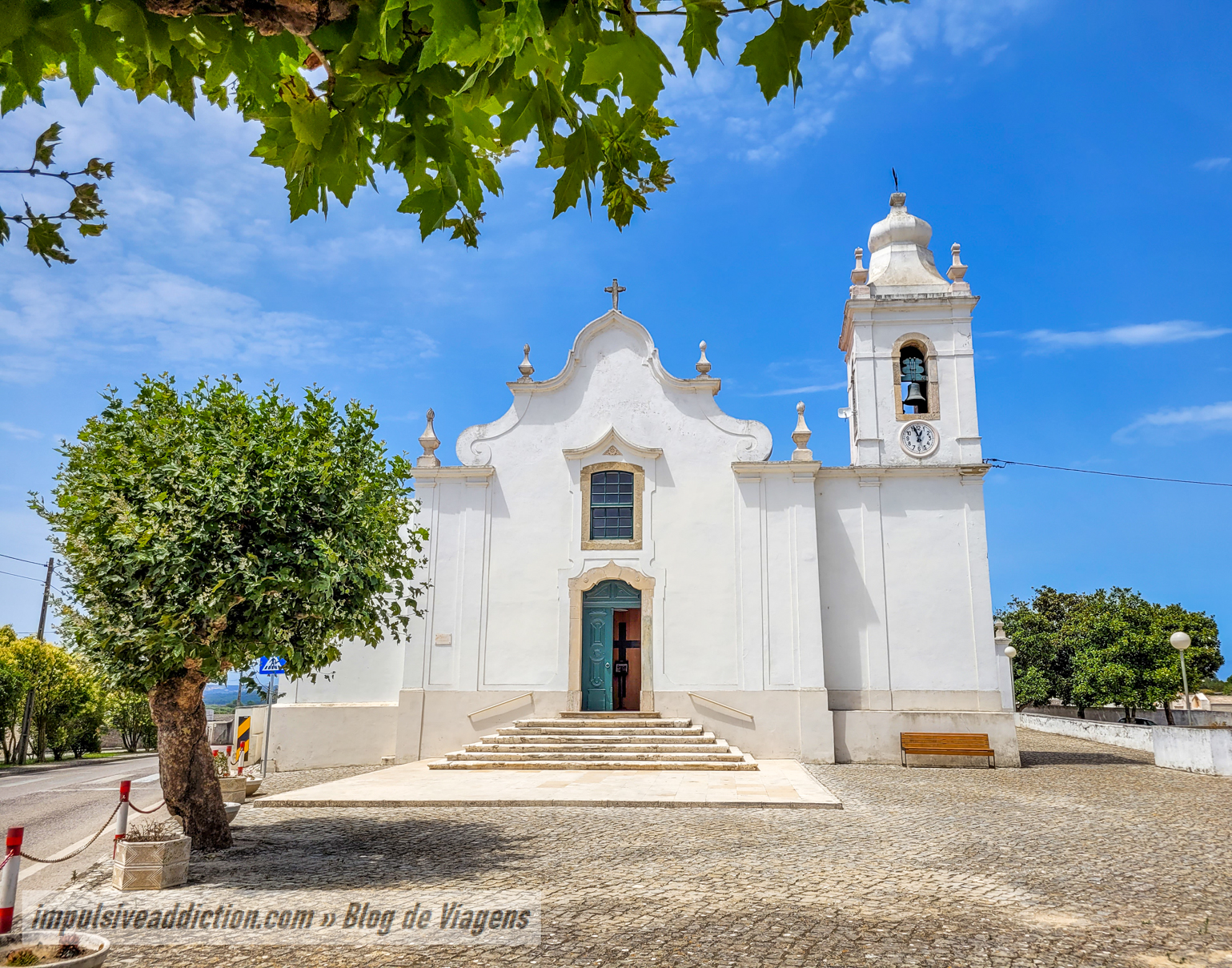
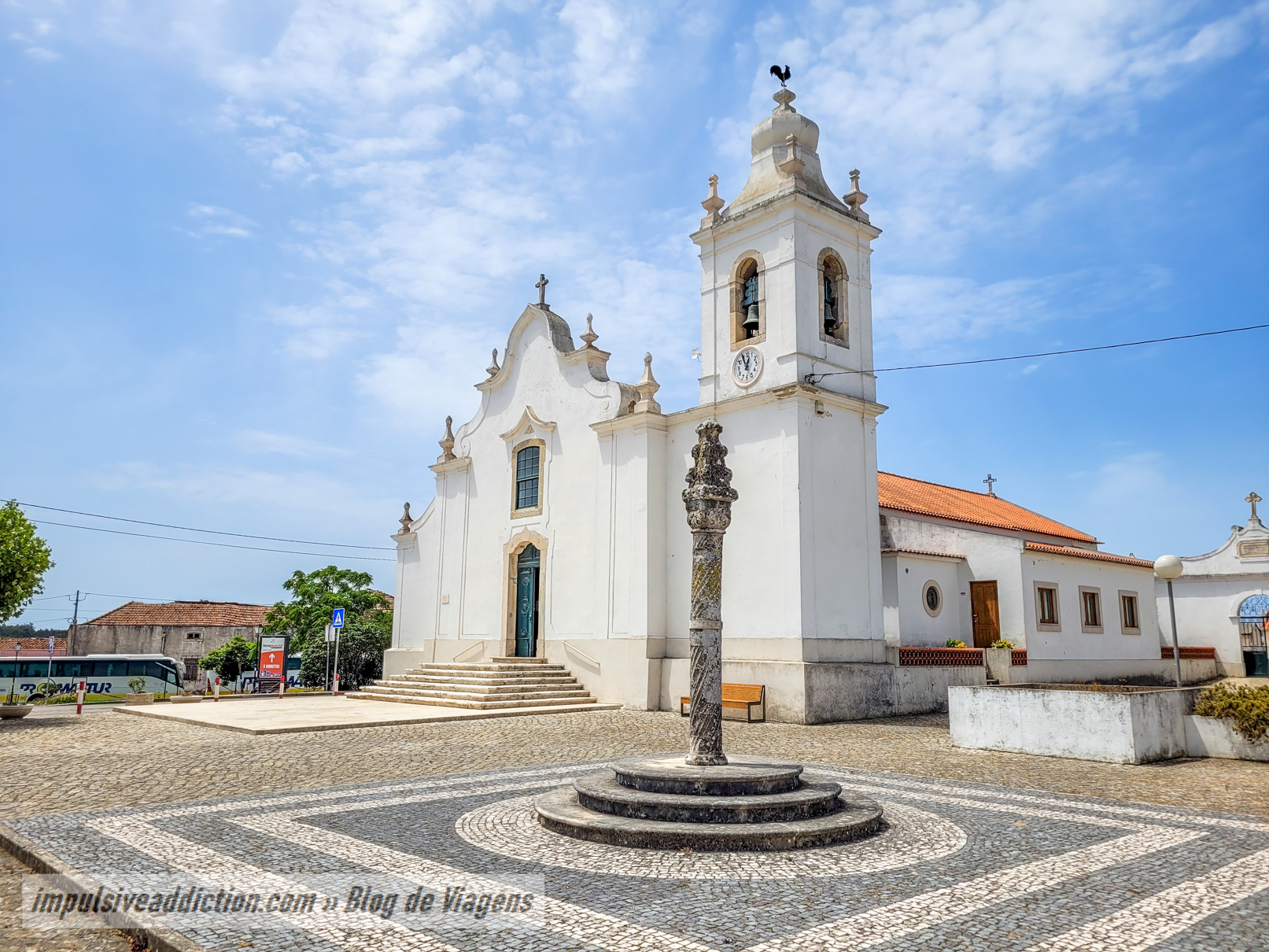
2. São Martinho do Porto Bay and Beach
When visiting São Martinho do Porto, my recommendation is that you start at the beach itself and along the seafront promenade. This is undoubtedly one of the most beautiful beaches and bays in the country, with calm waters ideal for a good swim: there are practically no waves, and you don’t need to be afraid to let the children have fun, as there is almost no danger. It’s a blue flag beach and is monitored during the bathing season.
As a curiosity, São Martinho do Porto Beach has around 3km of sand and at the back you’ll find lots of cafés, bars, restaurants and accommodation. There’s no shortage of infrastructure to support what is the most popular beach in the municipality of Alcobaça! In my opinion, it is undoubtedly the best beach in Alcobaça.
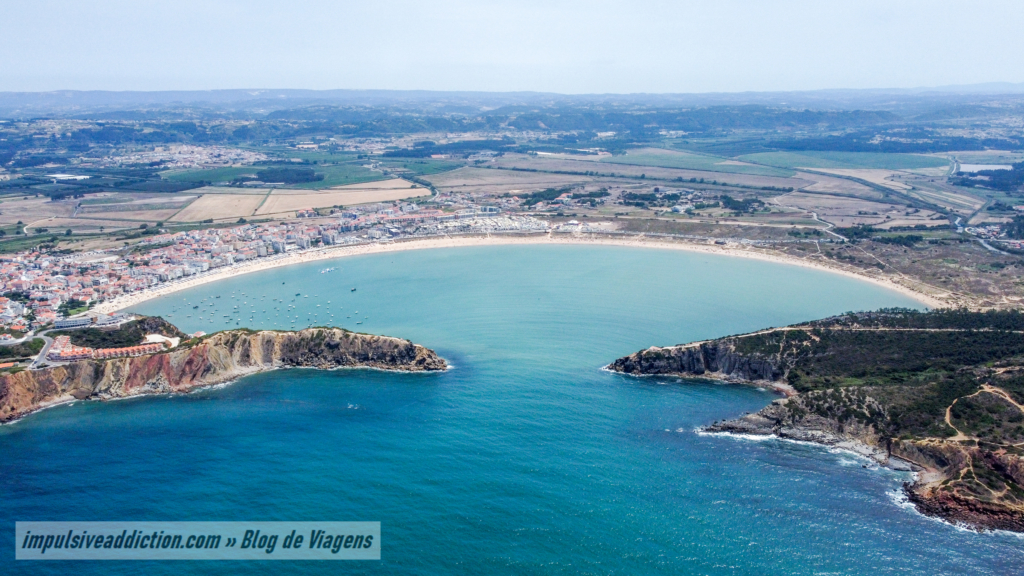
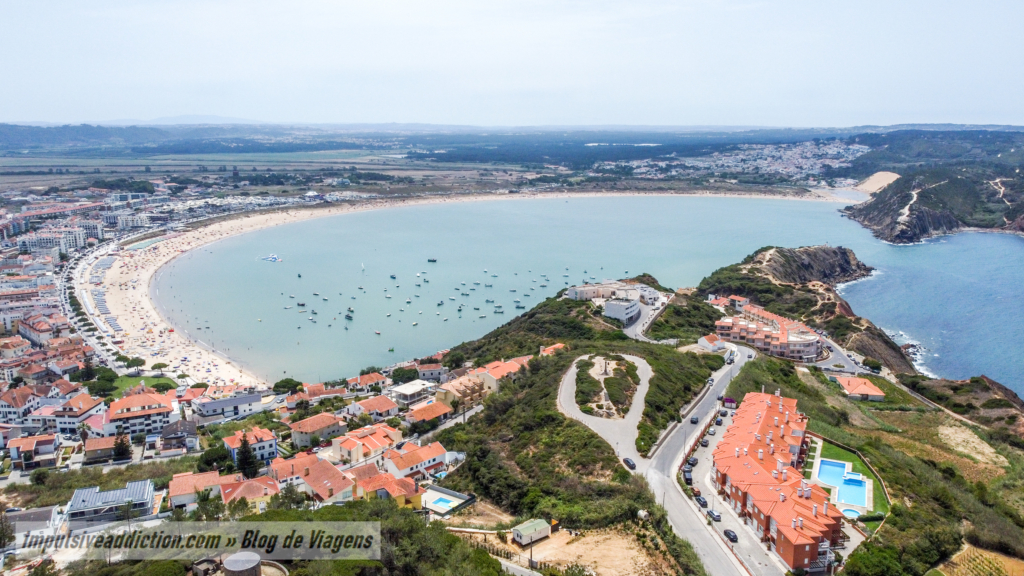
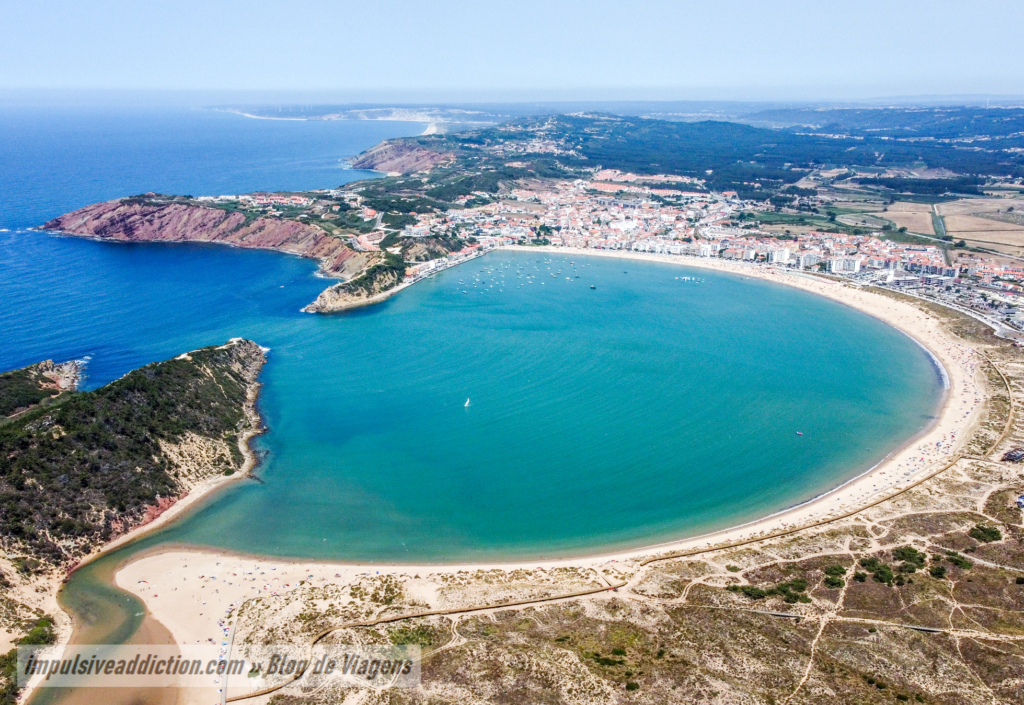
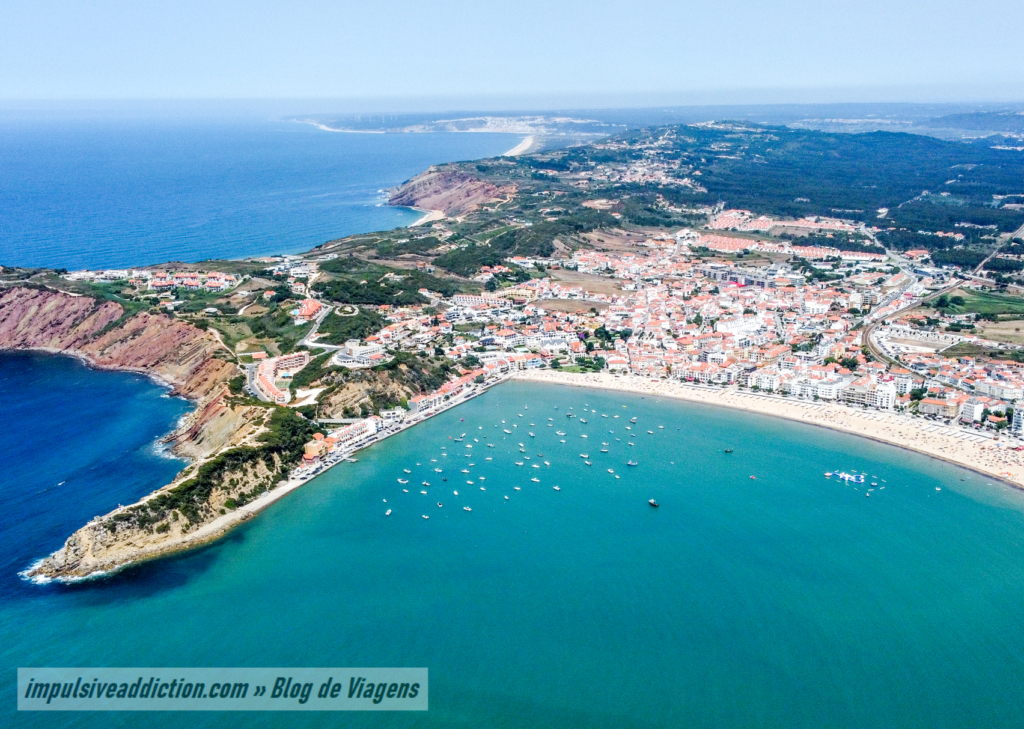
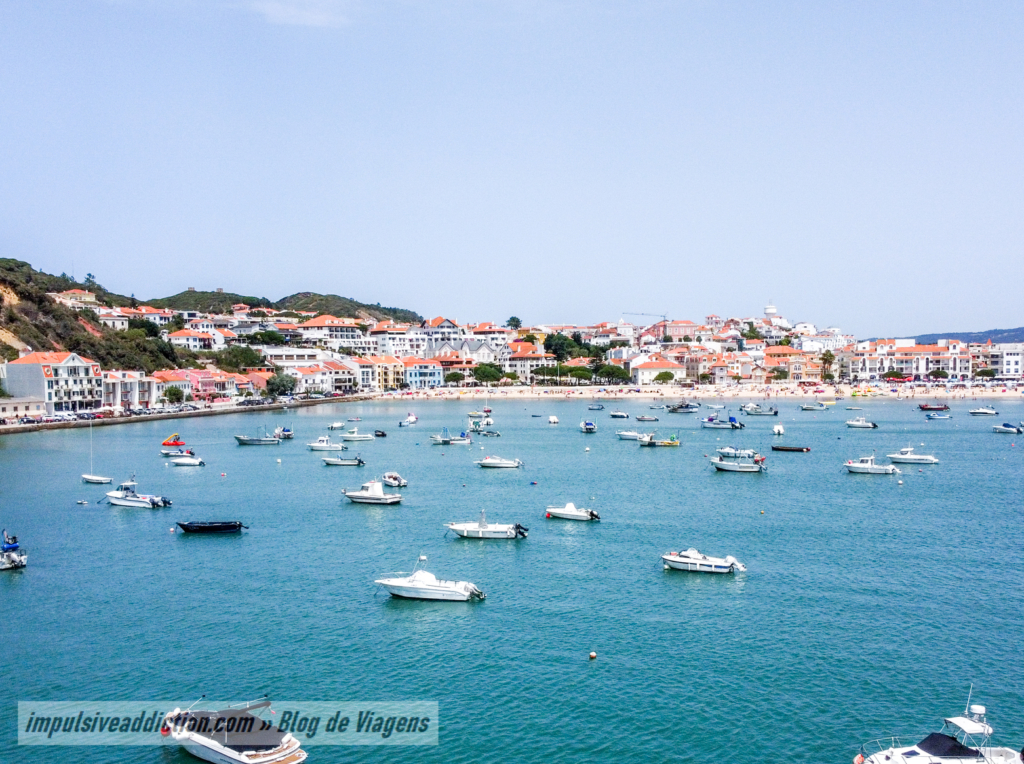
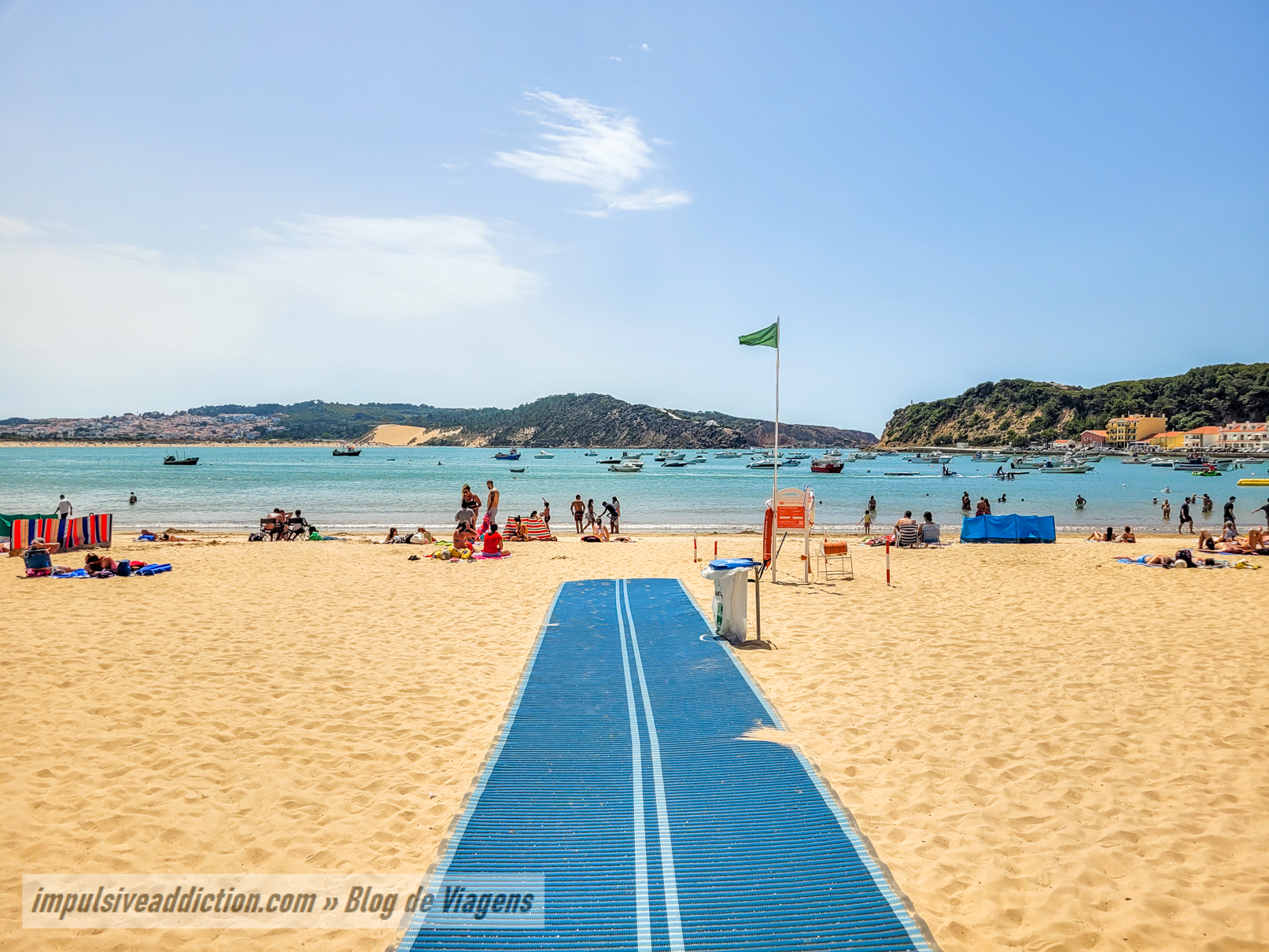
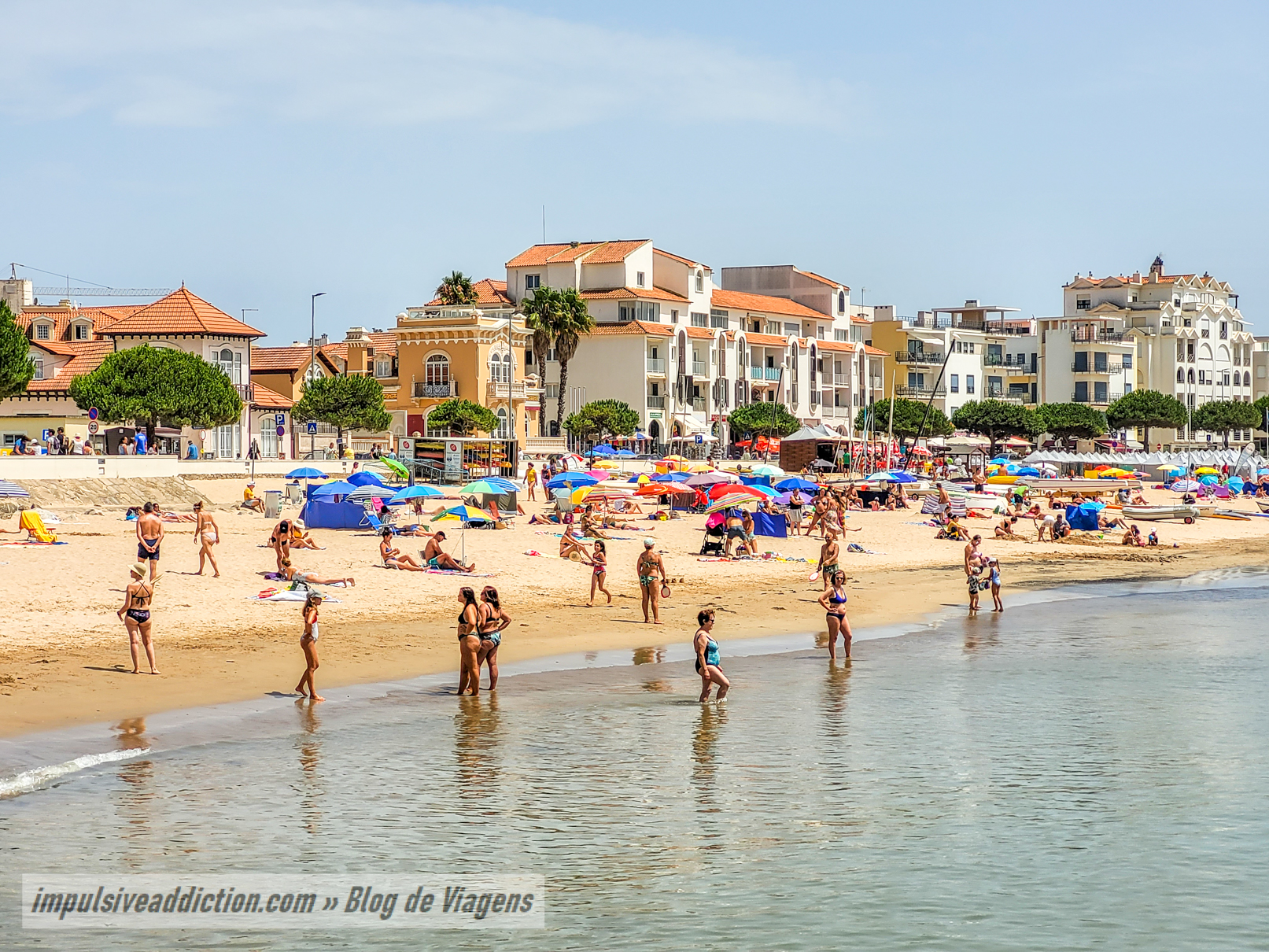
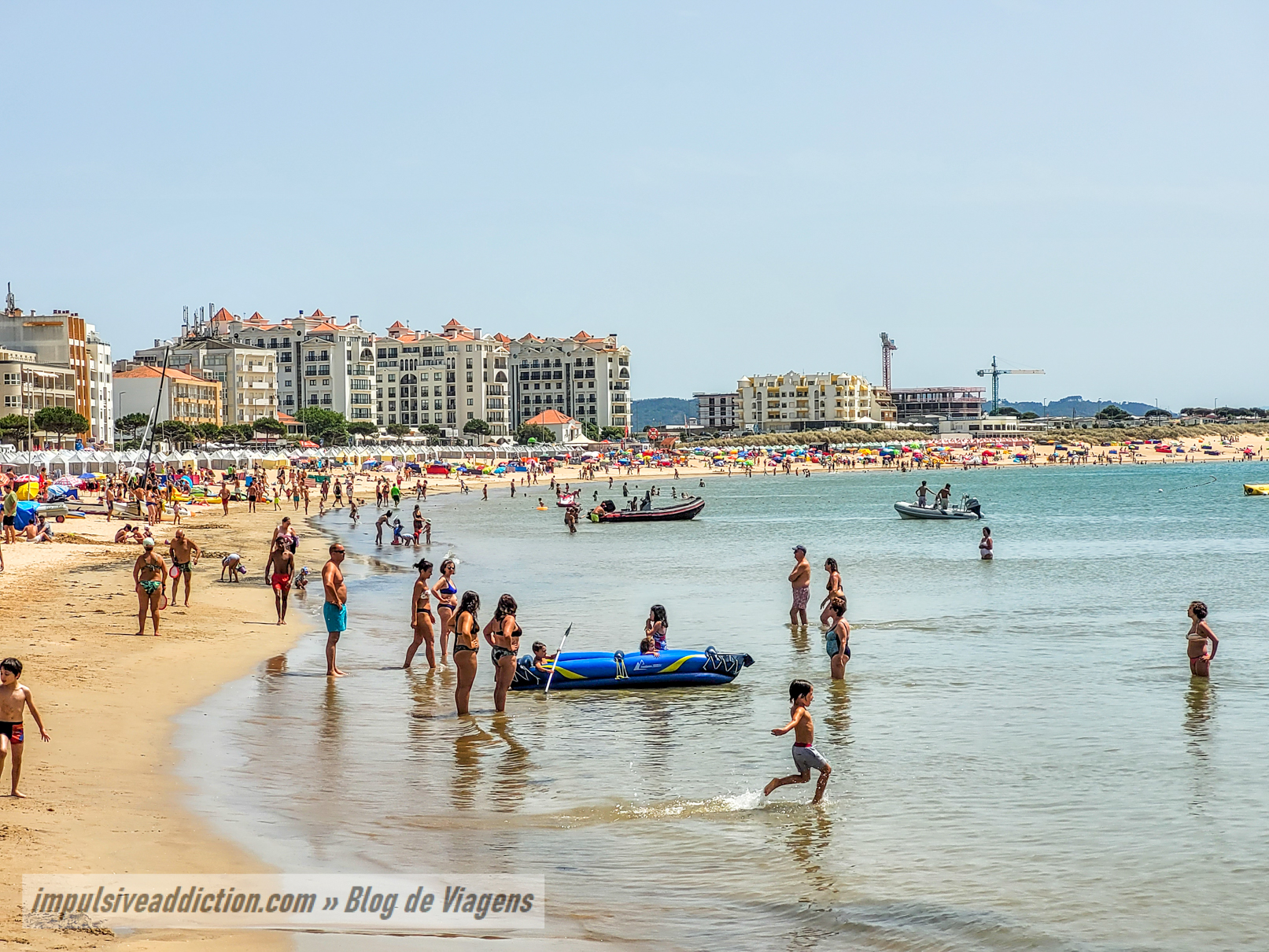
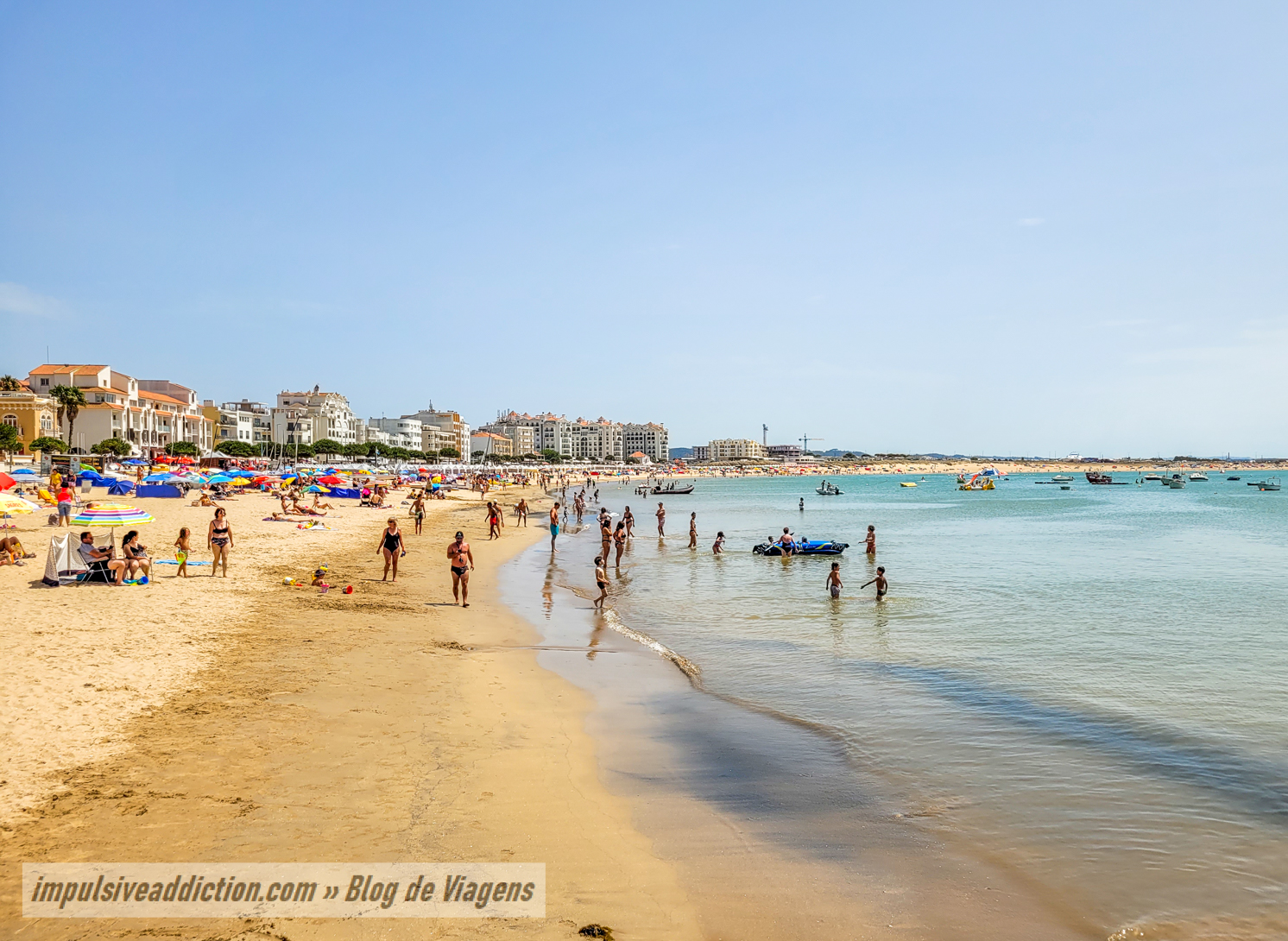
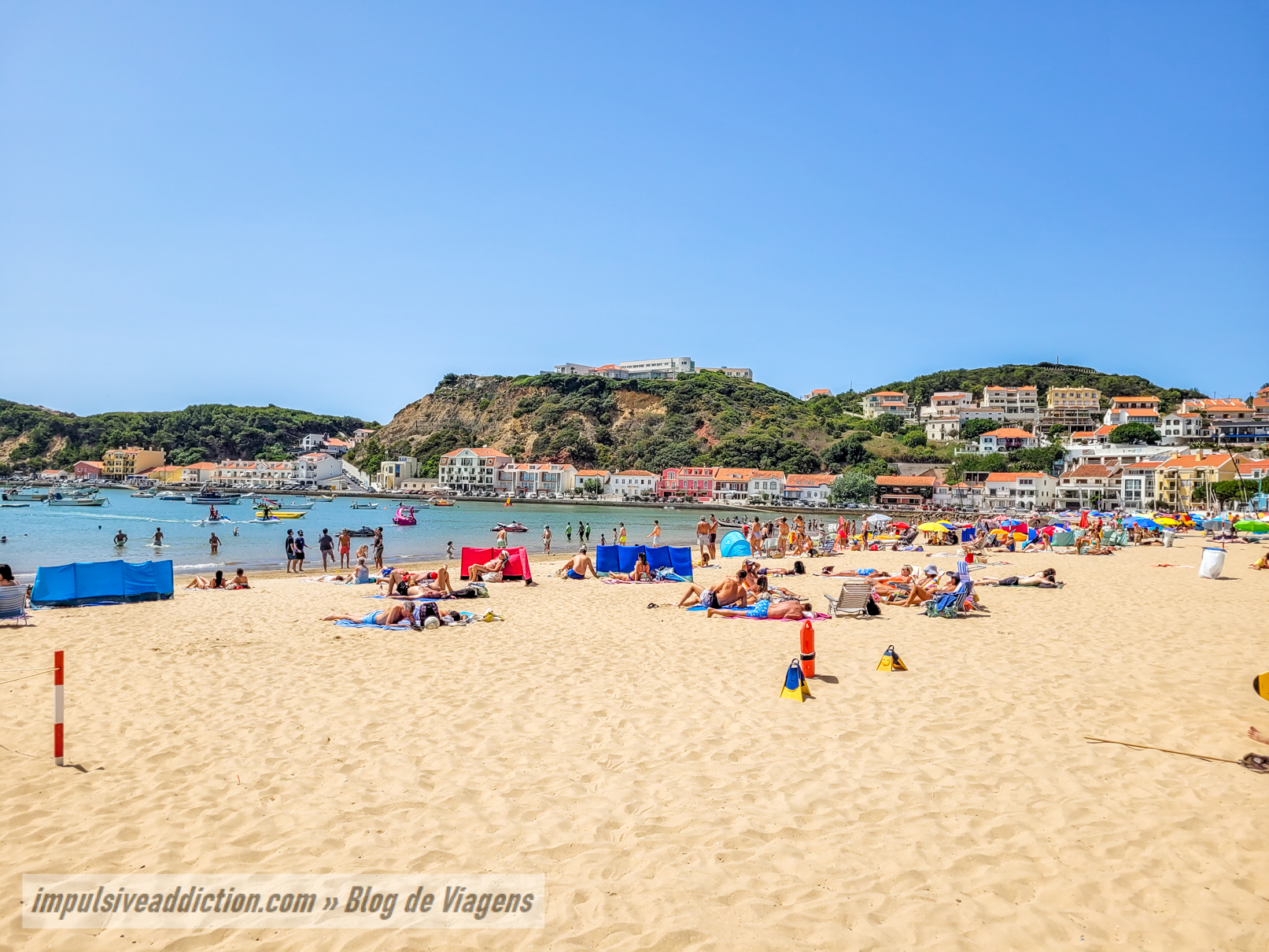
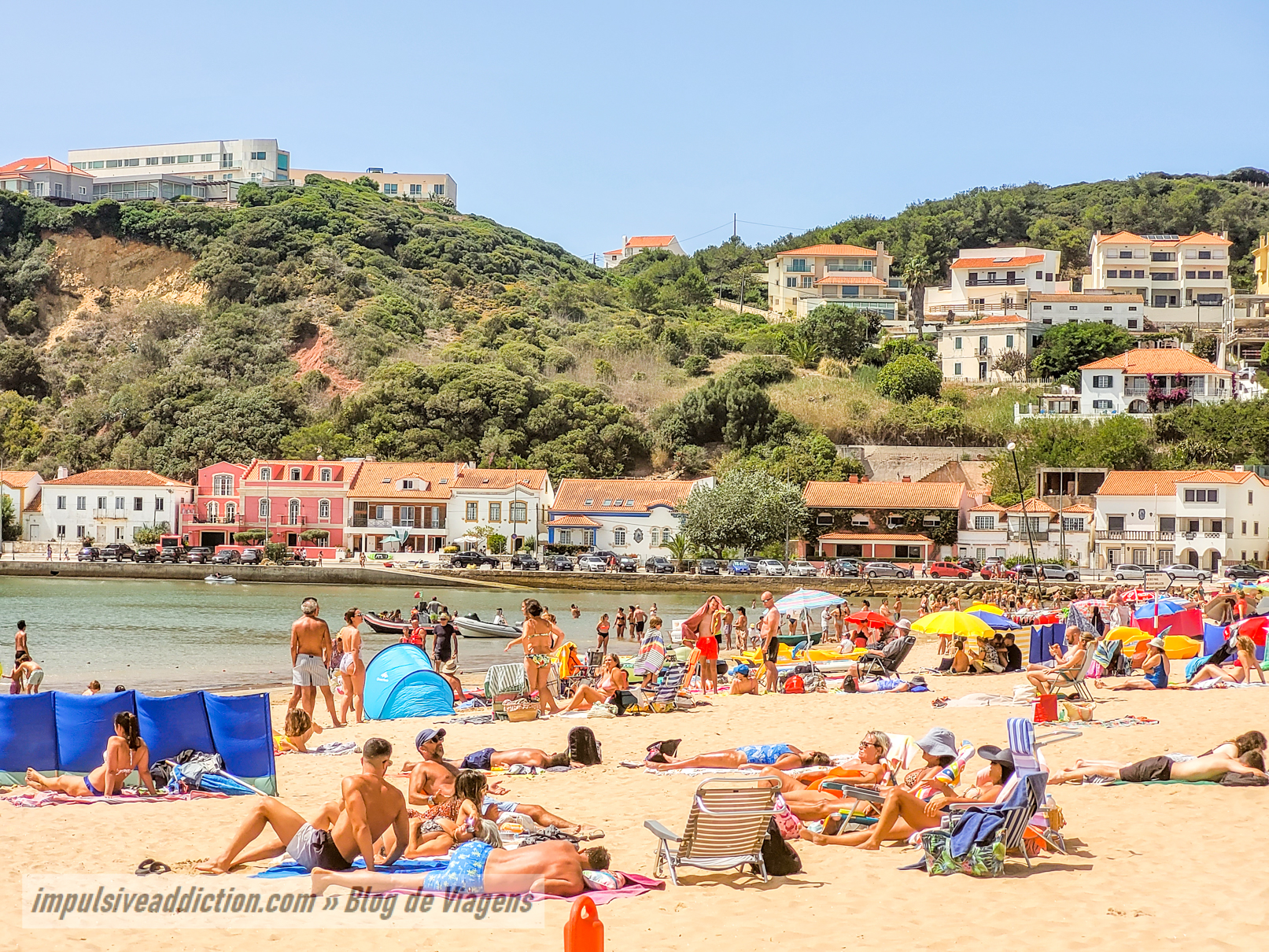
3. Square Eng. José Frederico Ulrich
The entire seafront is enough for most people, but there are two other places in the town that others might want to visit: the Square Eng. José Frederico Ulrich and the Outeiro Lift.
- The first is on the edge of São Martinho do Porto beach, and I saw some people there boarding the Pouca Terra tourist train, which you might want to use to easily discover the surrounding area or go up to the viewpoints on the cliffs. 😉 Don’t forget Rua Vasco da Gama, which joins this square to Square Vitorino Fróis, which is also very pleasant and busy.
- The second, in turn, allows you to reach a beautiful viewpoint of the beach and bay, very close to the authentic balcony that is the square of São Martinho do Porto Parish Council and Culture House.
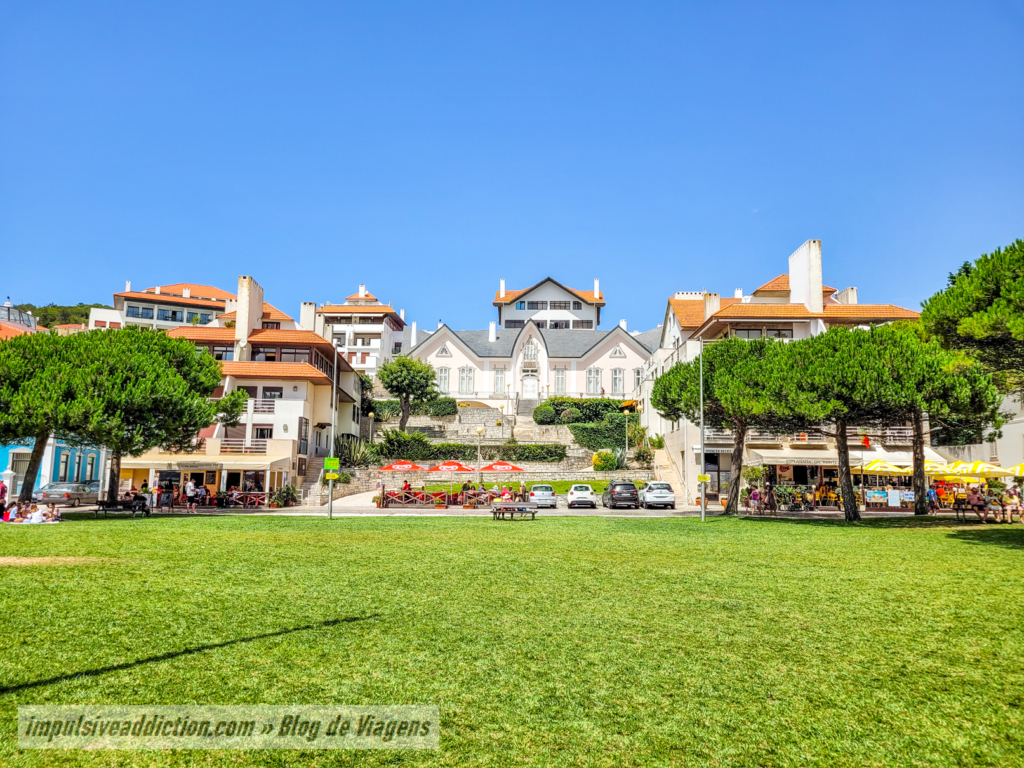
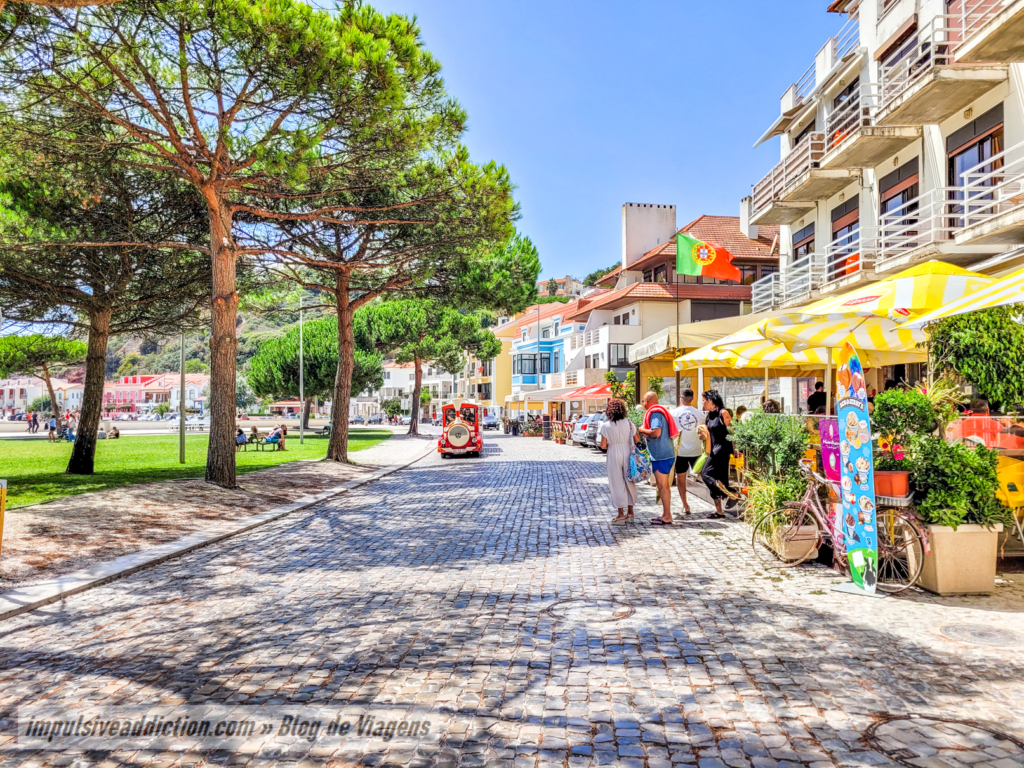
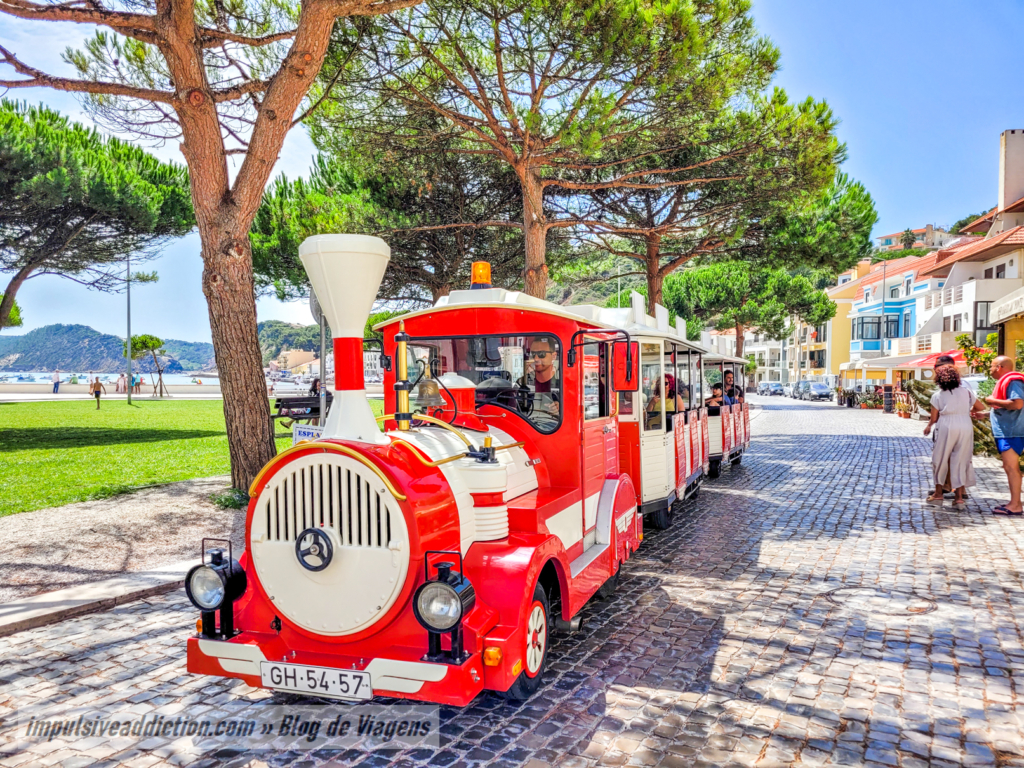
4. Outeiro Lift
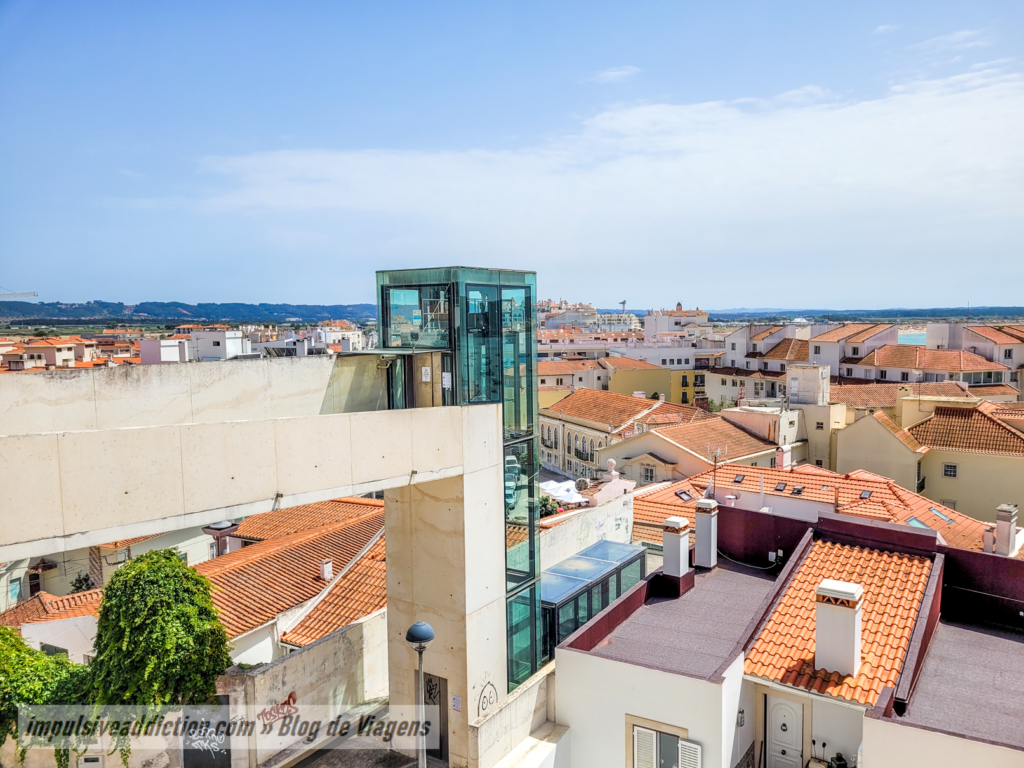
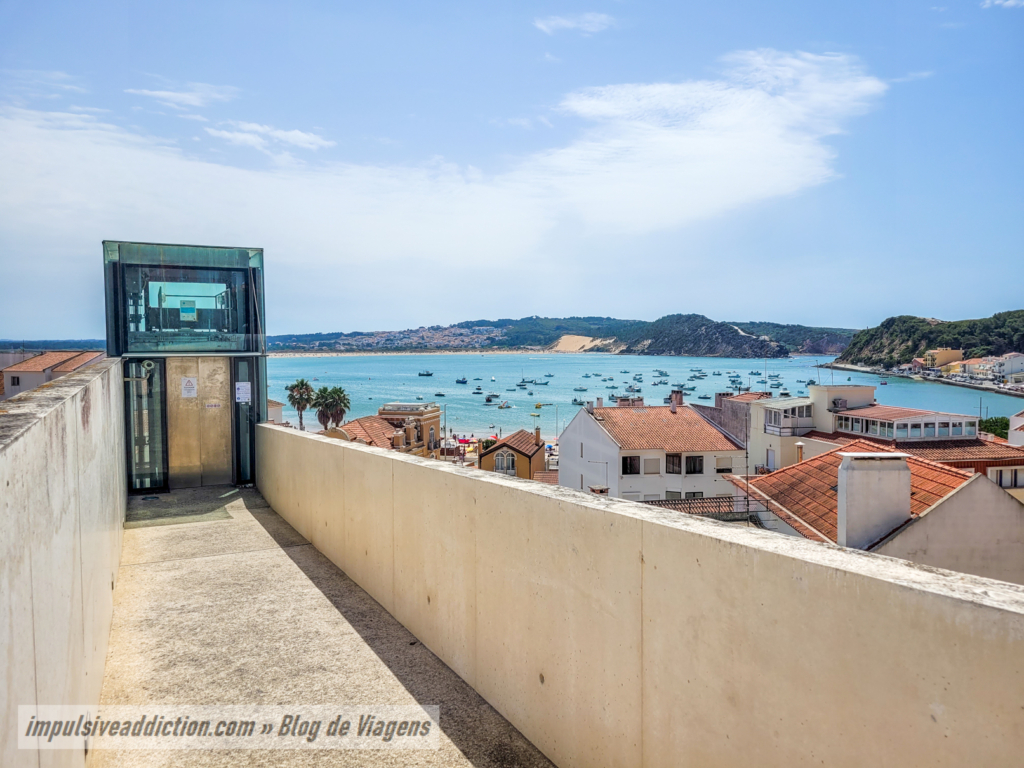
5. Church of São Martinho do Porto
In that higher part of the town, you can also pass by the beautiful public fountain, then follow the sidewalk along Rua José Bento da Silva to the 18th-century Church of São Martinho do Porto.
6. Viewpoints of the São Martinho do Porto cliffs
I didn’t take the tourist train, but I know that it passes by two of the viewpoints I’ll mention below. There are four in total:
- The Cruzeiro viewpoint, which has a privileged view of São Martinho do Porto beach. Nearby you’ll find the small chapel of Santo António.
- São Martinho do Porto Lighthouse Viewpoint, at the top of one of the promontories that create and protect the bay. From the lighthouse itself, the view is wide across the bay of São Martinho do Porto, and from there you can also see the cliffs of Salir do Porto, which is already in the municipality of Caldas da Rainha. Be careful not to get too close to the cliffs, as there are signs indicating that they may be unstable.
- Facho viewpoint. It stands out because it allows you to see the opening to São Martinho do Porto Bay in the distance, between the two promontories that shelter it.
- That leaves the viewpoint to Gralha beach, which you can, if you prefer, consider to be another view of the Facho viewpoint. I met paragliders there, and by the way, did you know that you can practice this sport in São Martinho do Porto if you want to?
- Extra tip: don’t forget to visit the chapel of Santa Ana, in the side of Salir do Porto (Caldas da Rainha). It is not Alcobaça anymore, but it provides the best viewpoint to the bay of São Martinho do Porto, in my opinion.
Cruzeiro Viewpoint
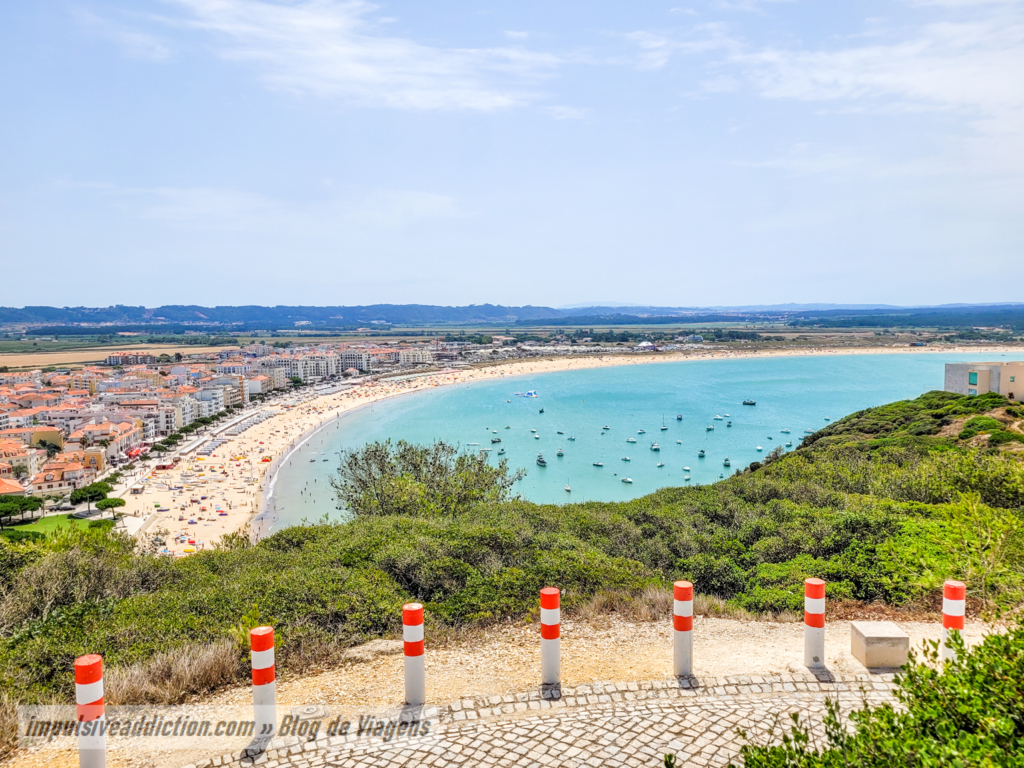
São Martinho do Porto Lighthouse Viewpoint
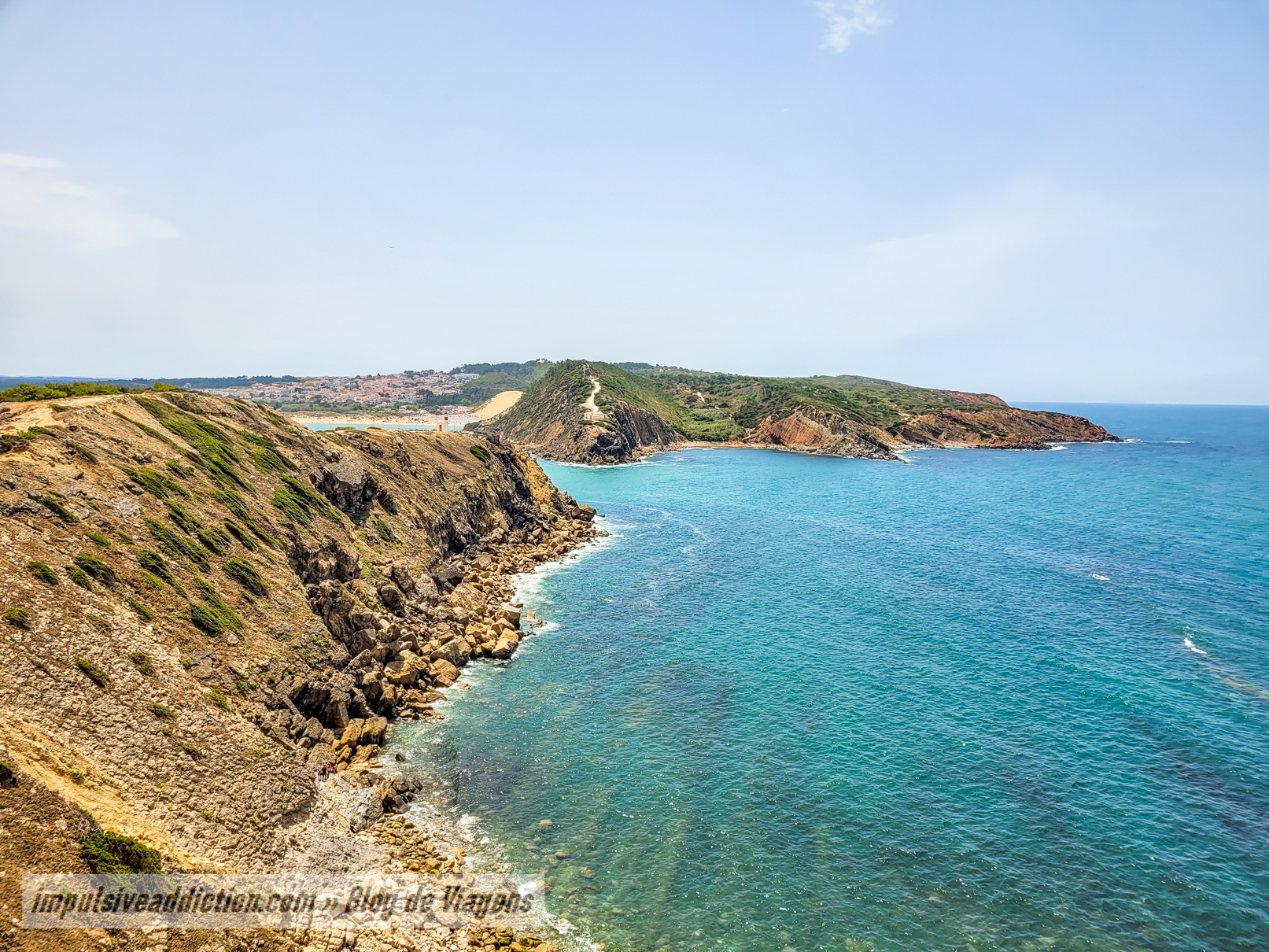
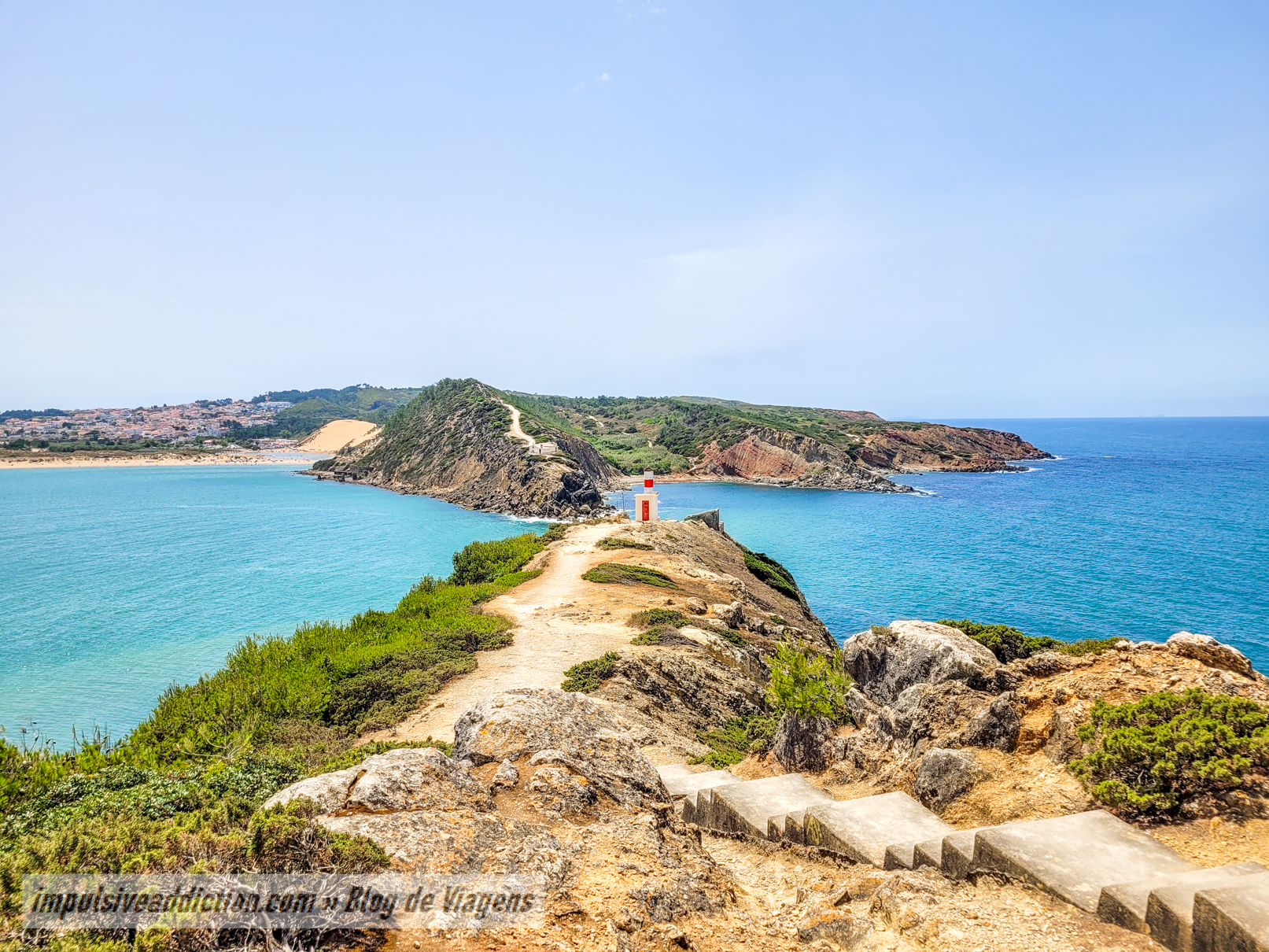
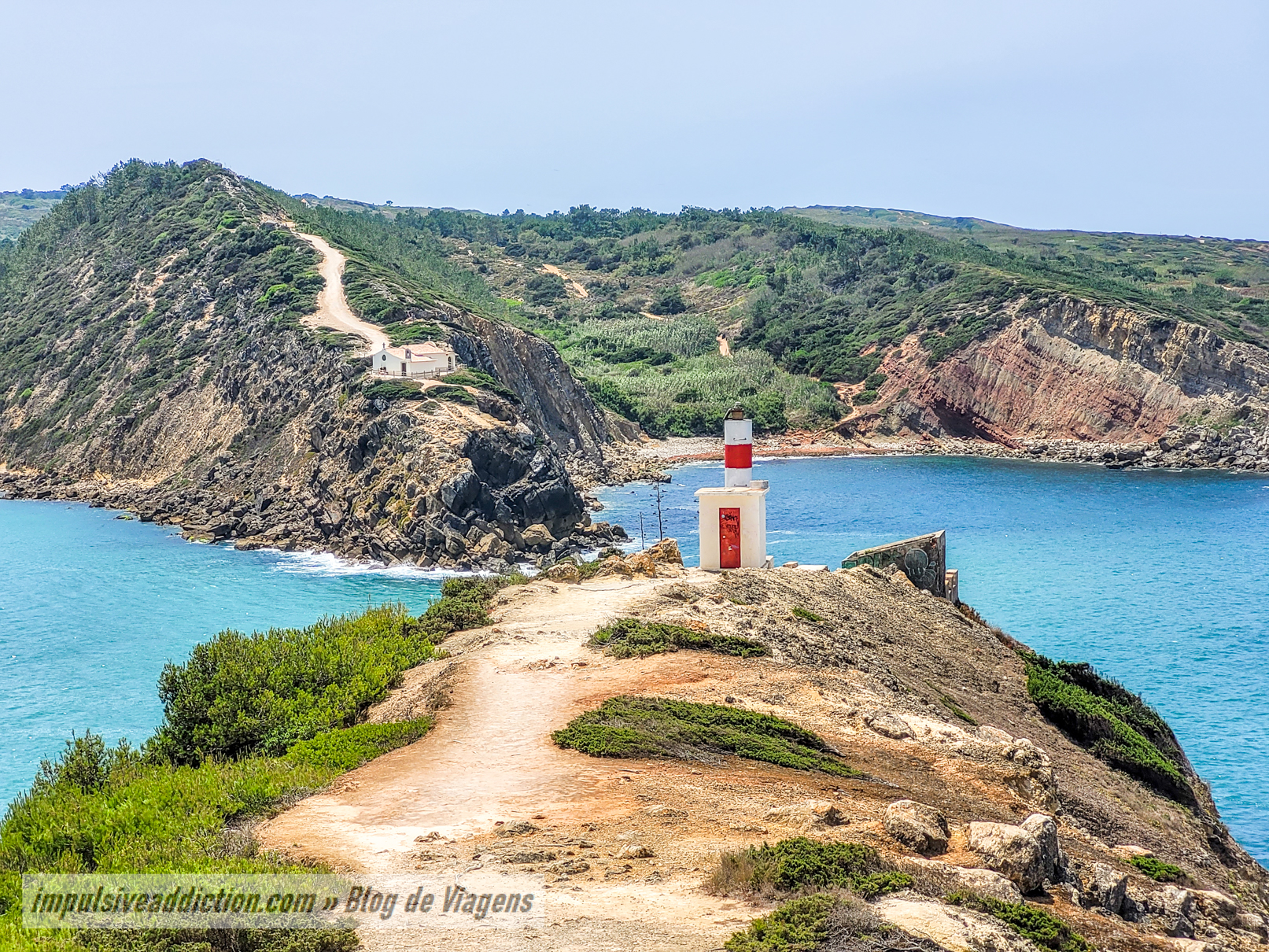
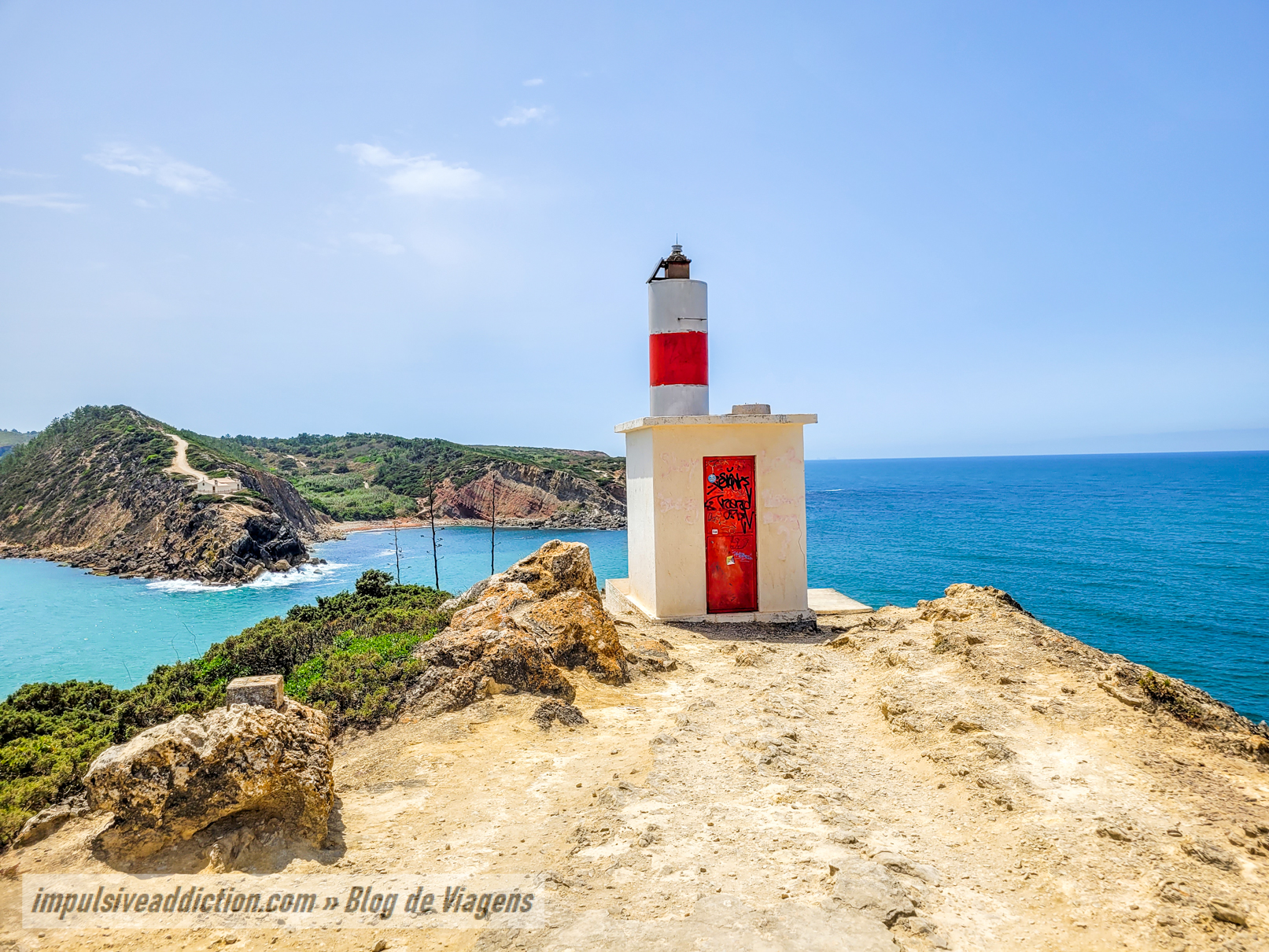
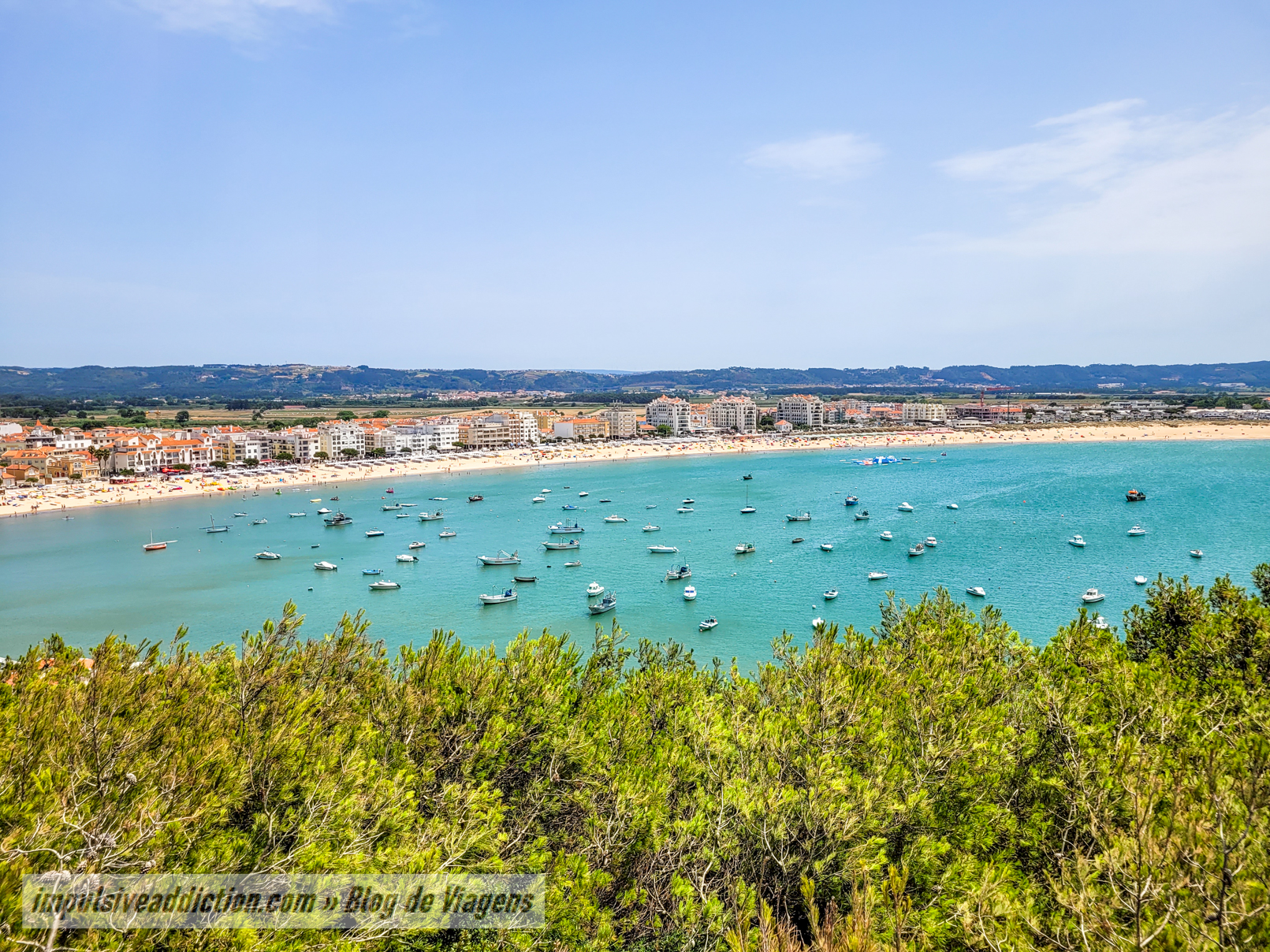
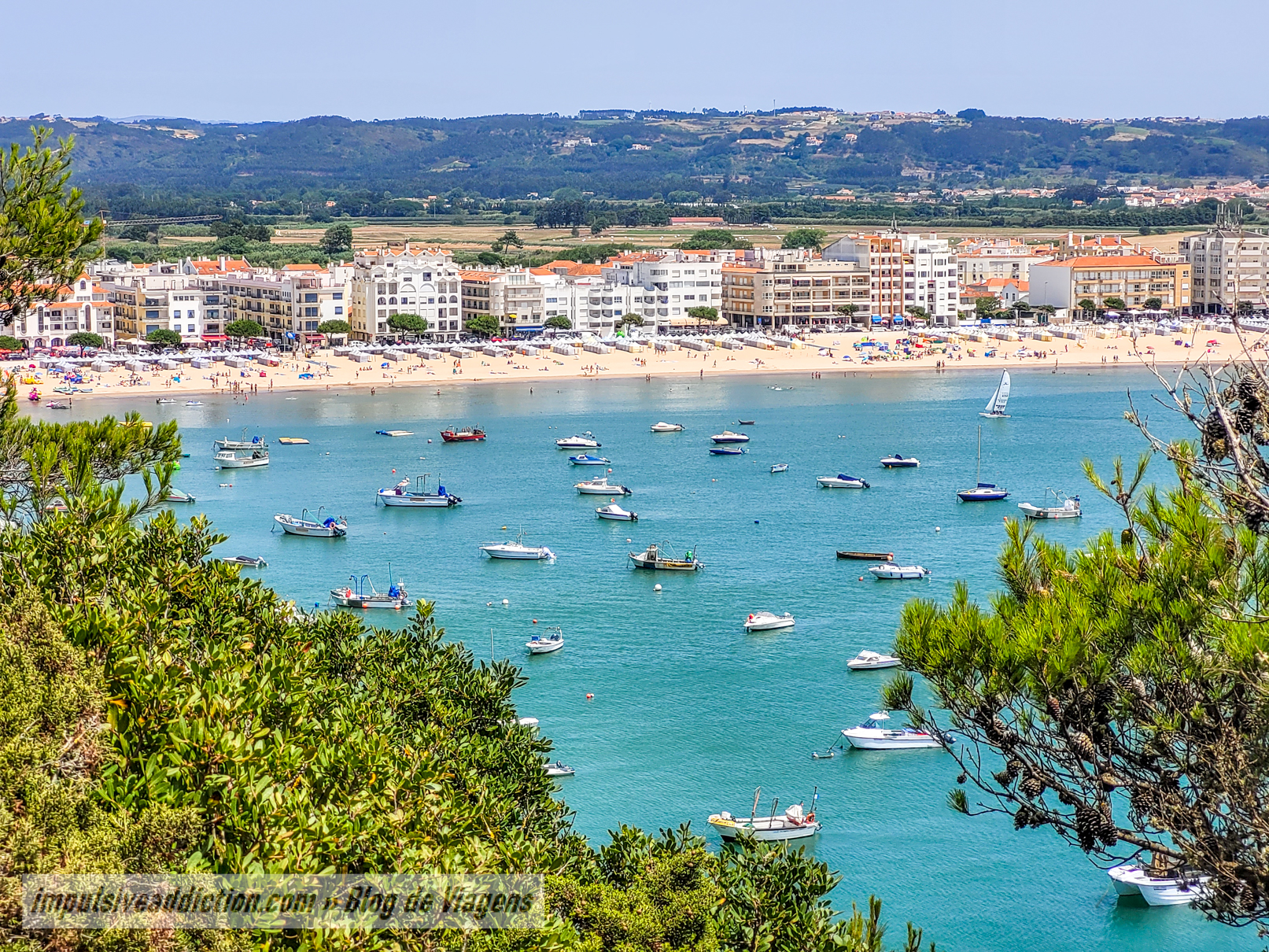
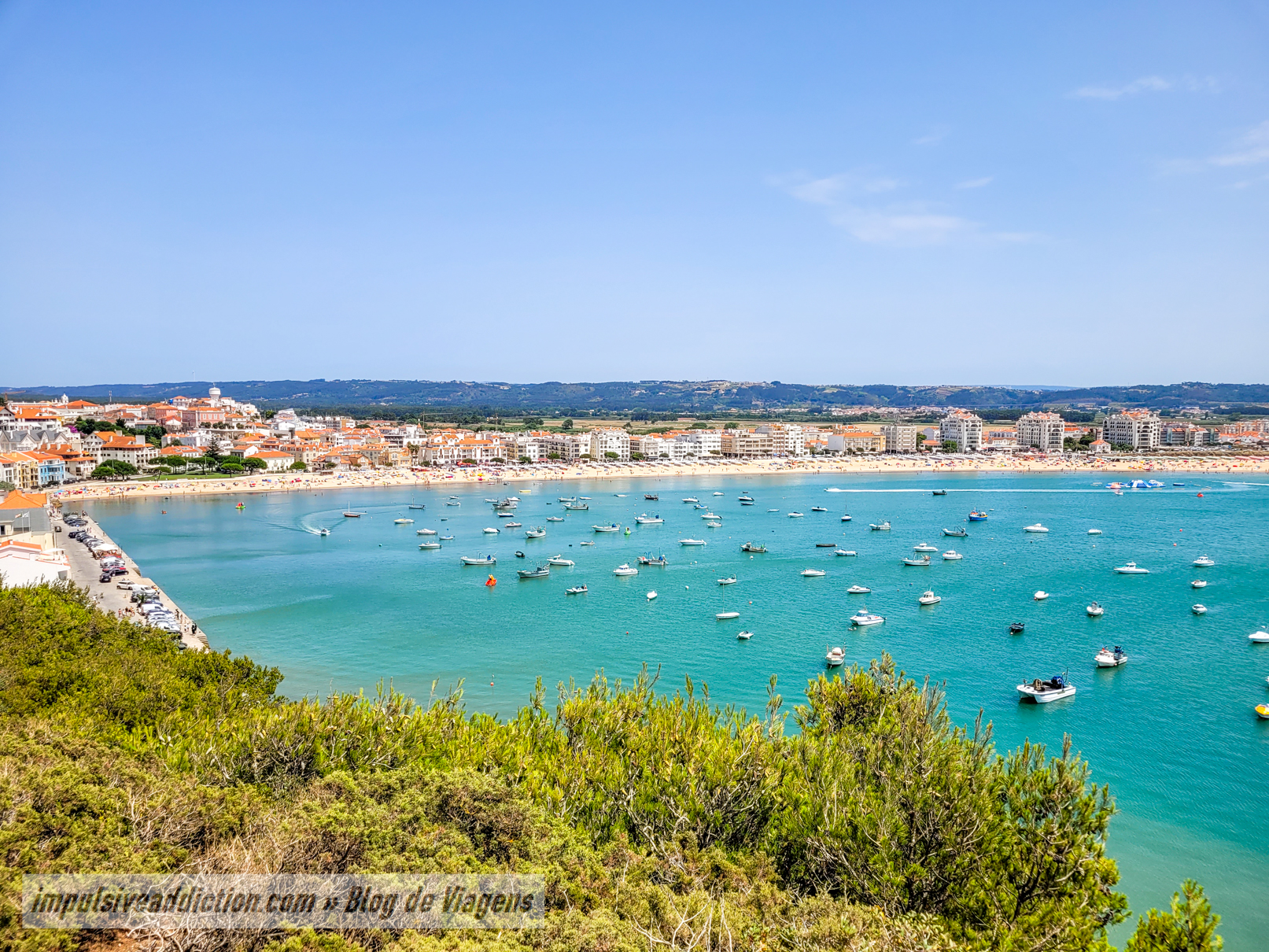
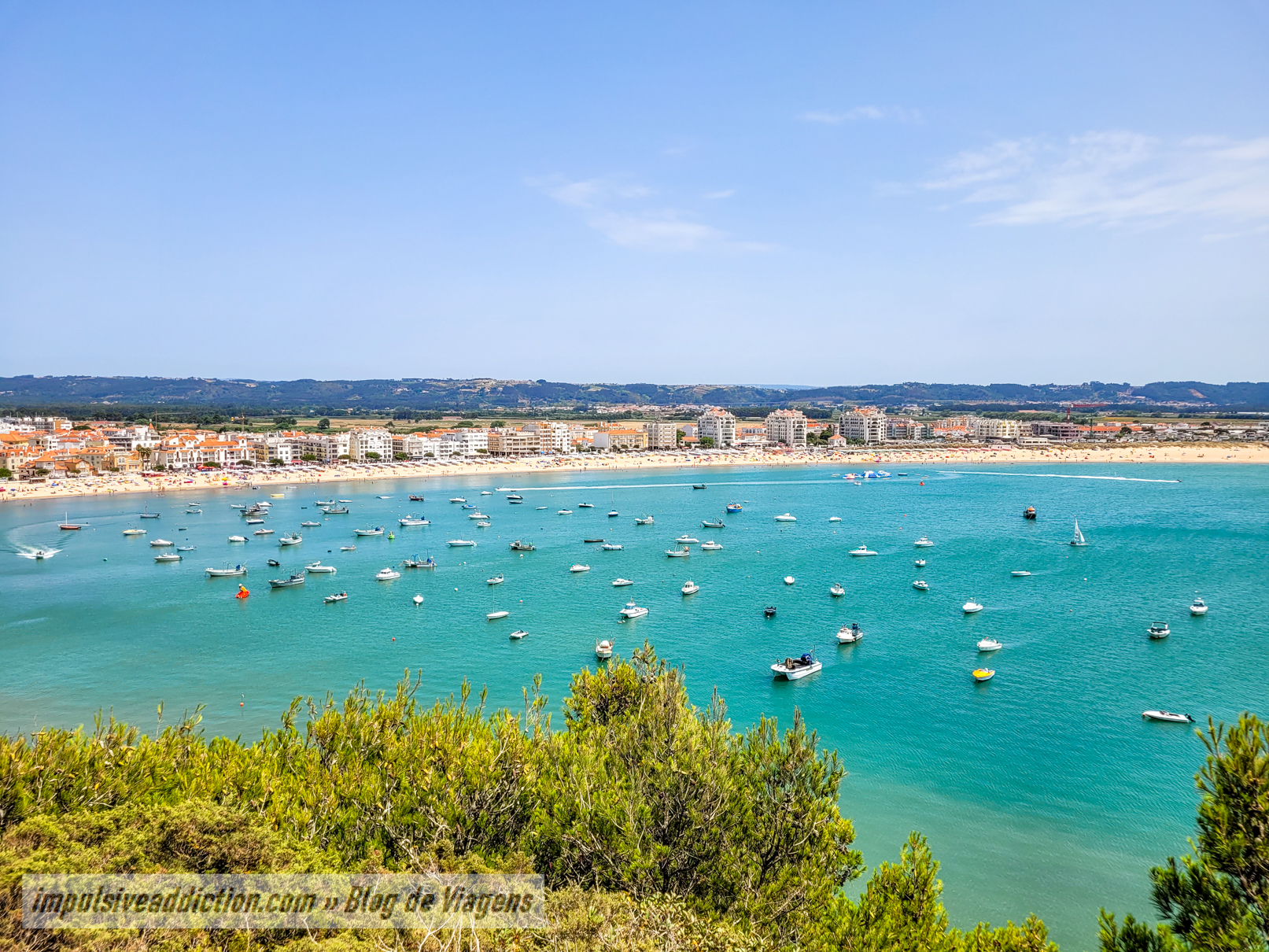
Facho Viewpoint
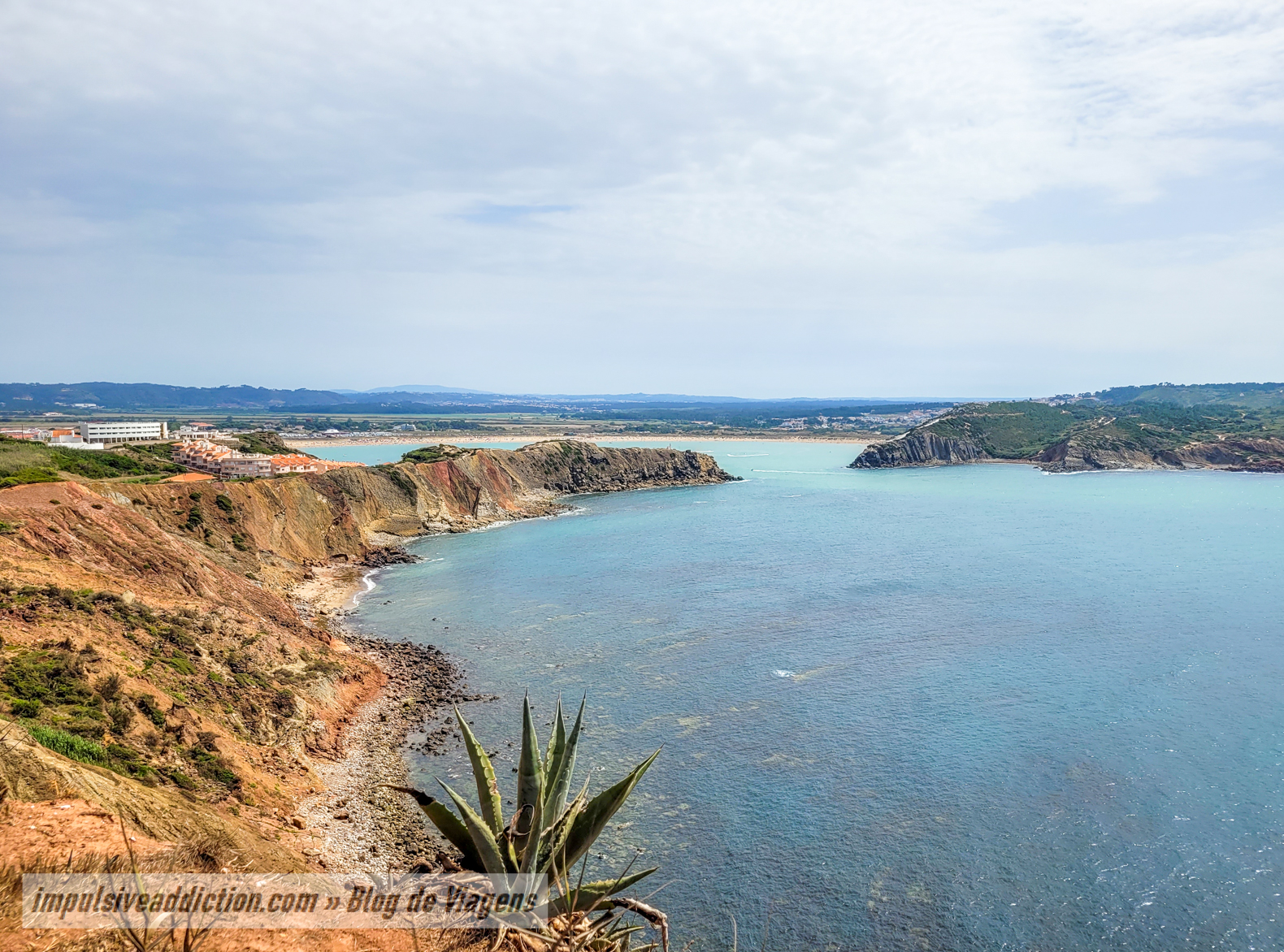
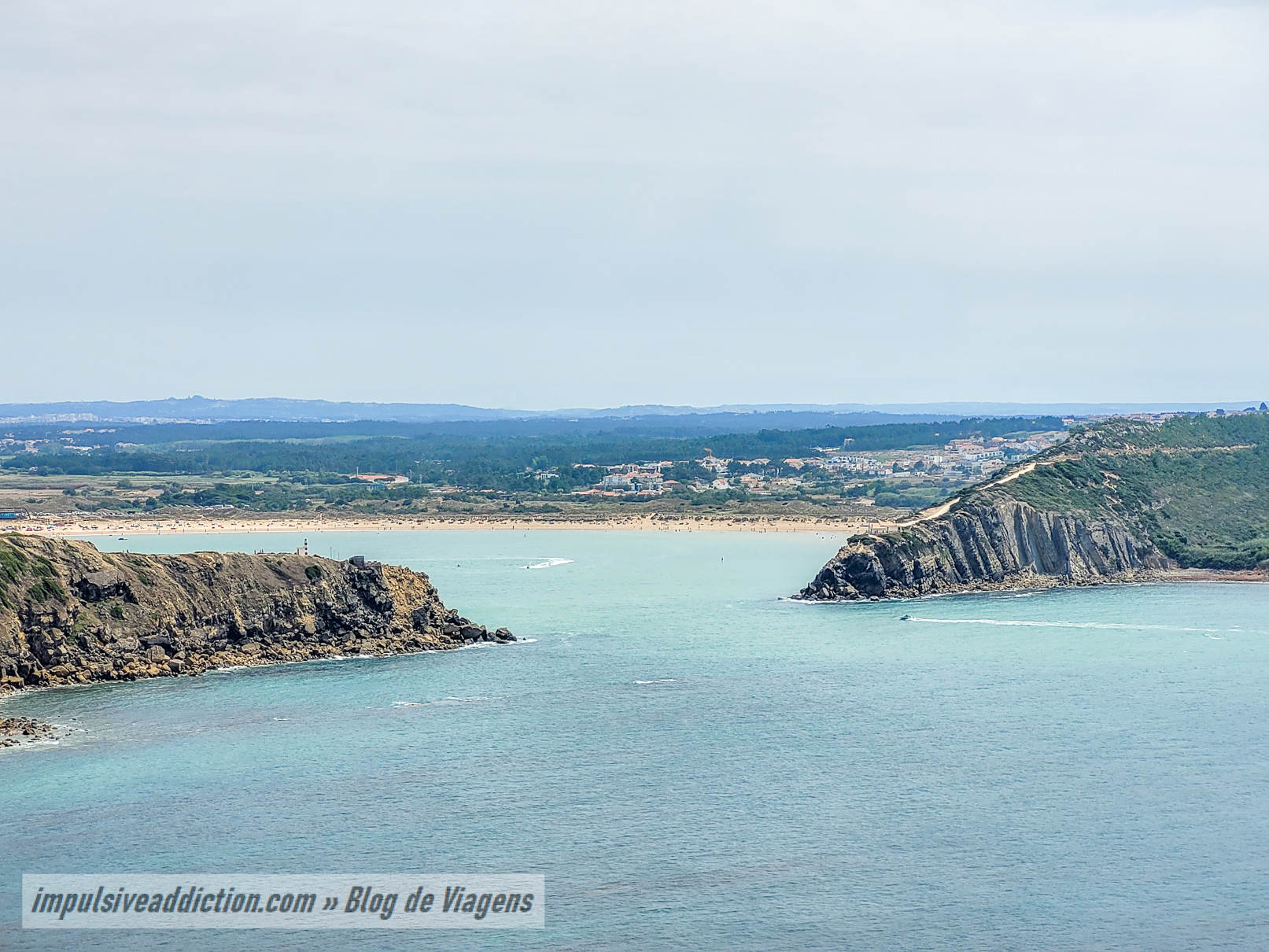
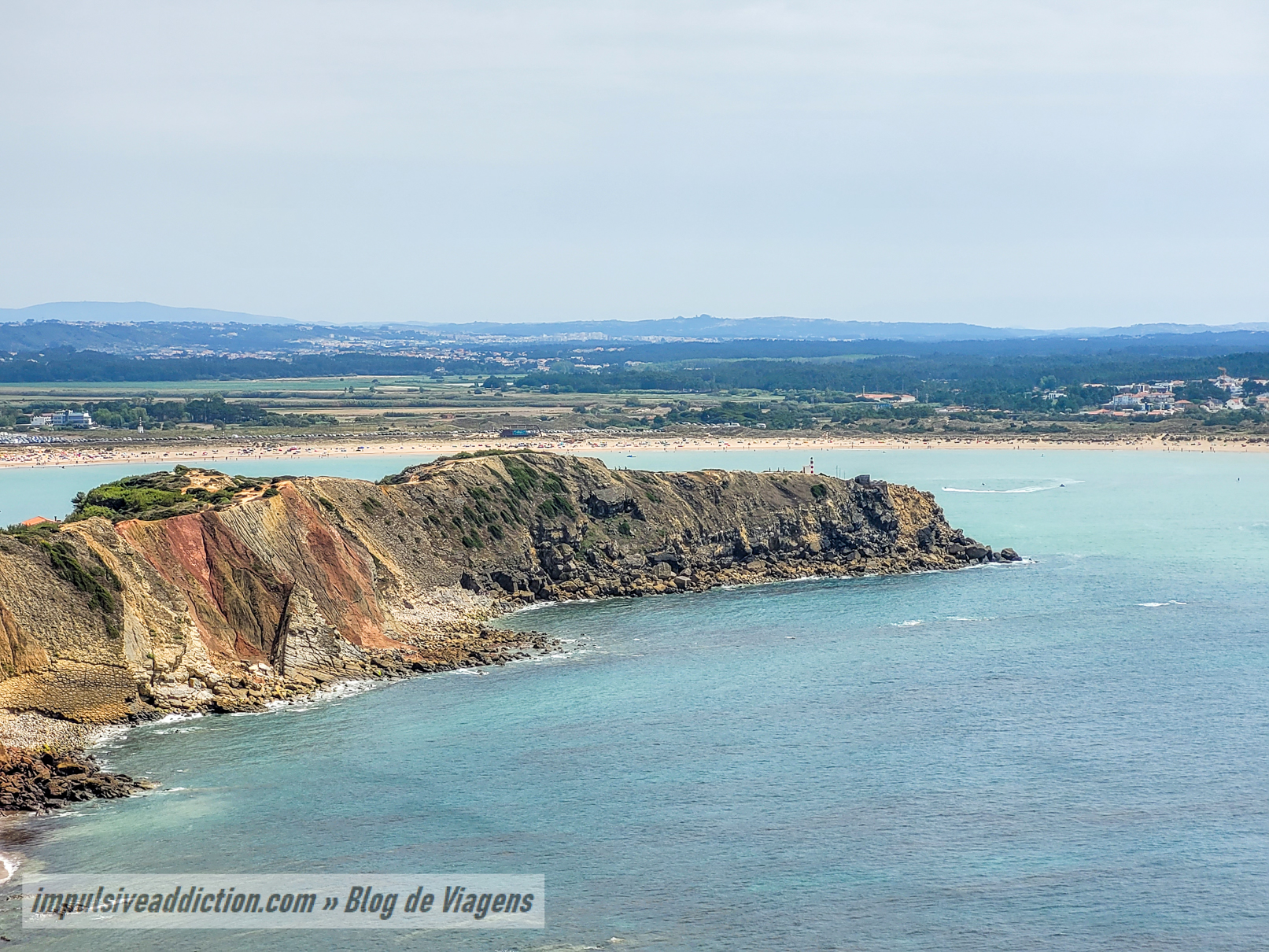
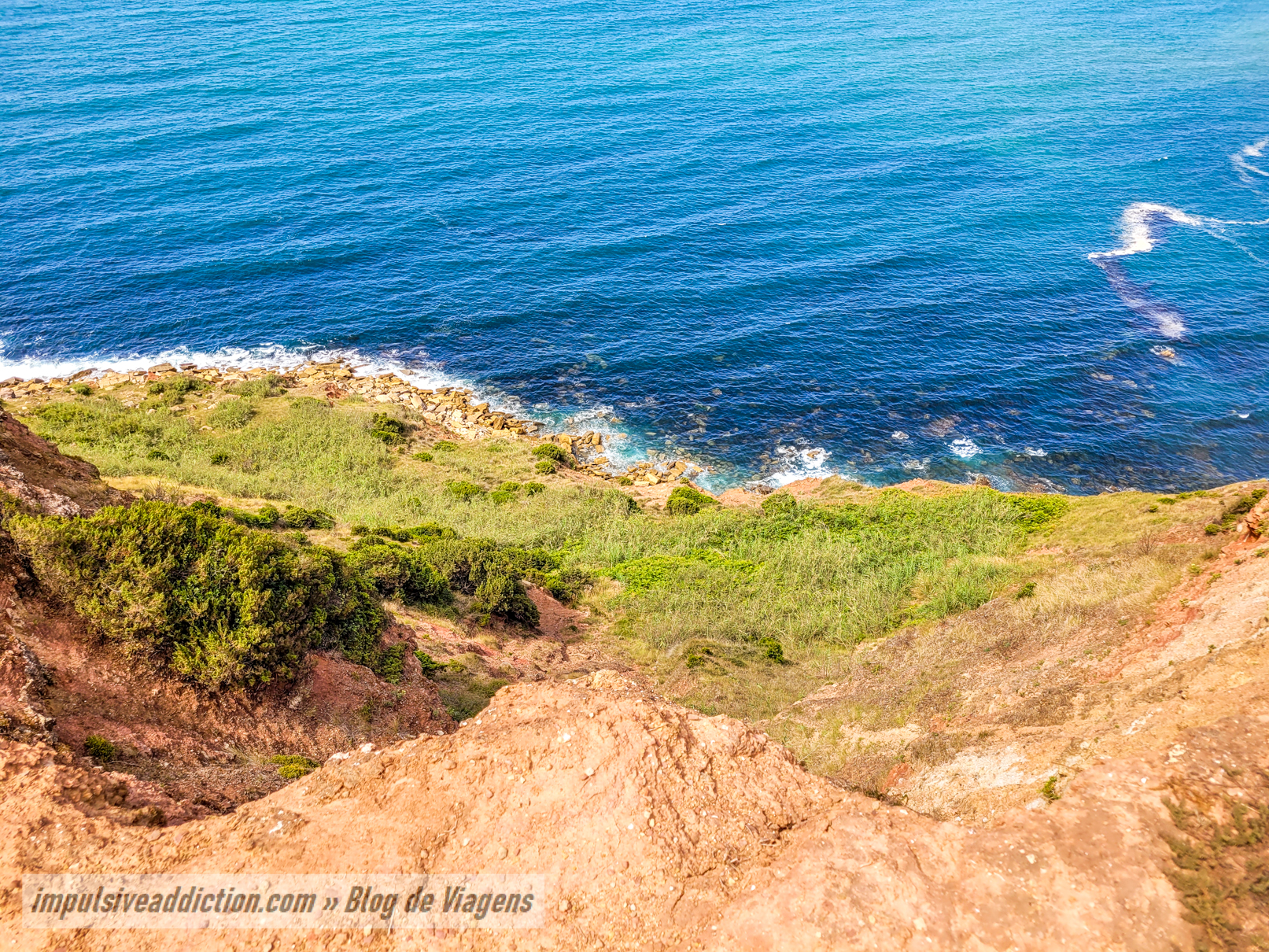
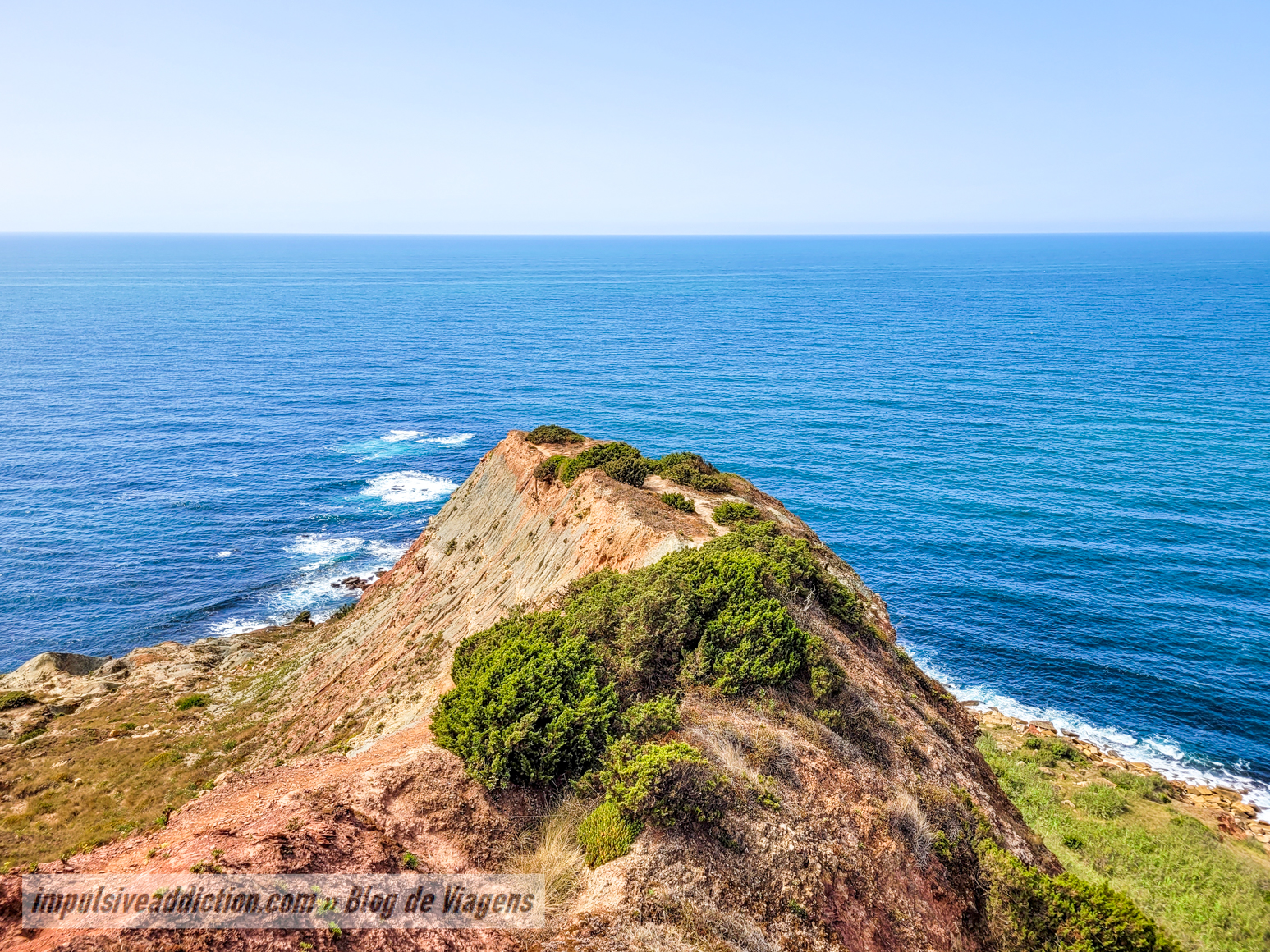
Viewpoint to Gralha Beach
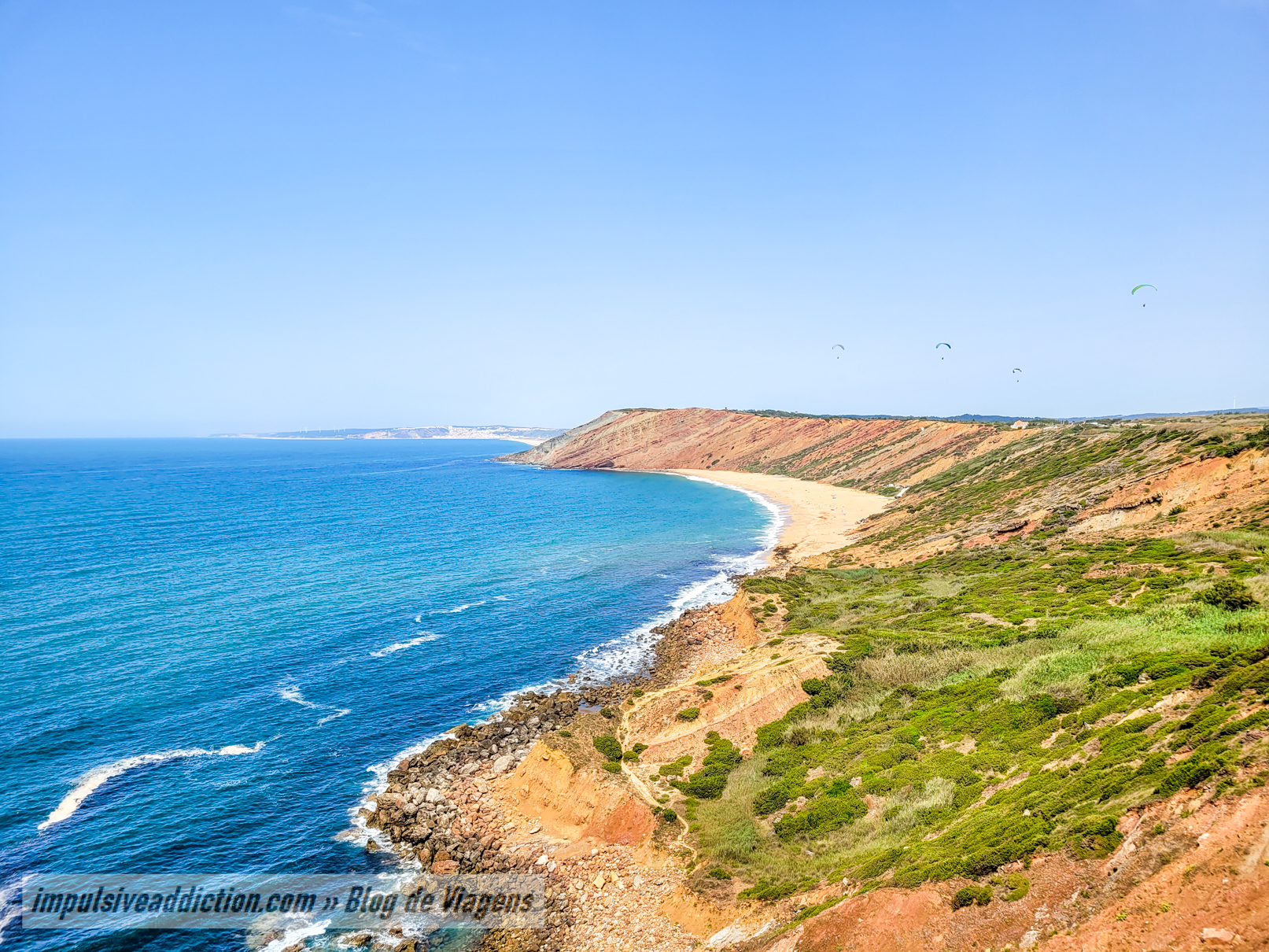
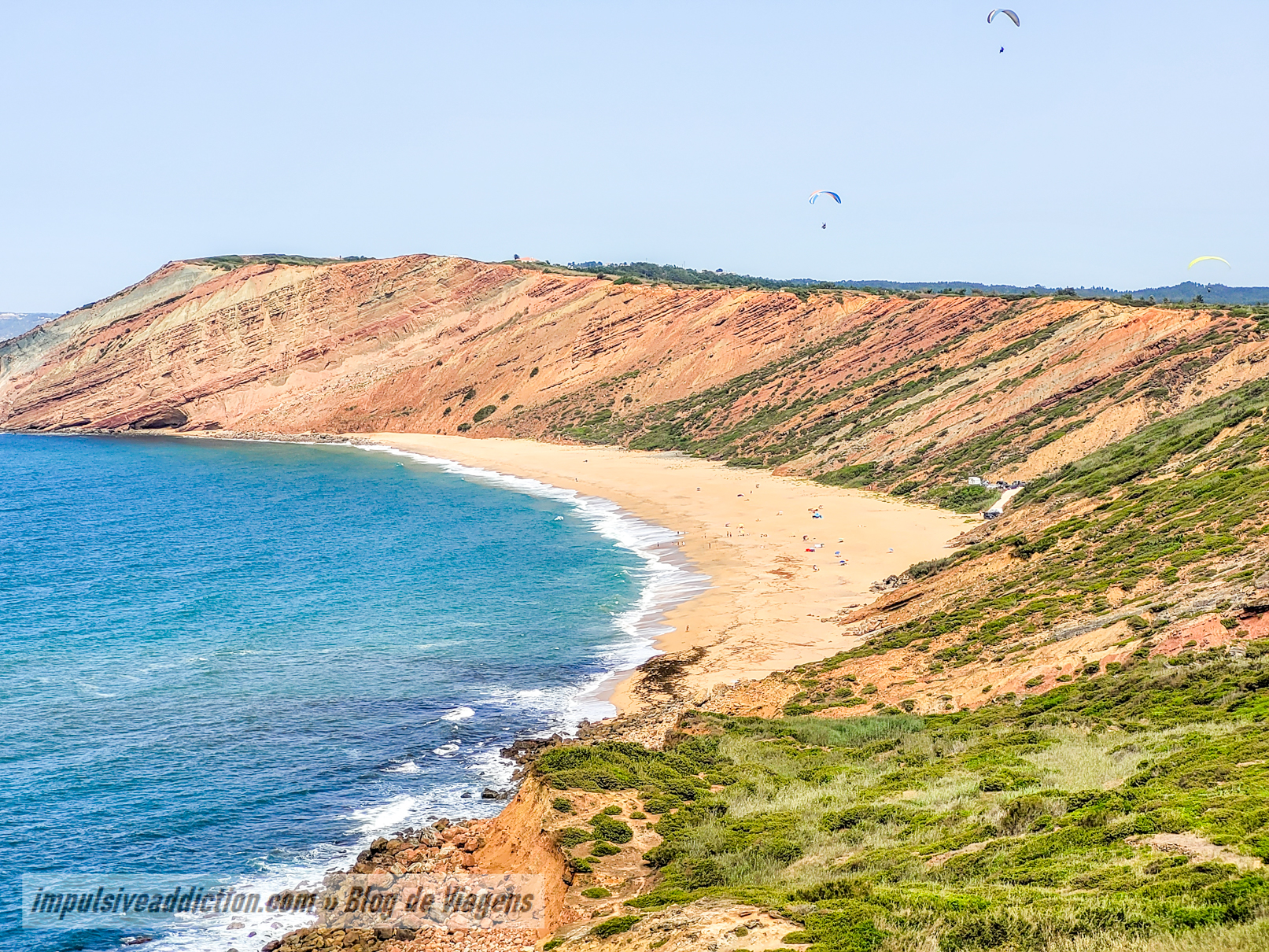
7. Tunnel to the Atlantic
The descent or ascent to reach the aforementioned viewpoints on foot, or at least São Martinho do Porto lighthouse viewpoint, is very popular with visitors, as the promontory is in plain sight and everyone wants to admire its fabulous view of the bay.
What most people don’t know is that there is a tunnel crossing the promontory at its base, at these coordinates. If you go up to the lighthouse on foot, don’t forget to make a detour to this tunnel, accessing another viewpoint of the Atlantic waves at the base of the cliffs.
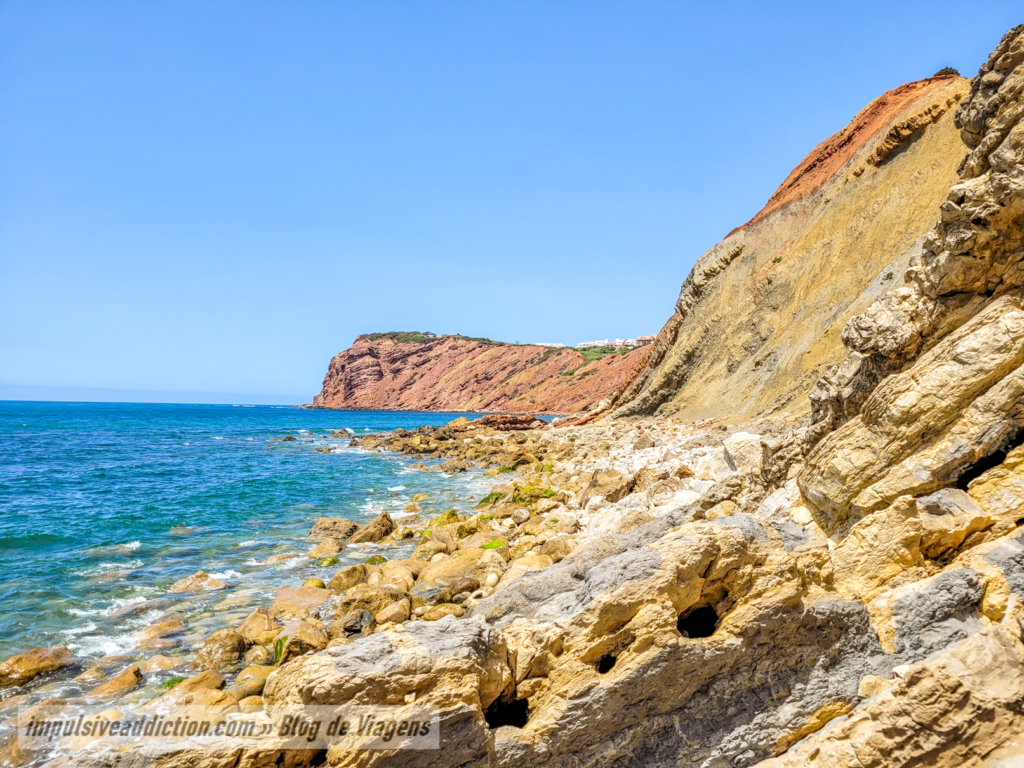
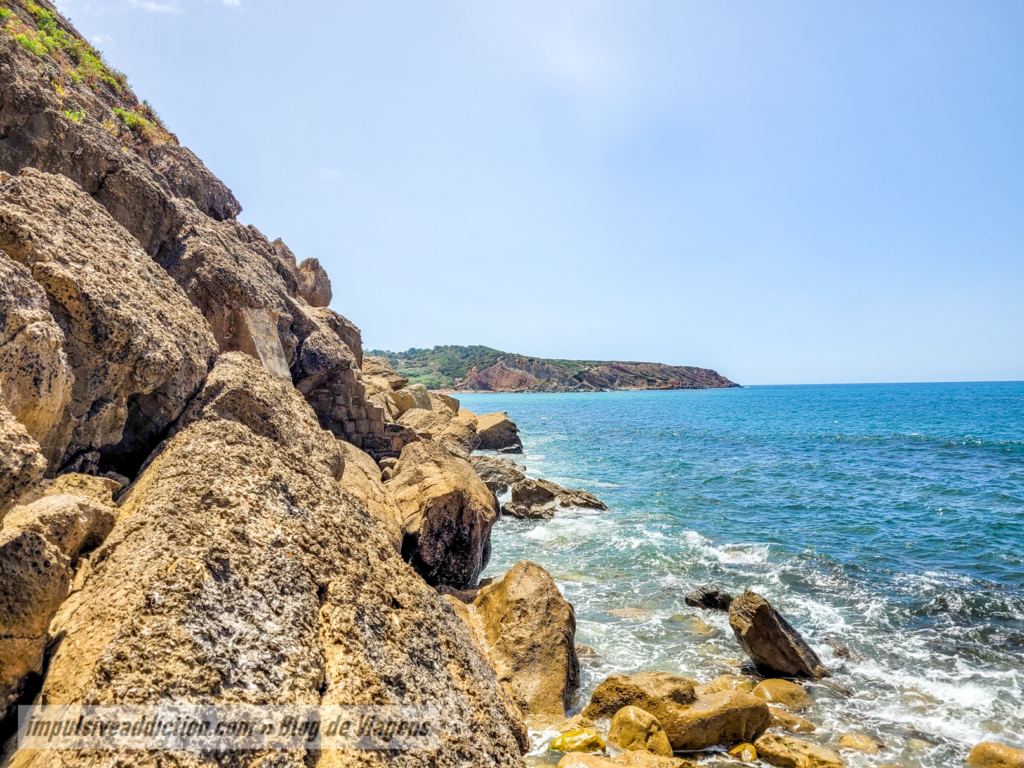
8. Paragliding in São Martinho do Porto
So that you don’t forget the possibility of paragliding, here’s a link to a website where you can book the experience. I’ve met a lot of people doing it there, and I think it’s one of the ideal places to do it. 😉
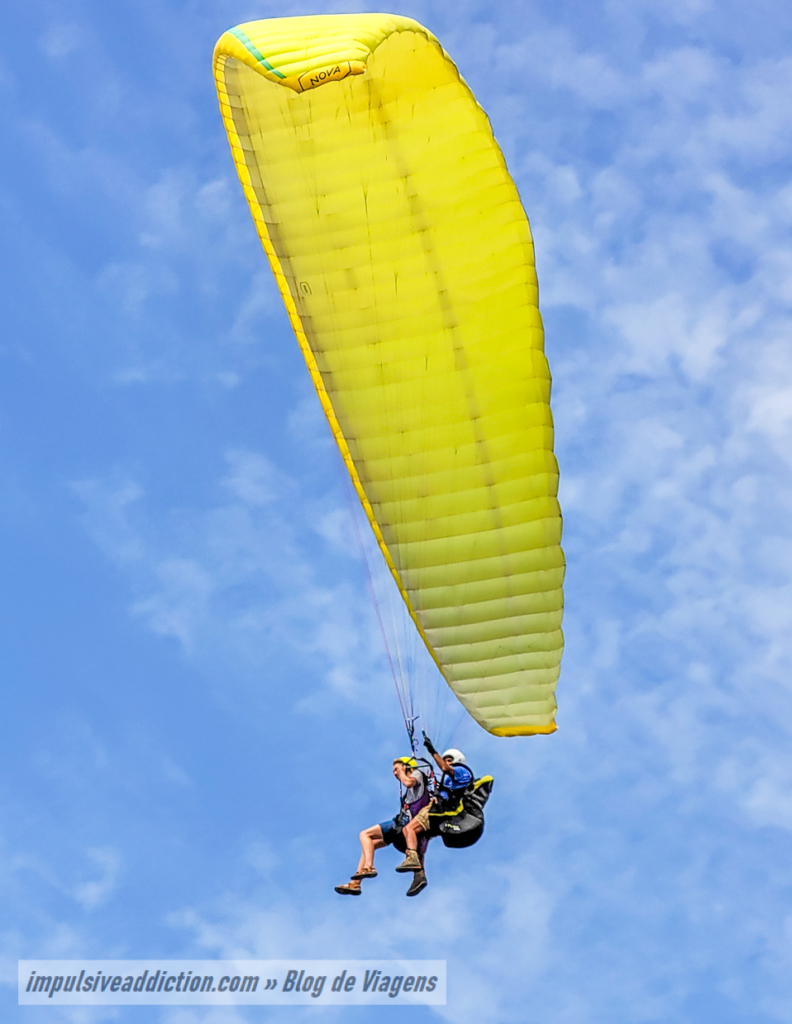
Visit the North Coast of Alcobaça
Next up is the north coast of Alcobaça, where the beaches are rougher, although they retain the rocky “walls” of Portugal’s West Coast. It’s not guaranteed, but it’s likely that you’ll find some lagoons at low tide, for example at the beaches of Légua and Vale Furado, or even at Polveira beach.
From south to north, I would mention the following beaches in Alcobaça:
- Légua beach – There is a parking lot, but it’s small, so most people leave their cars on the steep access road. If you don’t feel comfortable doing that, leave it near the village, but be prepared to walk down to the beach. It has a blue flag and there are lifeguards during the bathing season.
- Vale Furado Beach – This is the most beautiful beach in Alcobaça, after São Martinho do Porto, as it has spectacular cliffs. The path that leads visitors to the sand, however, is not easy for those with limited mobility. The name of this beach comes from its rock formations, which have been eroded over the years.
- Paredes da Vitória Beach – More urban than the previous ones, as it is right next to the town. It is crossed by a small stream that flows into the ocean.
- Polveira beach – It forms a small bay where the sea is calmer, and which can even be like a lagoon on certain days or tides. 😉 To the south you can see a large rock that separates it from Paredes da Vitória beach, which is shaped like a lion.
- And the beaches of Pedra do Ouro and Água de Madeiros – These were the ones I liked the least, because they have black cliffs all around, honestly less beautiful than the rest, in my opinion. In Pedra do Ouro, don’t forget to visit the village mill. As for the two beaches, I’d like to highlight the fact that they are geologically important, as many Jurassic fossils have been found there.
1. Légua beach
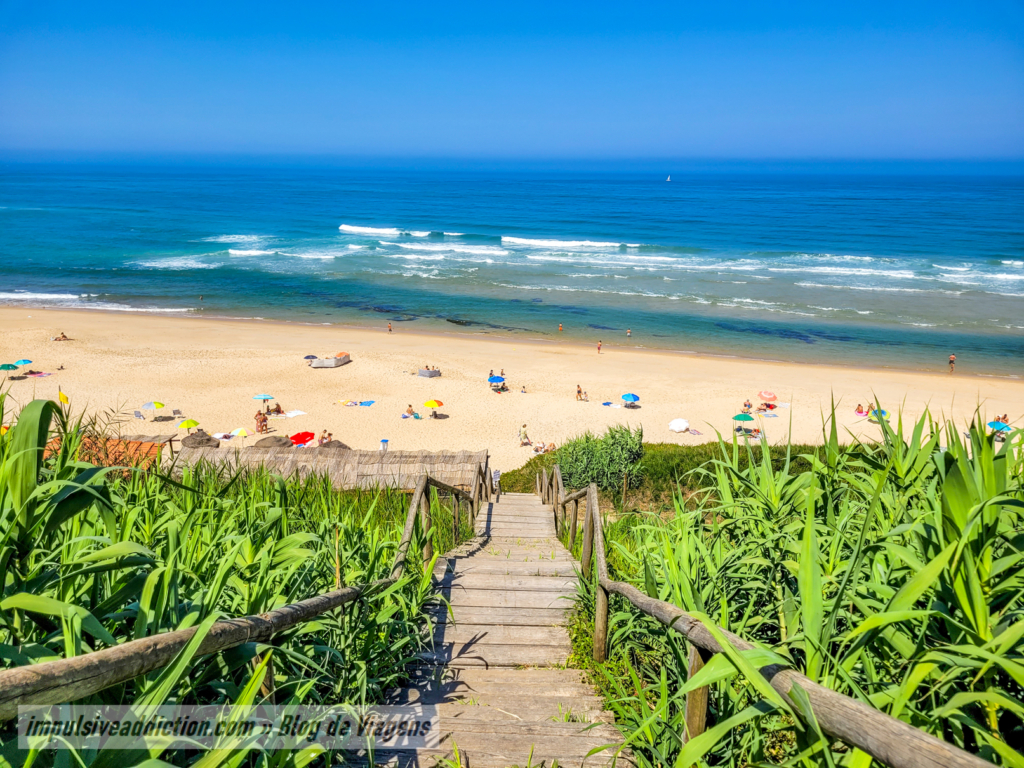
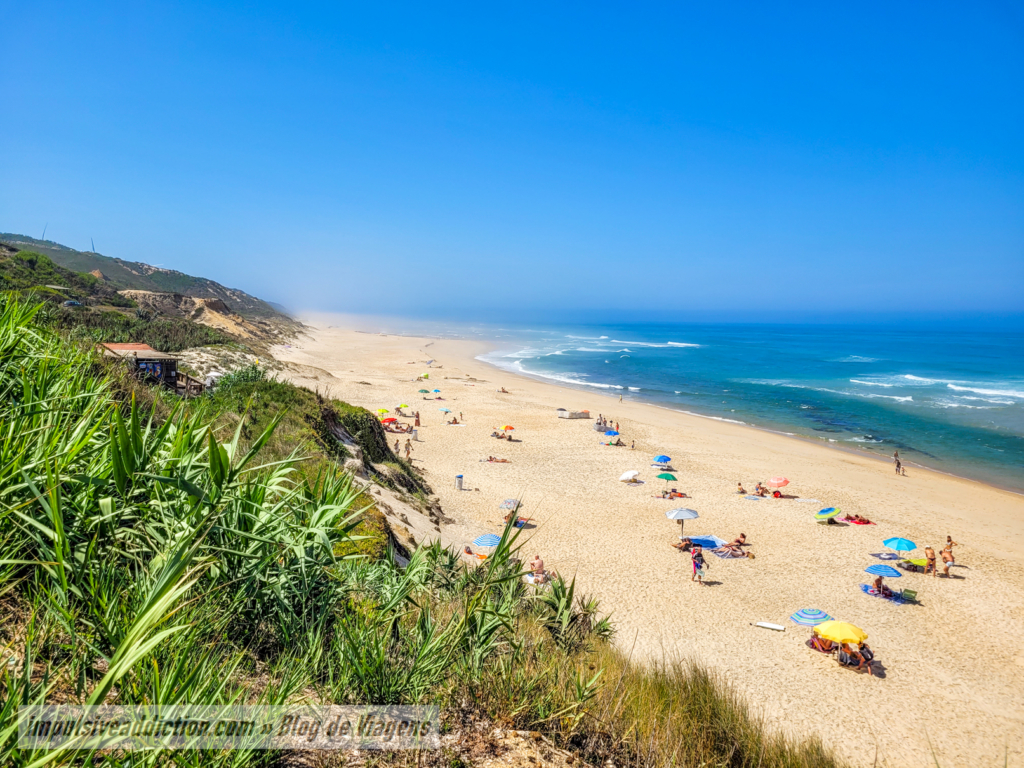
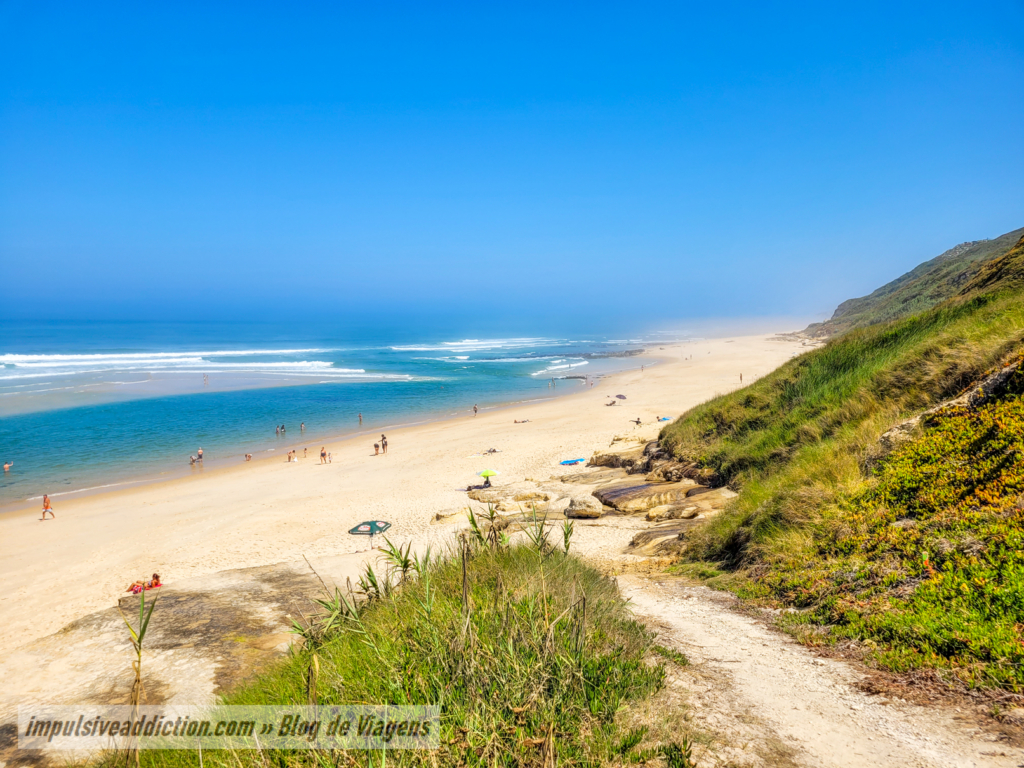
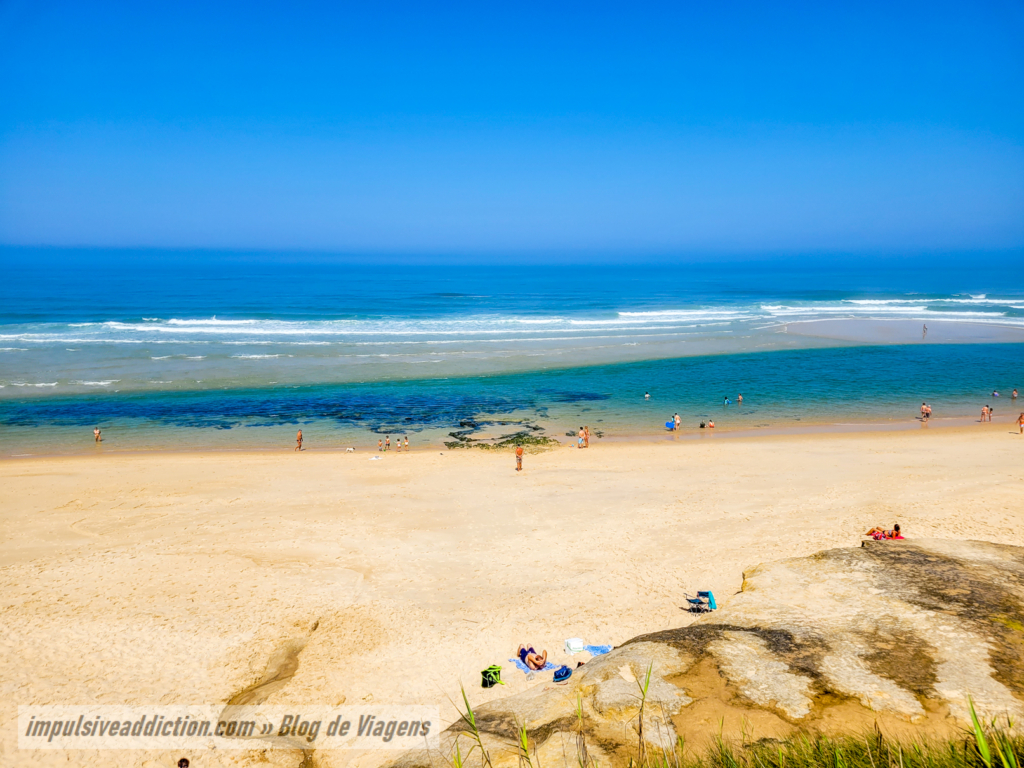
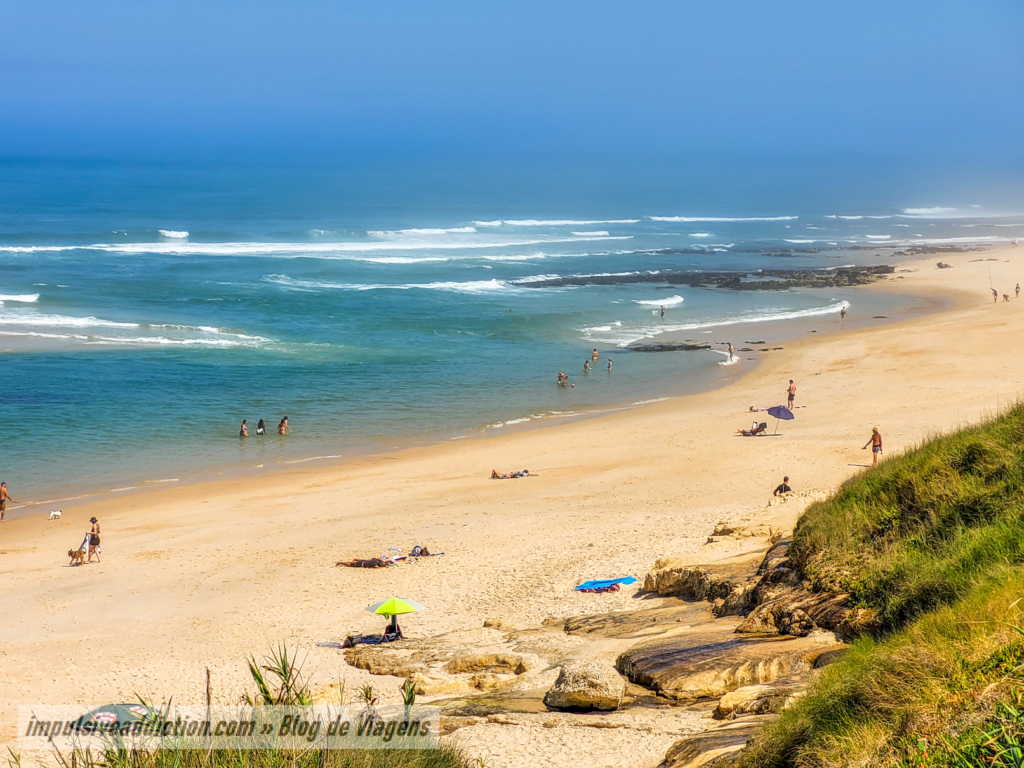
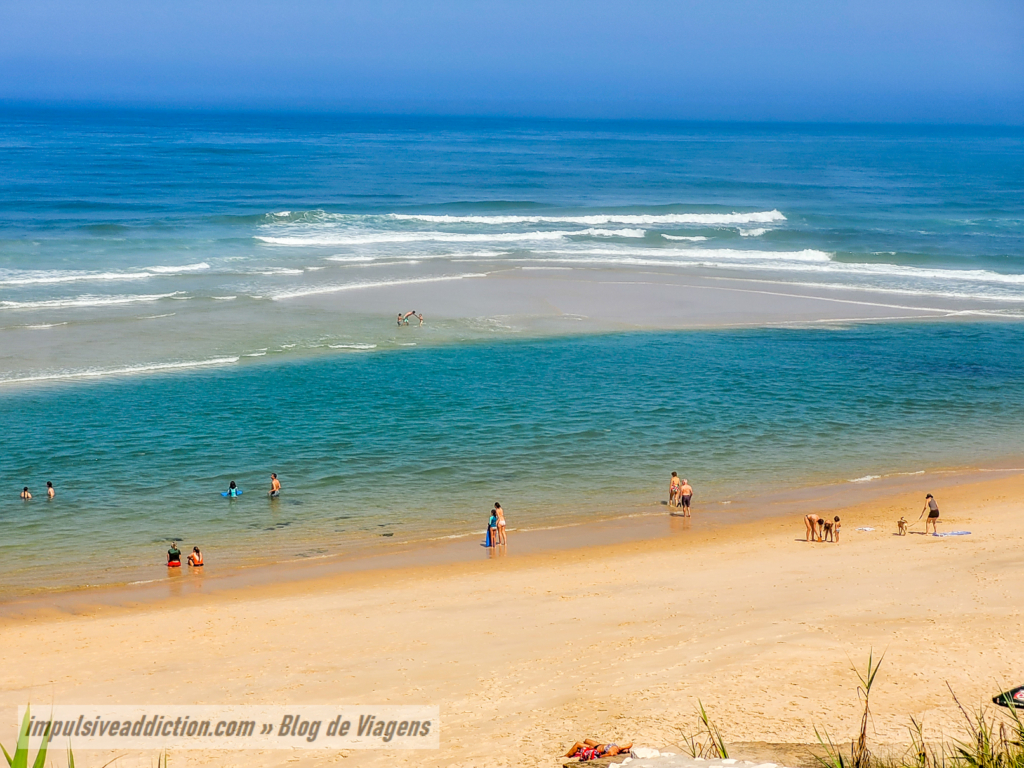
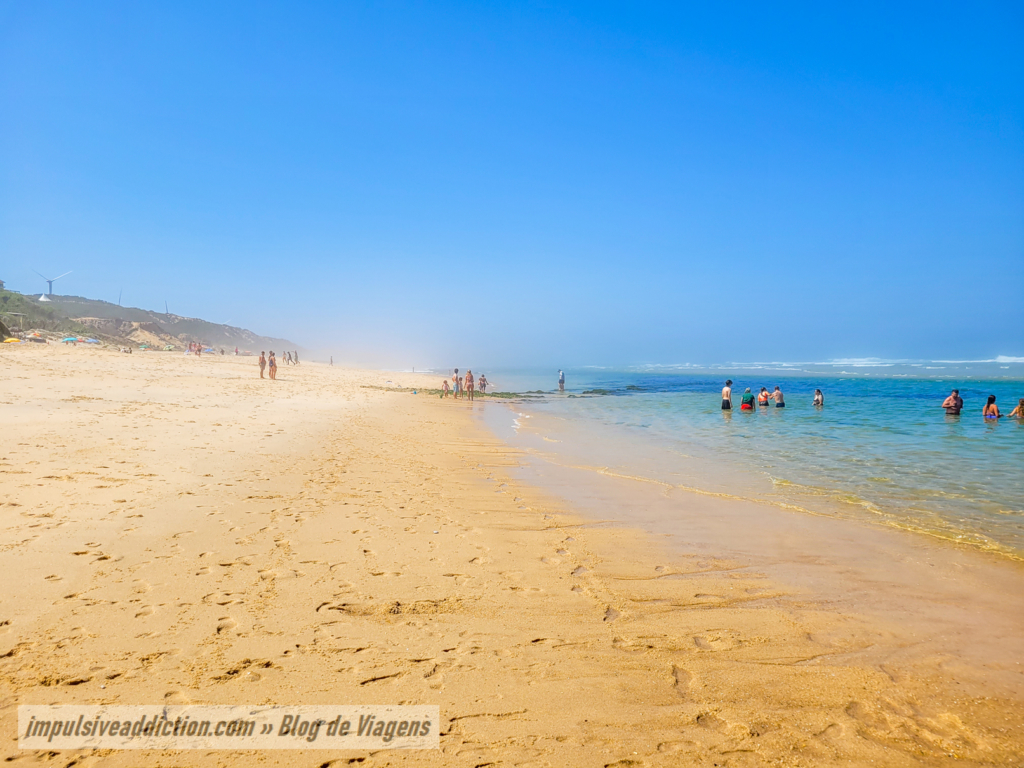
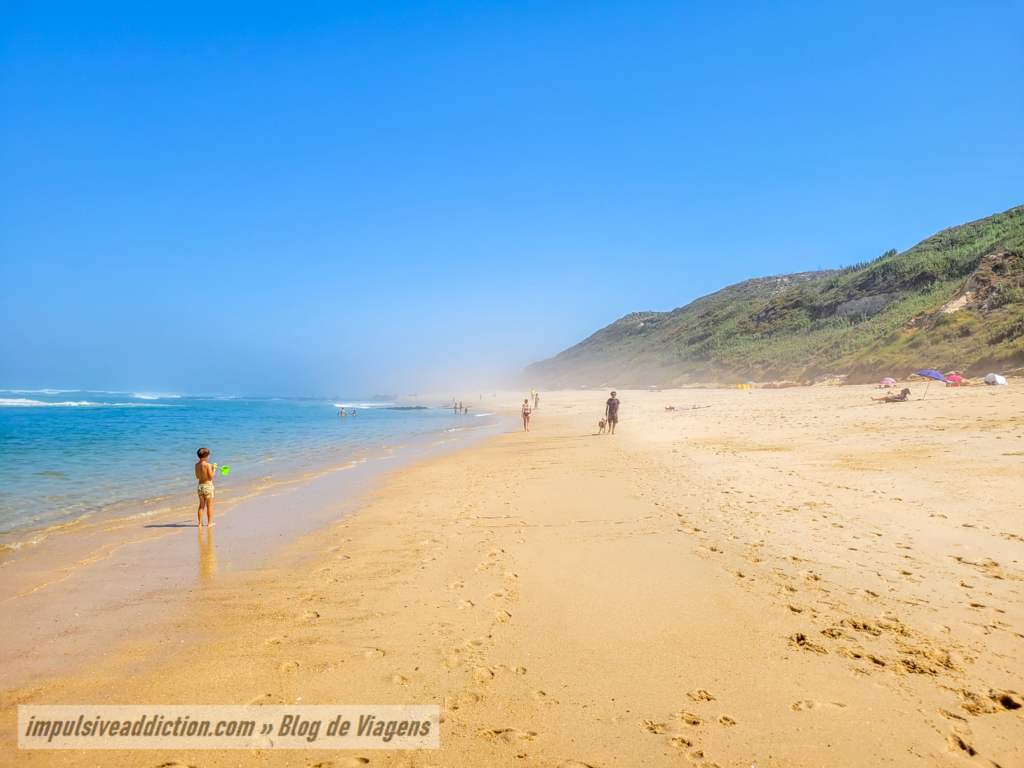
2. Vale Furado beach
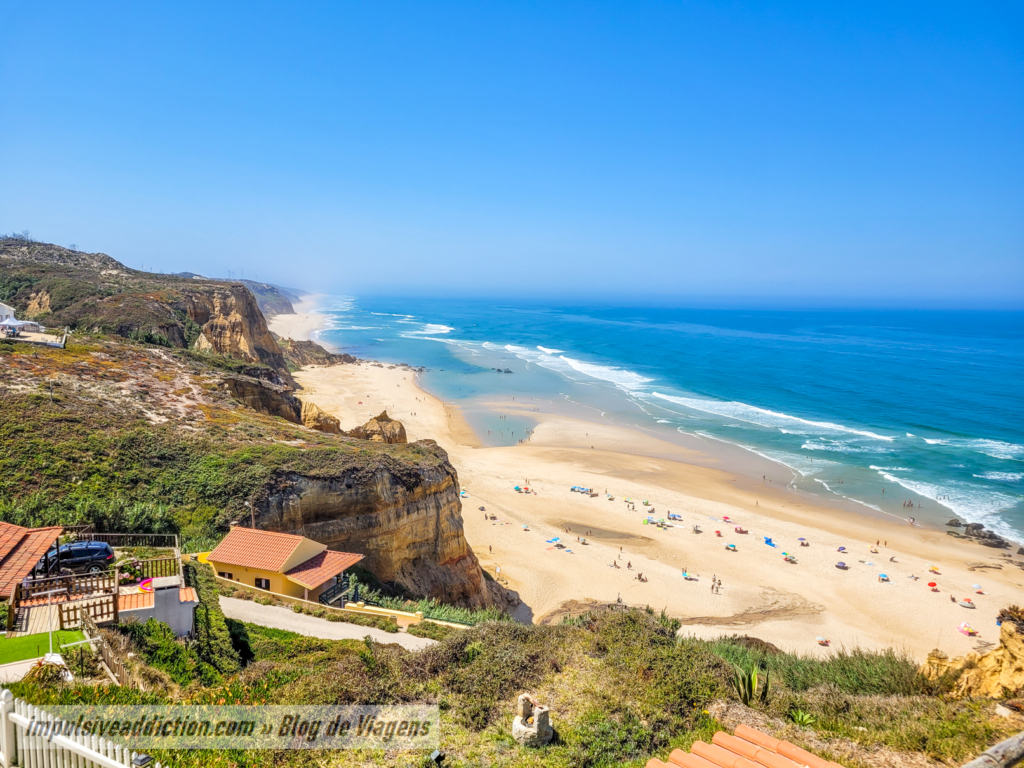
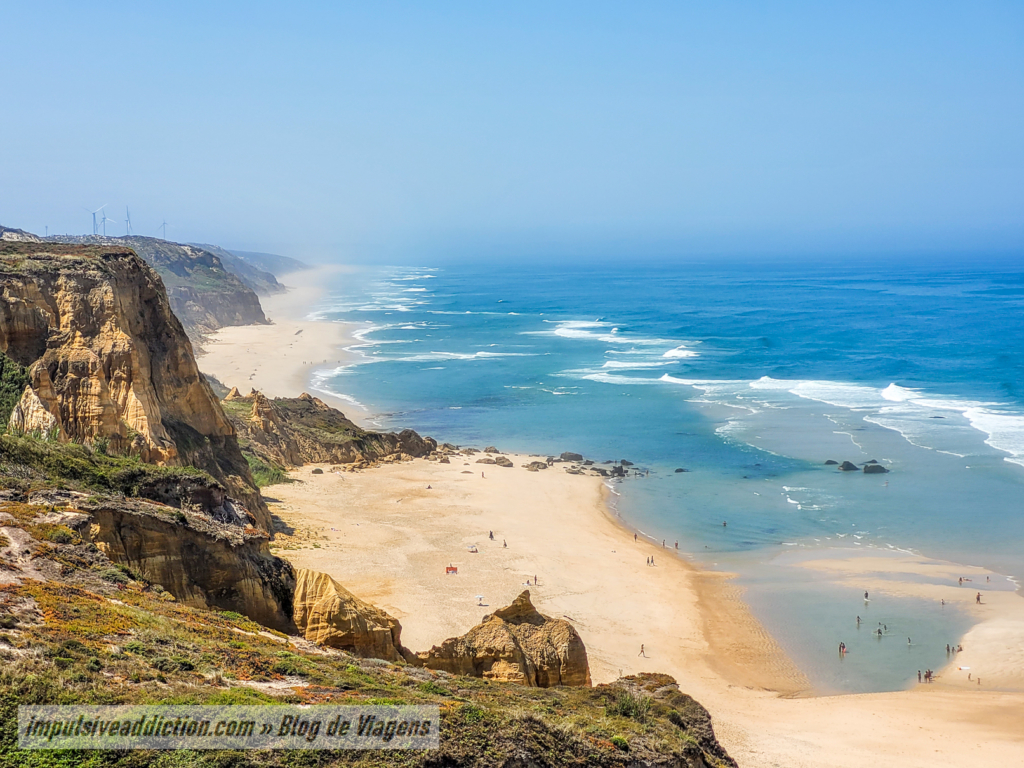
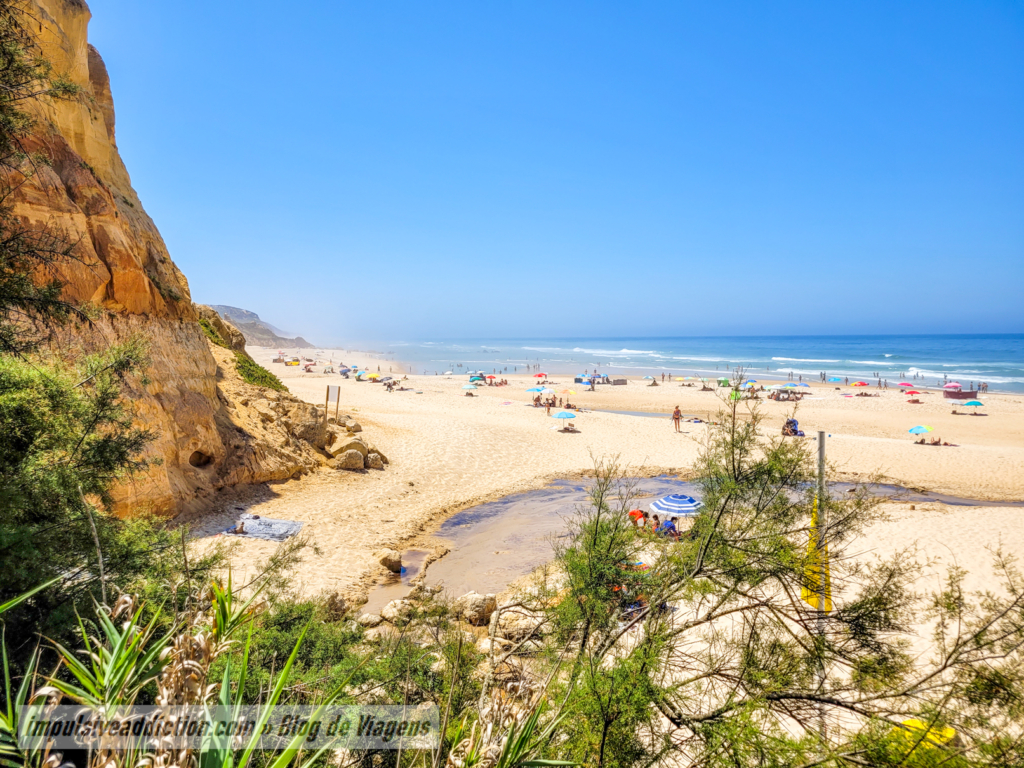
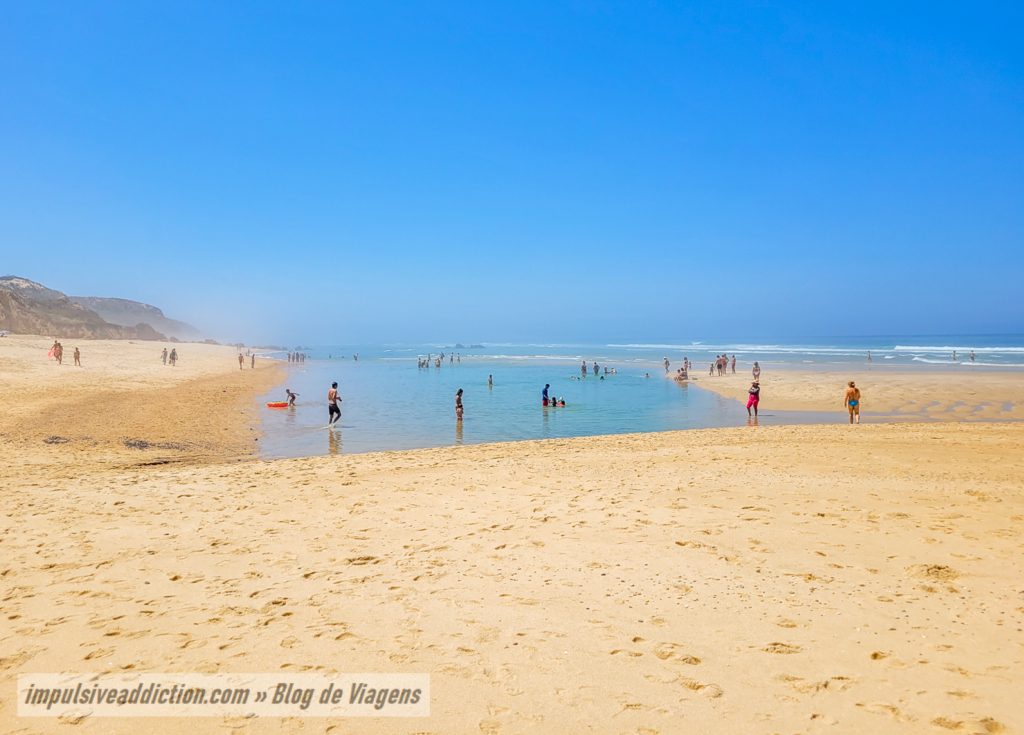
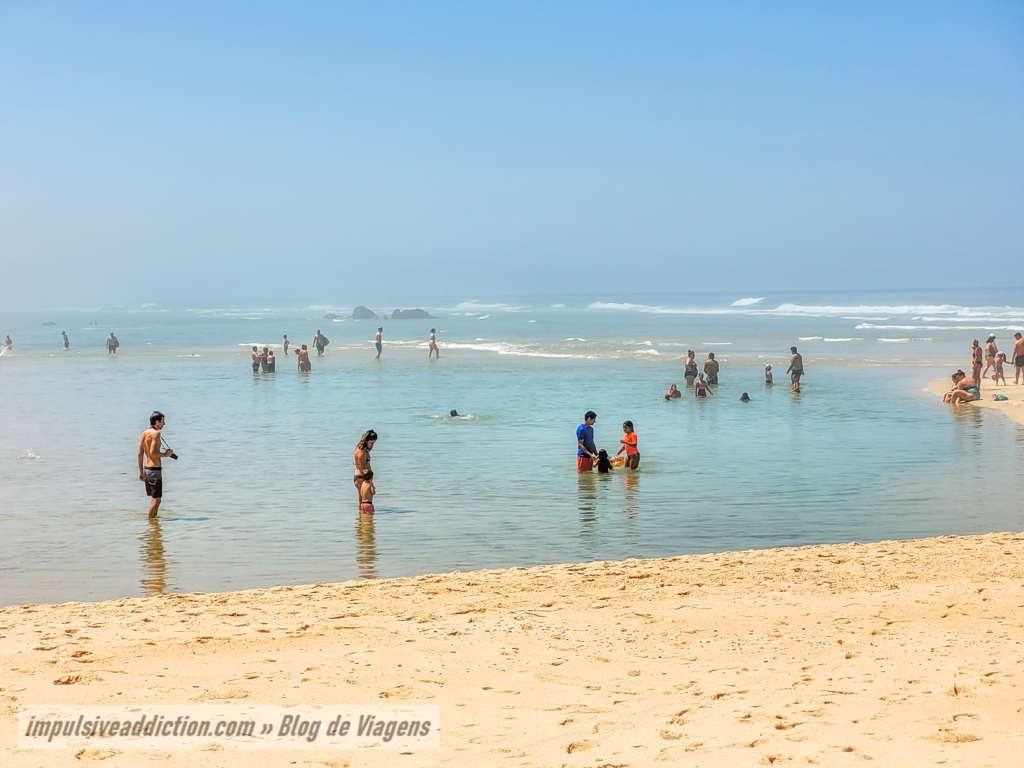
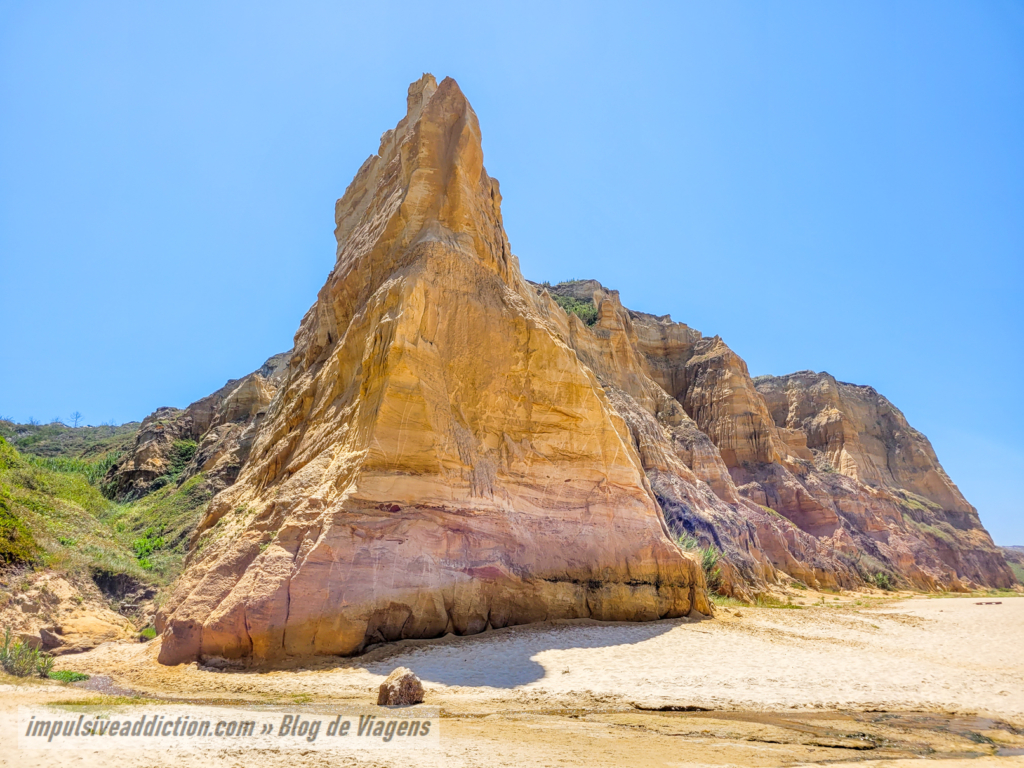
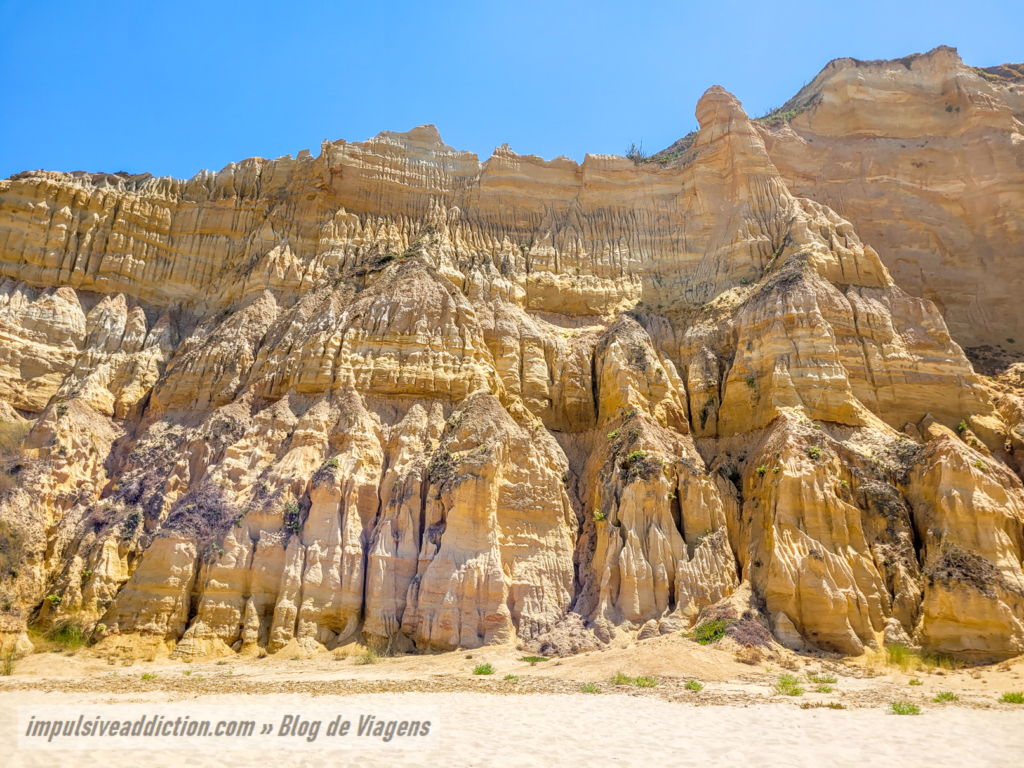
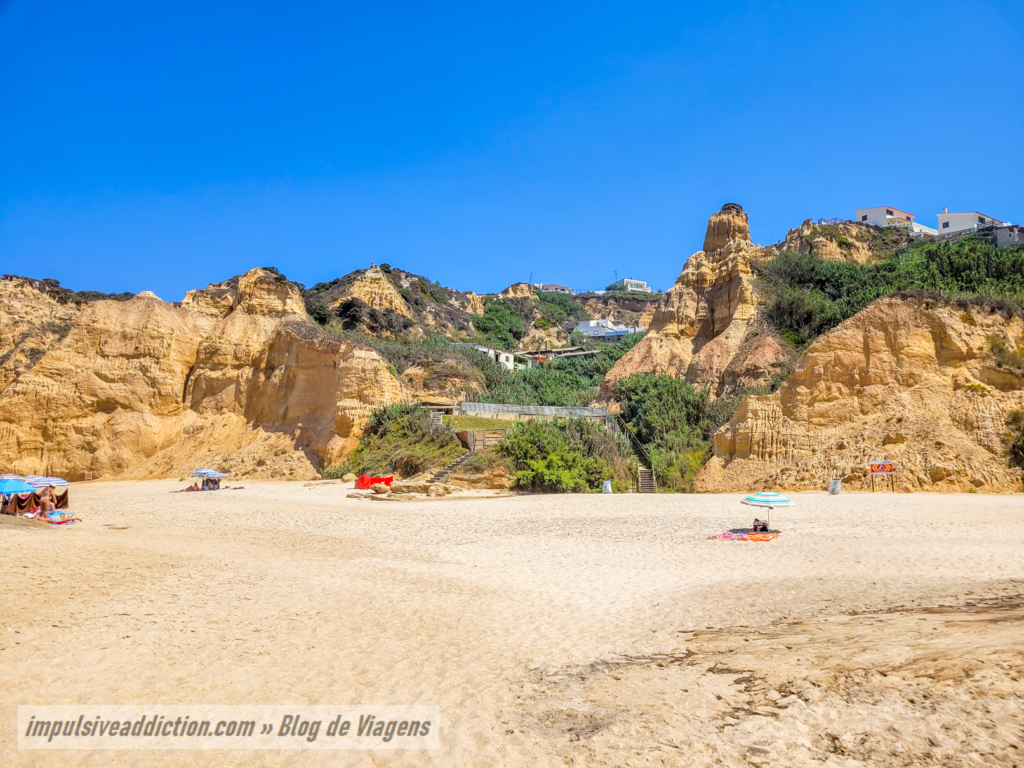
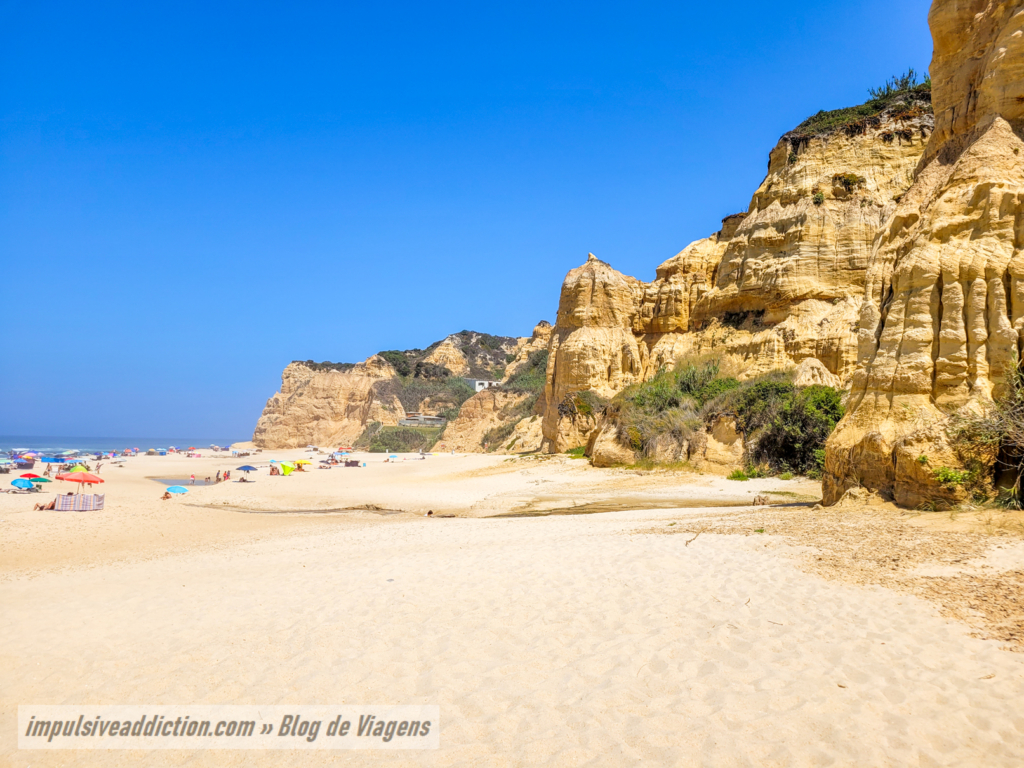
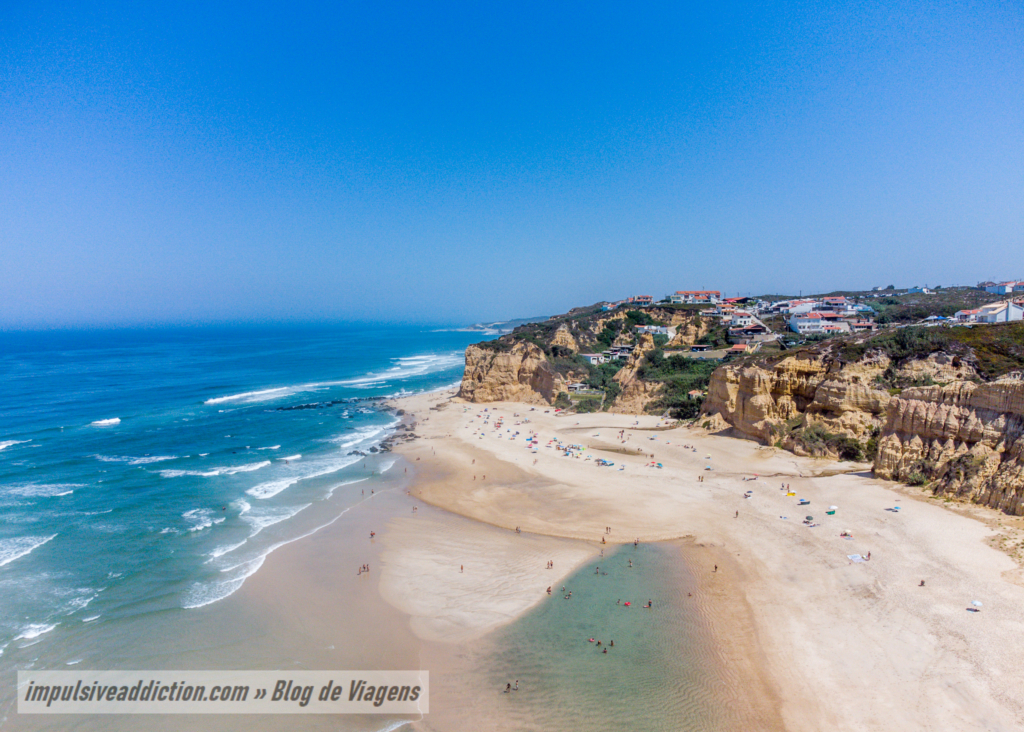
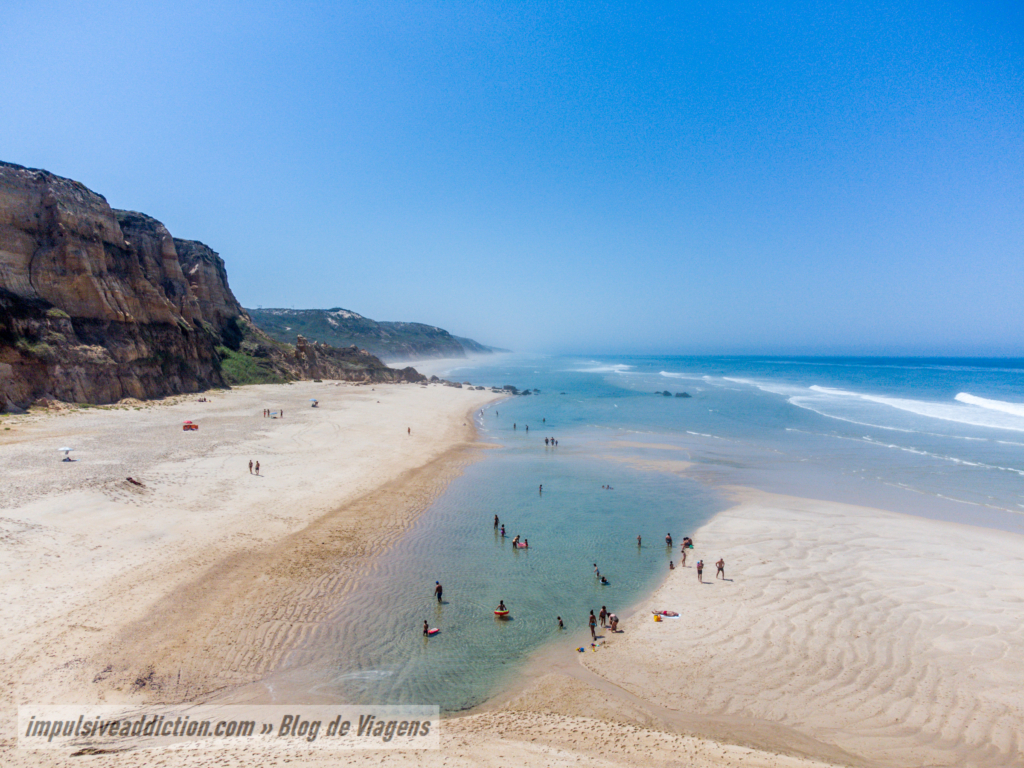
3. Paredes da Vitória Beach
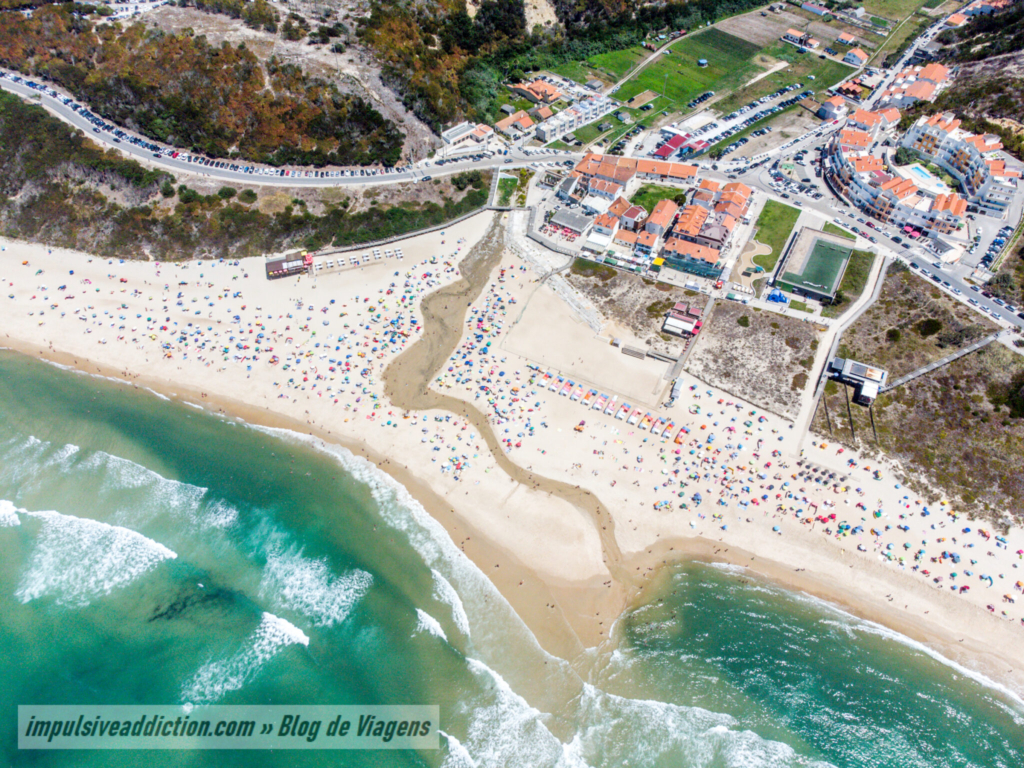
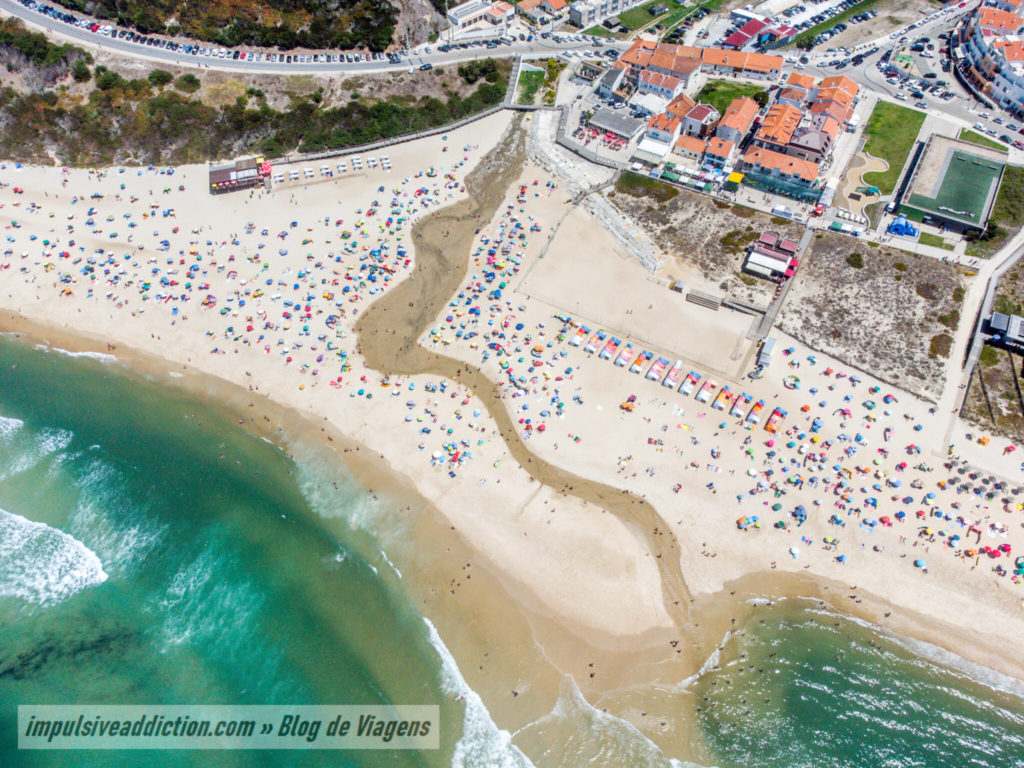
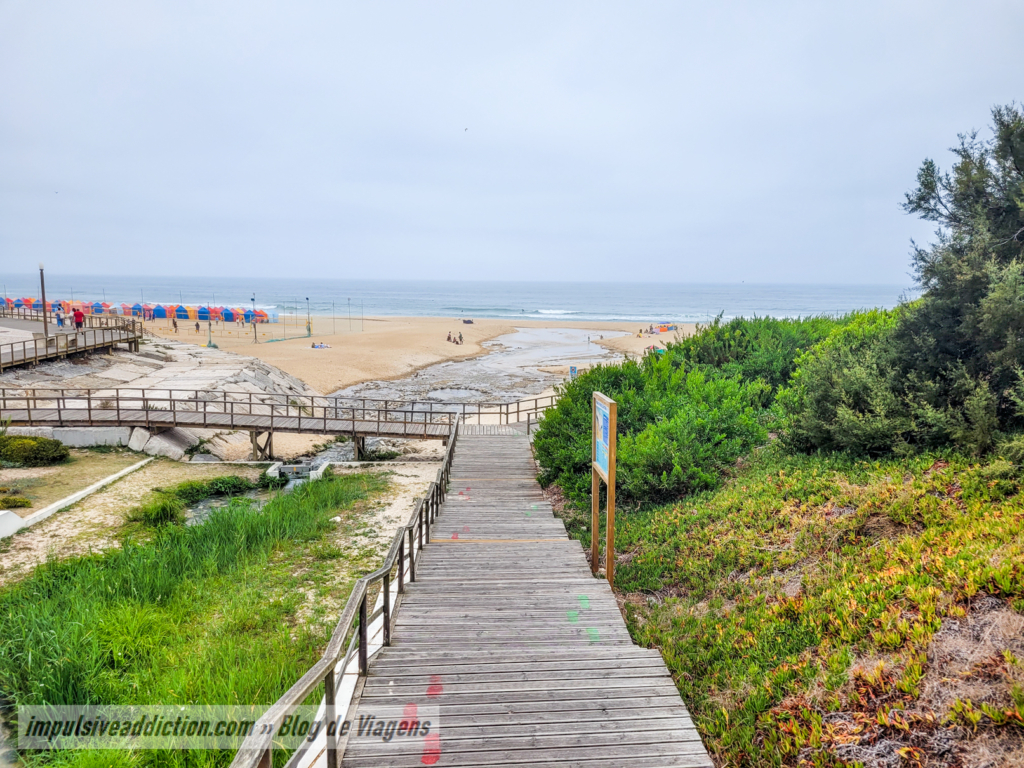
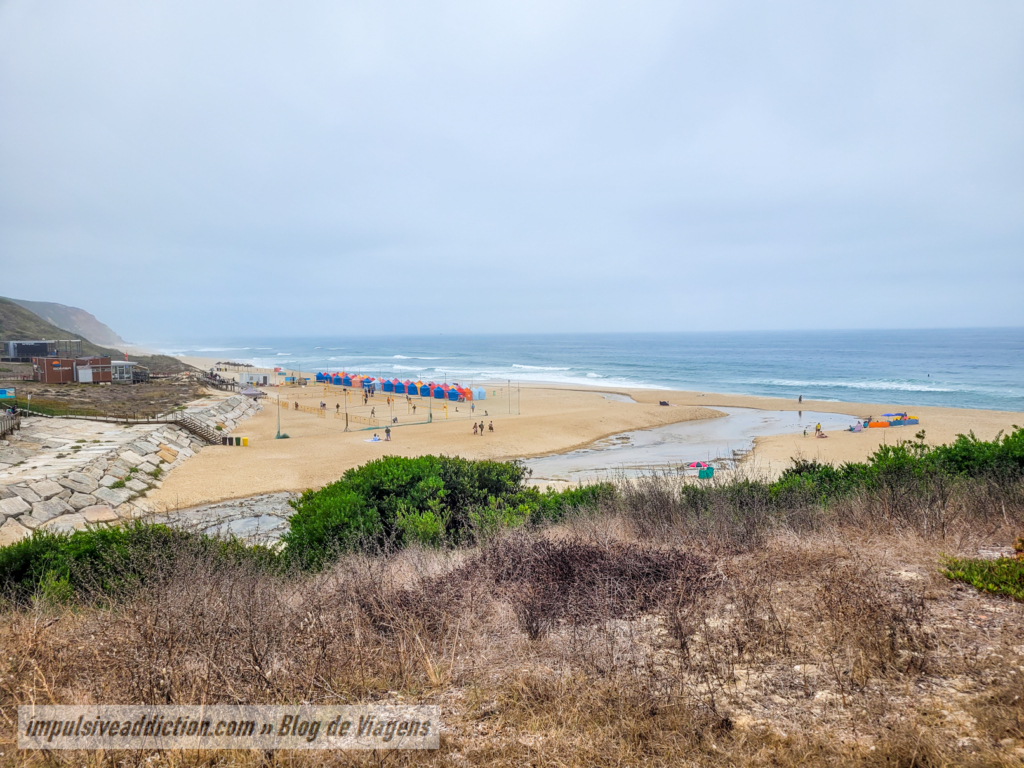
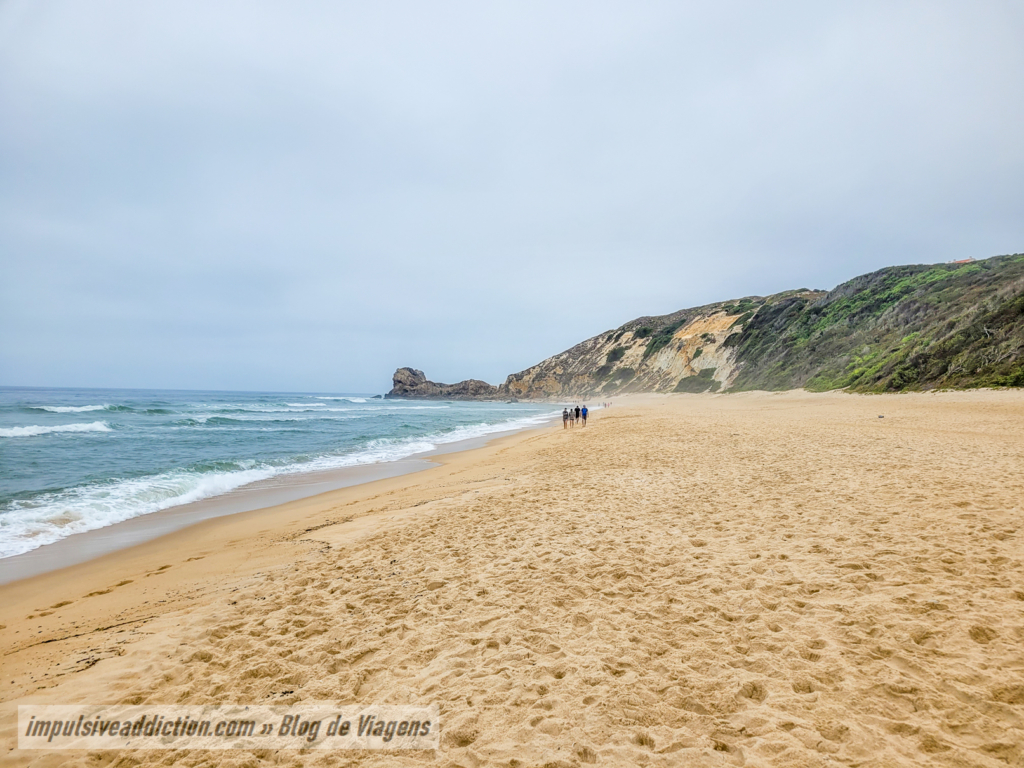
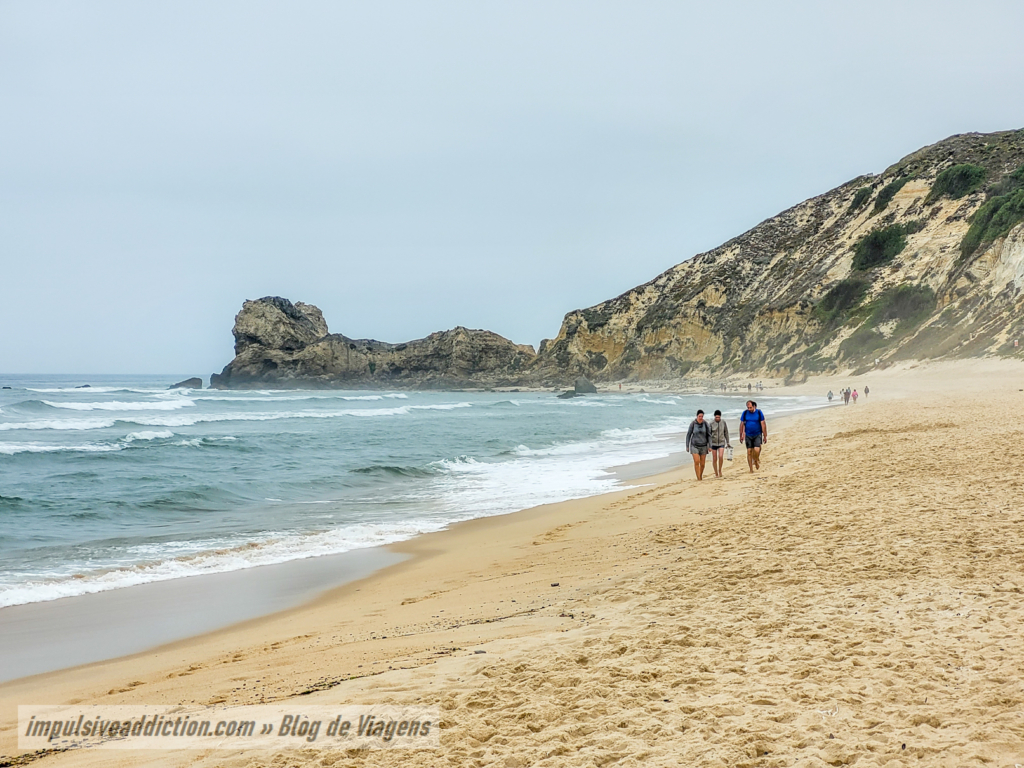
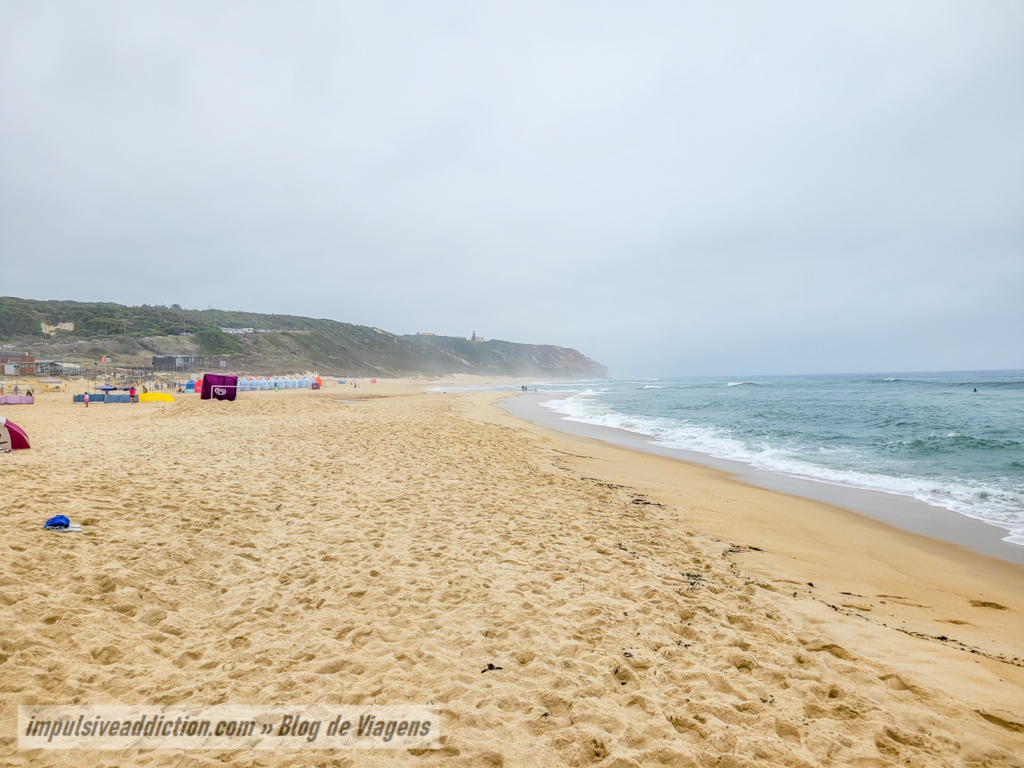
4. Polveira beach
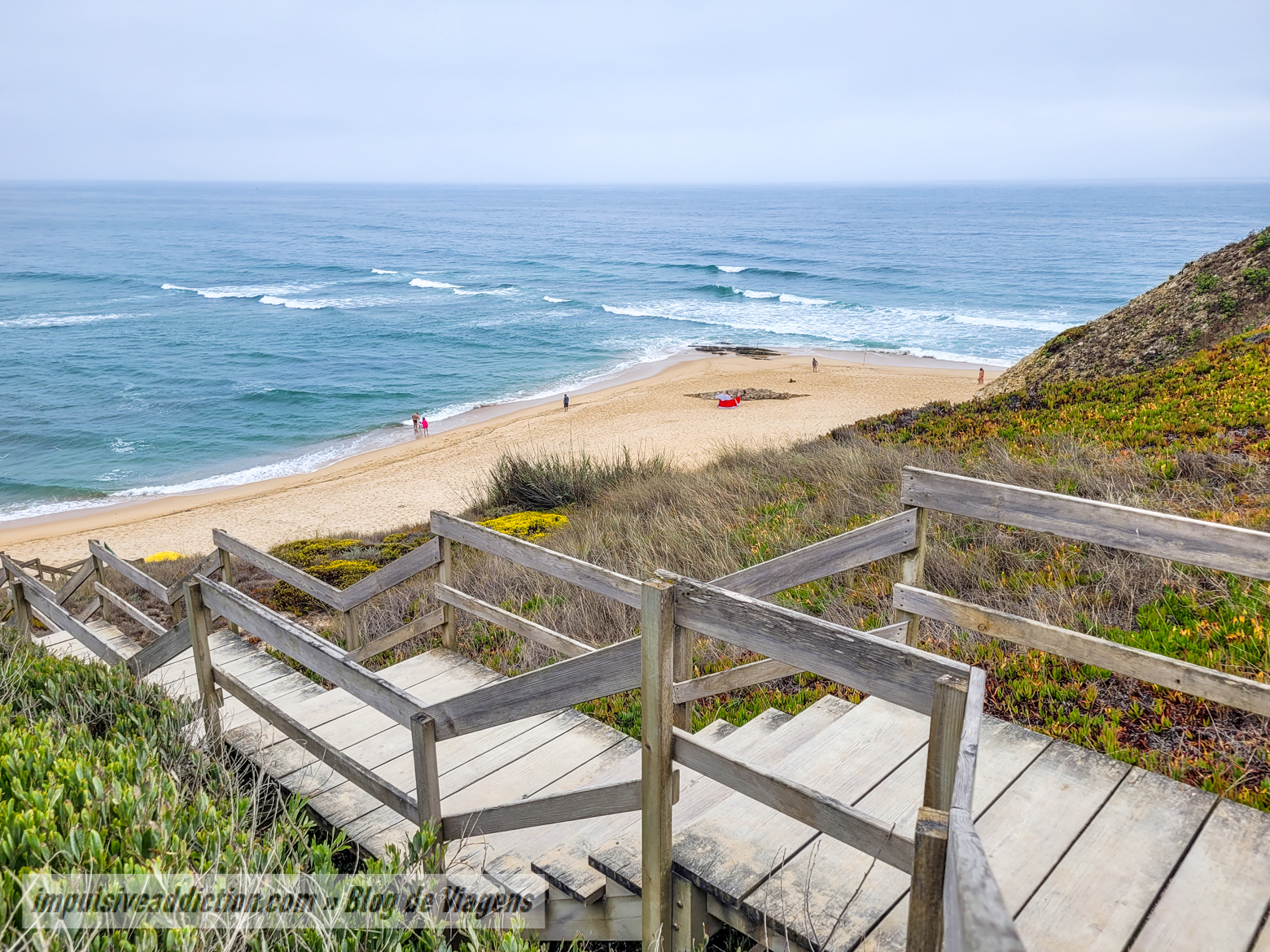
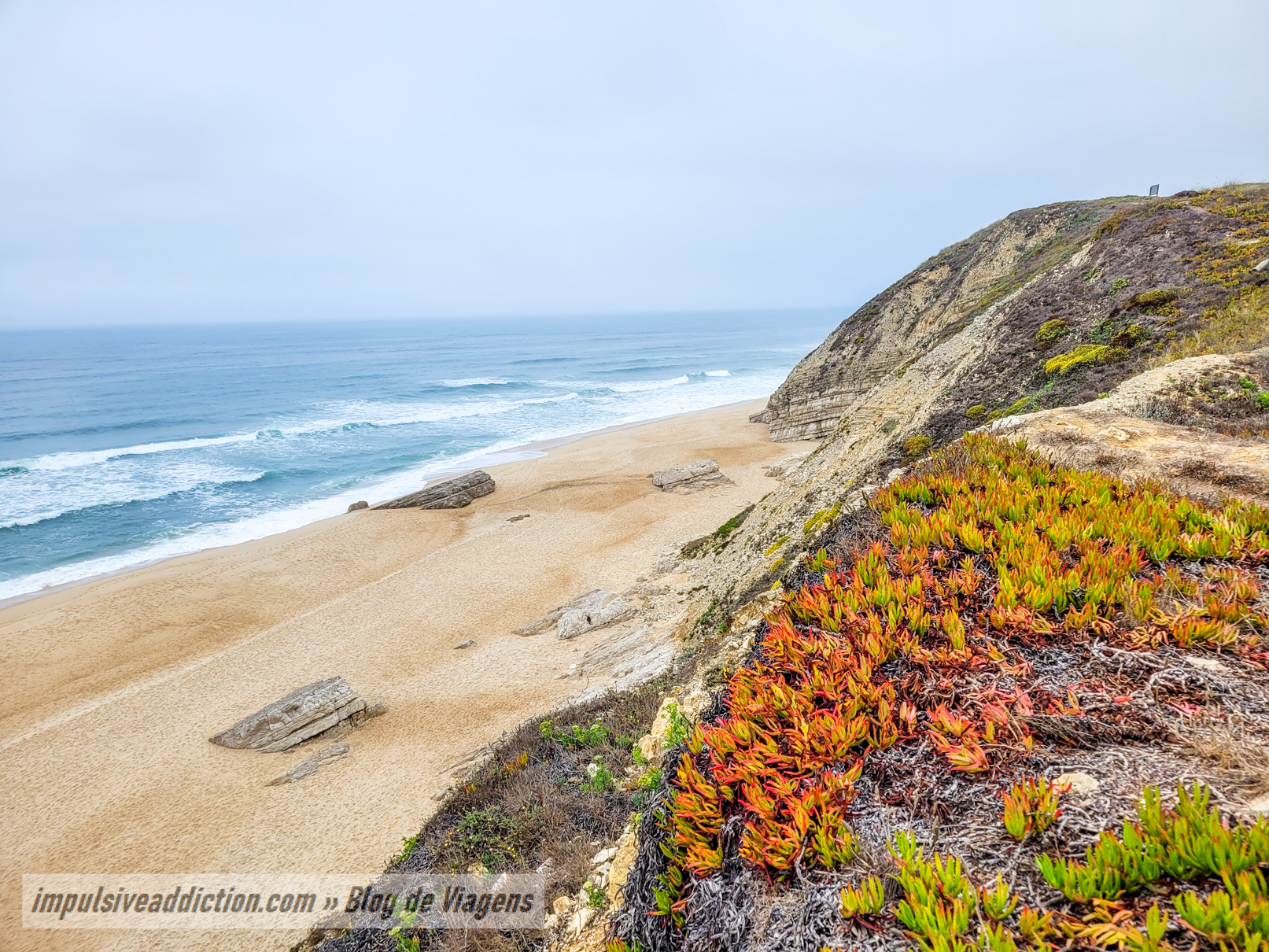
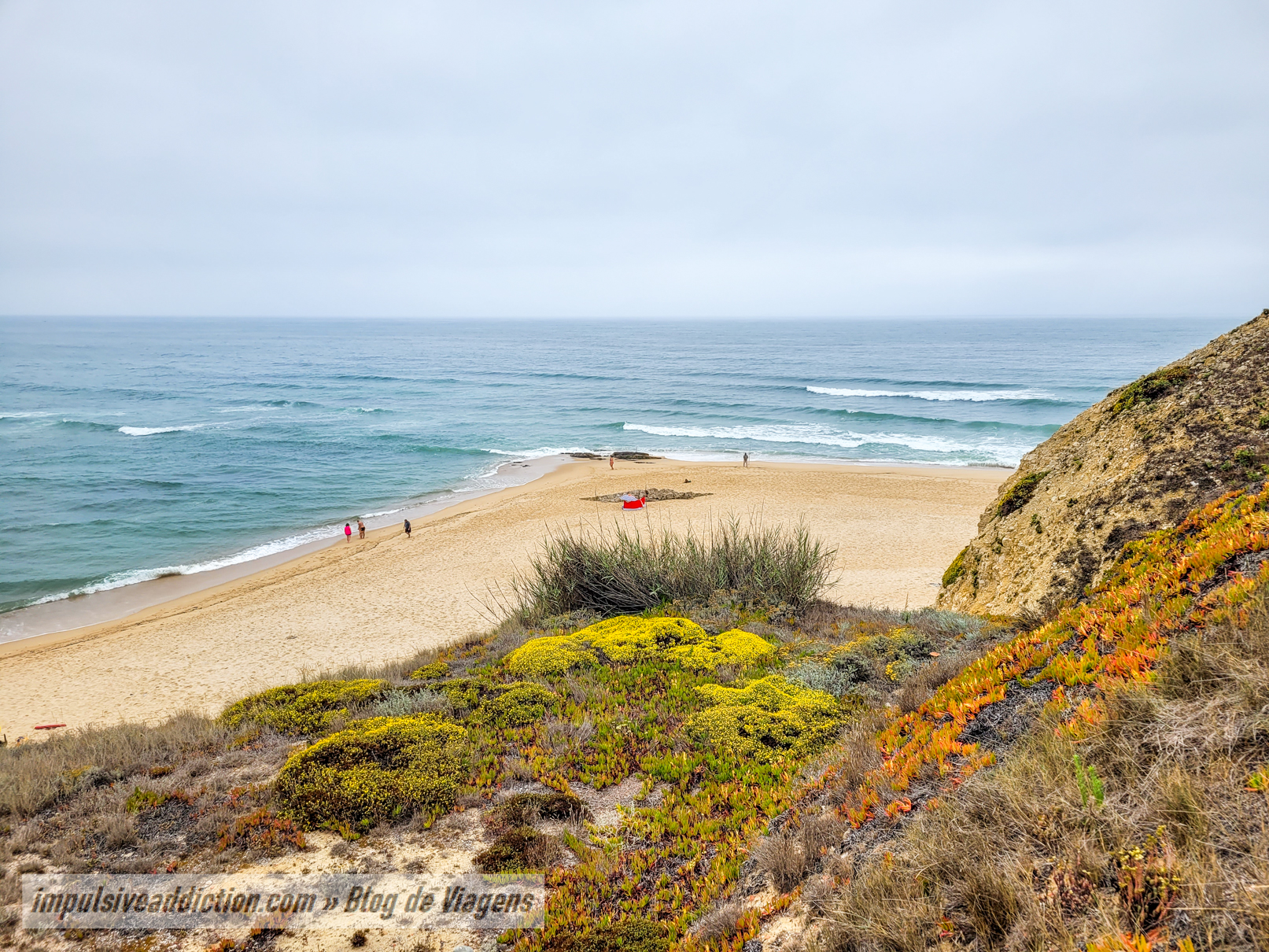
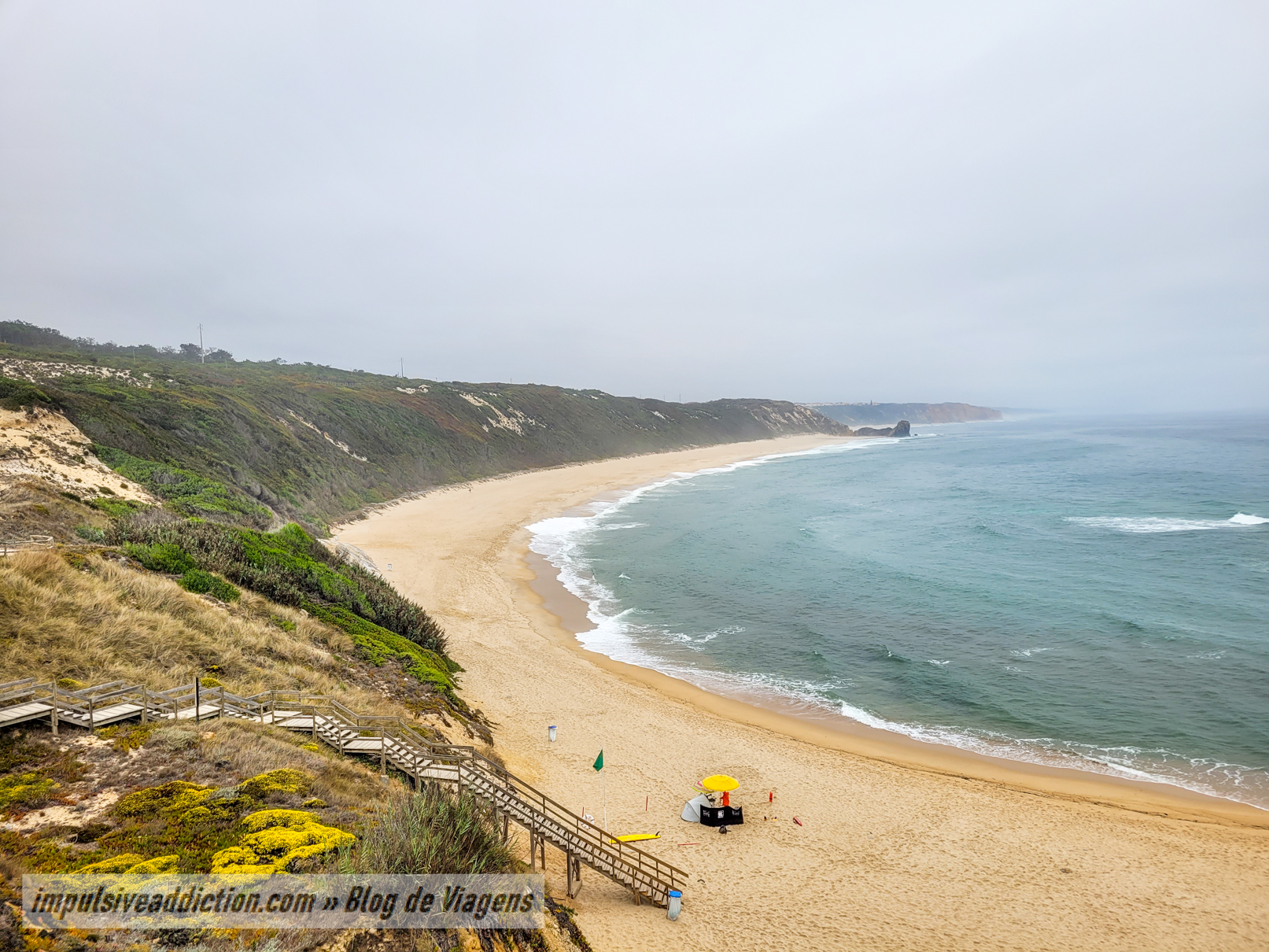
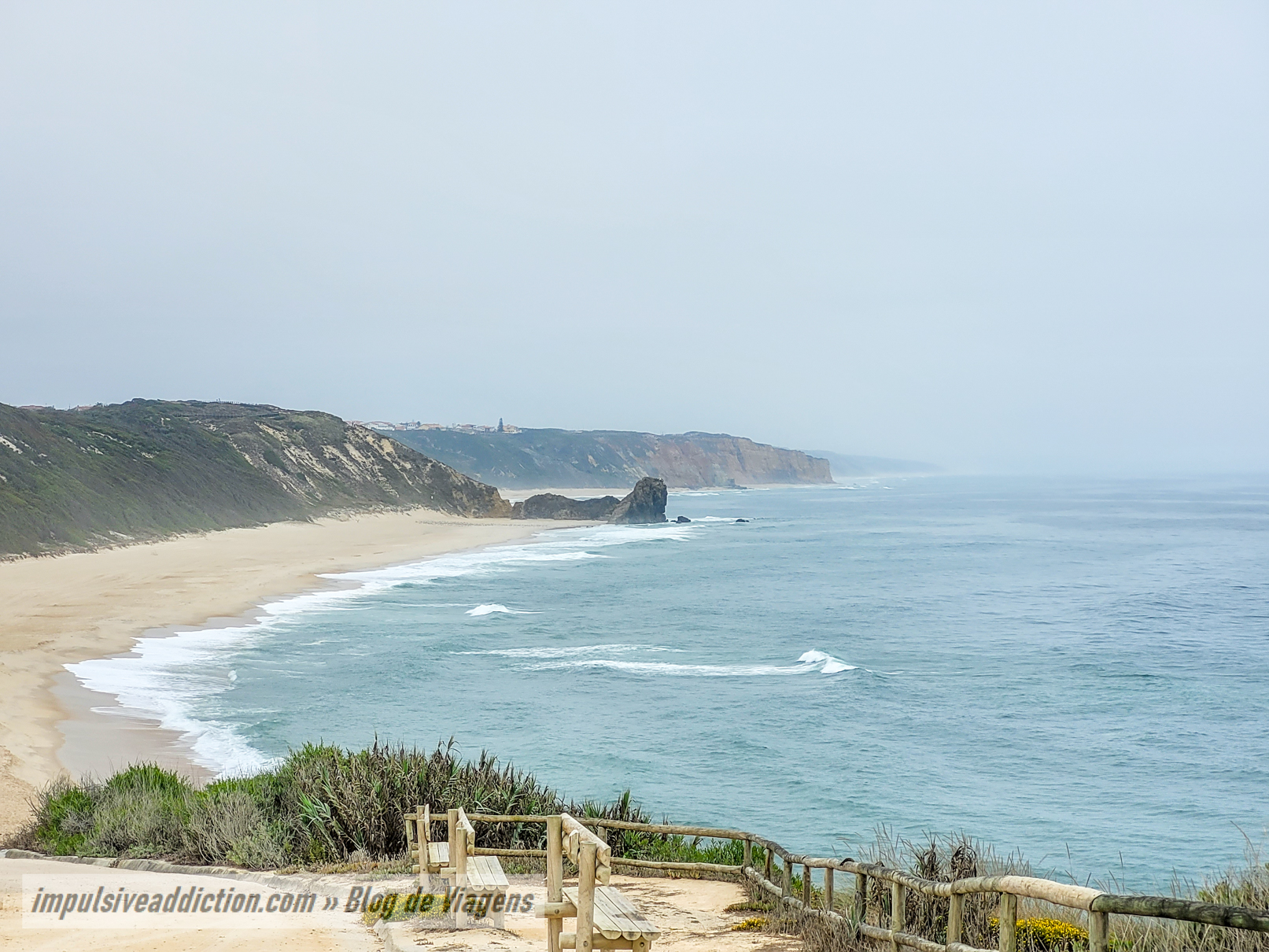
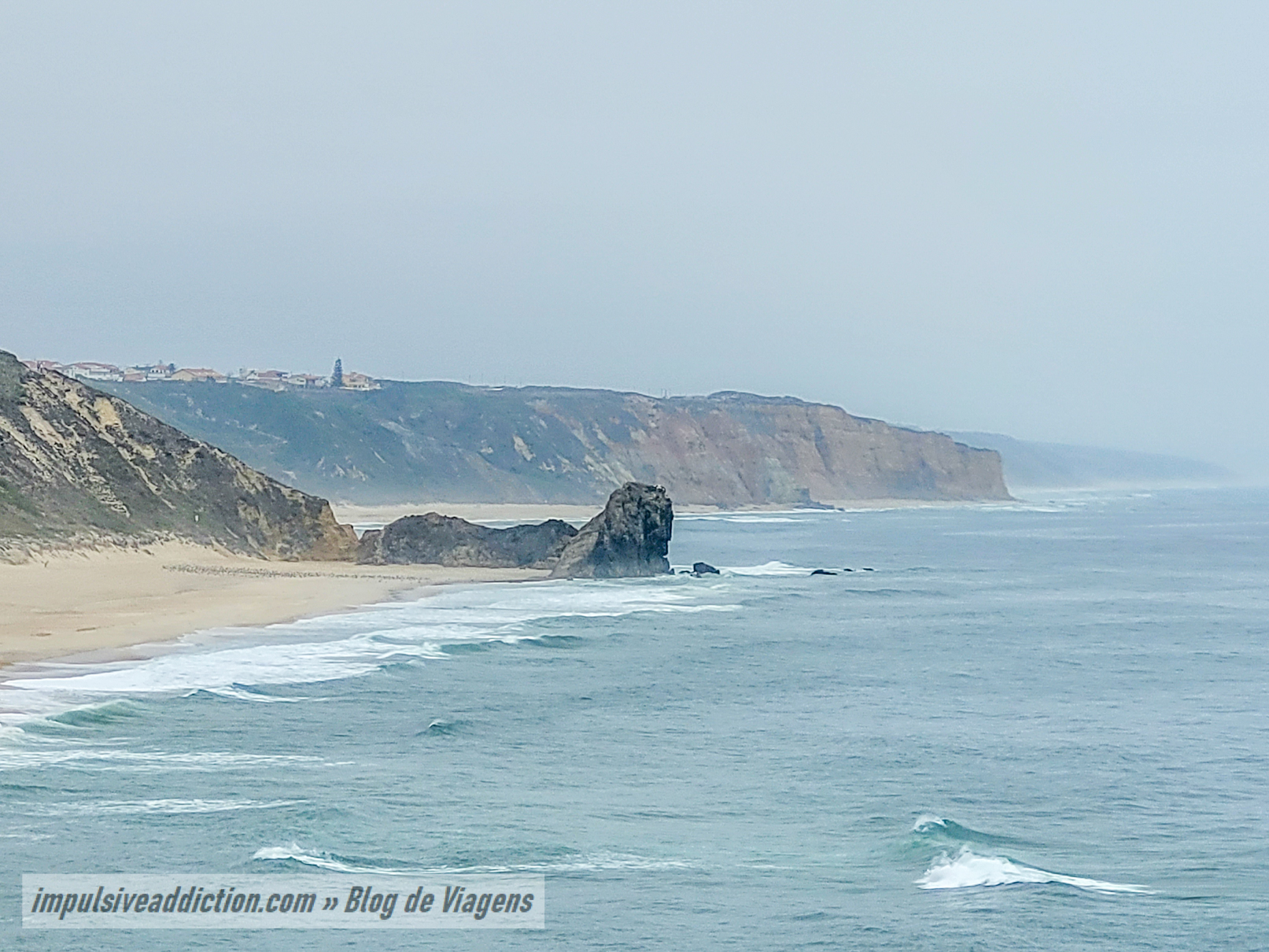
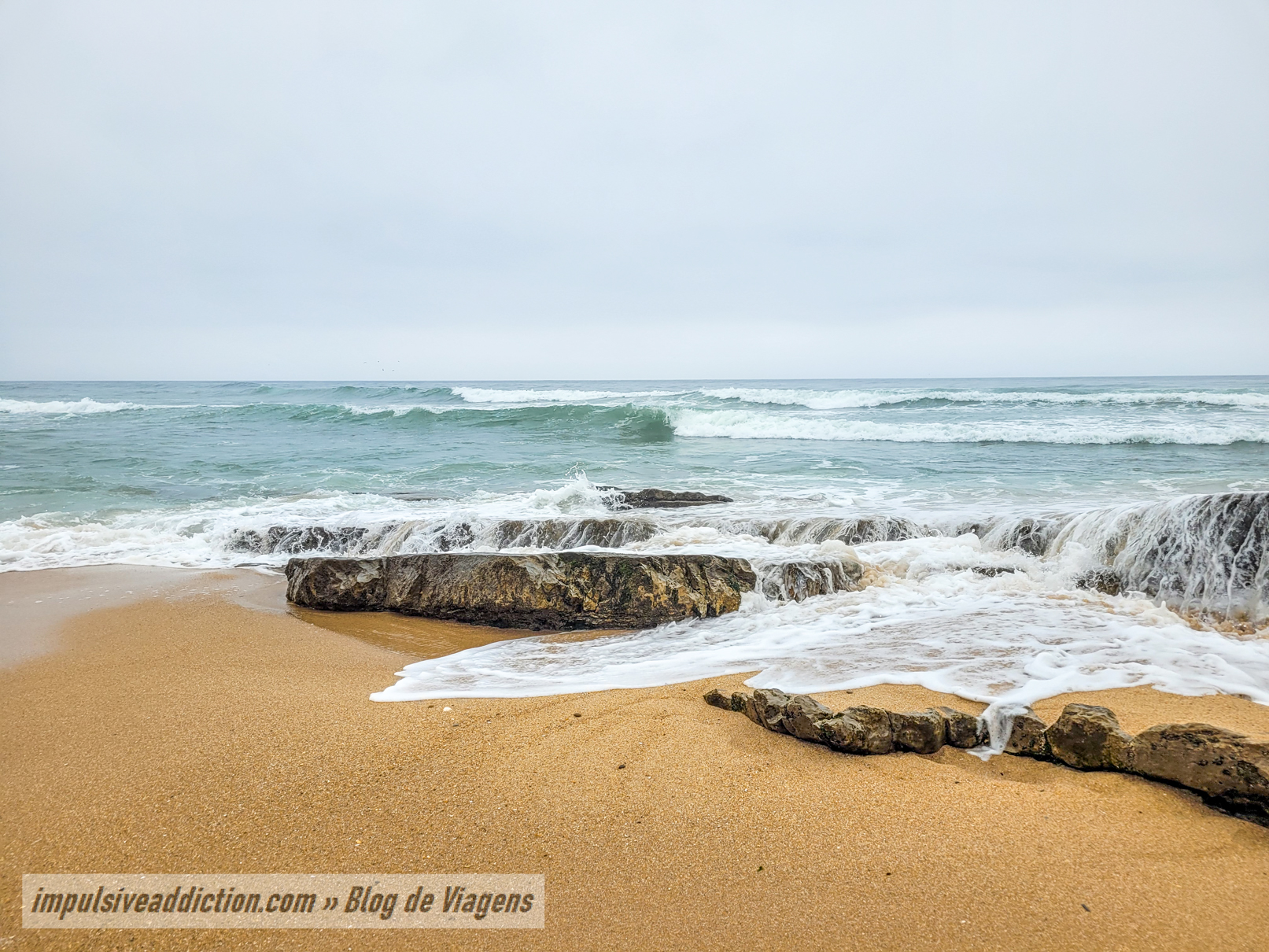
5. Pedra do Ouro beach
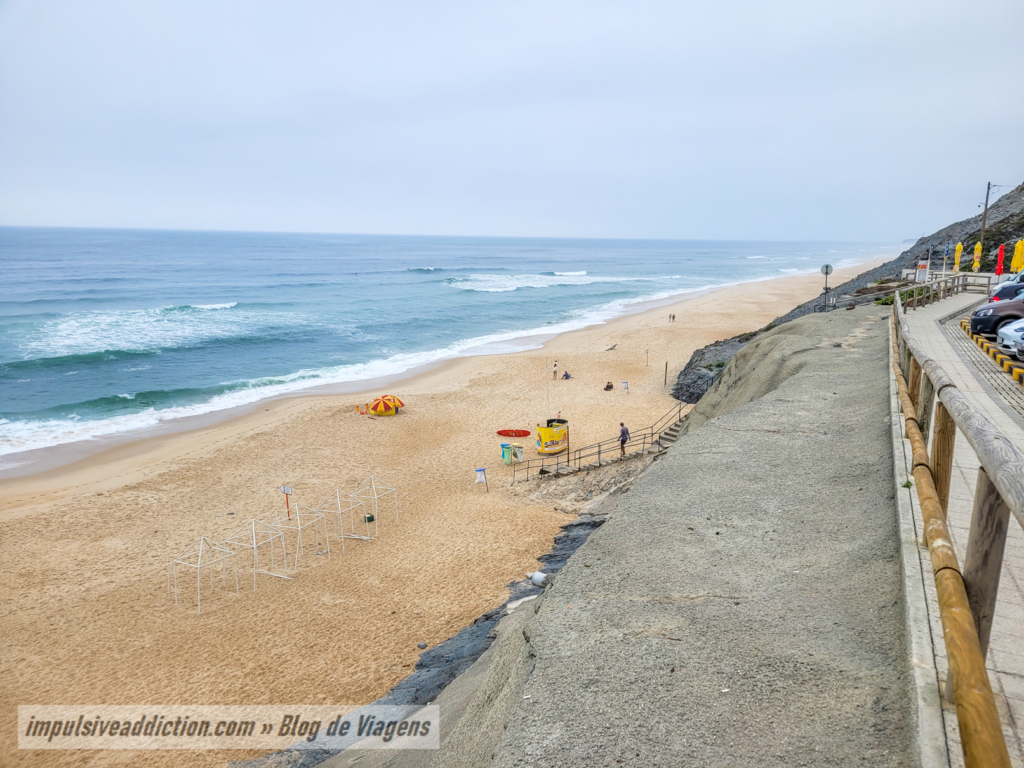
6. Água de Madeiros beach
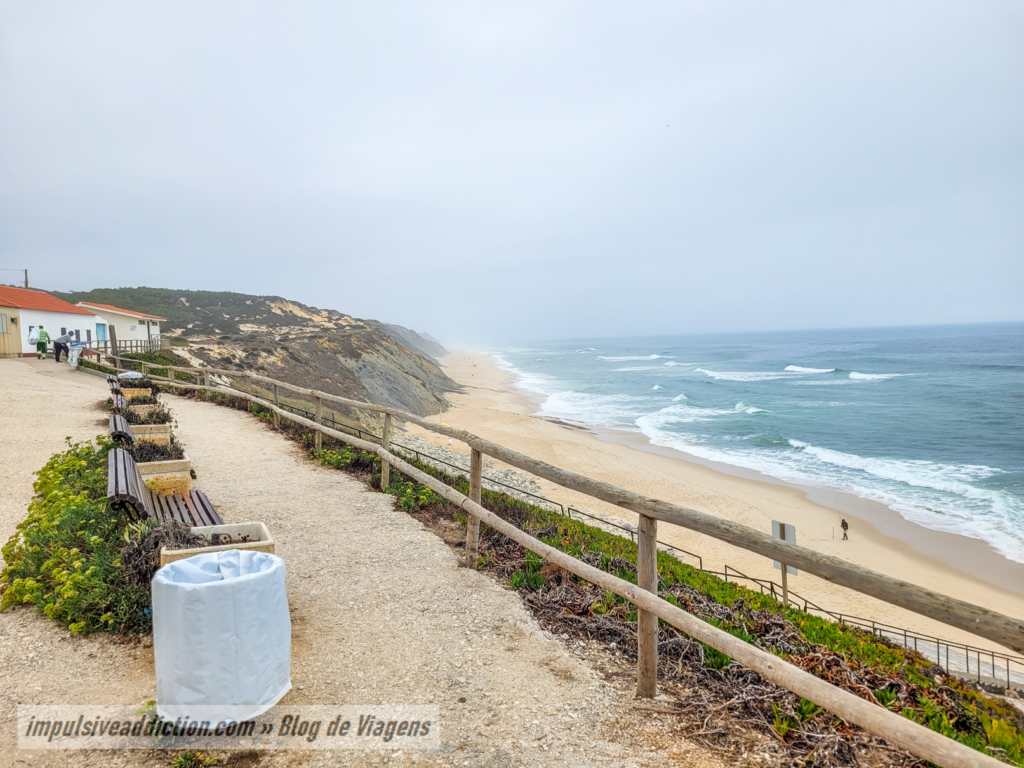
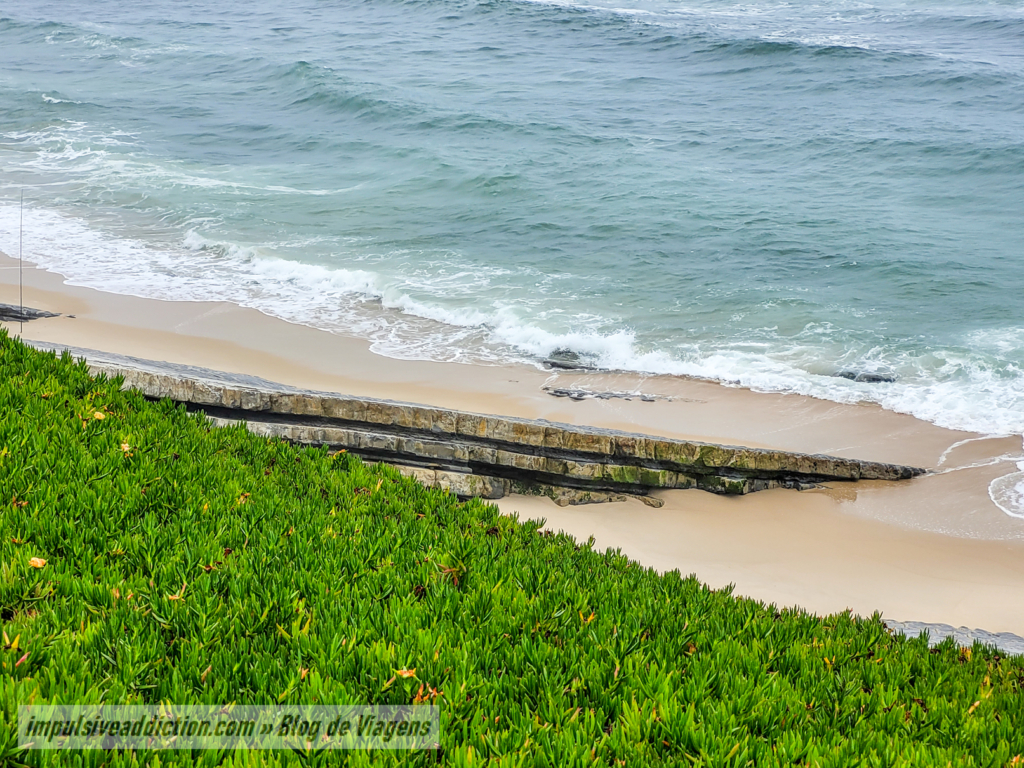
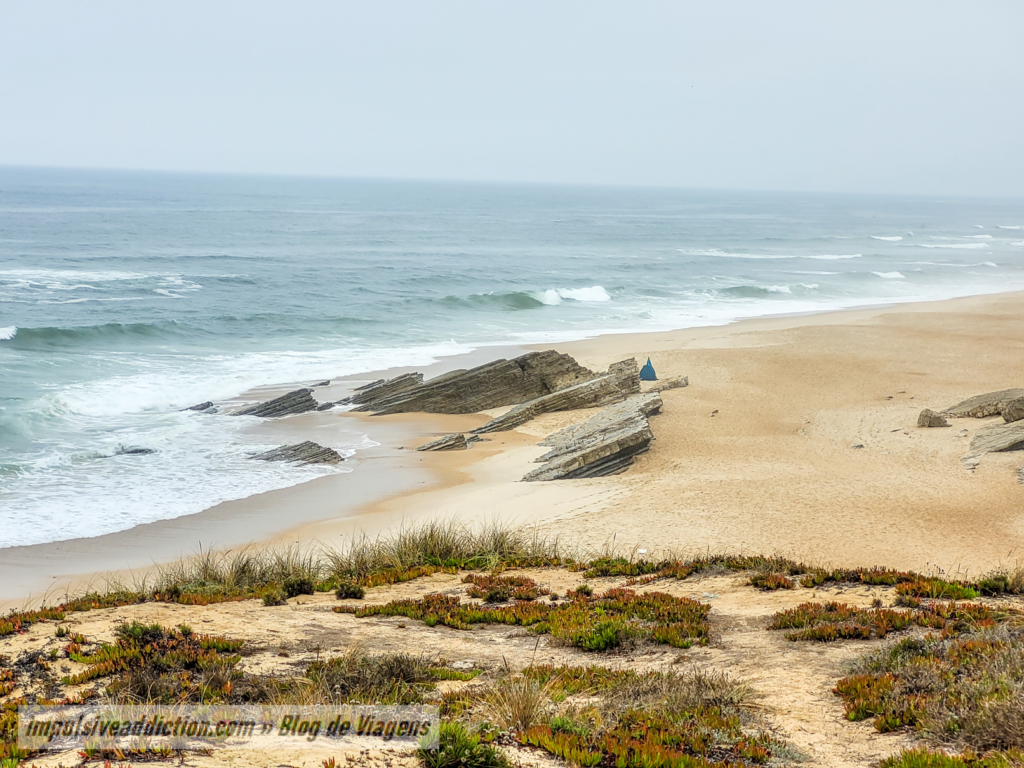
7. Love Viewpoint
Just as important, if not more so, than the beaches mentioned above, for me is the Love viewpoint. I’m not sure why it was given this name, but it really does stir your emotions, as the view is absolutely spectacular of the cliffs to the north and south of the site. It’s located between the beaches of Vale Furado and Paredes da Vitória, more or less at these coordinates!
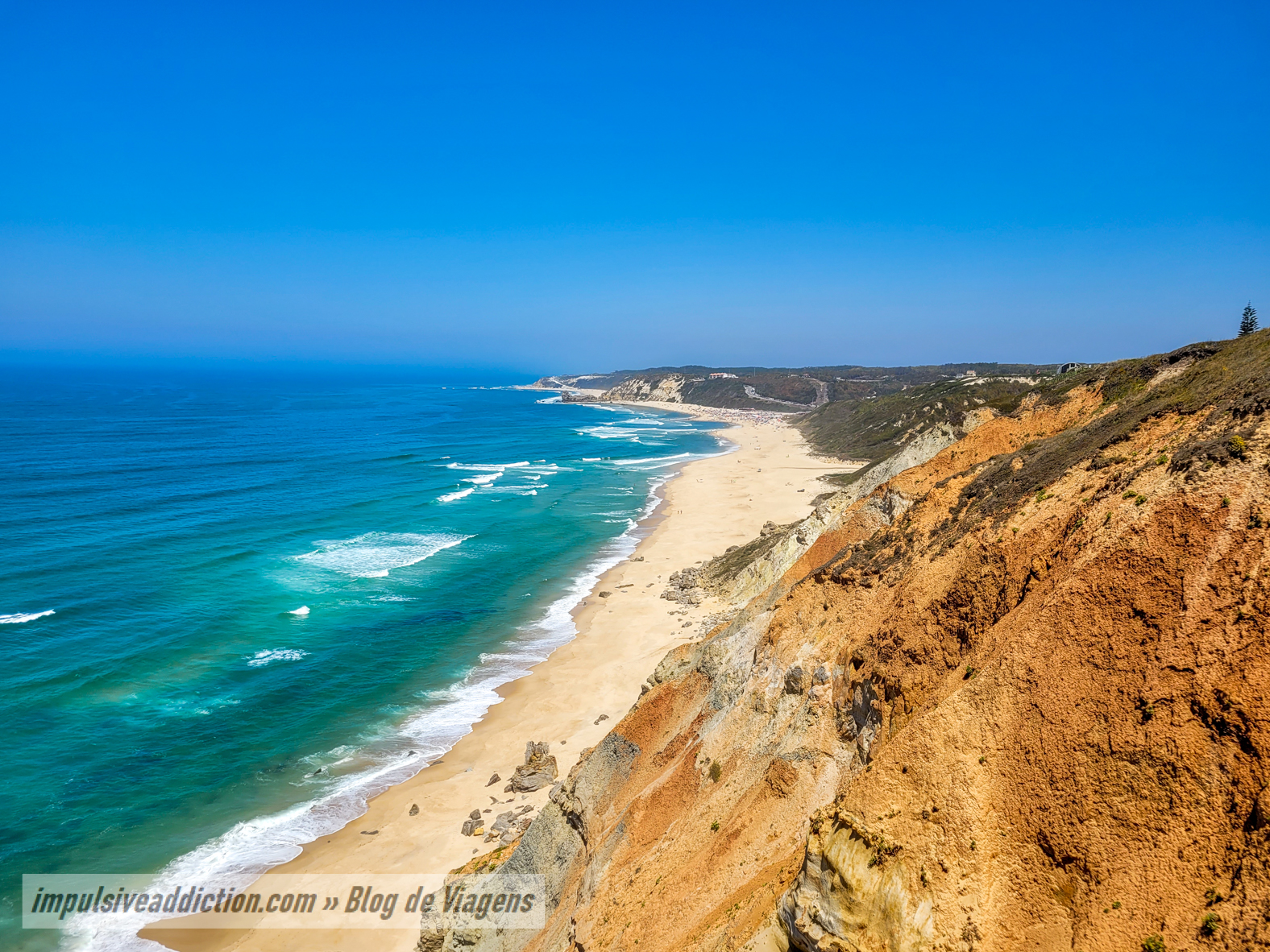
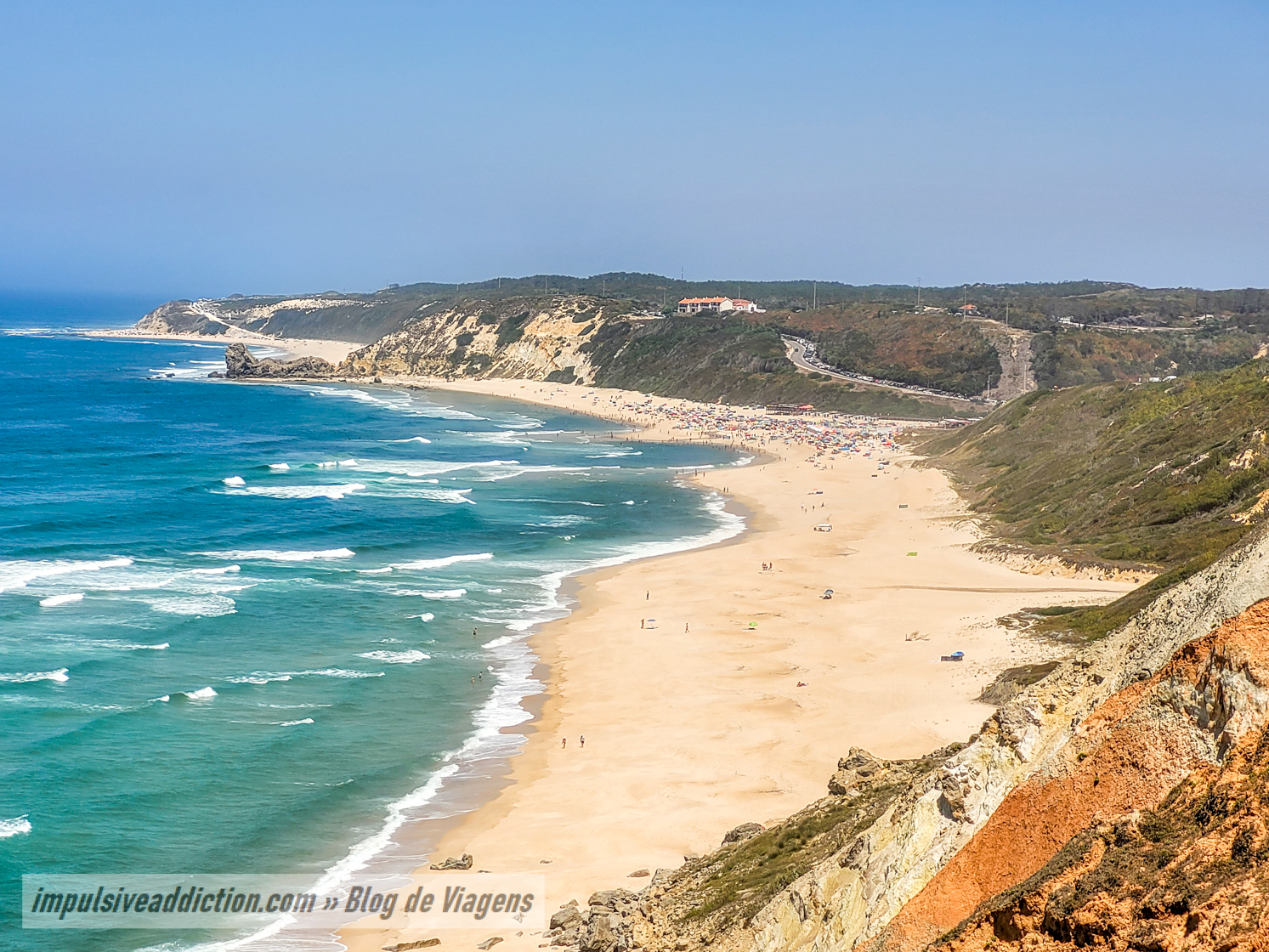
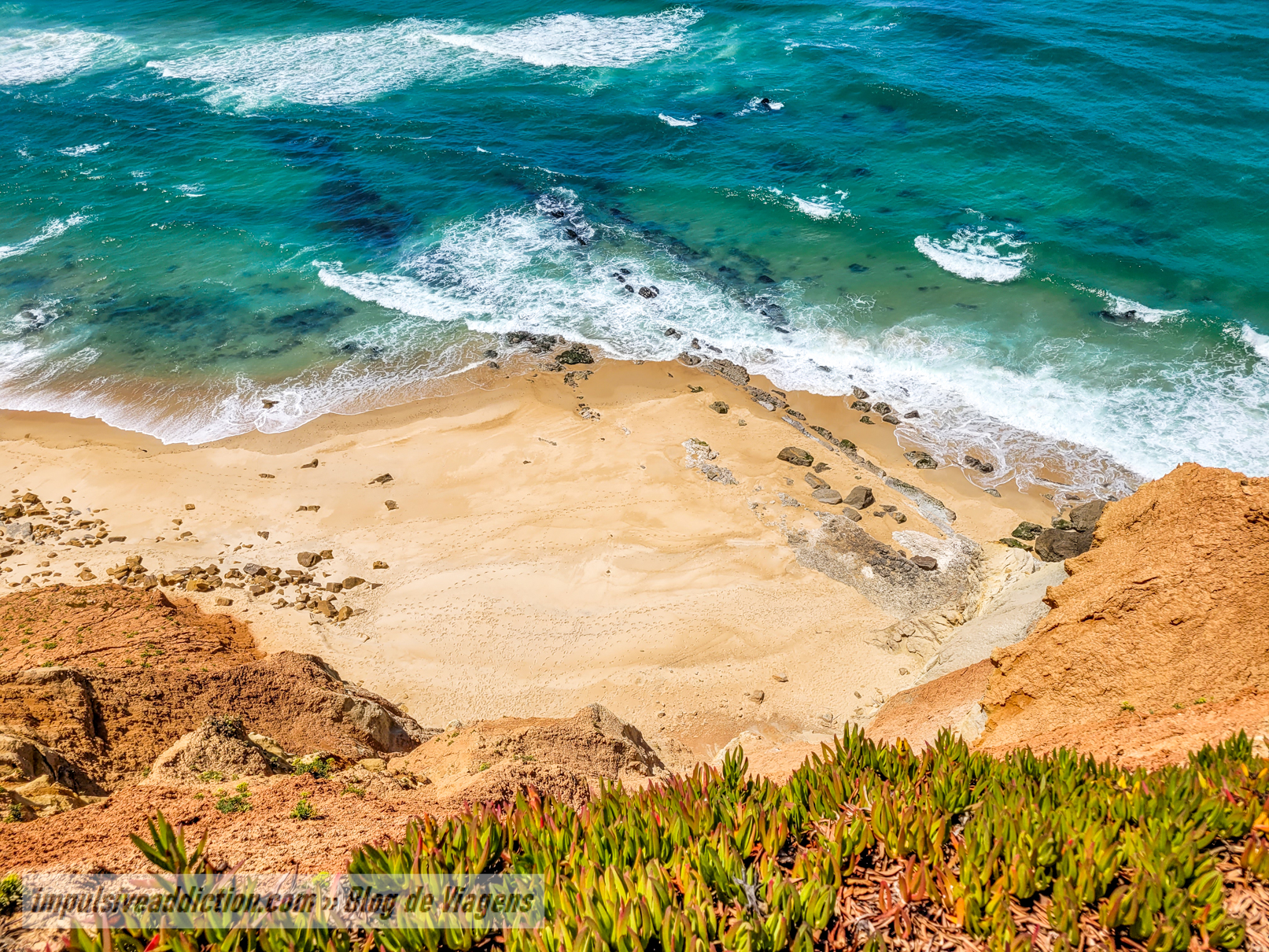
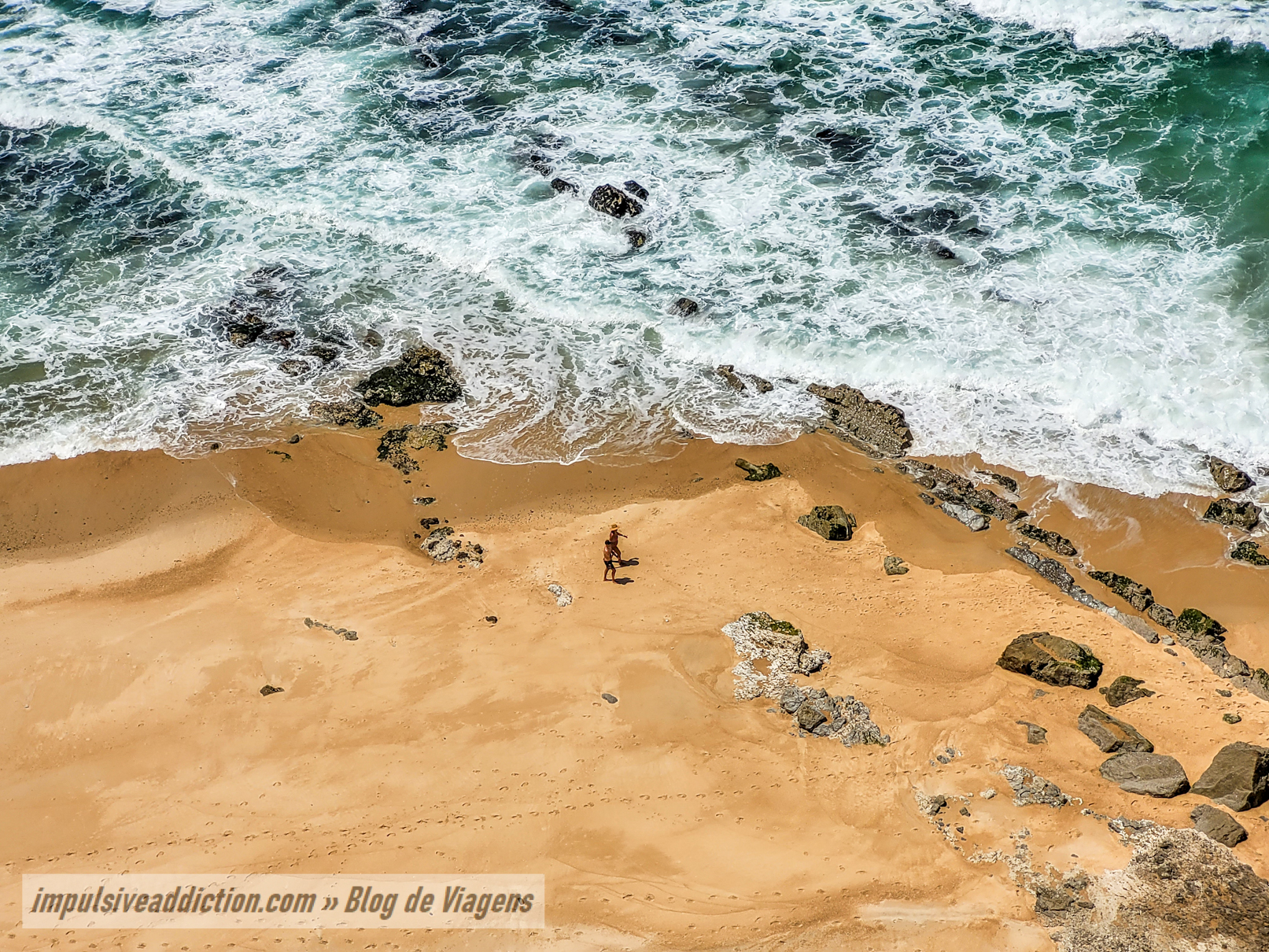
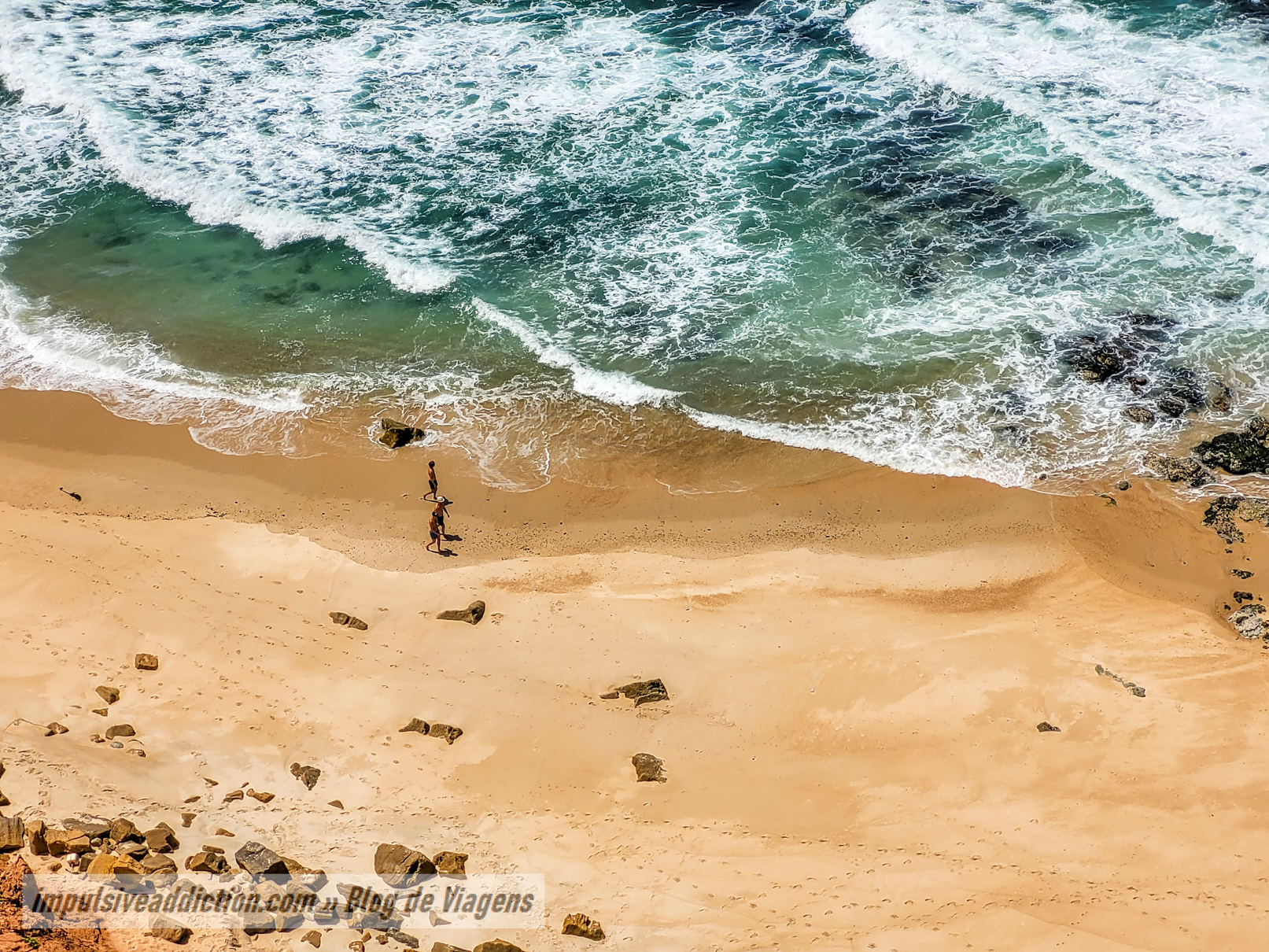
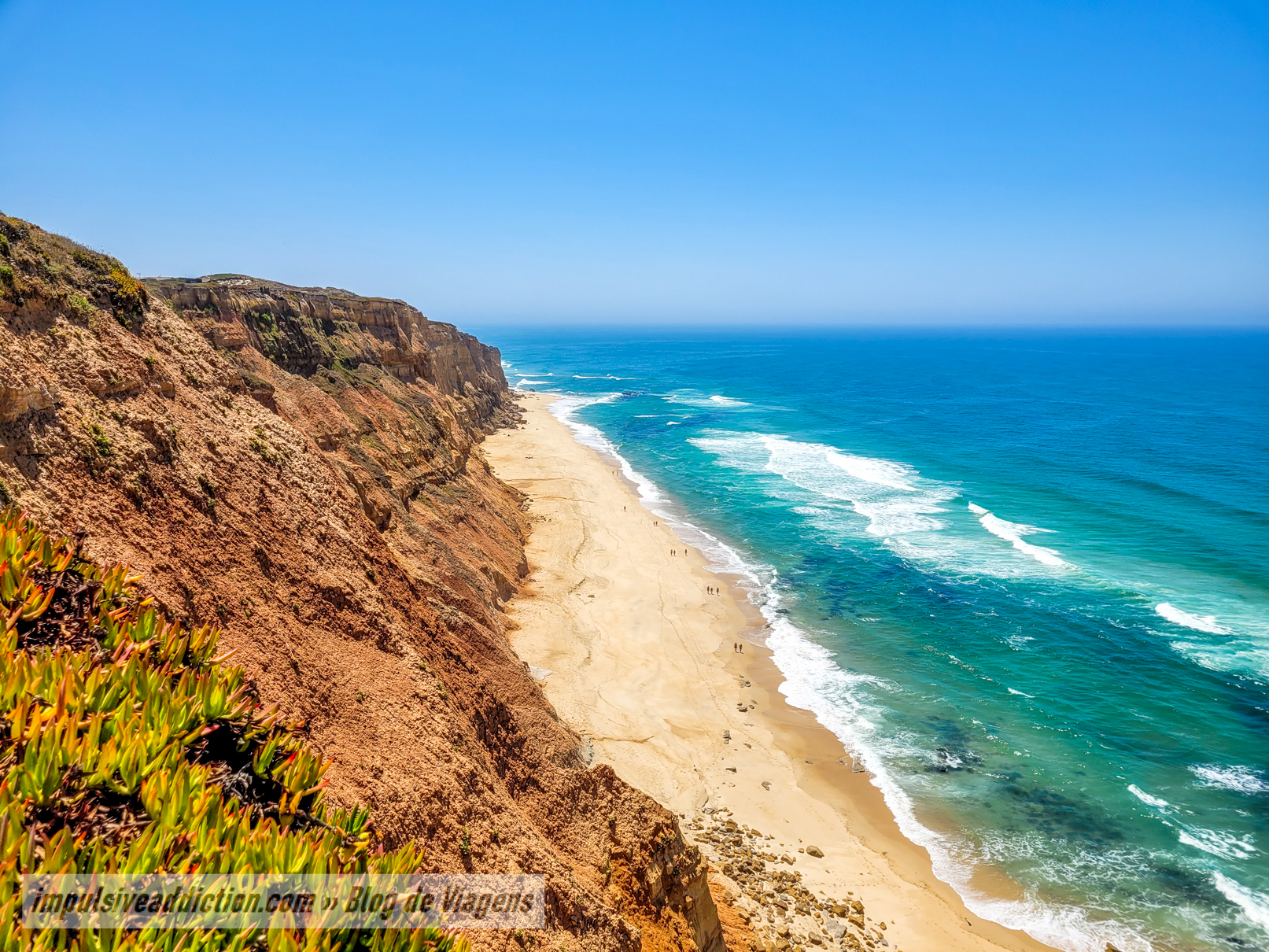
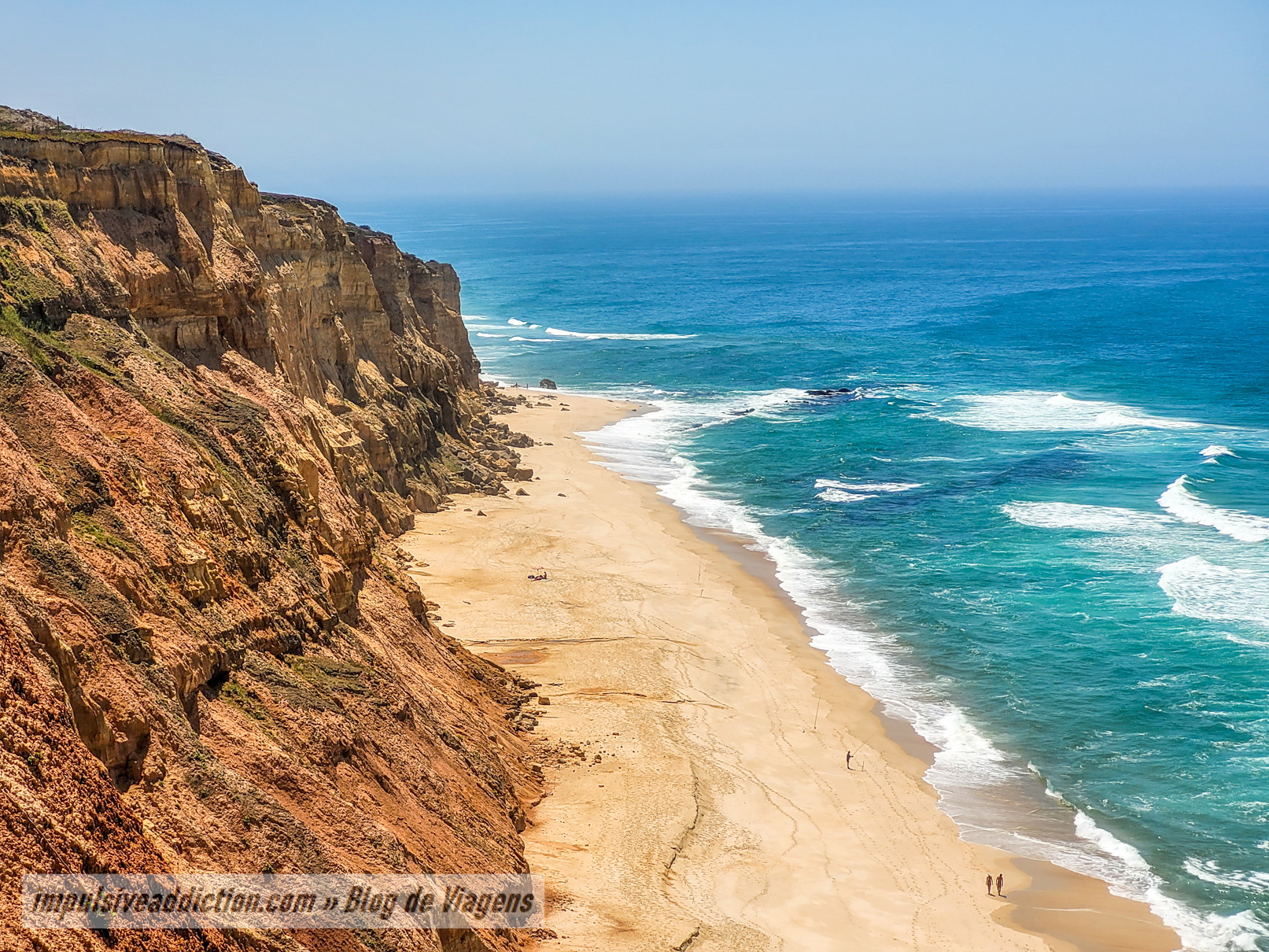
8. Paredes da Vitória Panoramic Walkways
Another place worth mentioning is the Paredes da Vitória walkways, which start just north of the beach and complement the ecotrail that you can follow to Polveira beach. From these walkways, the views are also magnificent over the area of the Lion Rock and the sea itself.
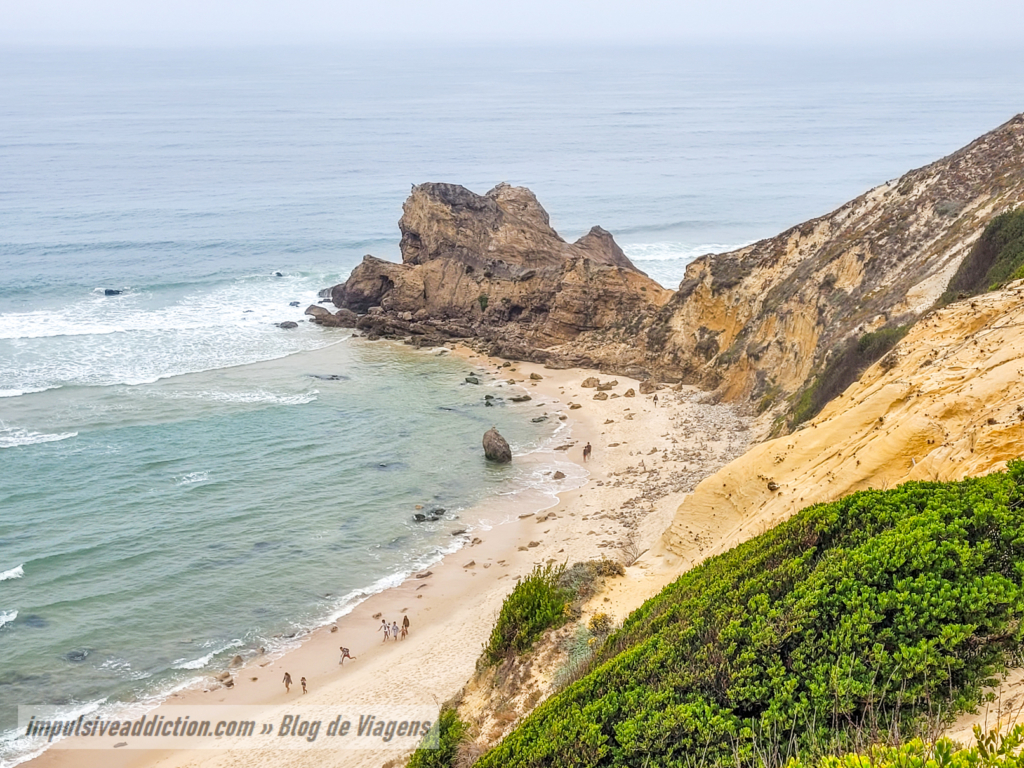
9. Pataias Lagoon (with walkways!)
I’ll also give you a tip for the Pataias Lagoon, which is excellent for birdwatching and where you can enjoy more walkways, a lookout tower and a picnic area.
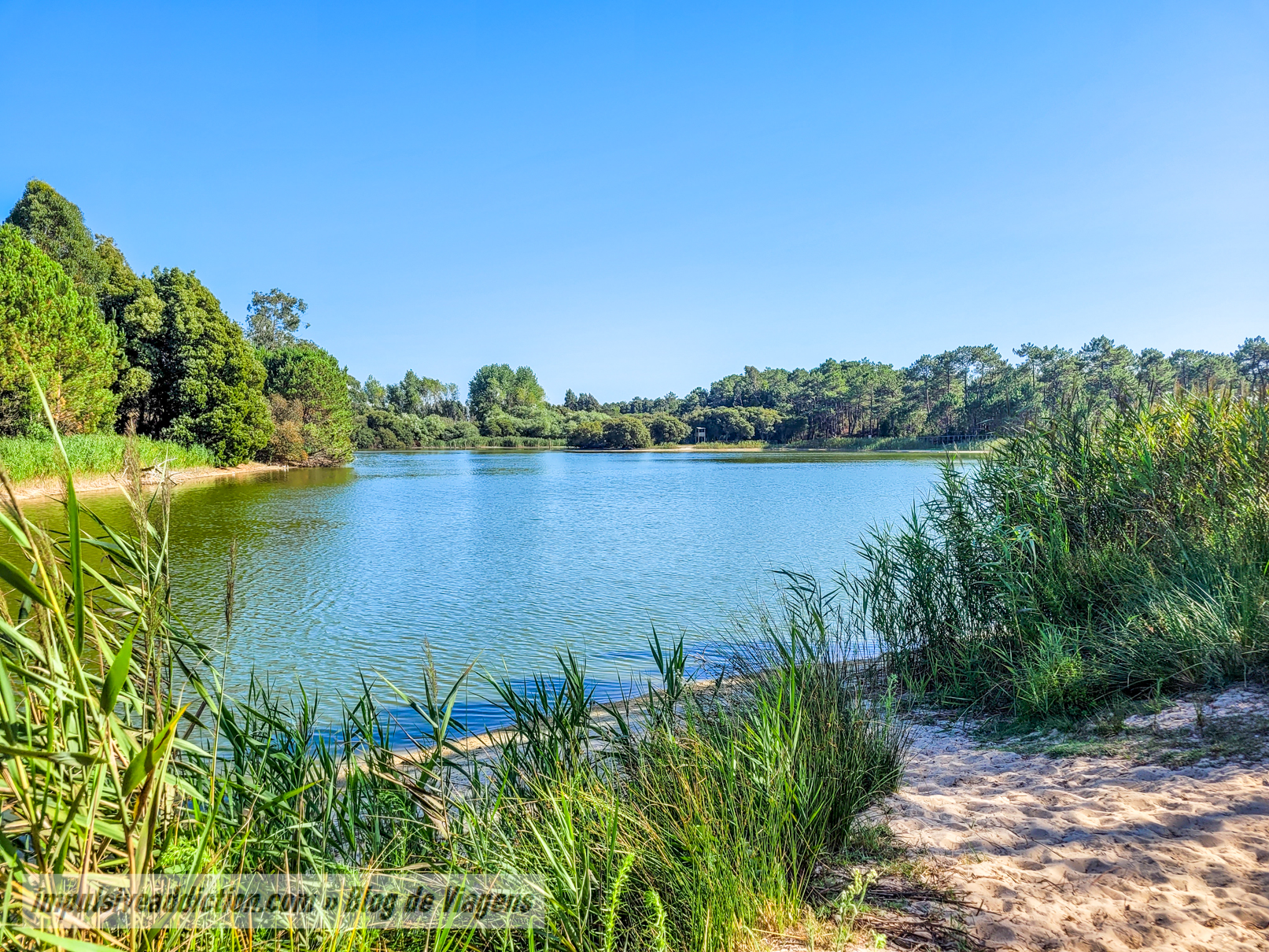
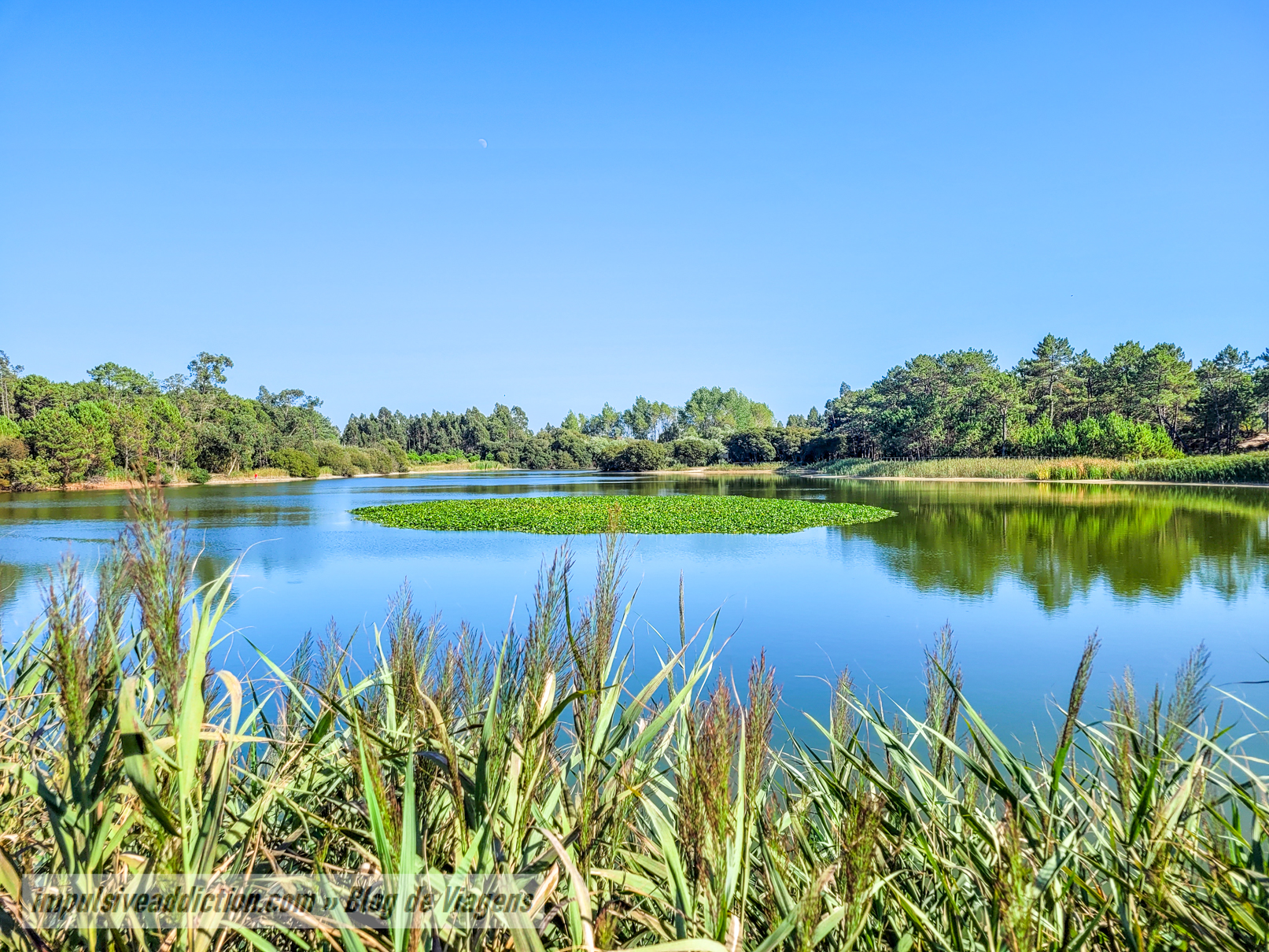
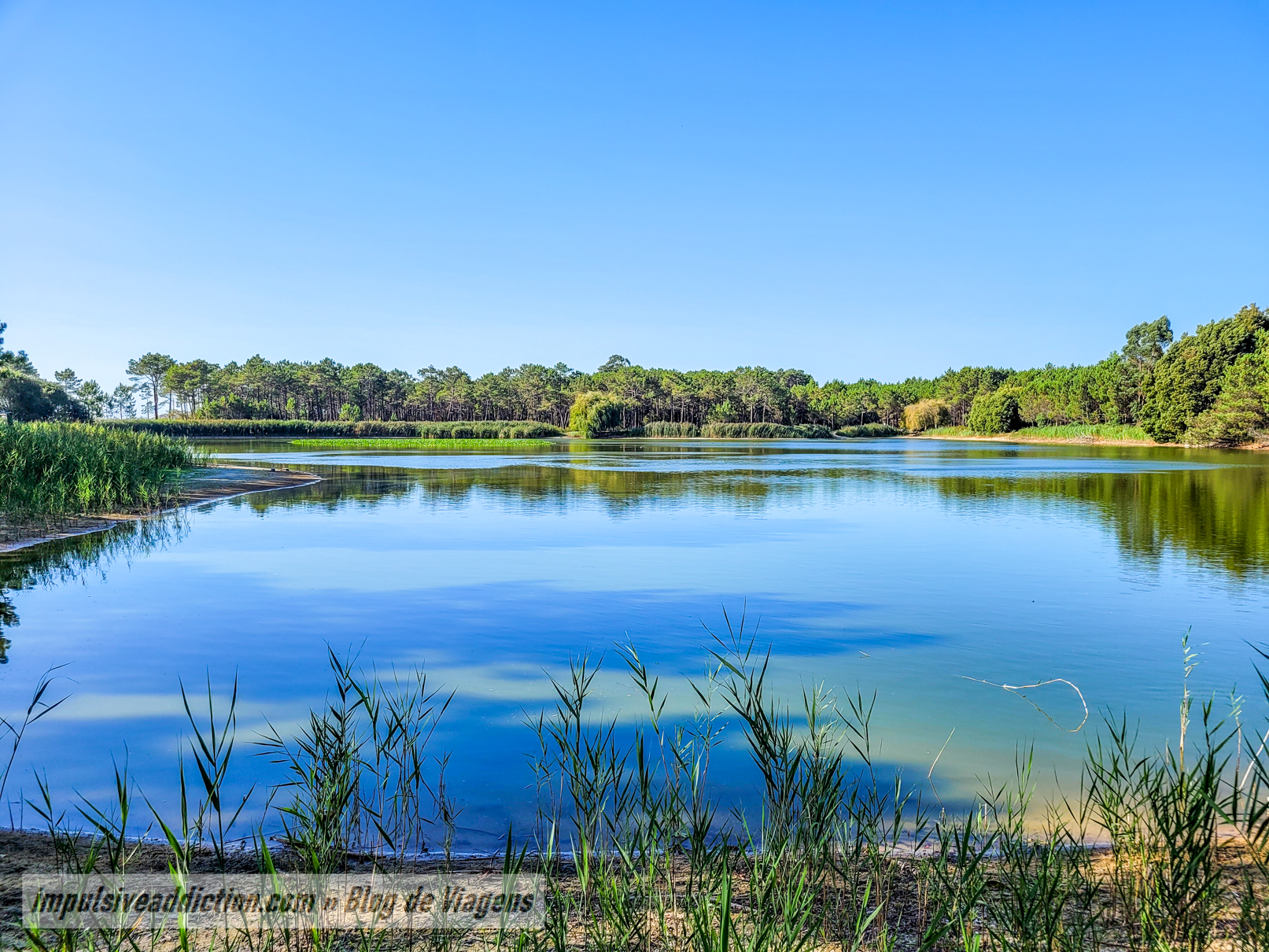
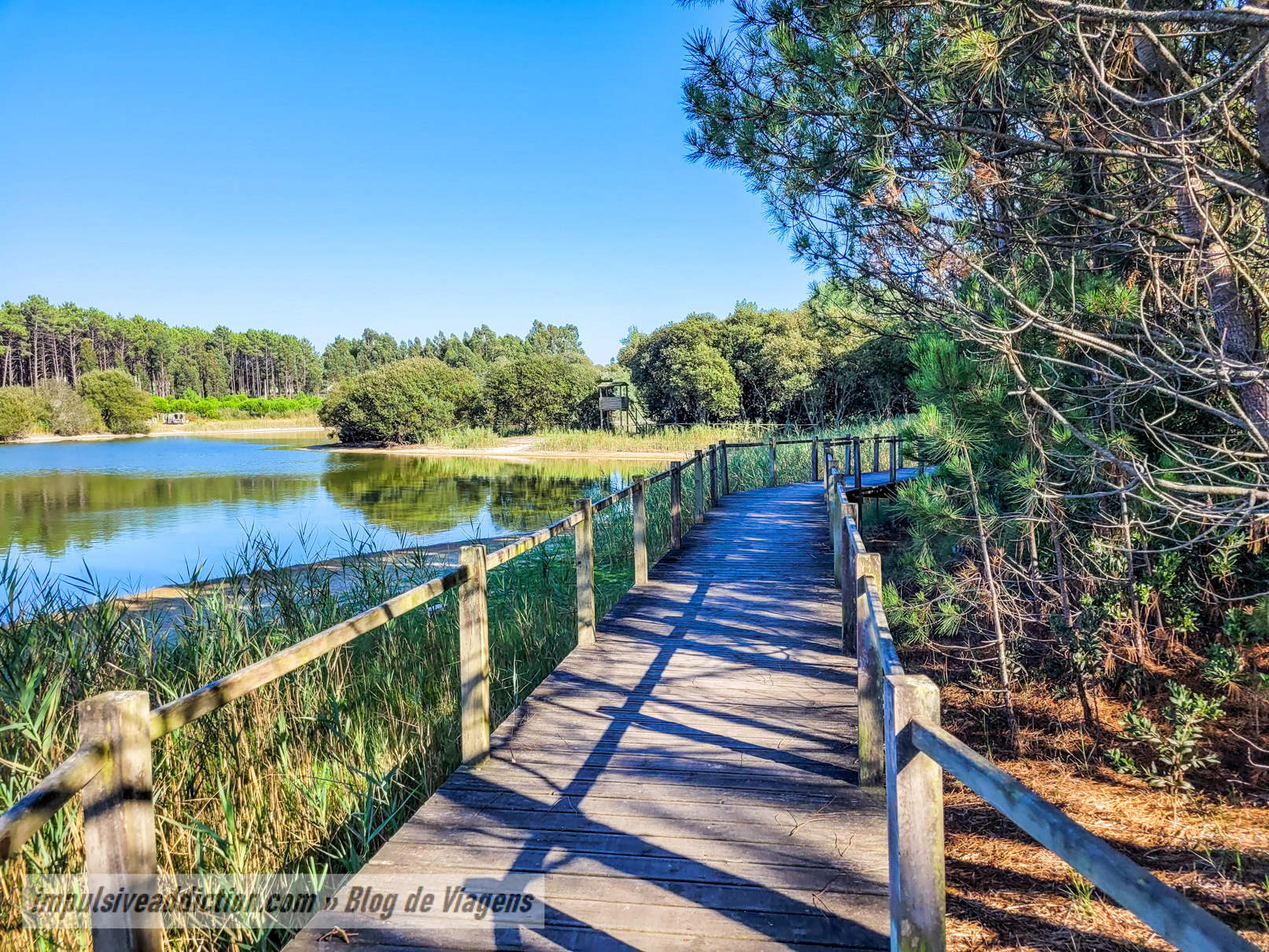
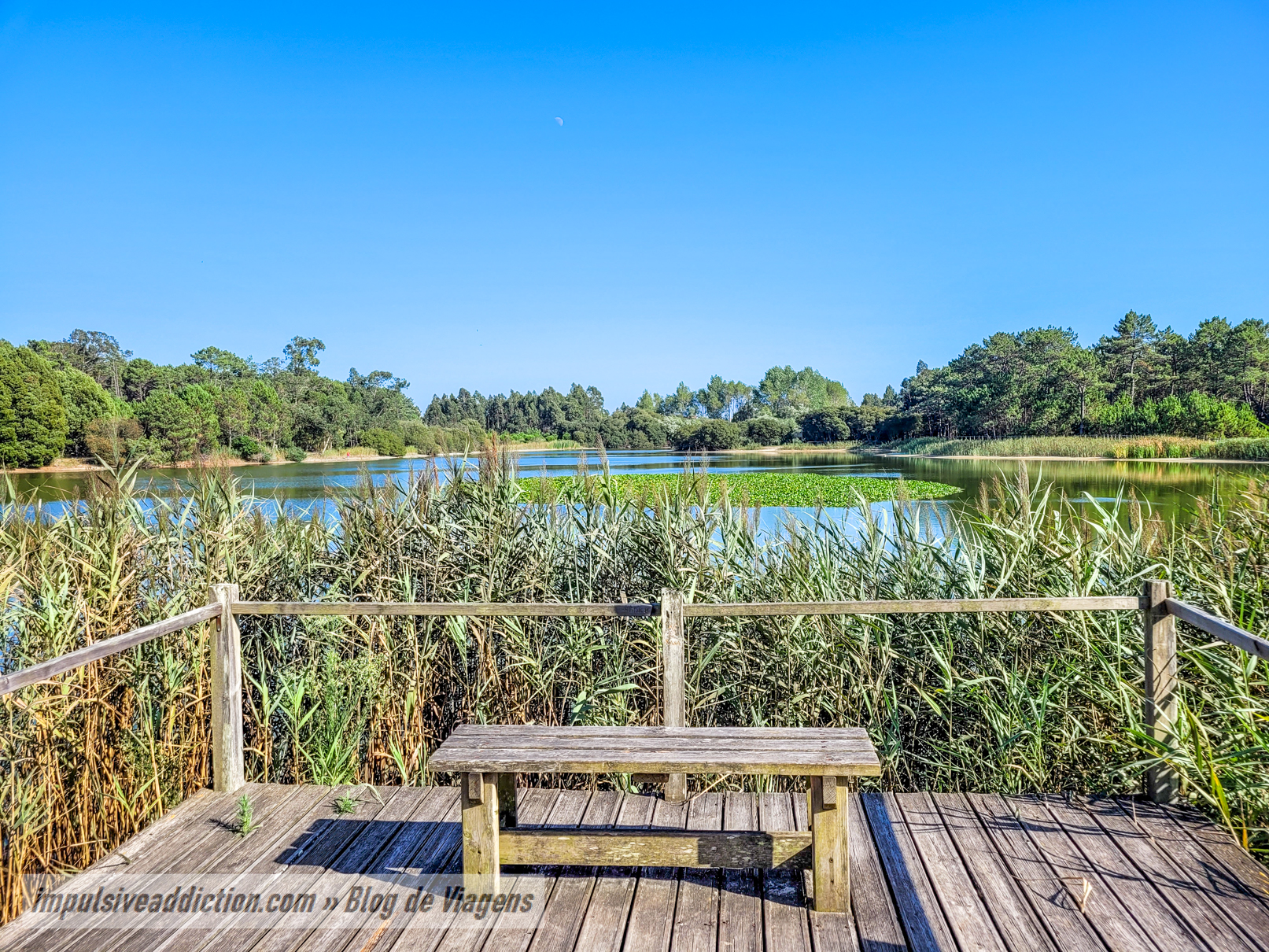
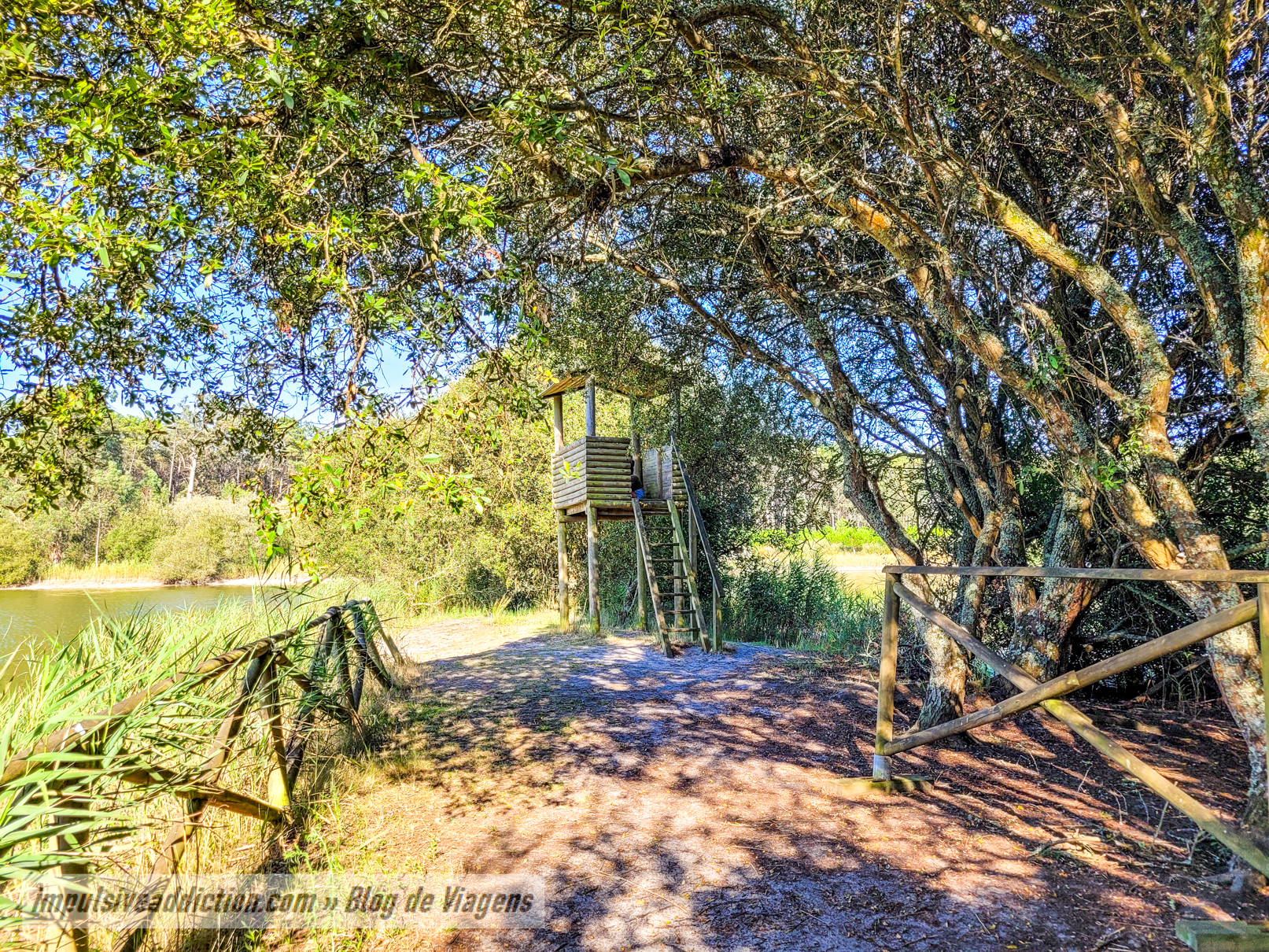
Visit Aljubarrota and Coz Monastery
Aljubarrota and Coz are historical sites that complement the historic center of Alcobaça. Aljubarrota, in particular, is the home of the legendary baker Brites de Almeida, who defeated several Castilian soldiers with her shovel during the Battle of Aljubarrota, in which Portugal emerged victorious! Below is a fun animated video illustrating this legend of Portugal. 😉
- Accommodation tip: Casa da Padeira
1. Church of São Vicente de Aljubarrota and Museum of Sacred Art
I started by visiting the Church of São Vicente, dating from the mid-16th century. Highlights include the two nineteenth-century tombs in front of it, and the Sacred Art Museum of Aljubarrota, which you can visit by appointment.
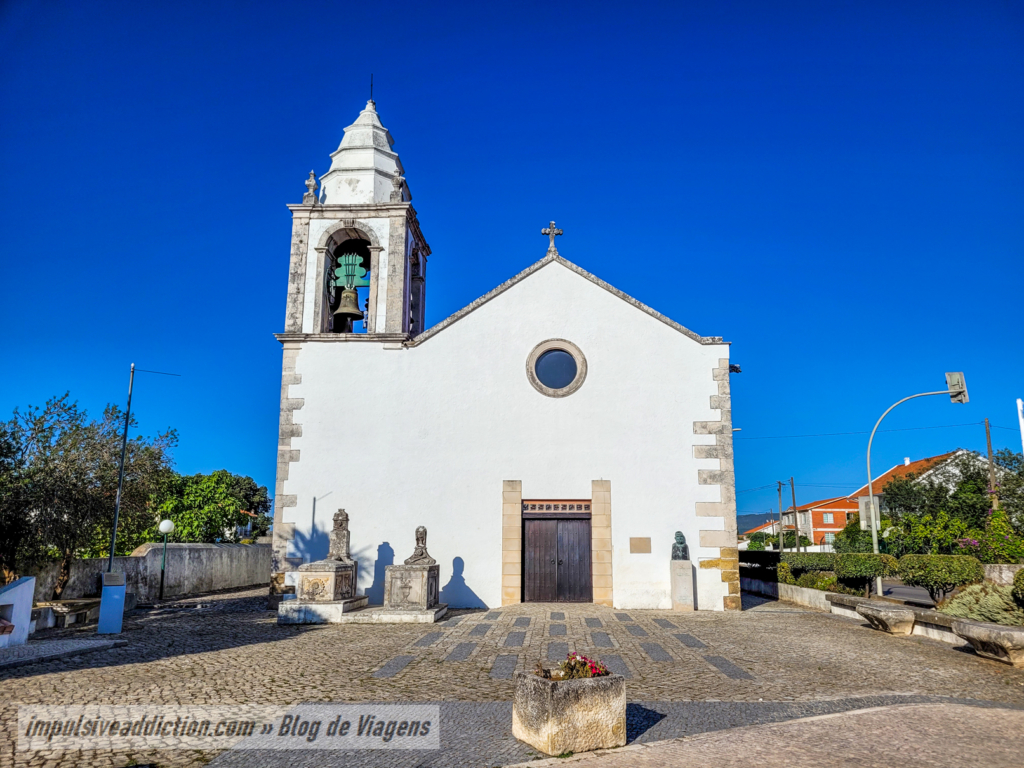
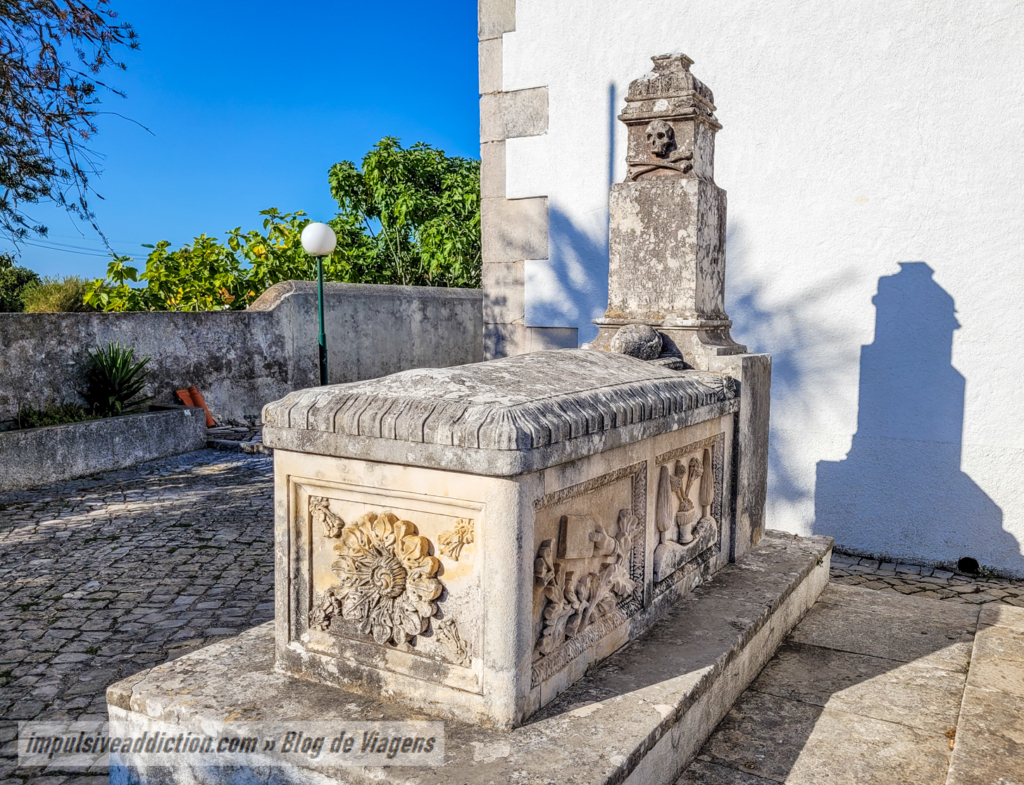
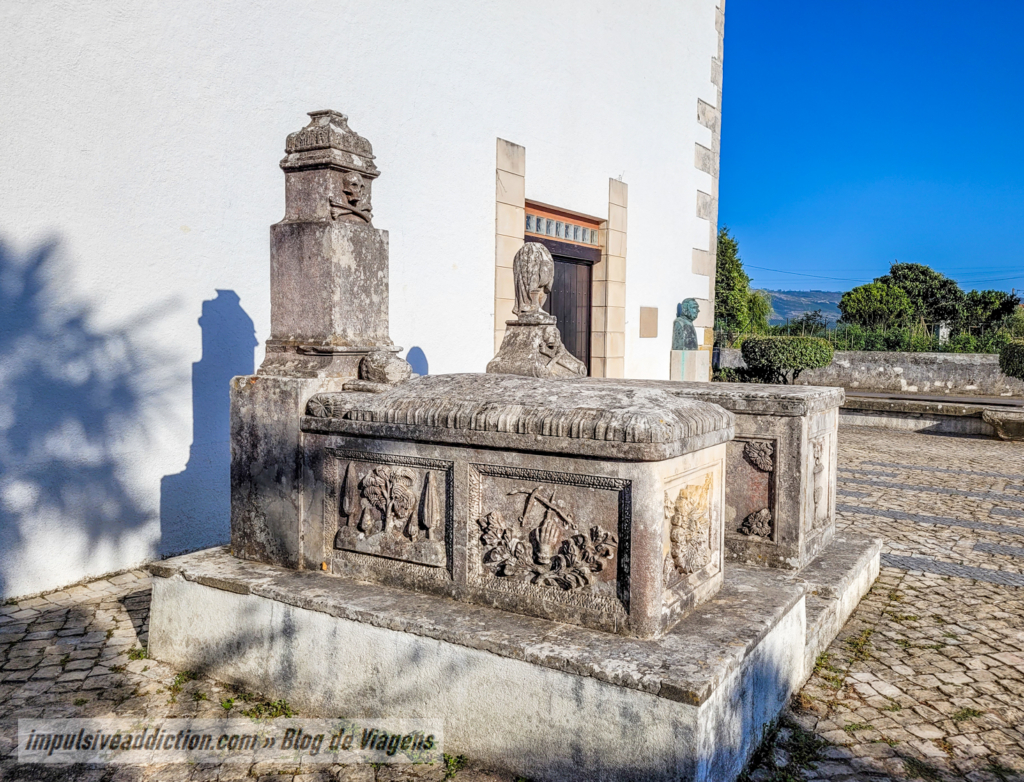
2. Rua Direita de Aljubarrota, Pillory Square and Brites de Almeida Square
Next is Rua Direita, the town’s main thoroughfare, which connects several of Aljubarrota’s tourist attractions. I’m going to highlight the area around Square Brites de Almeida in particular, where you’ll find not only a statue of the maid, but also parts of the legend associated with her. It is believed that the maid’s house was located in that area of the town.
I should also mention:
- The Misericórdia Church.
- The building of the old granary of Aljubarrota.
- The Manueline window in Rua Direita.
- The Manueline pillory of Aljubarrota.
- And the Bell Tower (and clock), dating from the time of King Sebastião.
Optionally, you can stop by the monument to the Combatants of Aljubarrota, a tribute not only to those who took part in World War I, but also to those who took part in the Overseas Wars. You’ll find a war tank there, with the message that “Portugal asserted itself” at Aljubarrota.
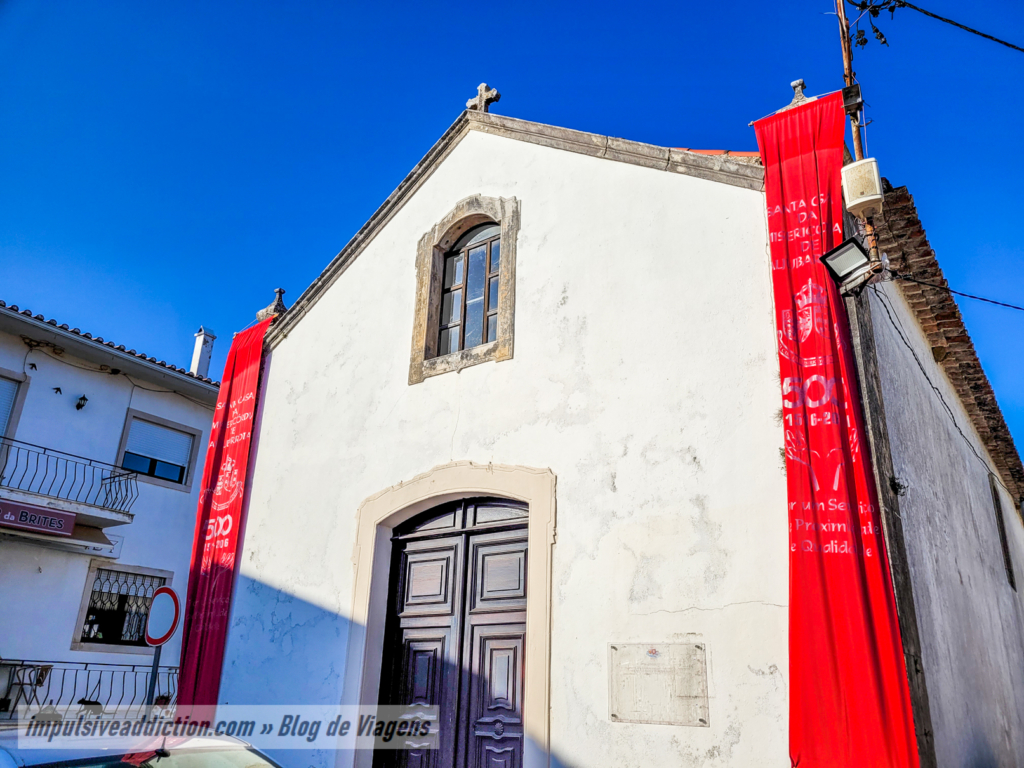
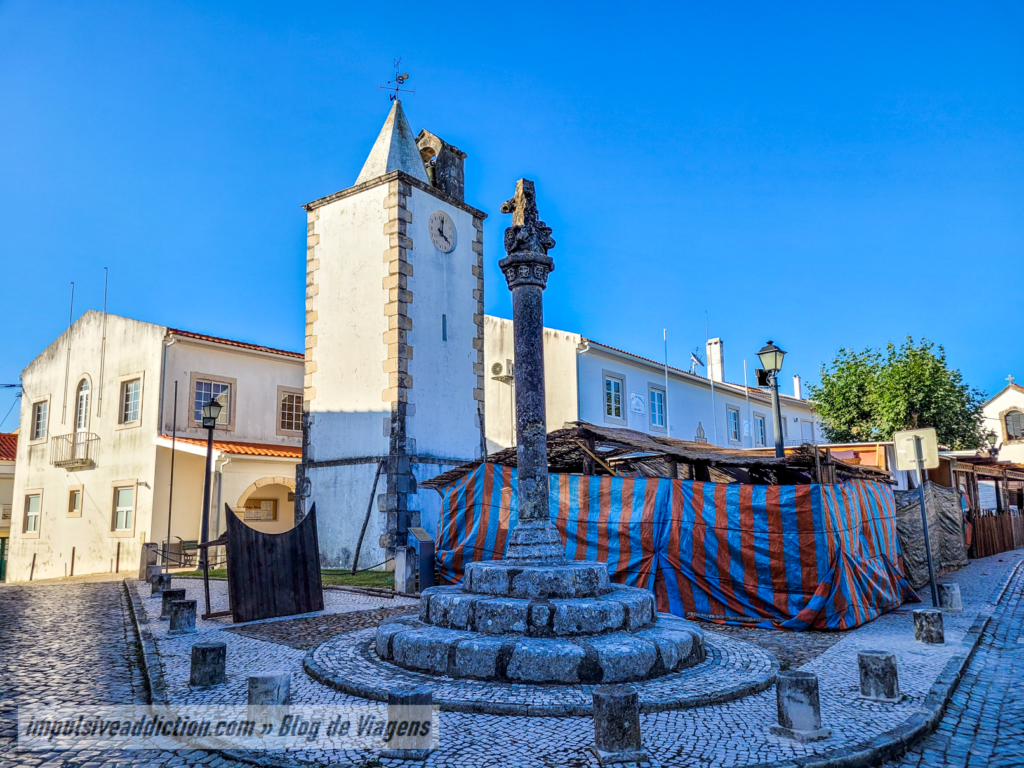
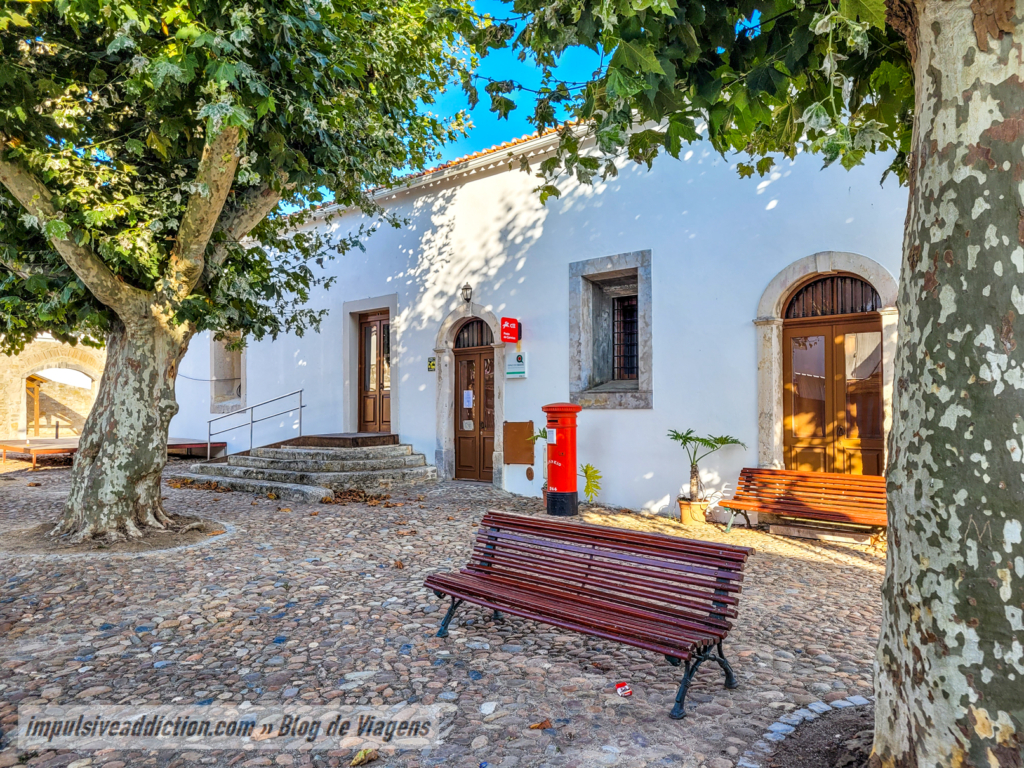
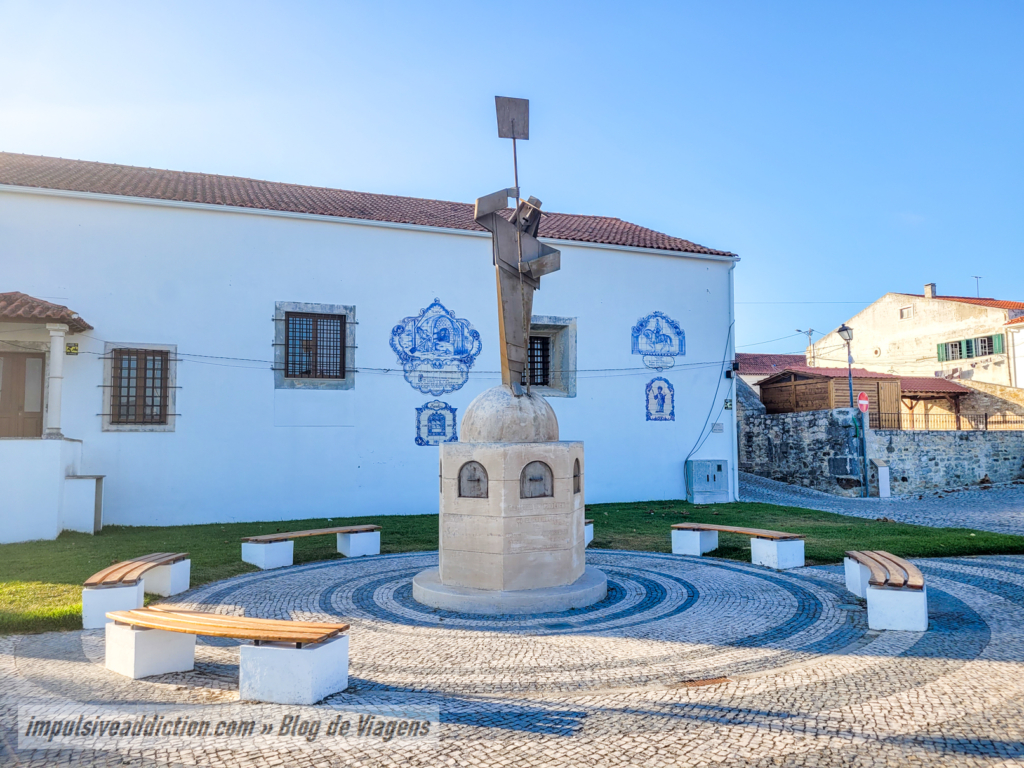
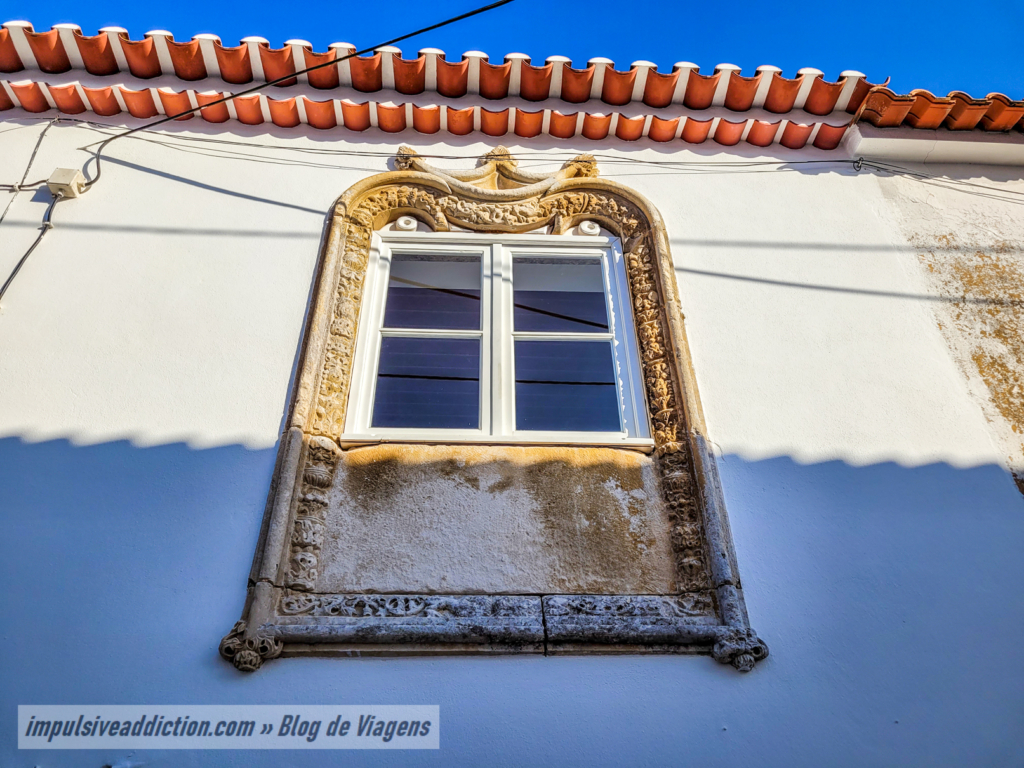
3. Church of Nossa Senhora dos Prazeres
Before leaving Aljubarrota, pass by the Church of Nossa Senhora dos Prazeres, whose portico is Romanesque and original of the 13th century. As you can read on a stone in the church, the Constable D. Nuno Álvares Pereira heard mass and prayed there, just before he went to the battle front in 1385.
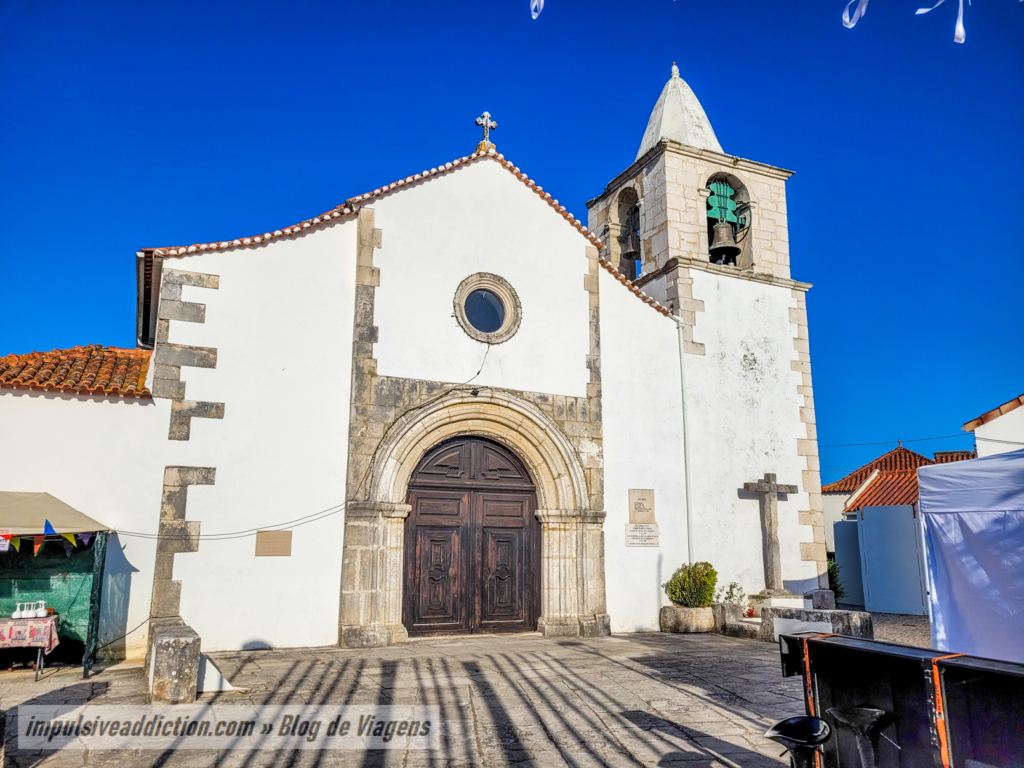
4. Monastery of Santa Maria de Coz
Moving on to the women’s monastery of Santa Maria de Coz, founded in the 13th century, I recommend that you visit it from the inside, as it is lined with incredible tiles. The gilded woodwork and the wooden coffered ceilings also stand out. It has been a National Monument since 2021.
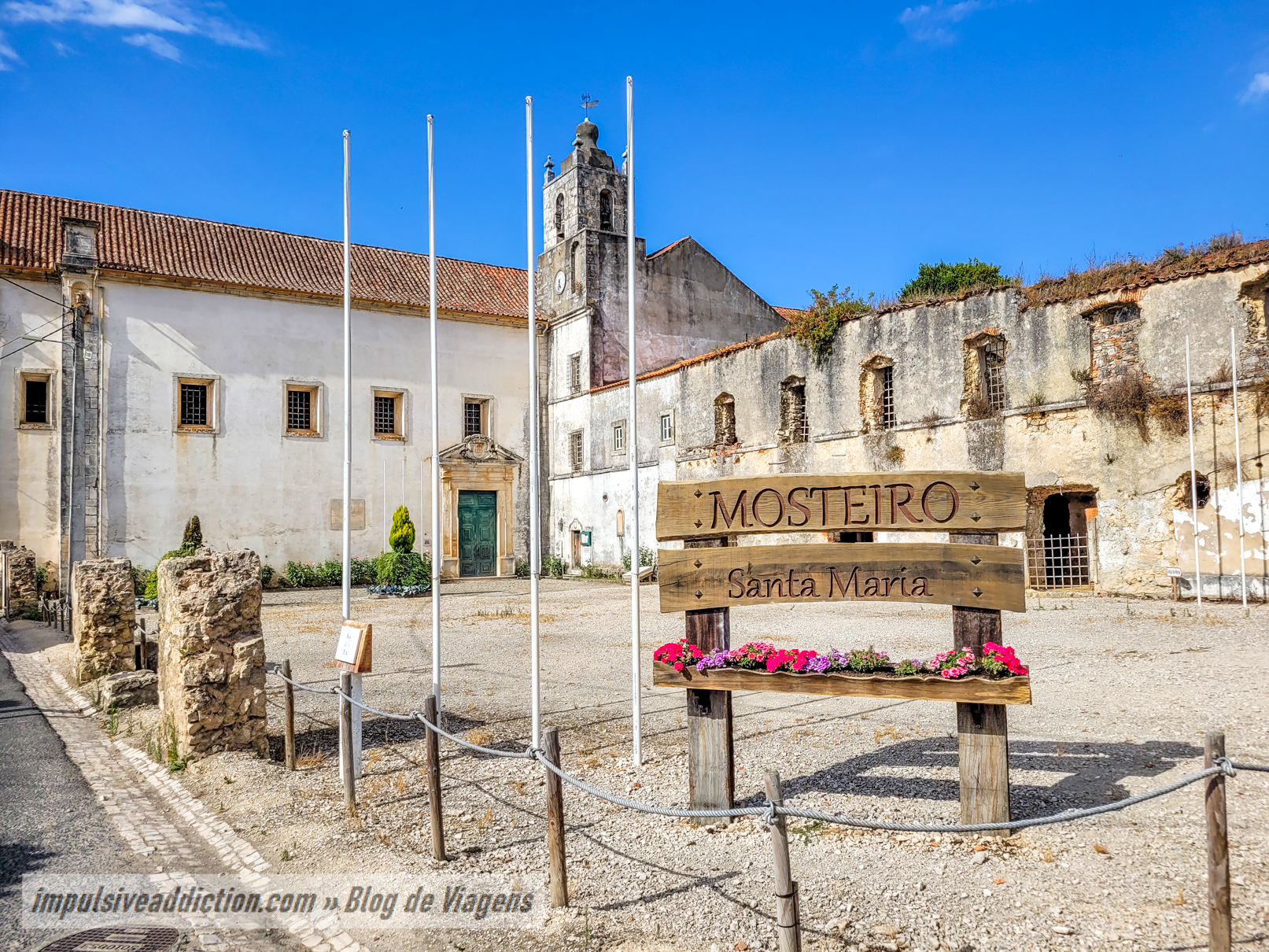
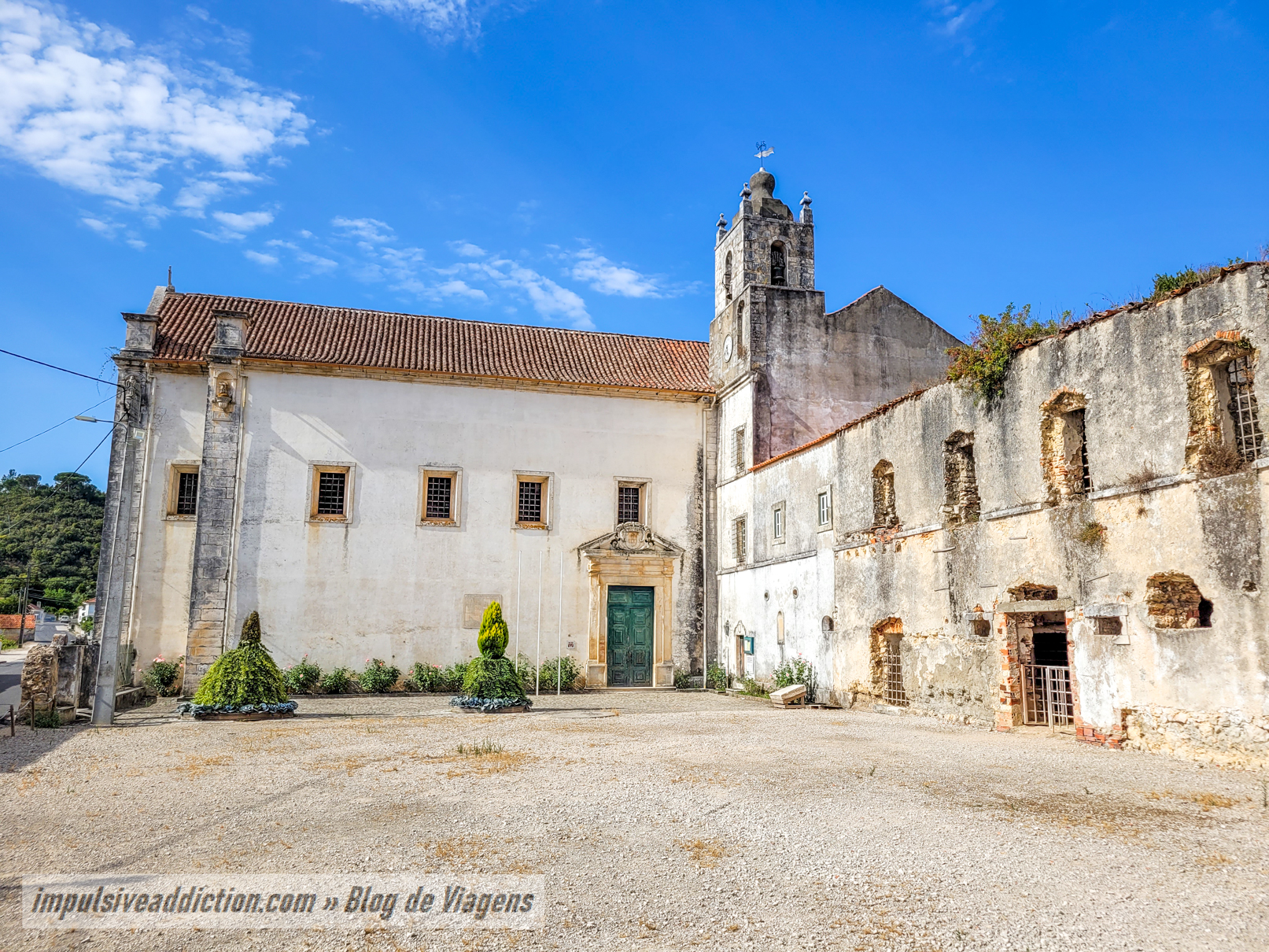
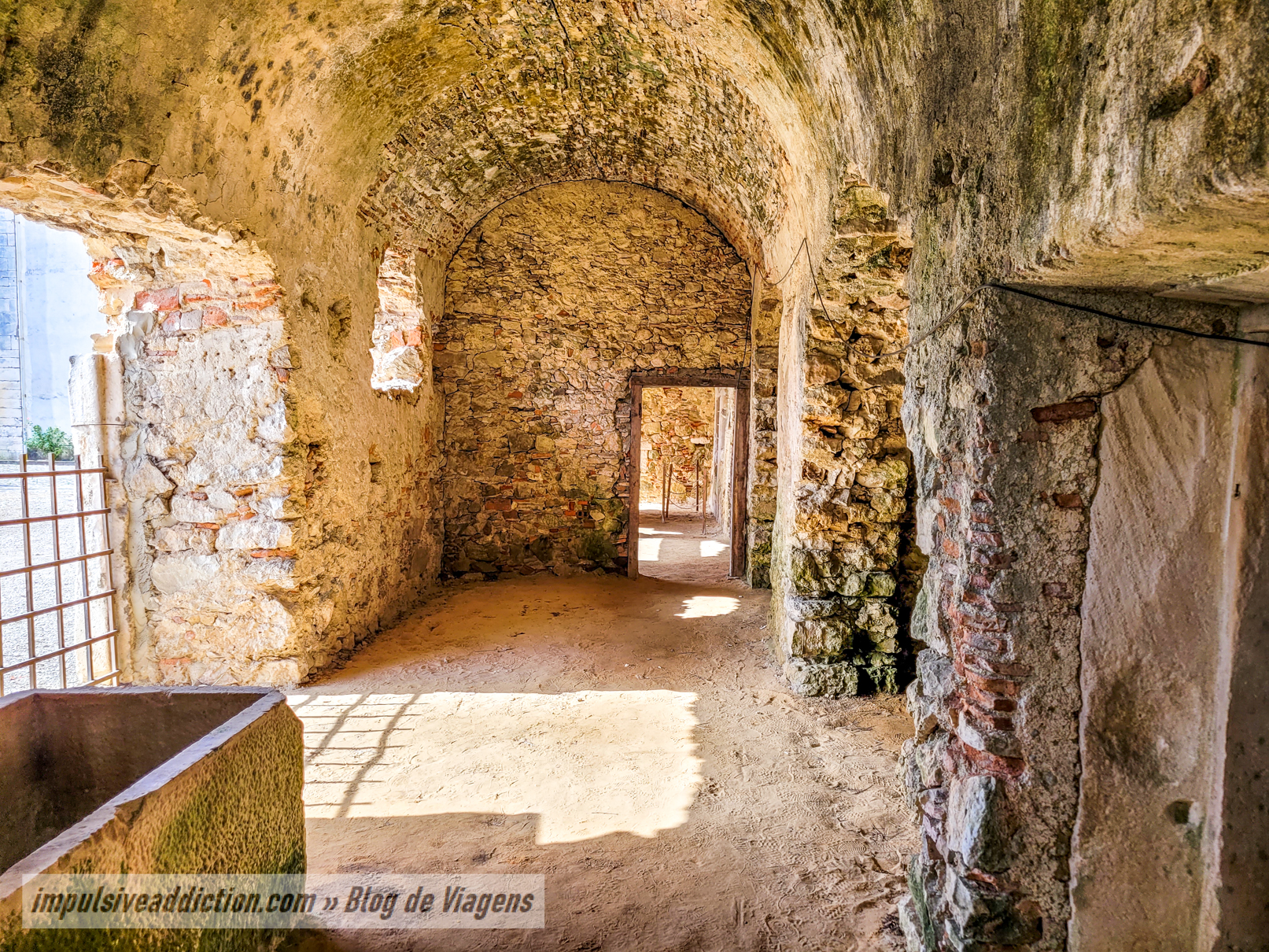
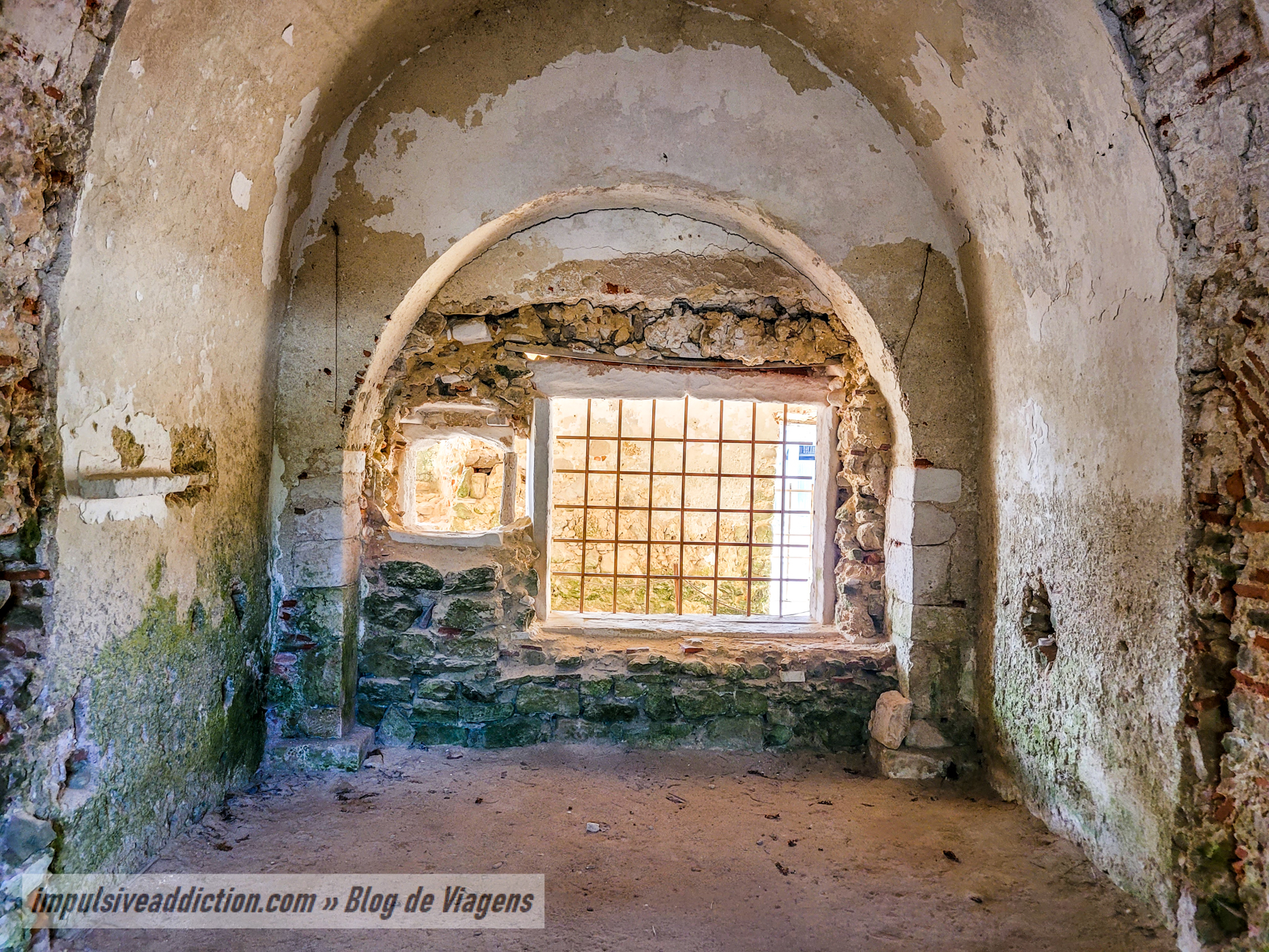
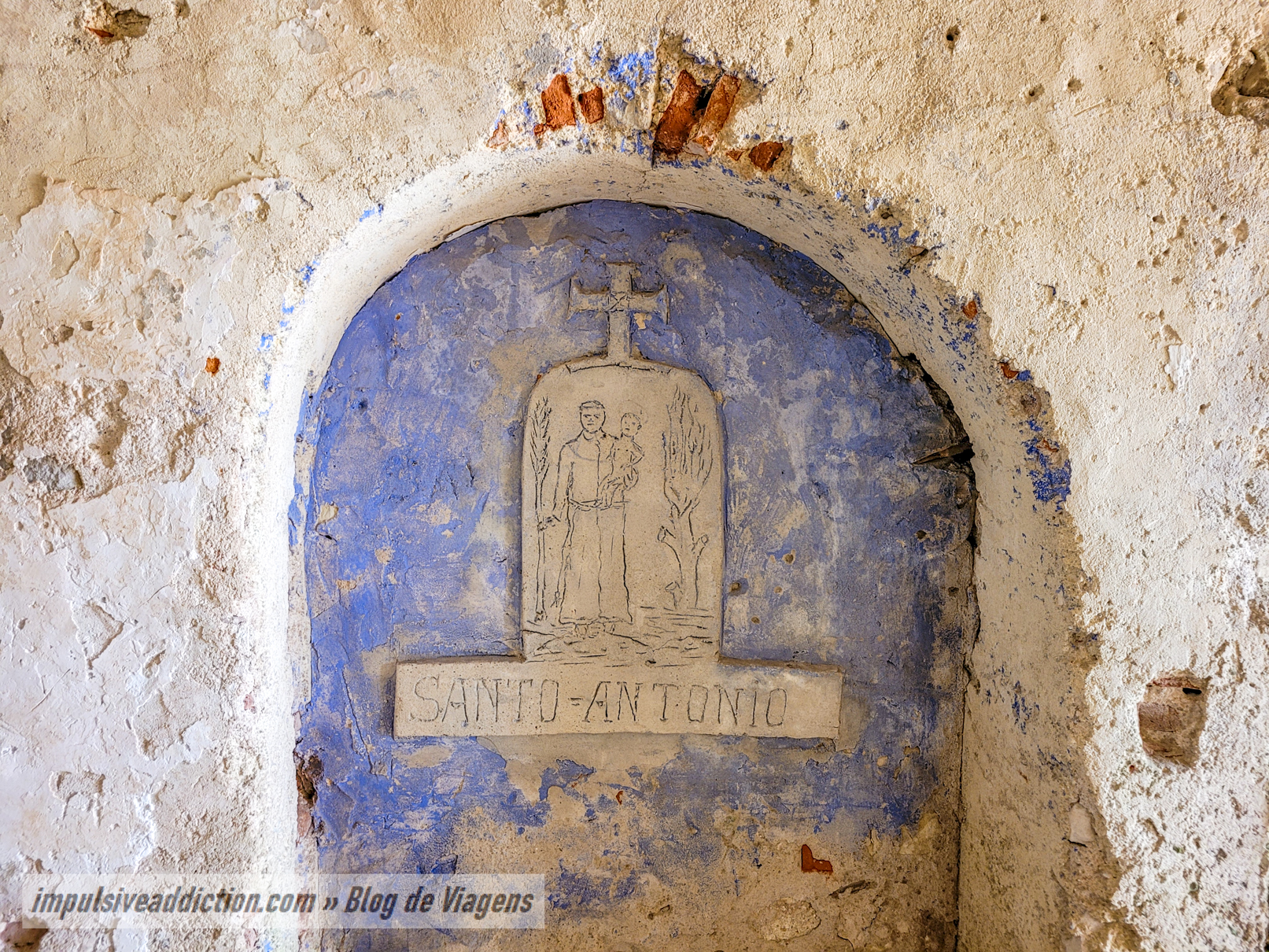
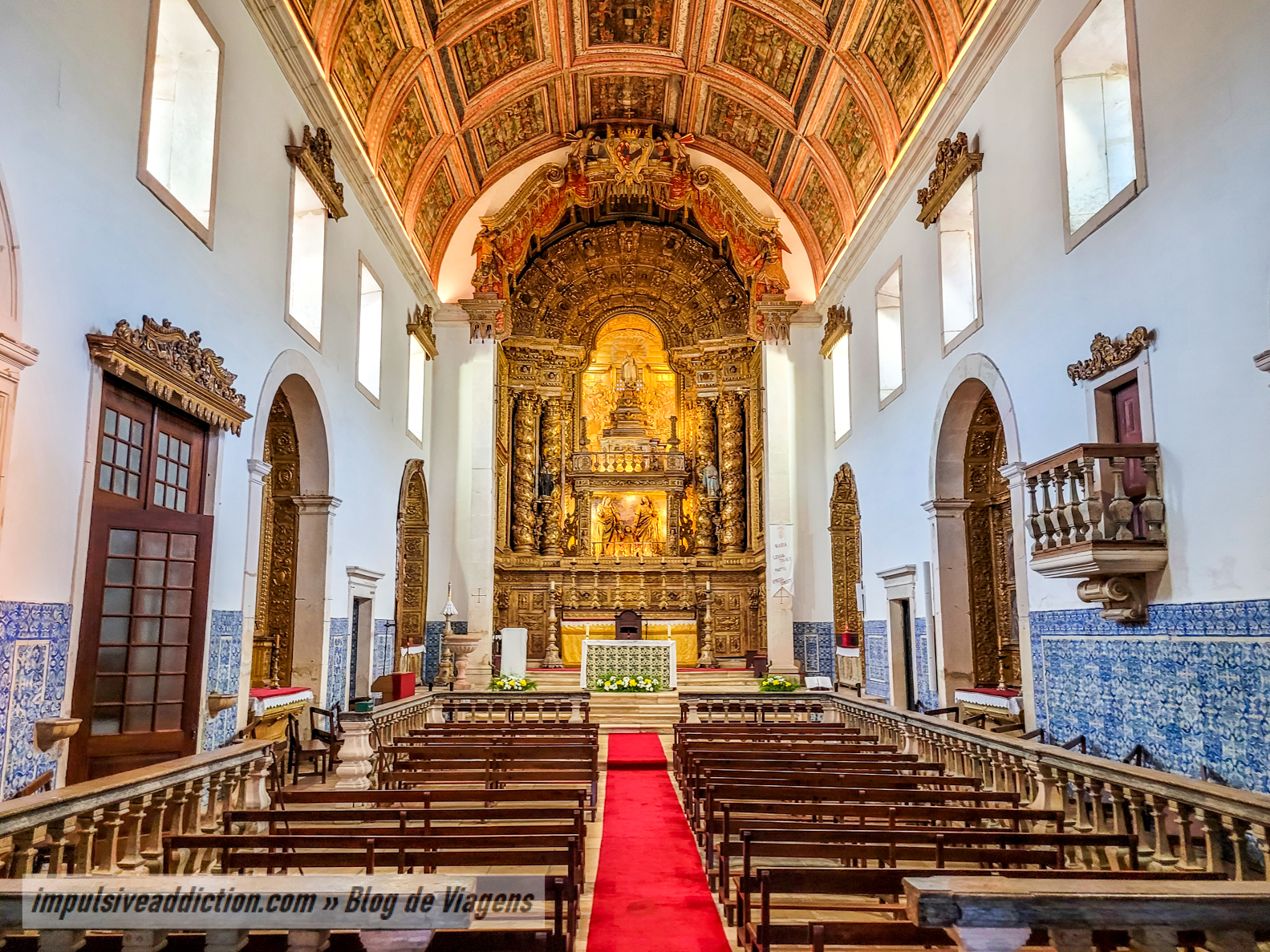
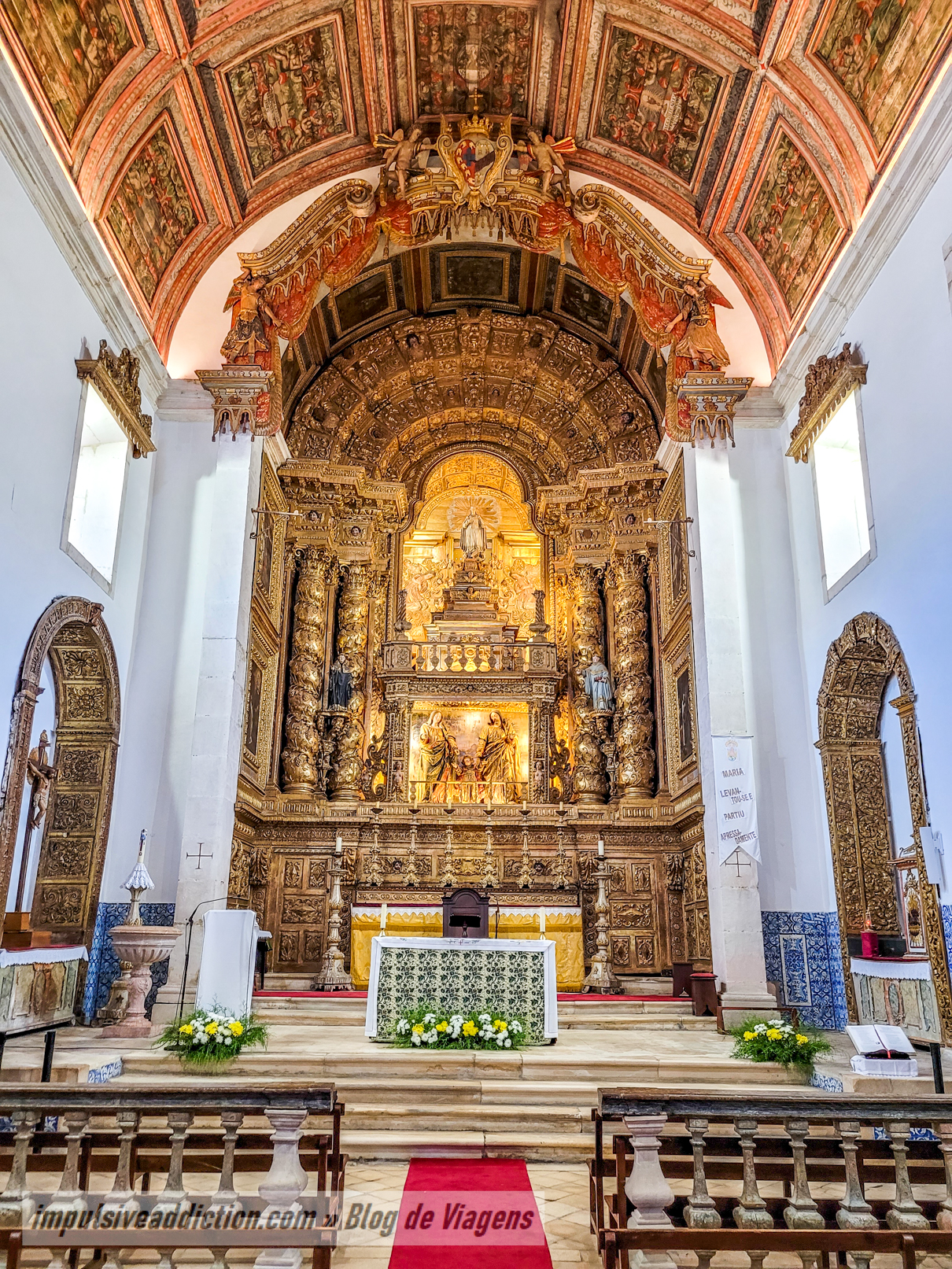
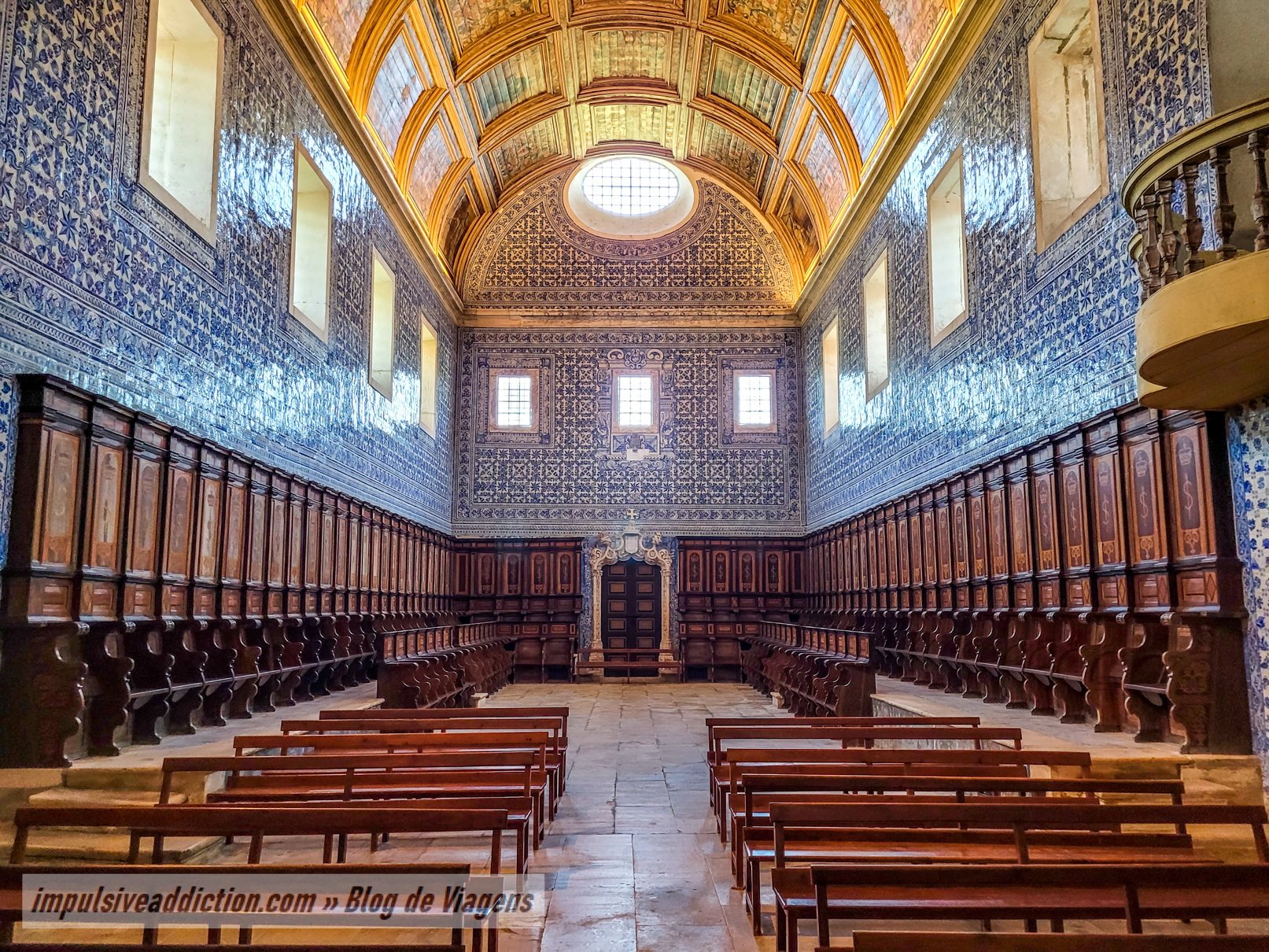
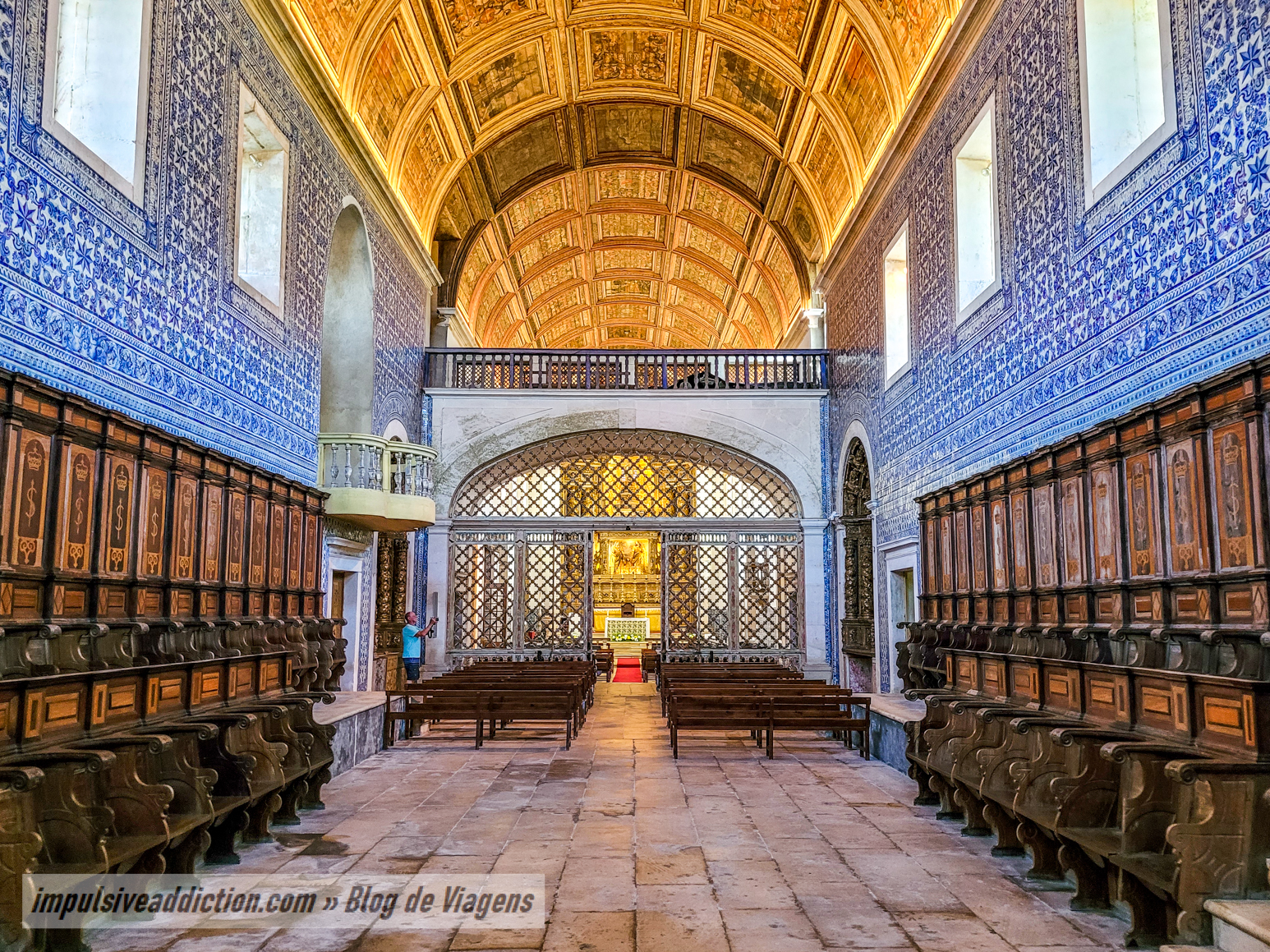
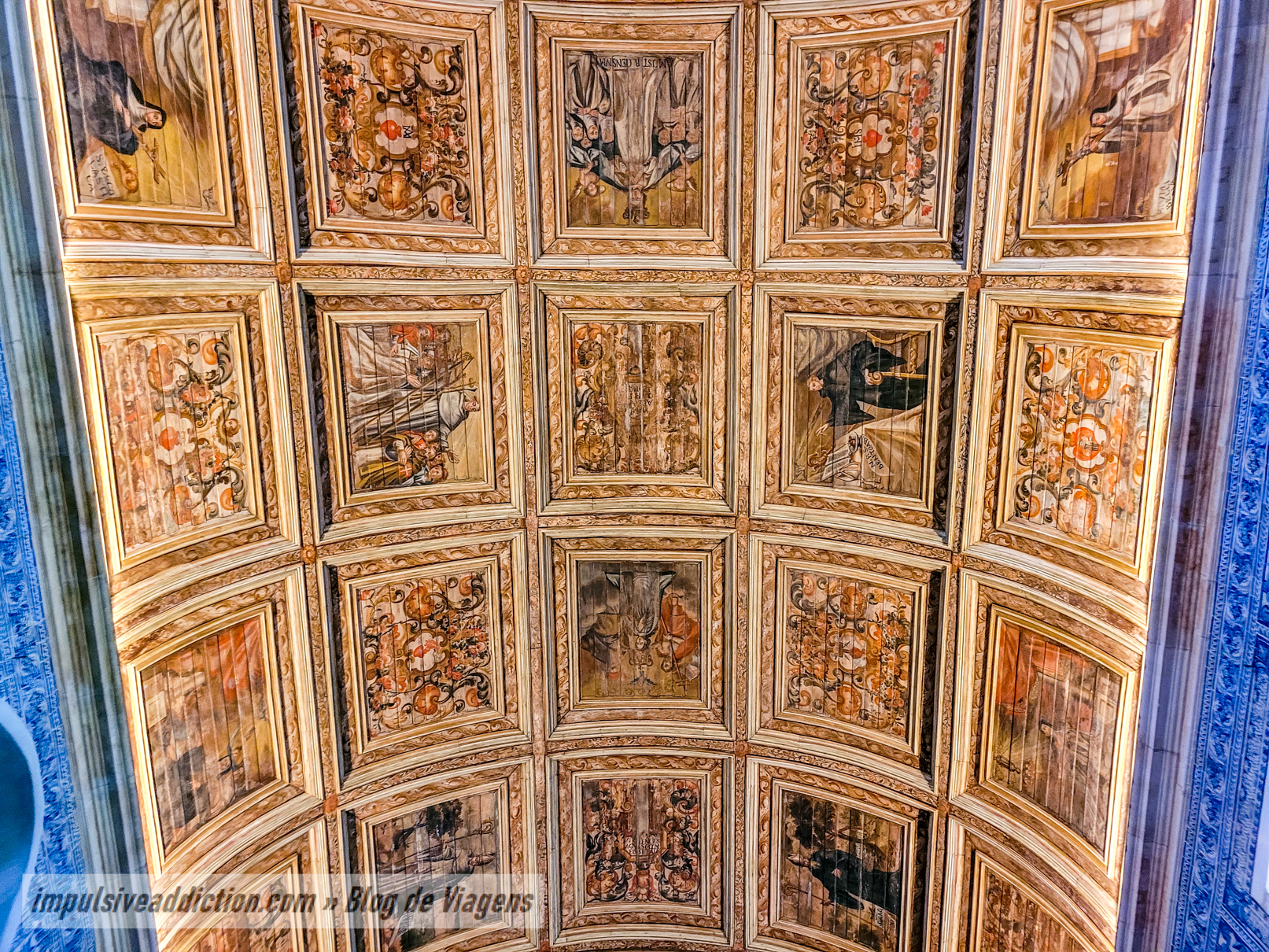
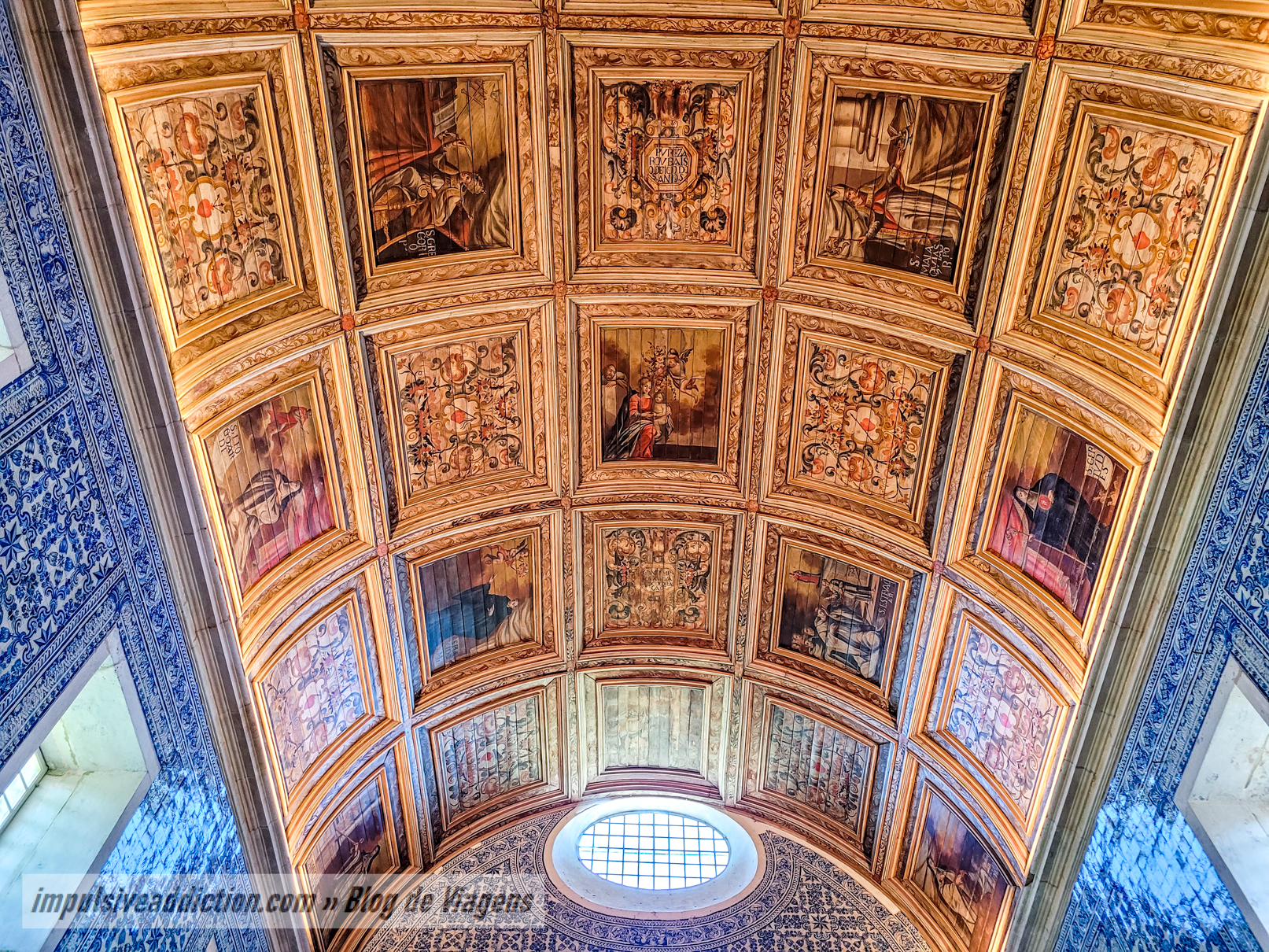
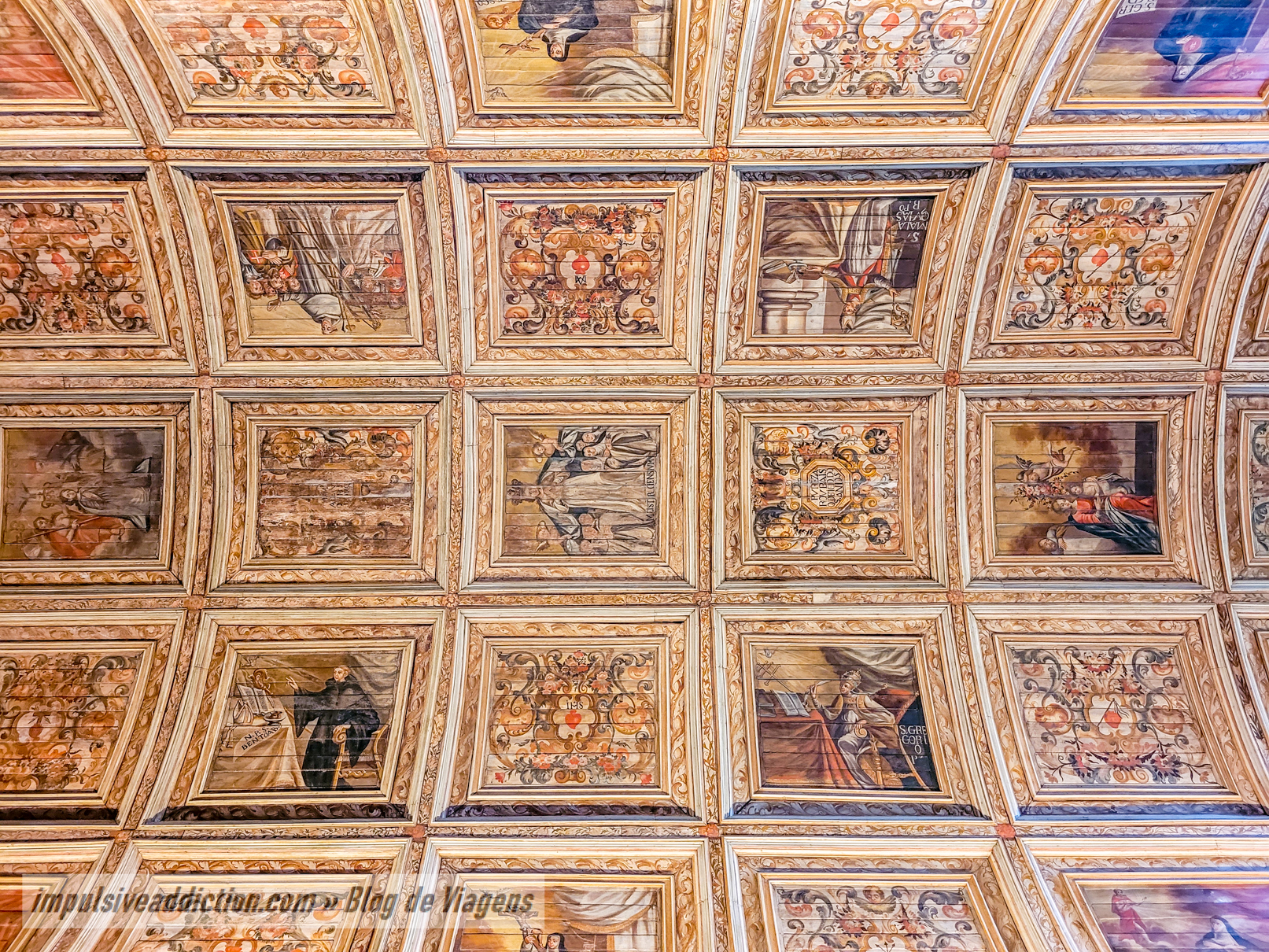
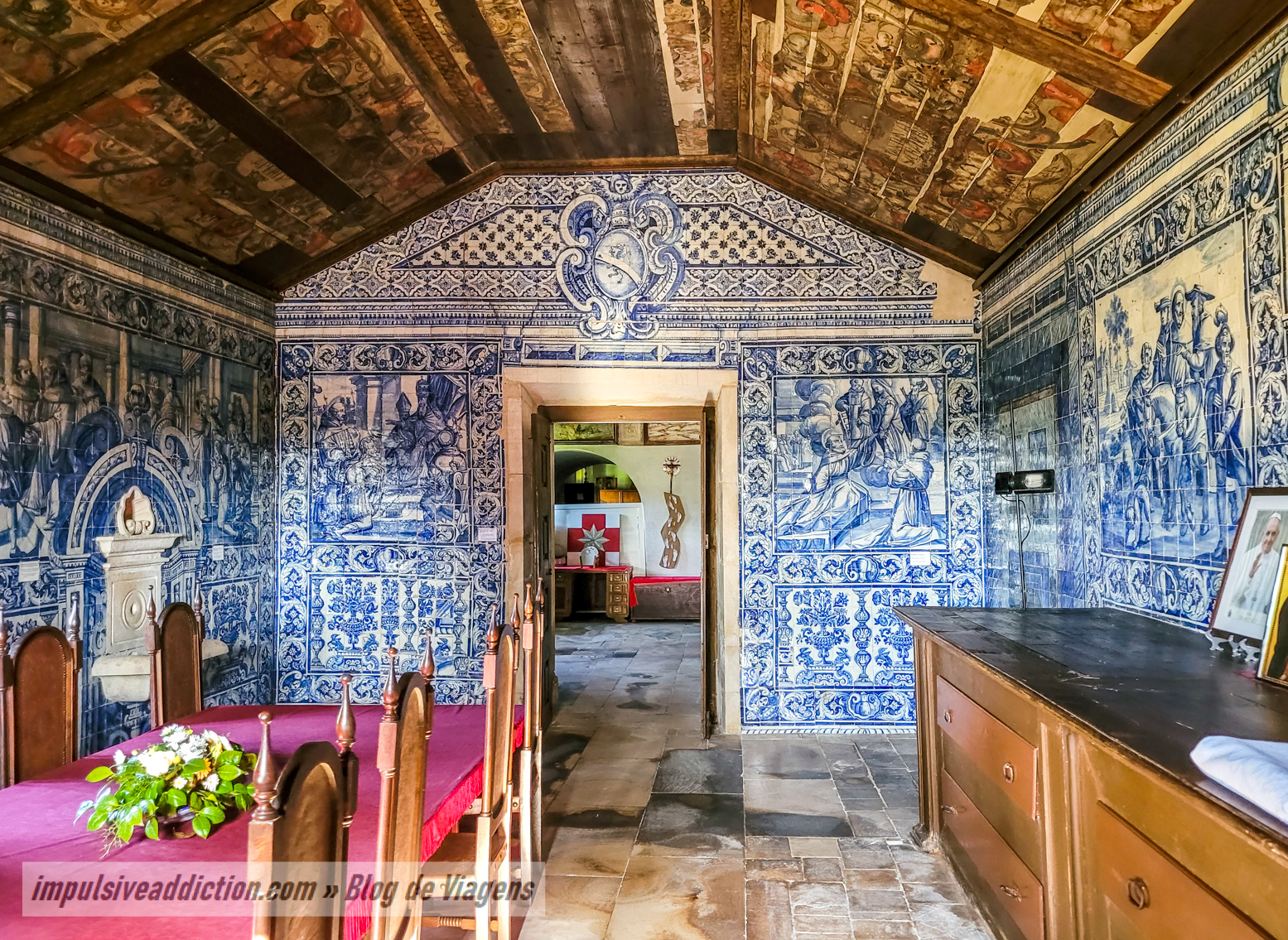
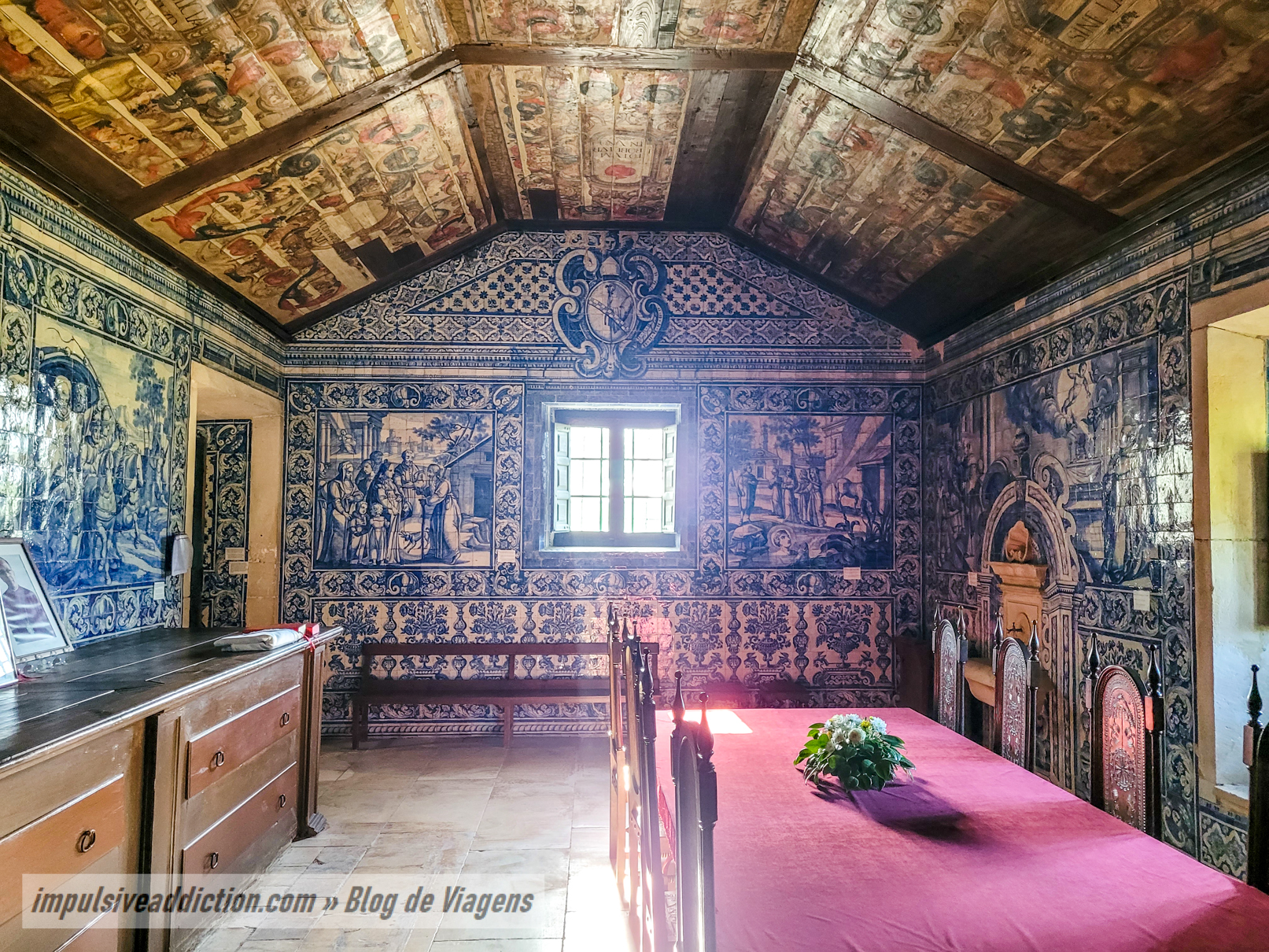
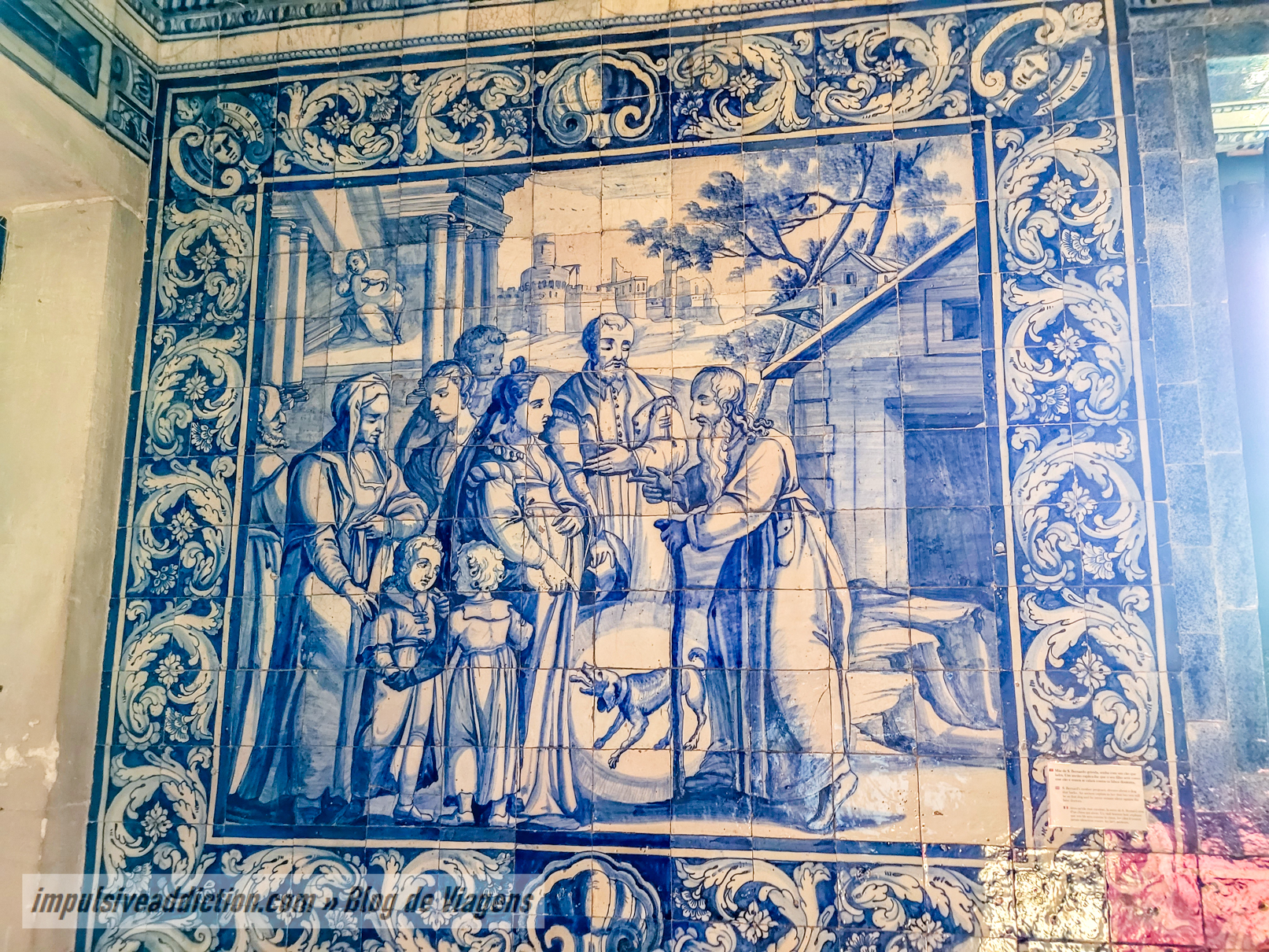
5. Viewpoint of the Chapel of Santa Rita
In the vicinity of Coz, you can also go up to the viewpoint of the Chapel of Santa Rita, with a direct view of the monastery and the region’s agricultural fields.
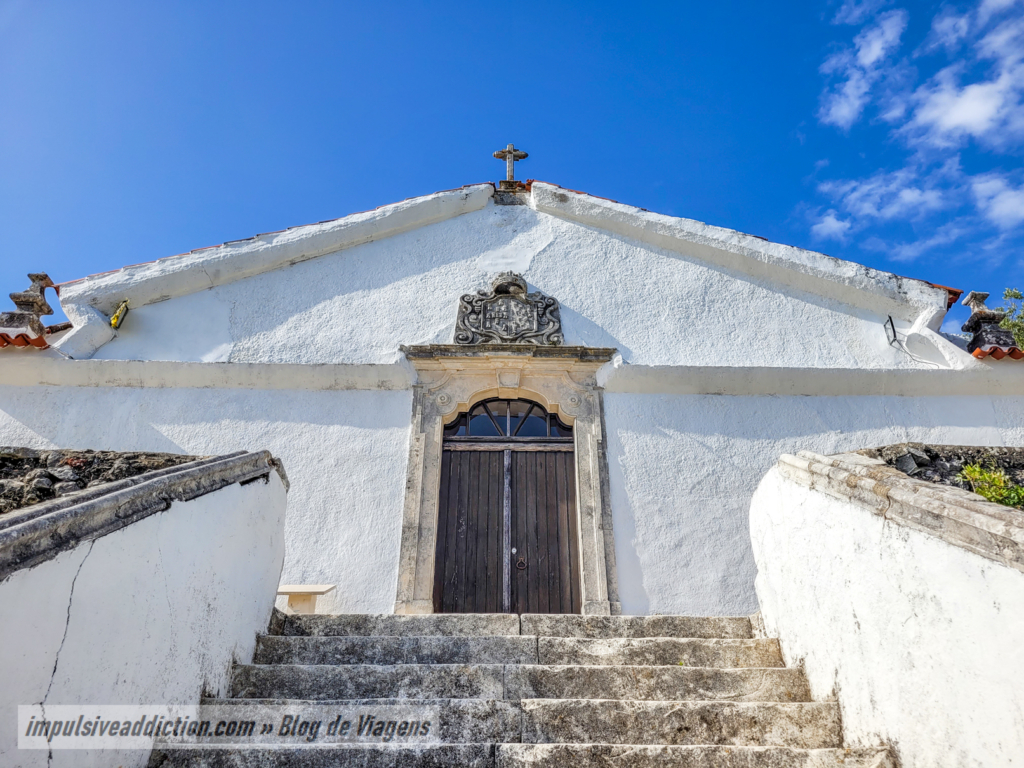
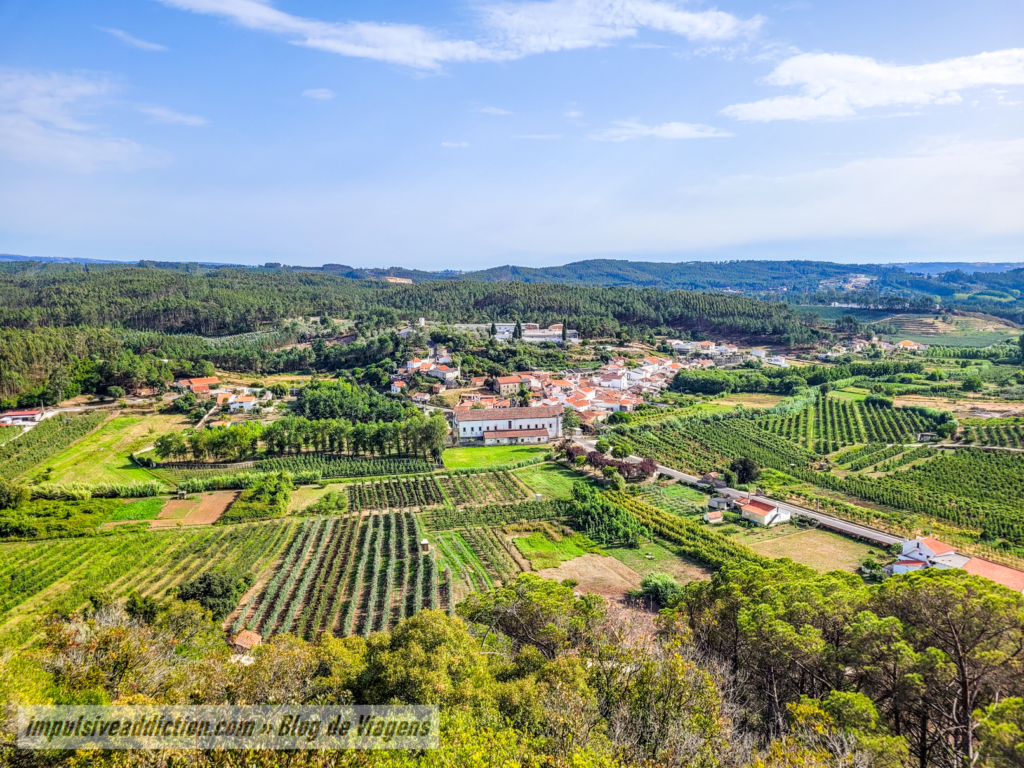
Other places to visit in the Municipality of Alcobaça
- Humberto Delgado Monument (Cela Velha) and its viewpoint.
- Parreitas Archaeological Station, where you’ll find the remains of an ancient Roman Villa that was established there between the 1st and 4th centuries. It was excavated in the 1980s and you can find out more about the finds at the Bárrio Monographic Museum, which unfortunately I didn’t get the chance to visit.
- The Piedade Thermal Baths, where you can stay overnight. Here the thermal waters are used to treat various skin diseases, as well as digestive, urinary and musculoskeletal disorders.
- Vestiaria Mother Church, dedicated to Nossa Senhora da Ajuda. Its incredible Manueline portico stands out.
- Raúl da Bernarda Museum, divided into two different exhibitions: the first on the costumes of Rancho do Alcoa, and the second on the ceramics and crockery of Raúl da Bernarda & Filhos factory, founded in 1875.
- The church and pillory of Maiorga.
- Vista Alegre’s Atlantis Factory, and in particular its visitor center. How about organizing an industrial tourism visit to Alcobaça? Contacts on Vista Alegre website.
- And Parque dos Monges, where you can also stay when you visit Alcobaça. This is an environmental park with an educational farm and a river. The accommodation is glamping style and ideal for a romantic stay or with children, who will have lots of fun with the animals and activities that the park offers.
1. Humberto Delgado Monument (Cela Velha)
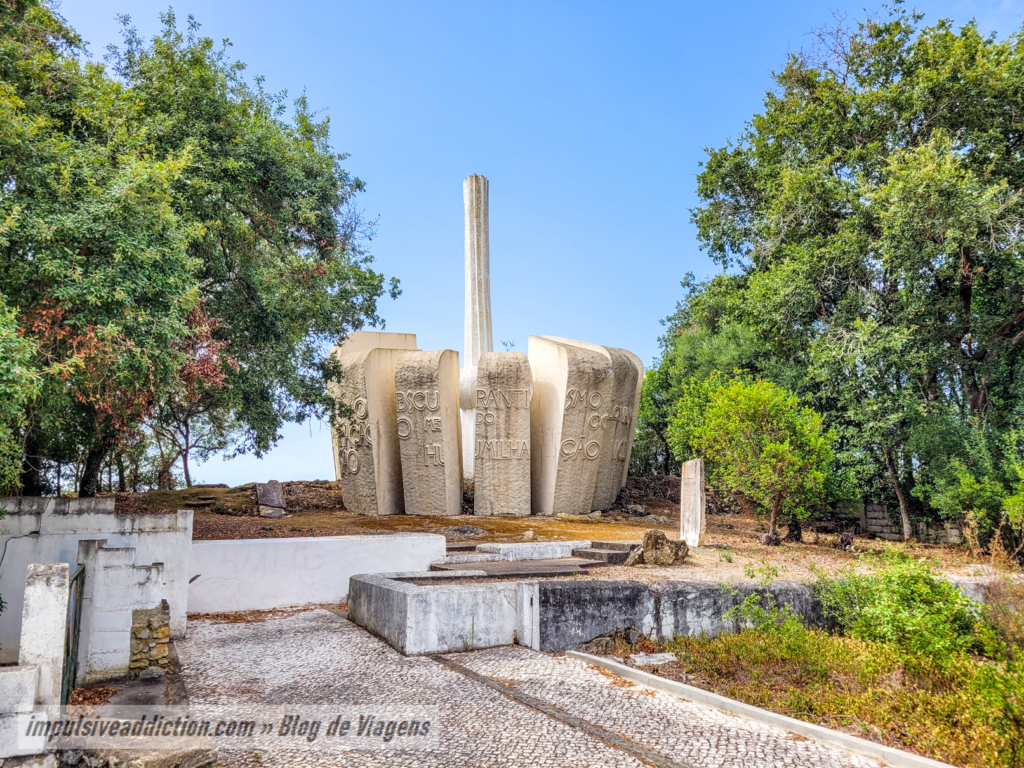
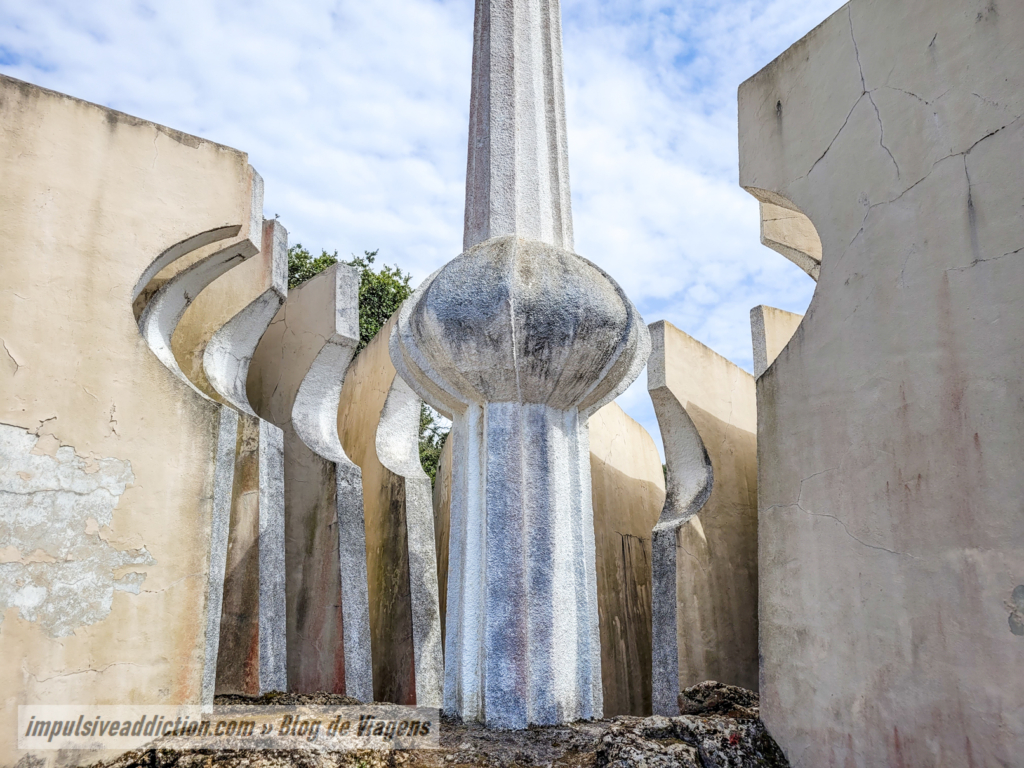
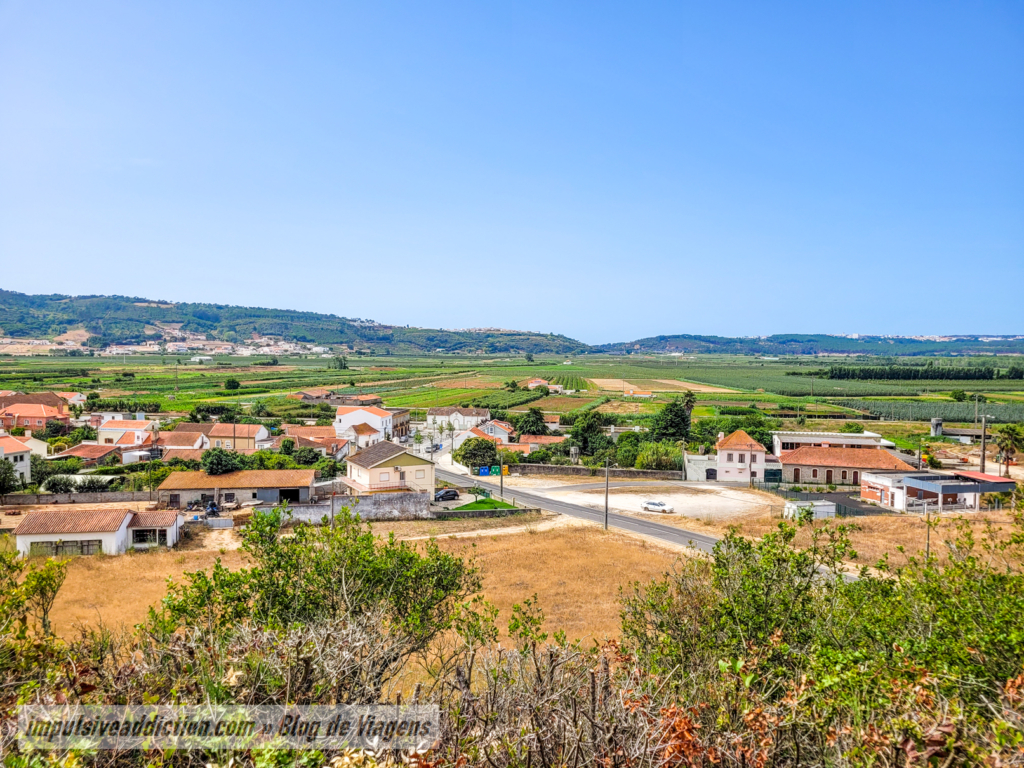
2. Parreitas Archaeological Station and Monographic Museum (Bárrio)
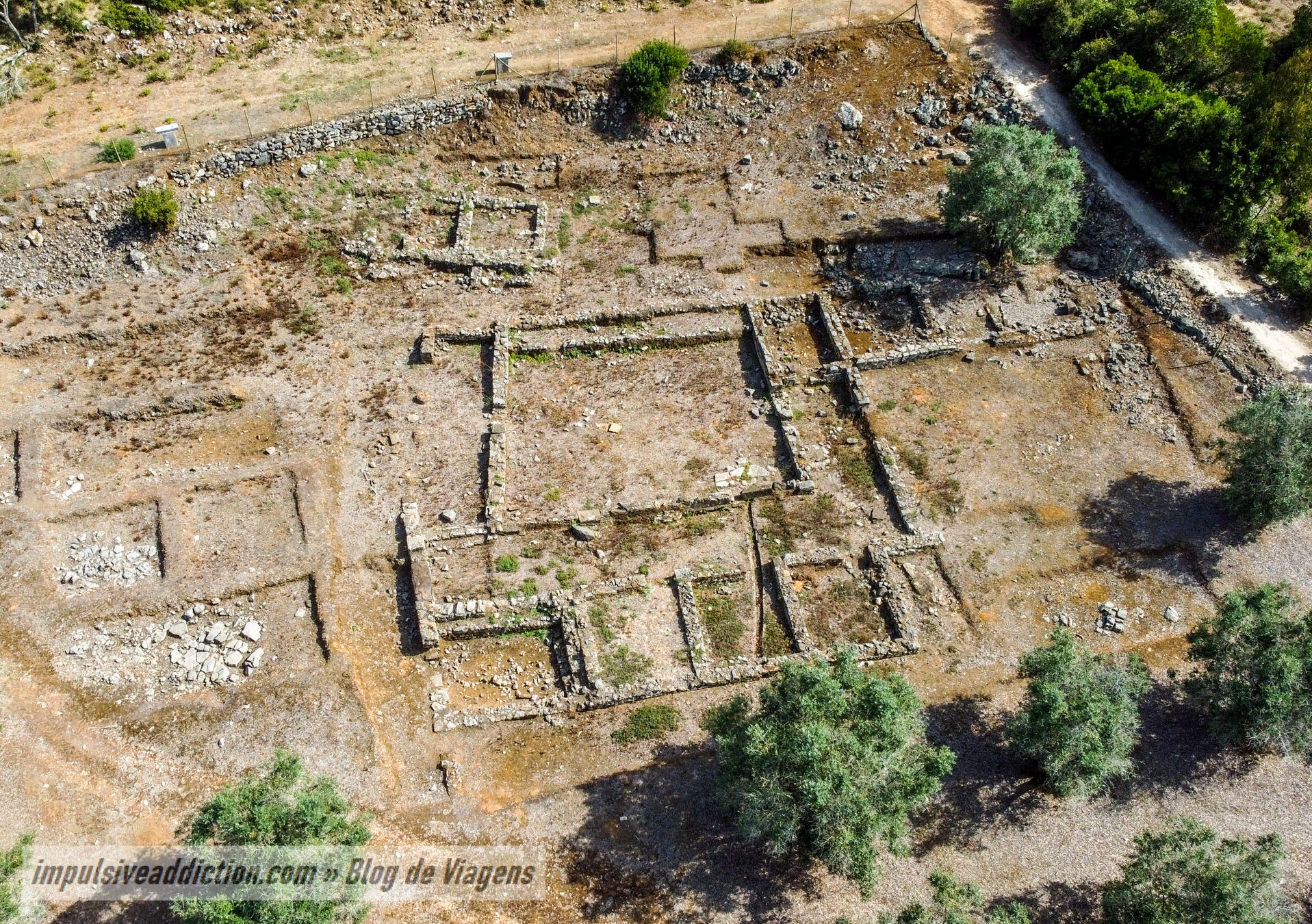
3. Piedade Thermal Baths
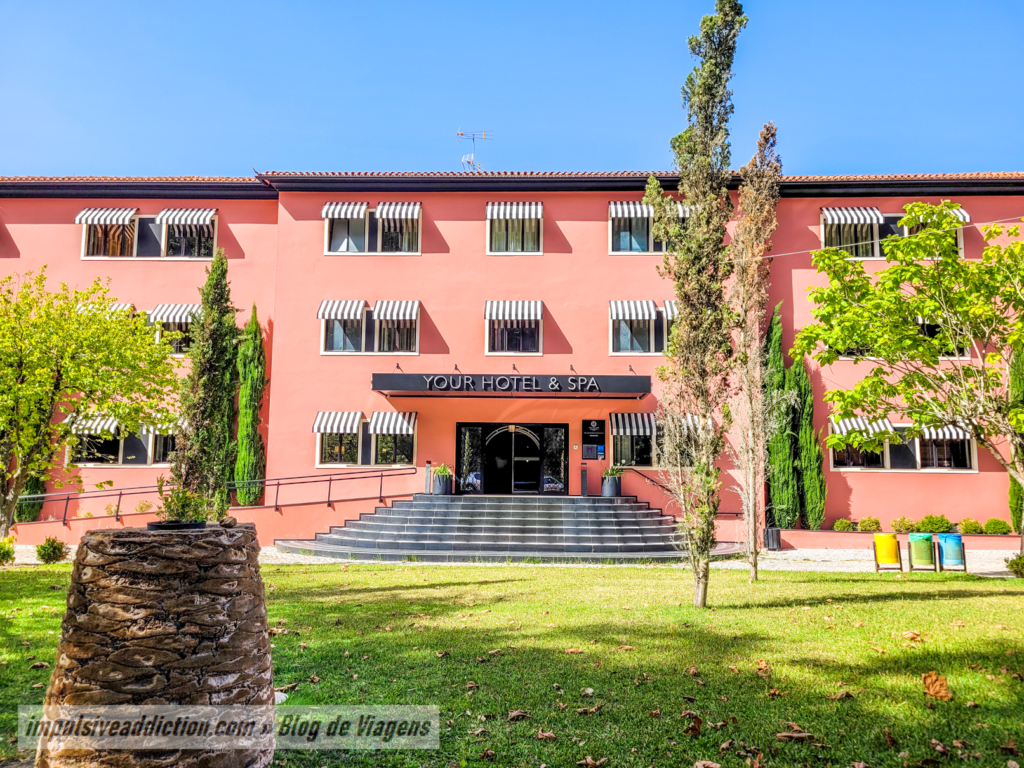
4. Vestiaria Mother Church
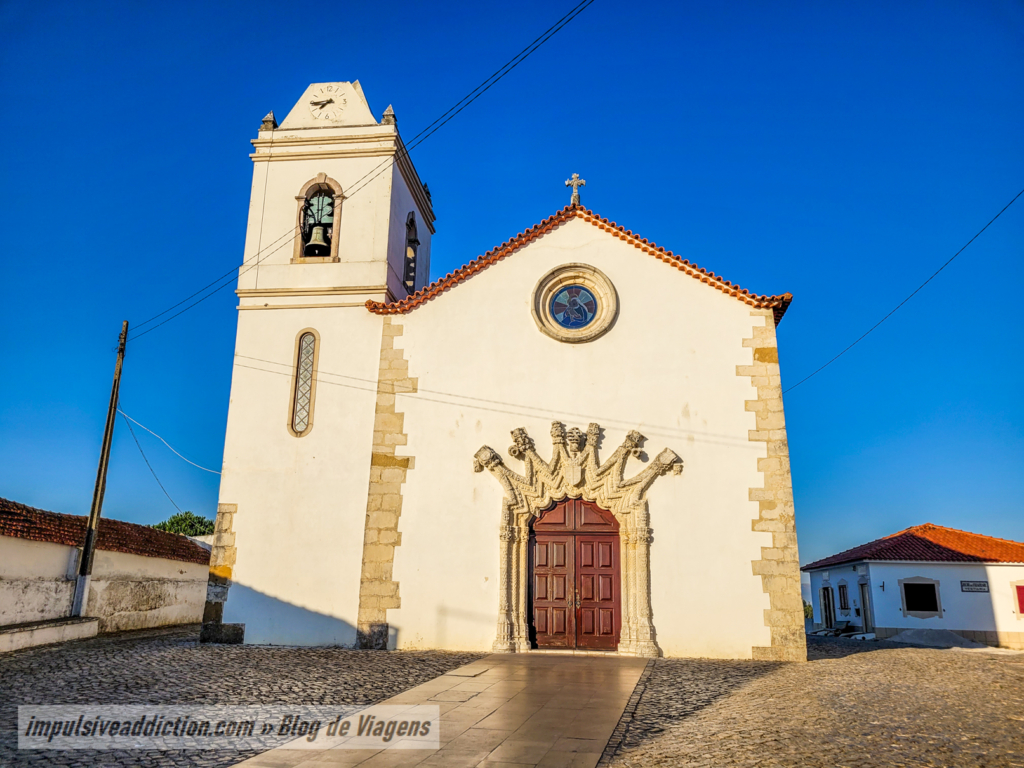
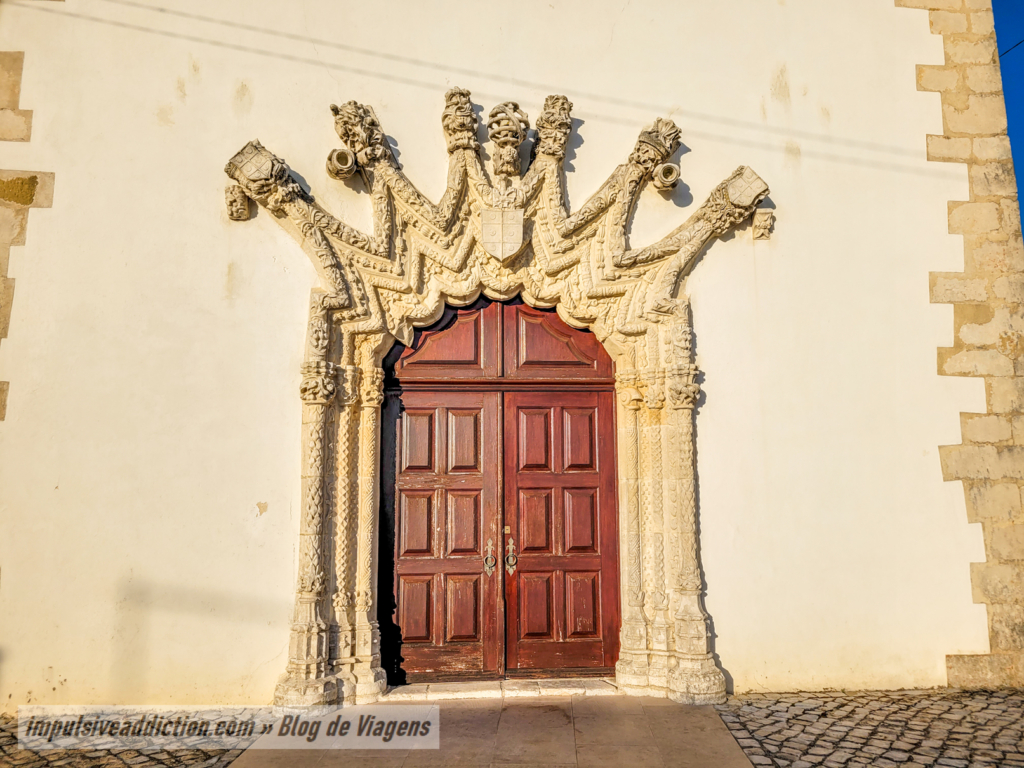
5. Raúl da Bernarda Museum
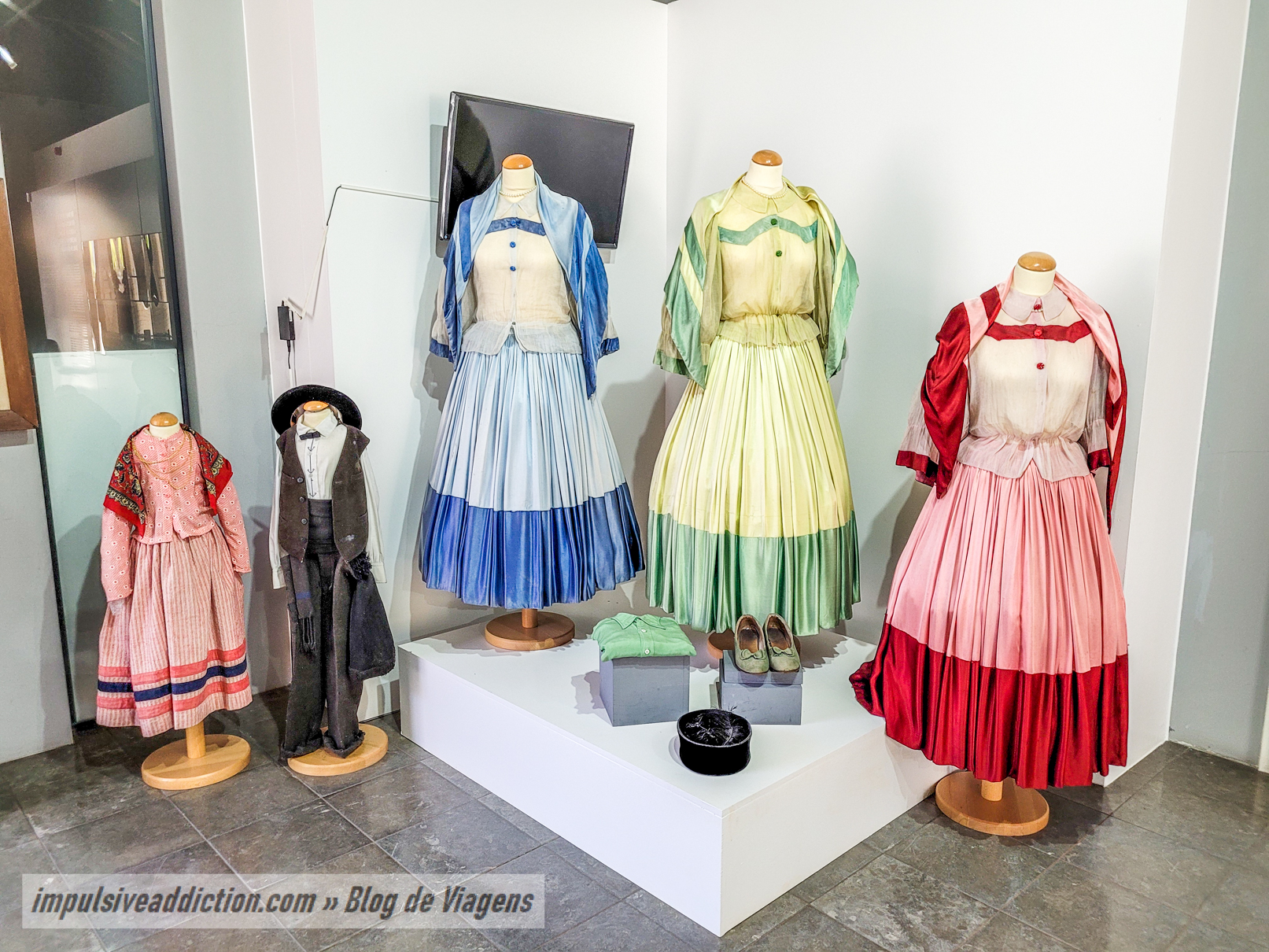
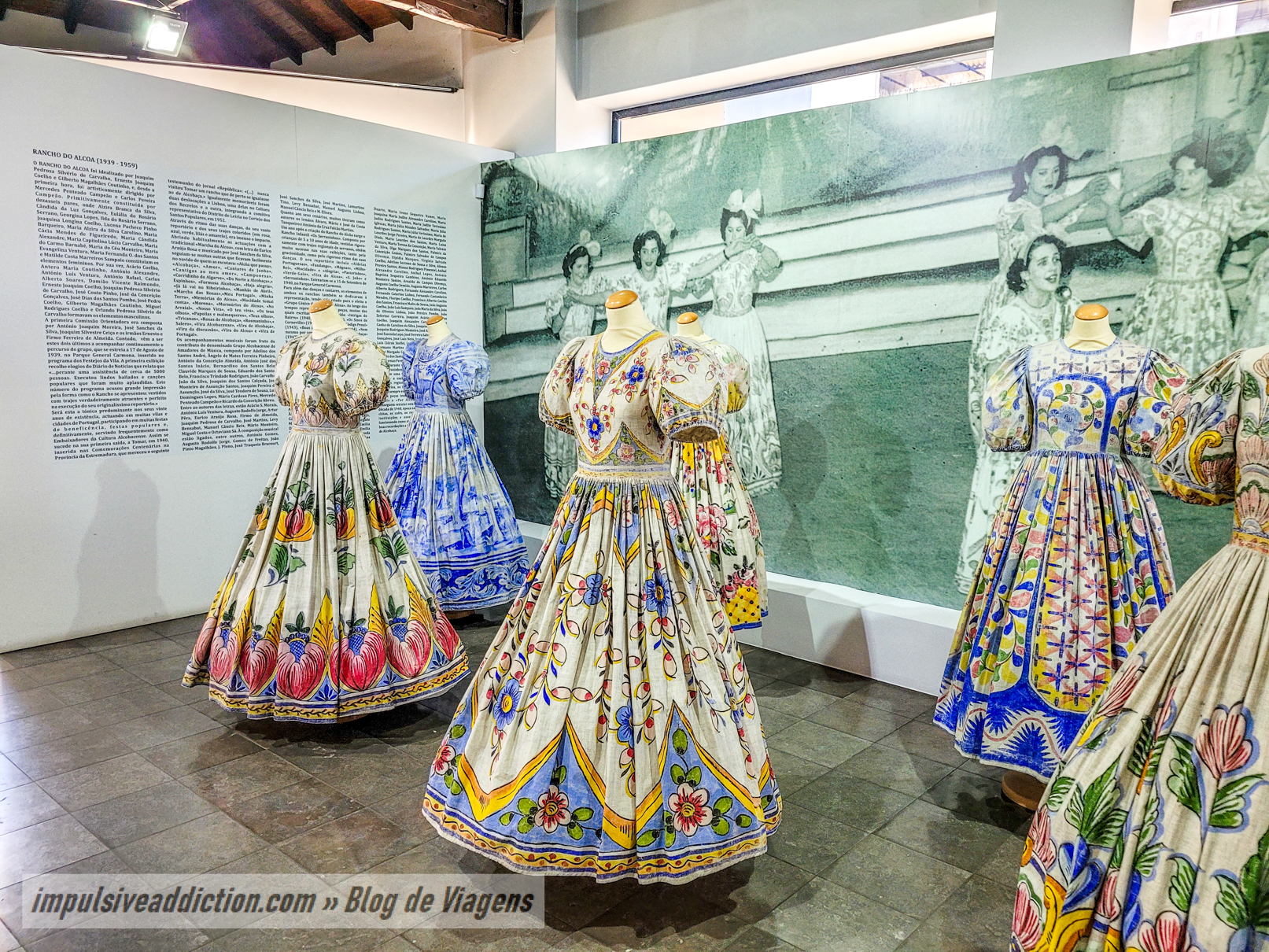
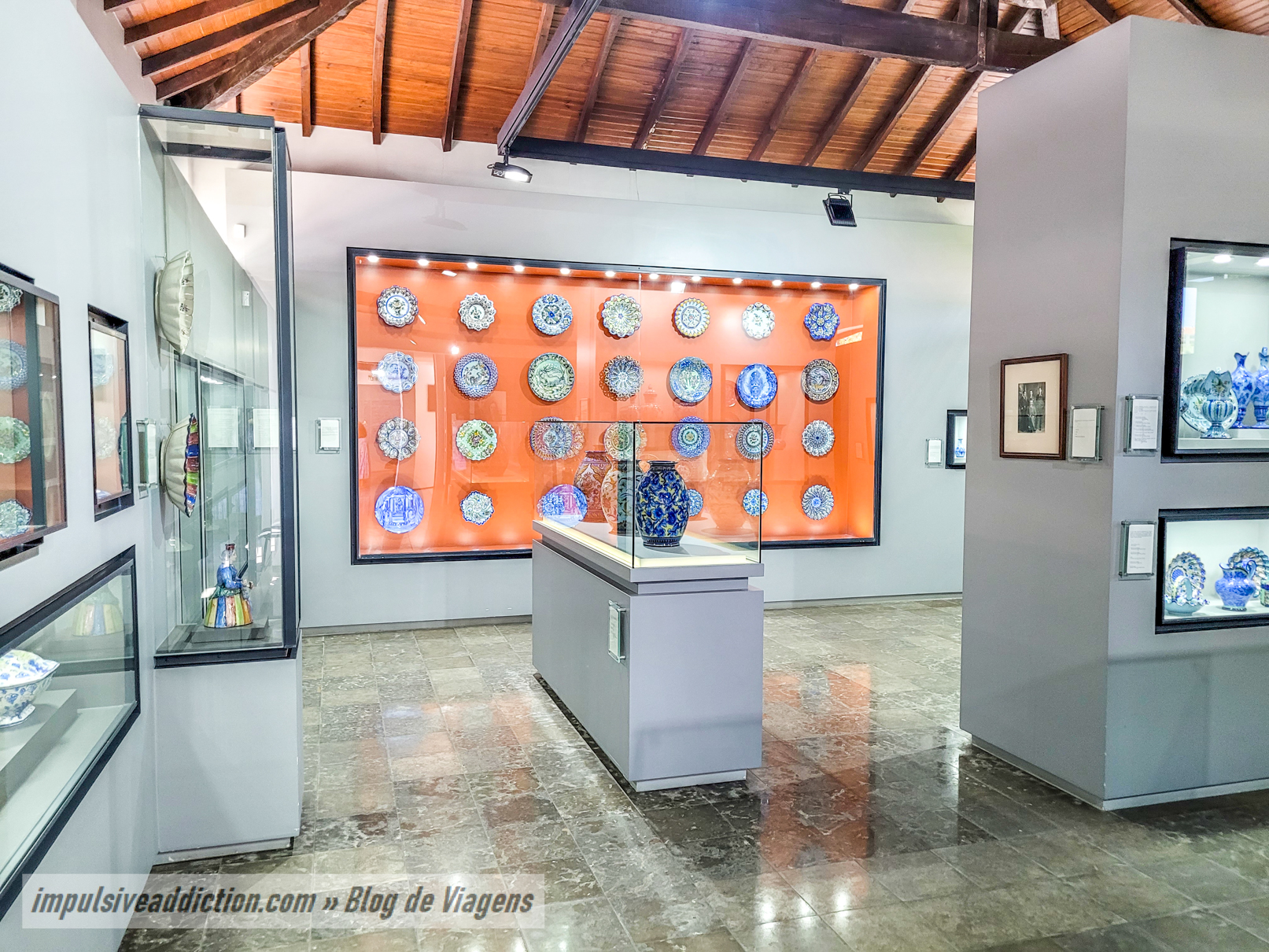
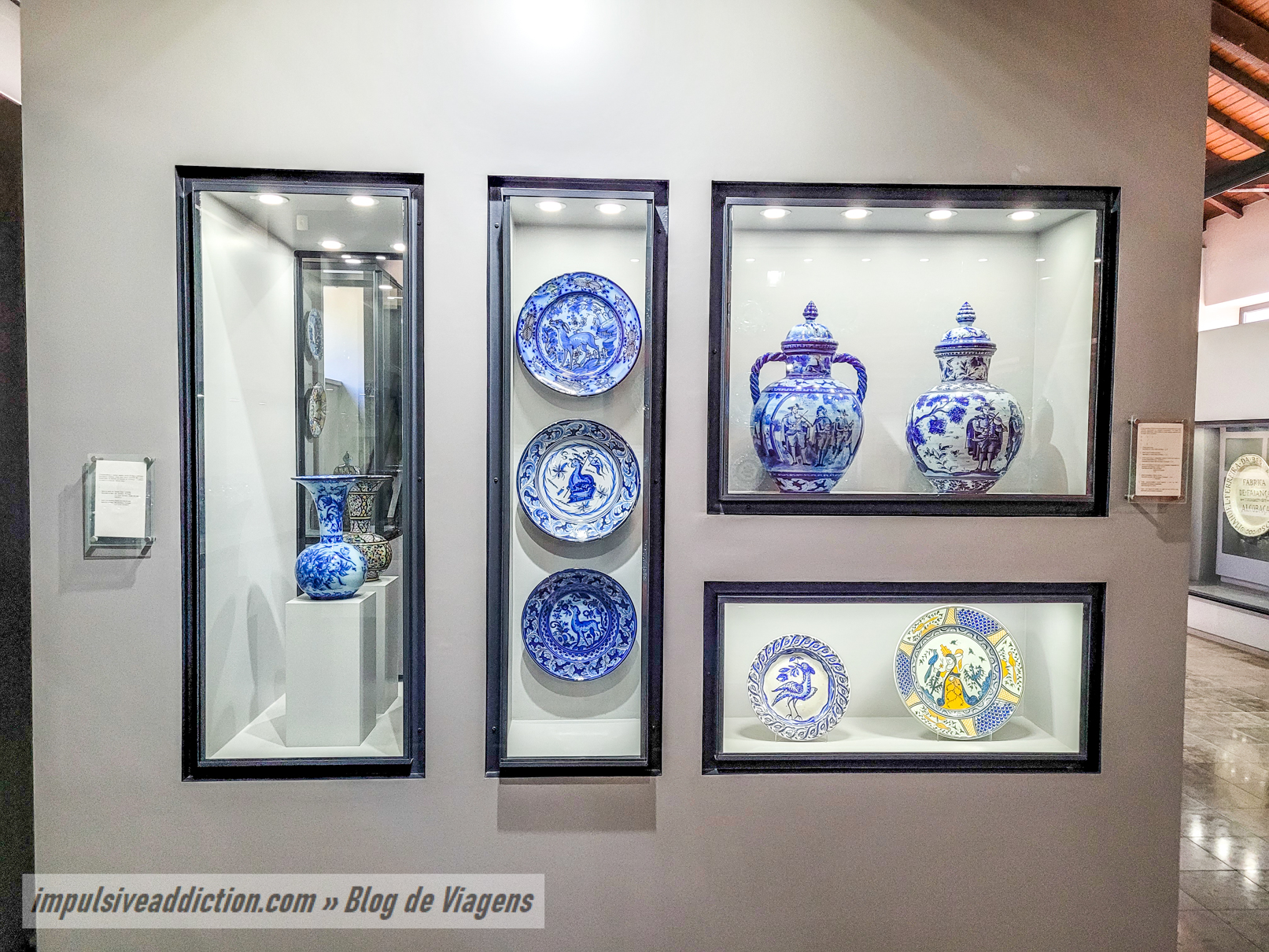
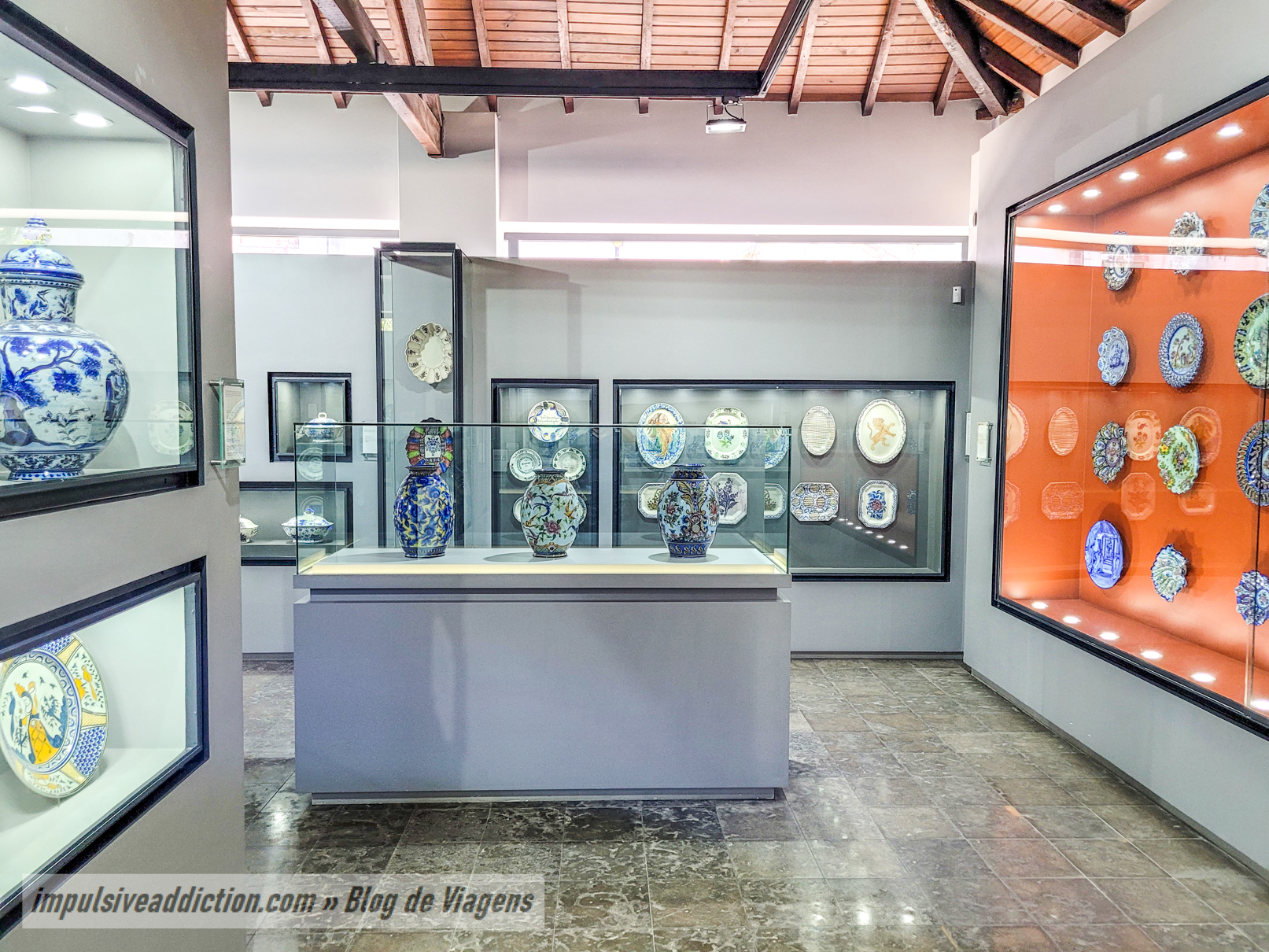
6. Church and Pillory of Maiorga
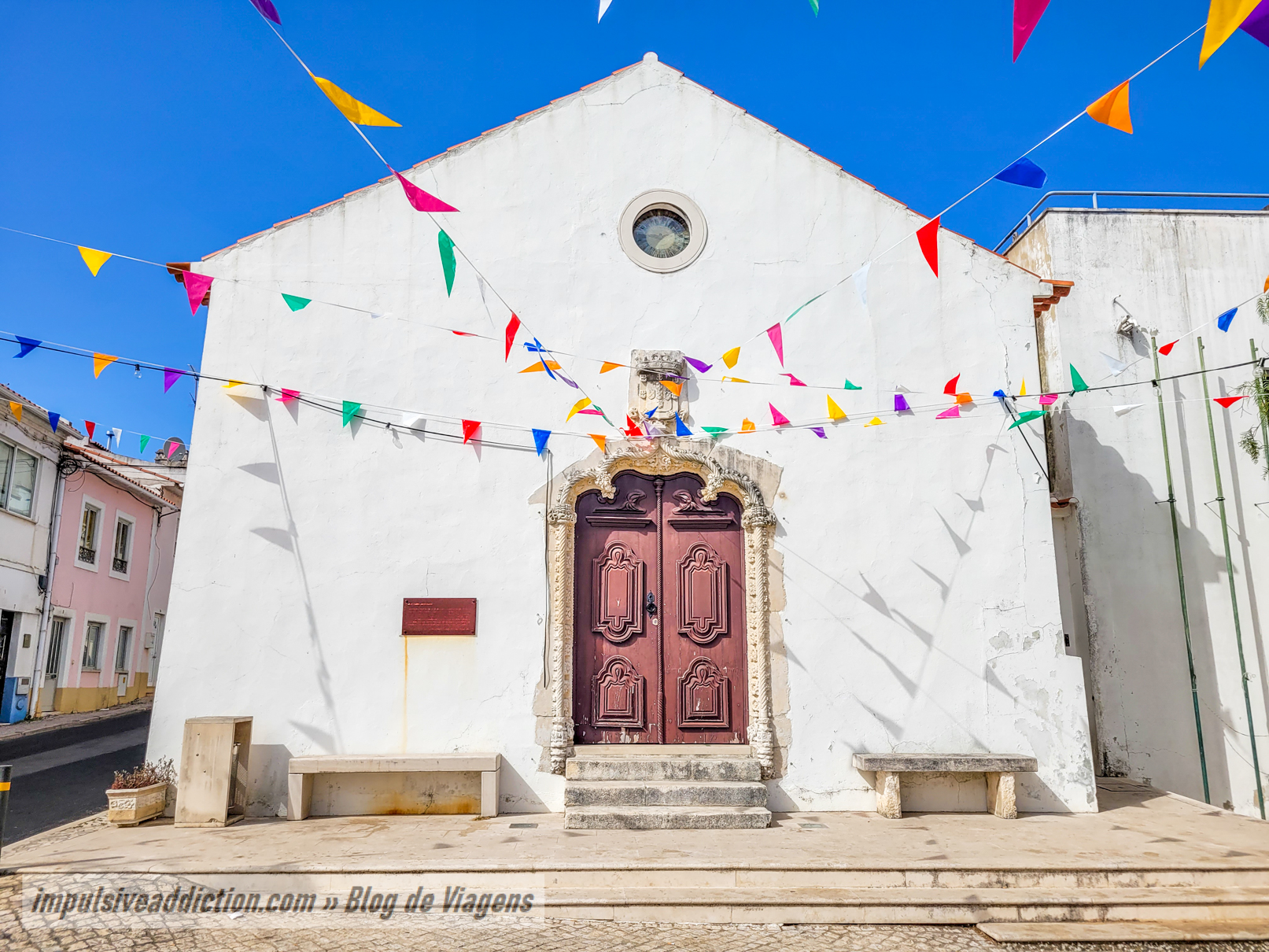
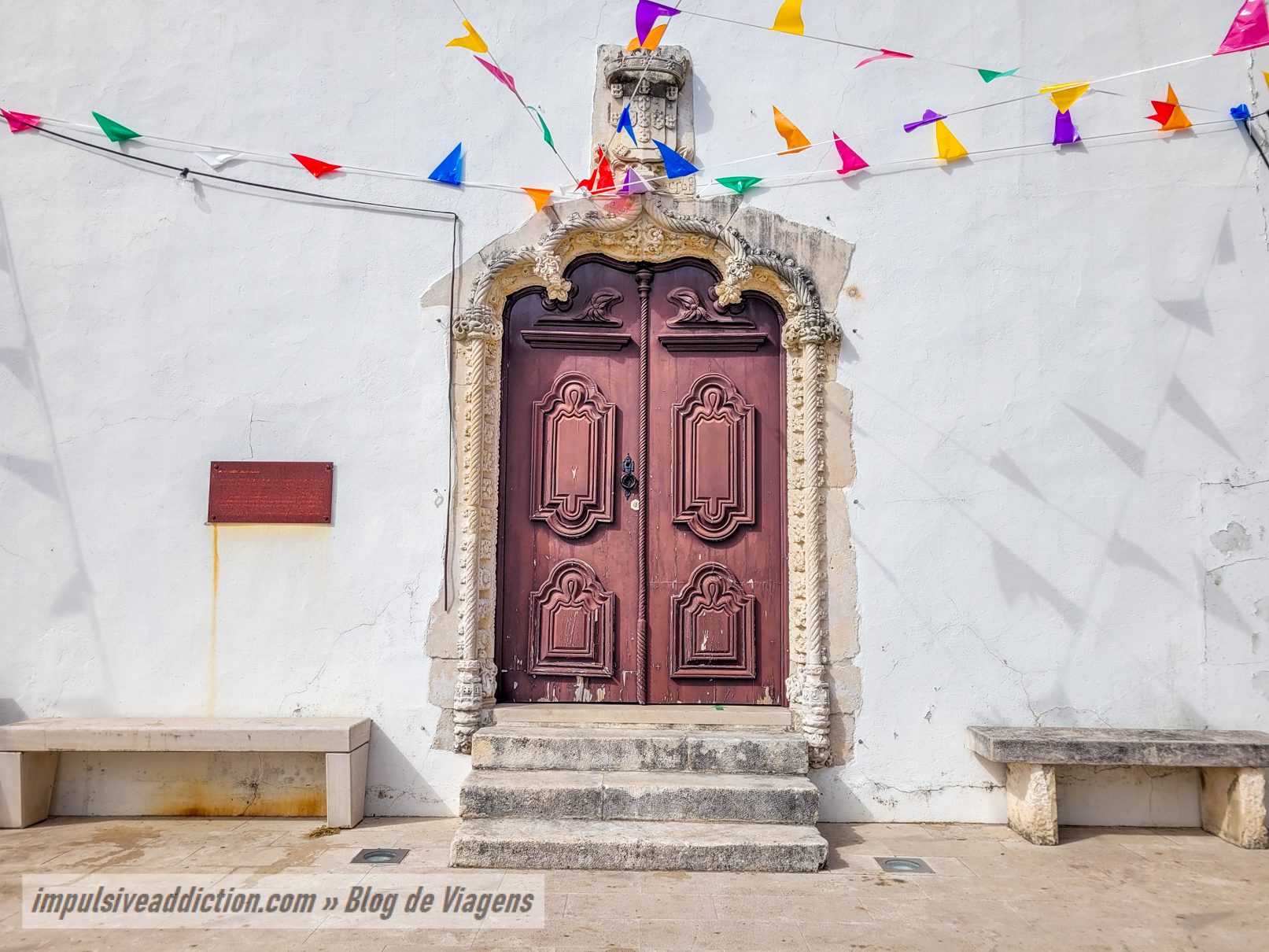
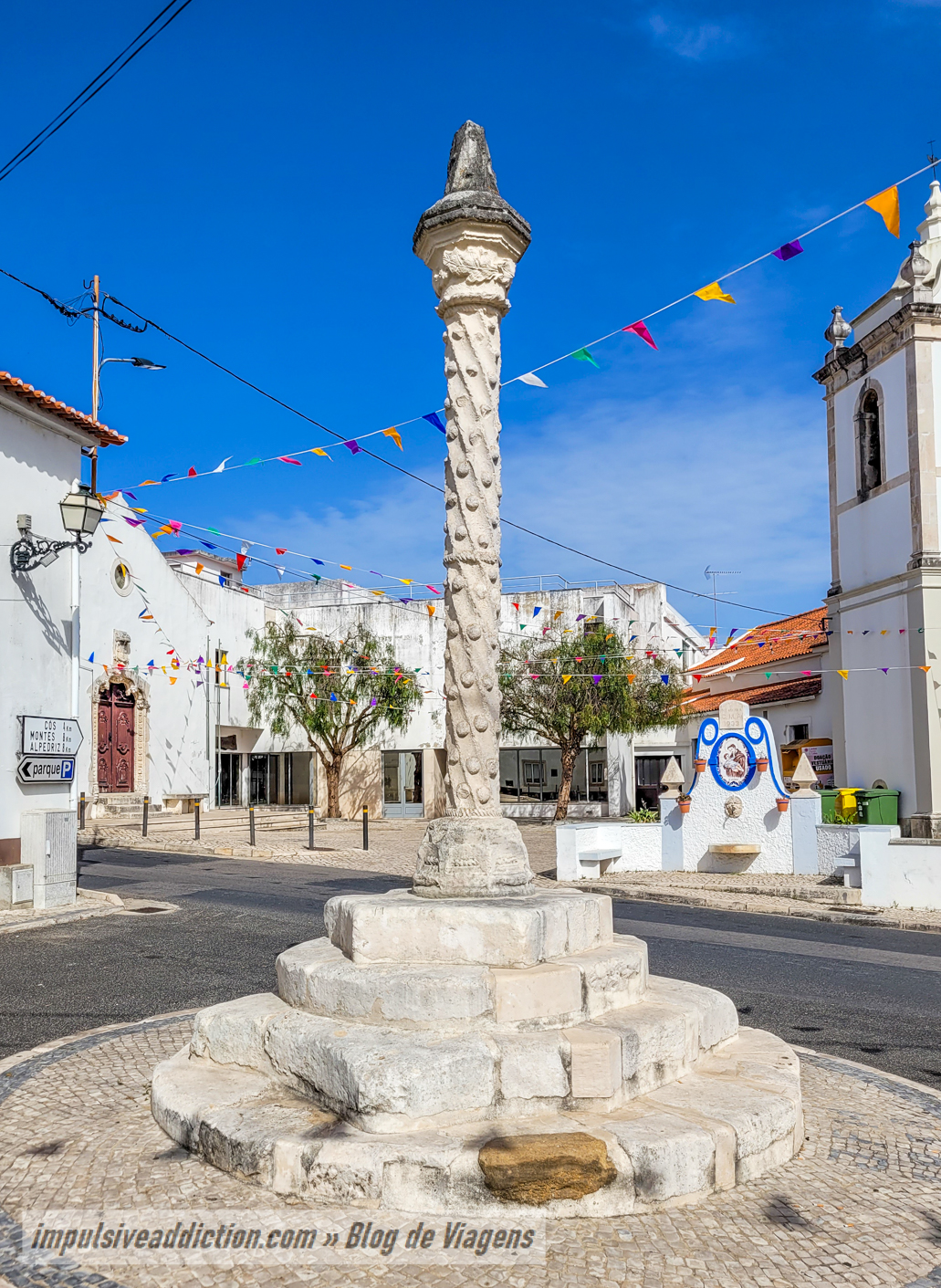
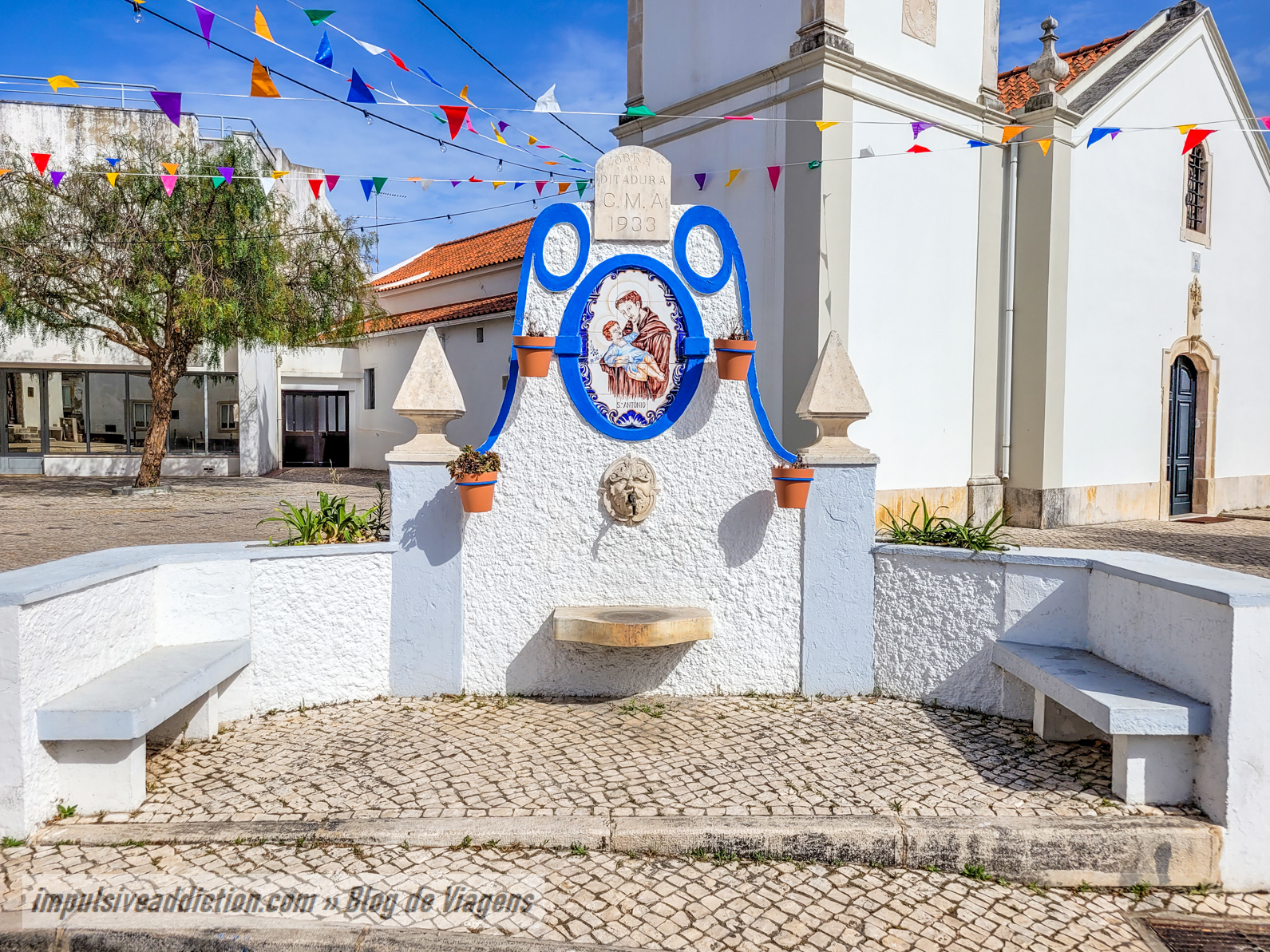
7. Vista Alegre’s Atlantis factory
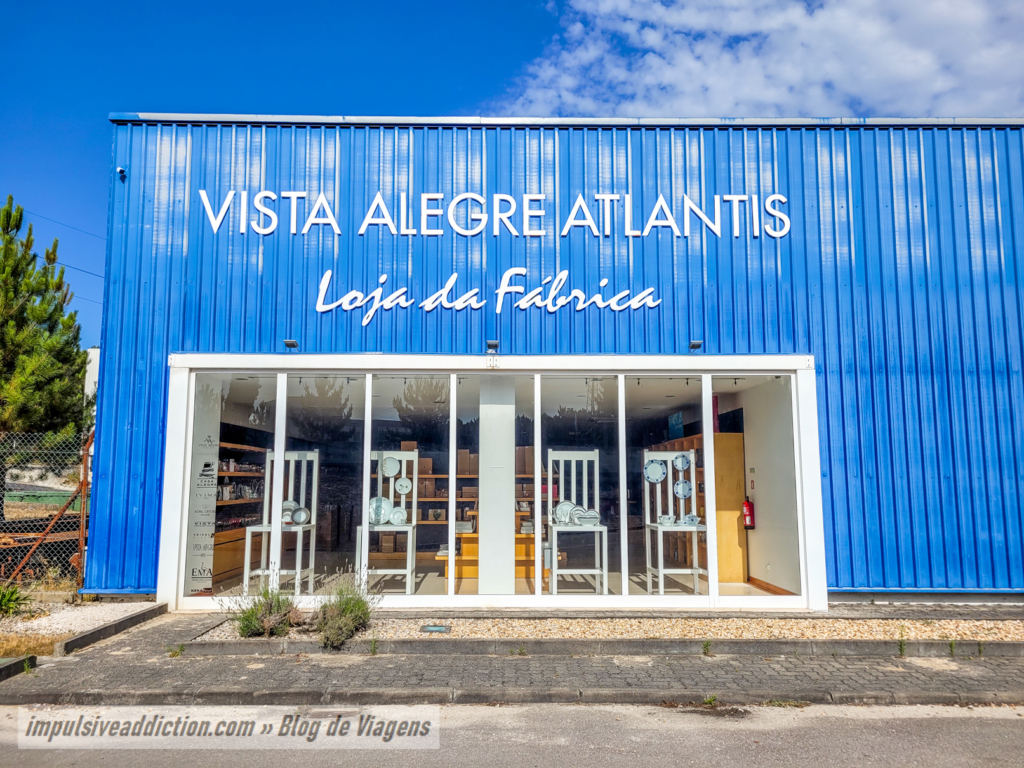
8. Parque dos Monges
At the time of my trip to Alcobaça, Parque dos Monges was only open to guests of its Glamping lodges. I didn’t stay there, so I wasn’t able to visit it from the inside.
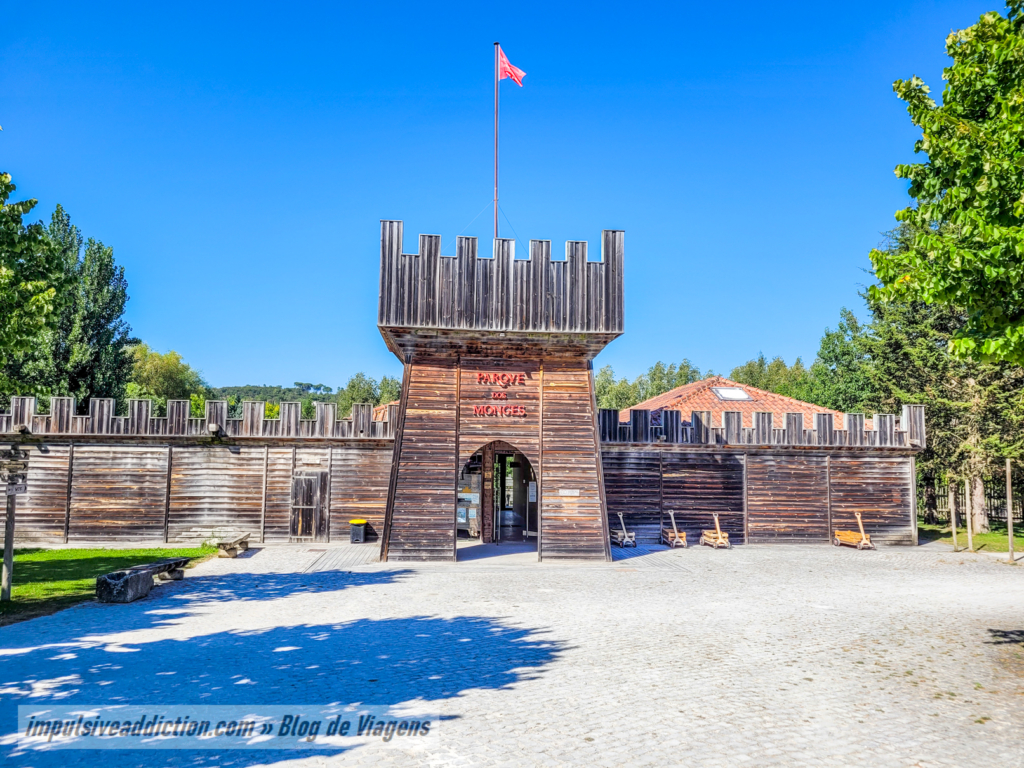
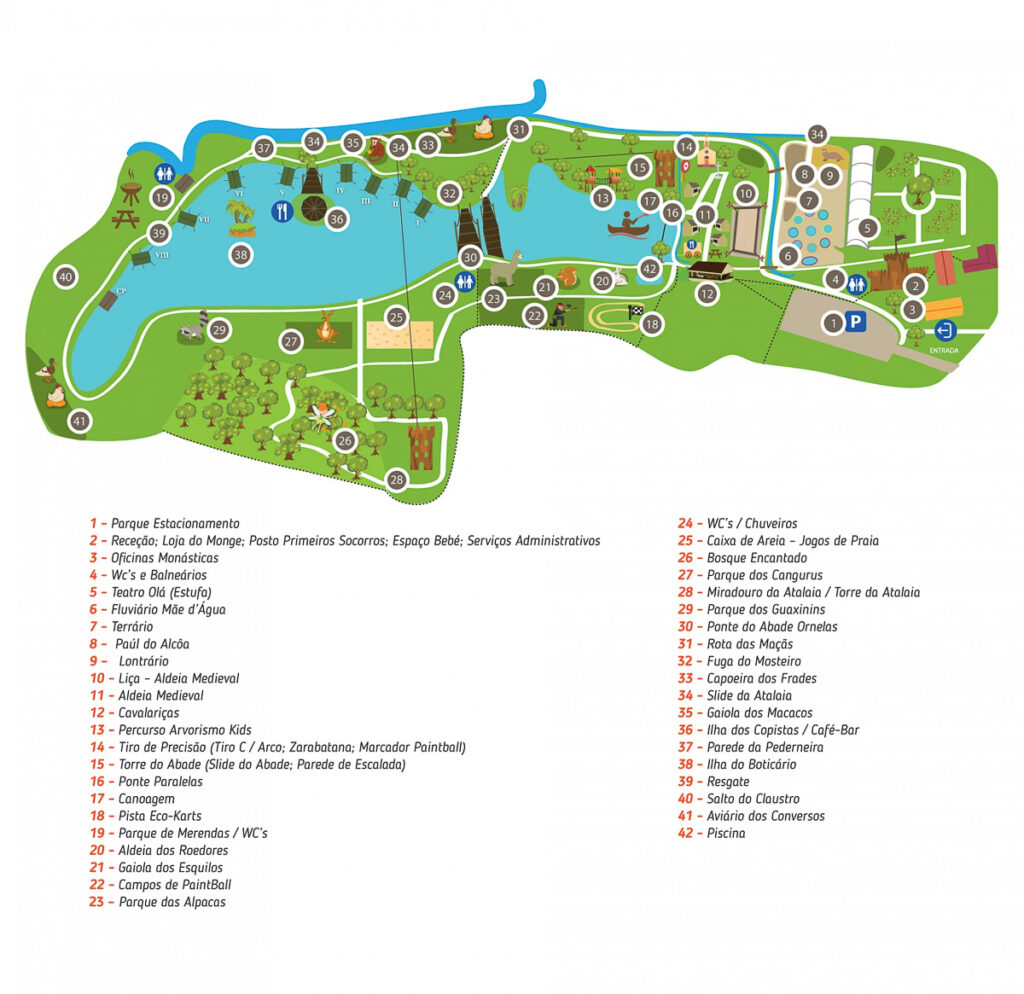
Other places around Alcobaça
I would highlight the Serras de Aire e Candeeiros Natural Park, Nazaré, and the Interpretation Center of the Battle of Aljubarrota, in the exact field where the armies clashed.
1. Visit the Natural Park of Serras de Aire and Candeeiros
In the case of Serras de Aire and Candeeiros Natural Park, consider the following attractions:
- Go explore the lagoons of Arrimal and surrounding landscape.
- Climb up to the best viewpoint in the region, overlooking the coast of Nazaré and Alcobaça, next to the Vale Grande Swing.
- Take a walk along the Ecopista da Corredoura in Porto de Mós.
- Watch the sunset from Chão das Pias viewpoint.
- Visit the fabulous Fórnea or Mira de Aire Caves.
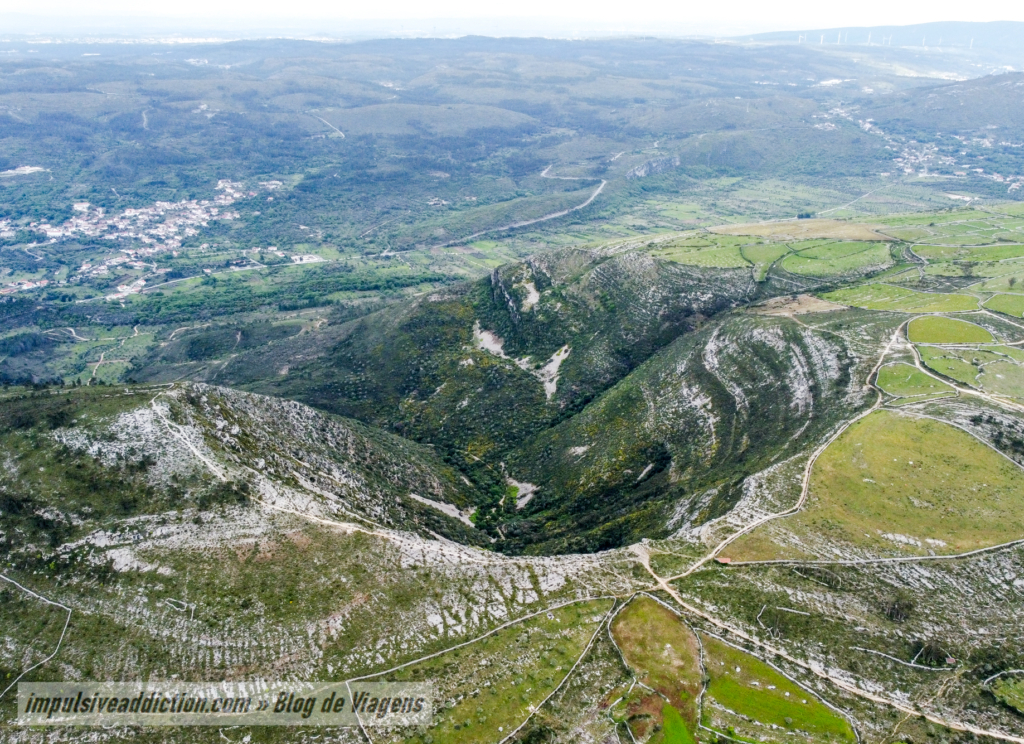
2. Visit Nazaré
In the case of Nazaré, I mention it here because it is completely surrounded by the municipality of Alcobaça. You have to consider that between São Martinho do Porto and Praia da Légua, already mentioned in this article, there is an interesting stretch of coastline belonging to Nazaré, which has lots of beaches and tourist attractions to discover.
I would obviously highlight the beach of Nazaré, Sítio da Nazaré, as well as the North beach where you can see the biggest waves in the world at certain times of the year. 😉
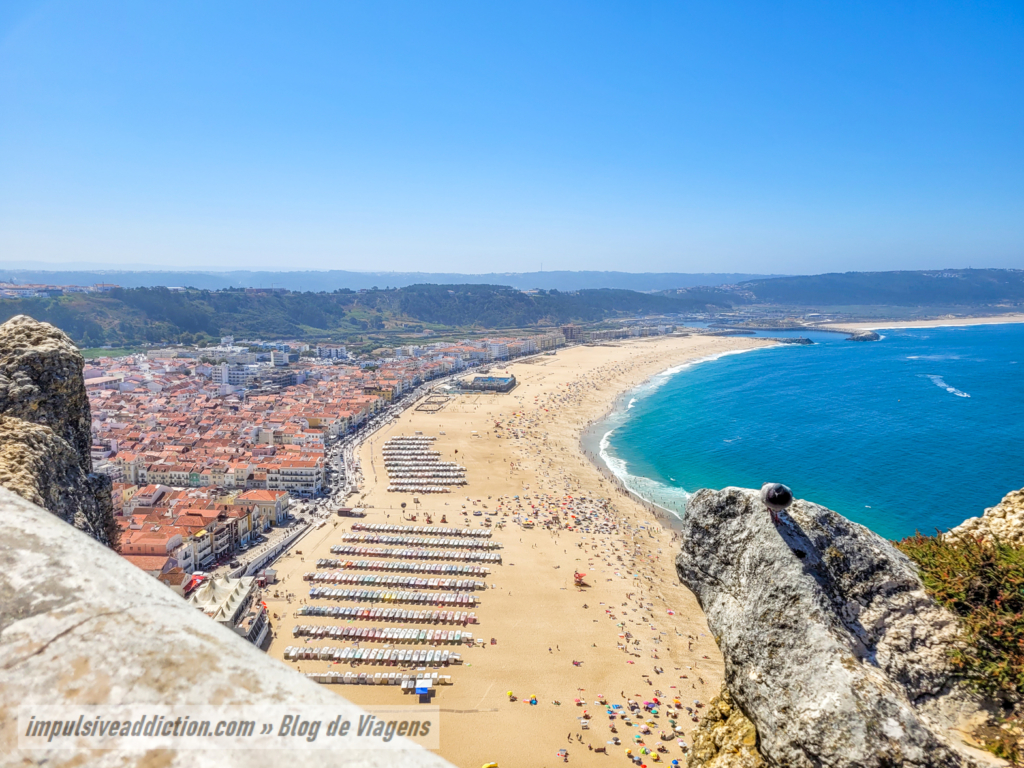
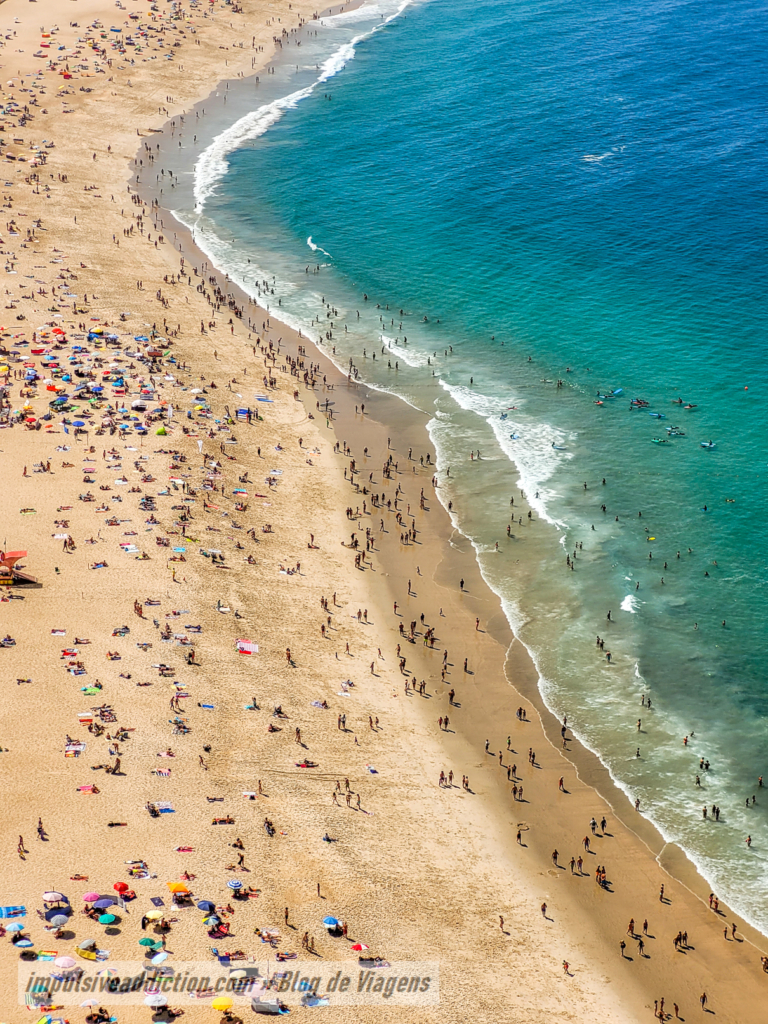
3. Interpretation Center of the Battle of Aljubarrota
The Interpretation Center of the Battle of Aljubarrota is a complement to your visit to the town of Aljubarrota itself. It’s not in Alcobaça, but in Porto de Mós.
You’ll have access to informative exhibitions about the battle and the events that led up to it, and you’ll be able to watch a very well-made 30-minute movie. You’ll also be able to walk around the battlefield itself and find out where the armies that fought were positioned.
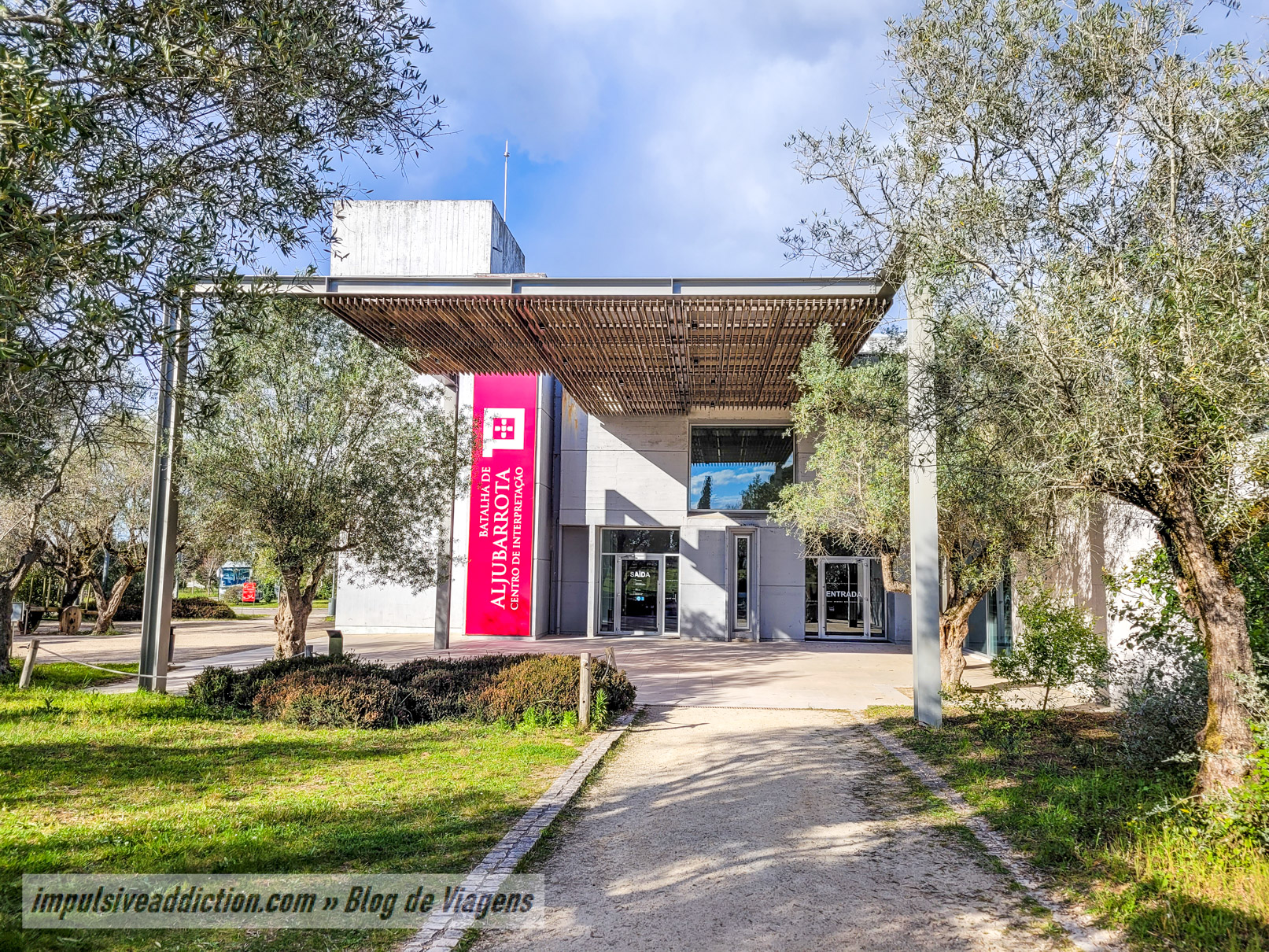
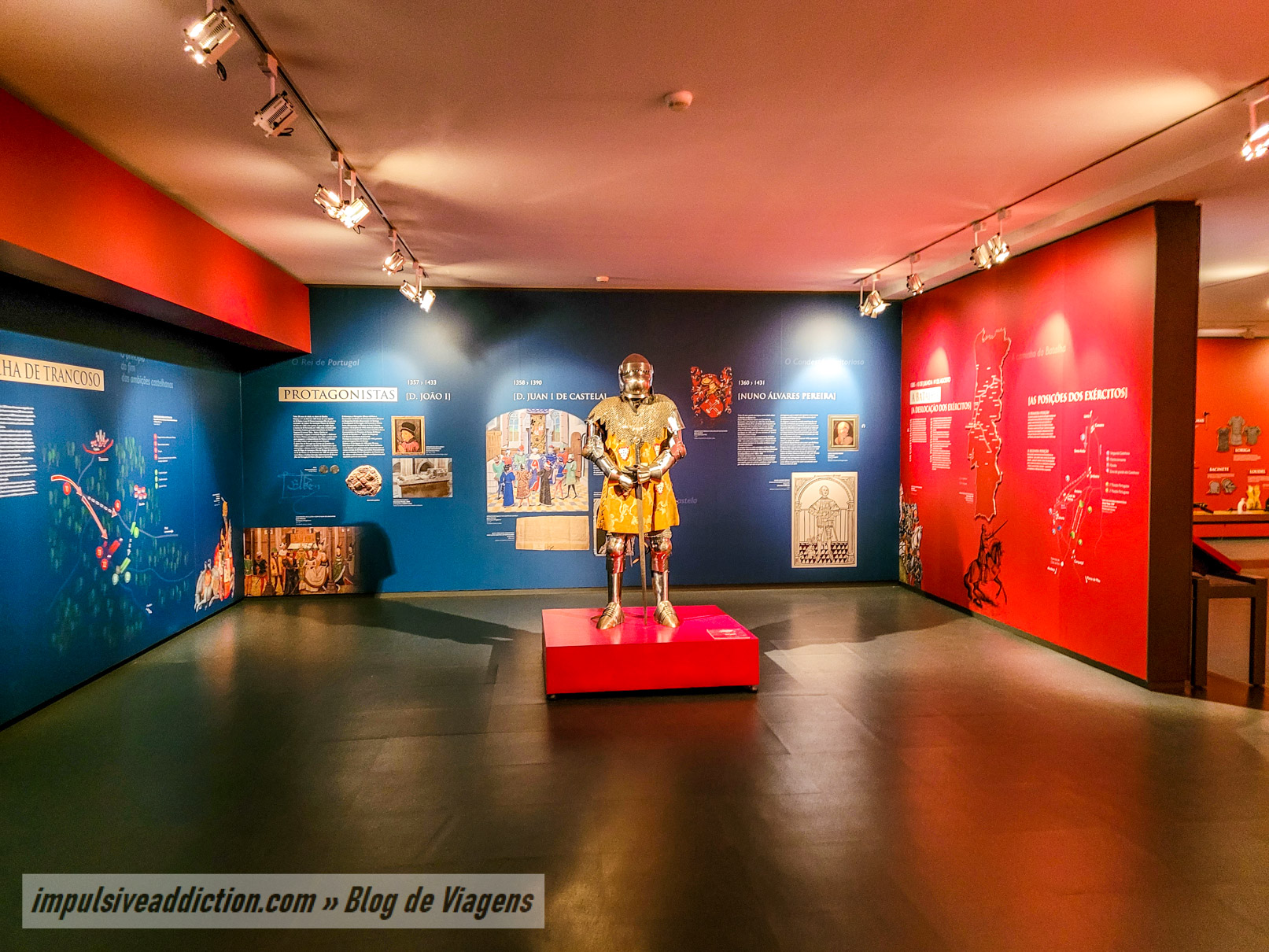
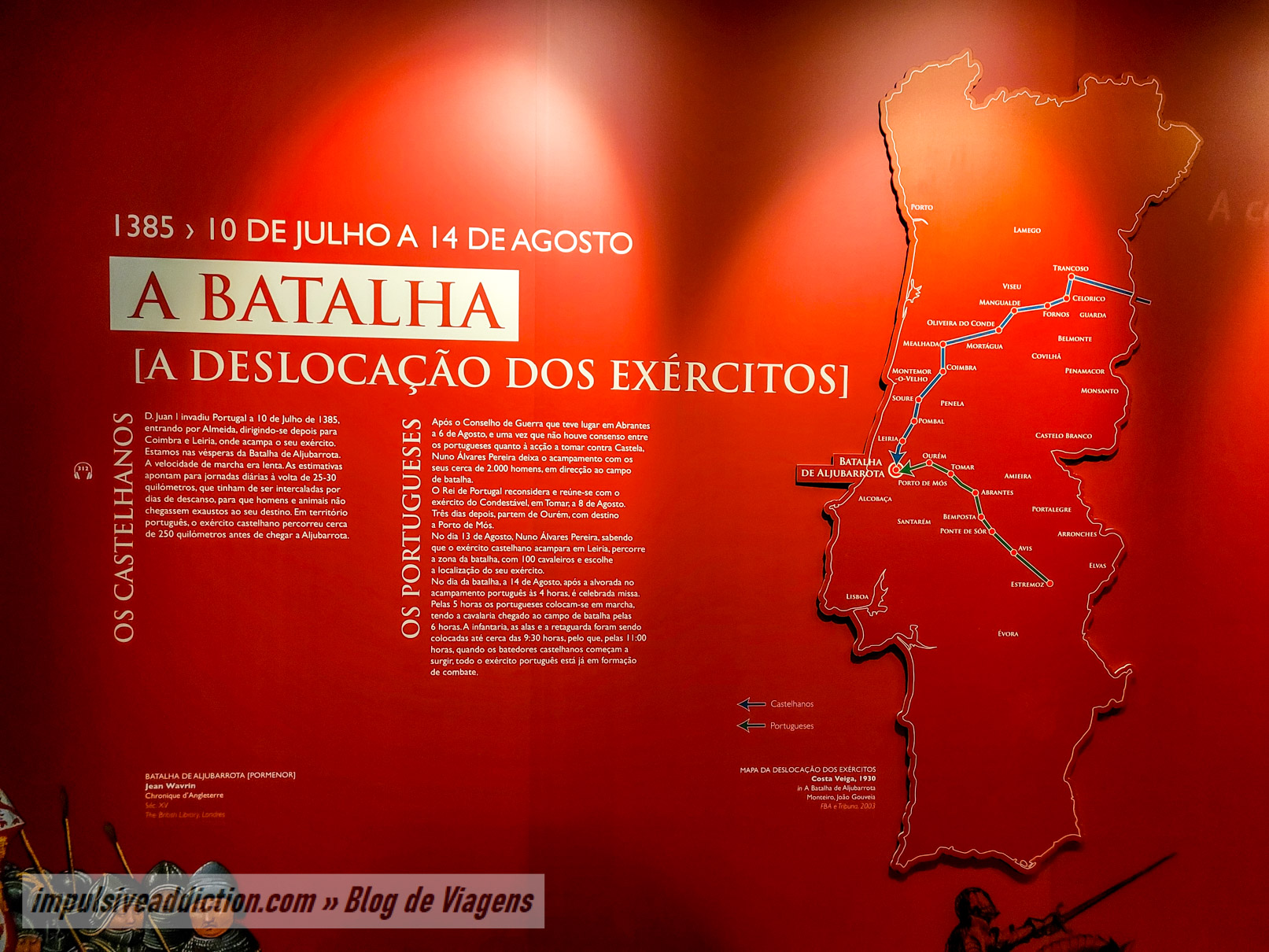
4. More from Leiria district
You can also visit Batalha, more precisely Batalha Monastery, if you haven’t already. How about driving along the coast to São Pedro de Moel? How about heading south to visit Óbidos and Foz do Arelho?
They’re just options for other good trips! 😉
Other Itineraries and Travel Guides in Portugal
- N2 Portugal Road Trip Itinerary
- Madeira Itinerary and Travel Guide
- São Miguel Itinerary and Travel Guide (Azores)
- Terceira Itinerary and Travel Guide (Azores)
- Pico Itinerary in Azores
- Faial Itinerary in Azores
- Minho | Northern Portugal Itinerary
- Porto Itinerary and Travel Guide
- Things to do In Braga (Minho)
- Things to do in Guimarães (Minho)
- Things to do in Viana do Castelo (Minho)
- Peneda Gerês National Park Itinerary
- Douro Valley Itinerary
- Trás-os-Montes Itinerary
- Things to do in Bragança
- Montesinho Natural Park Itinerary
- Douro International Natural Park Itinerary
- Things to do in Aveiro
- Things to do in Coimbra
- Things to do in Leiria
- Things to do in Fatima
- Things to do in Nazaré
- Things to do in Peniche
- Things to do in Évora (Alentejo)
- Things to do in Beja (Alentejo)
- Algarve Road Trip Itinerary
- Things to do in Lagos (Algarve)
- Things to do in Portimão (Algarve)
- Things to do in Faro (Algarve)
- Things to do in Tavira (Algarve)
I hope you enjoyed this article about Alcobaça Monastery and surroundings. Have a nice stay in my country! 😉 Tell me about your travels in the comment section bellow.
